The White Book
I didn't start with photography, I started from writing. But when I wrote I often wrote about photographs. And at the beginning of my career nobody was looking at my work and labeling me as a photographer, or at least I didn't think they did. I was as much a wannabe writer as a wannabe photographer. Though the writing is...more ornate than I now prefer, it handles the same subjects, references, and thoughts that engage me today, though I challenge you to read or understand all of these sentences. I must have been (still am) insufferable. For me the joy was in the daily work of it: the job of looking, writing, thinking, and traveling. Every image in the White Book was shot on either a Leica M6 or a Rolleiflex 2.8 Planar, always with TriX that I developed in a bathtub and scanned. The Rollei's a square 6x6 negative. / The order of this gallery is randomized for each page load.
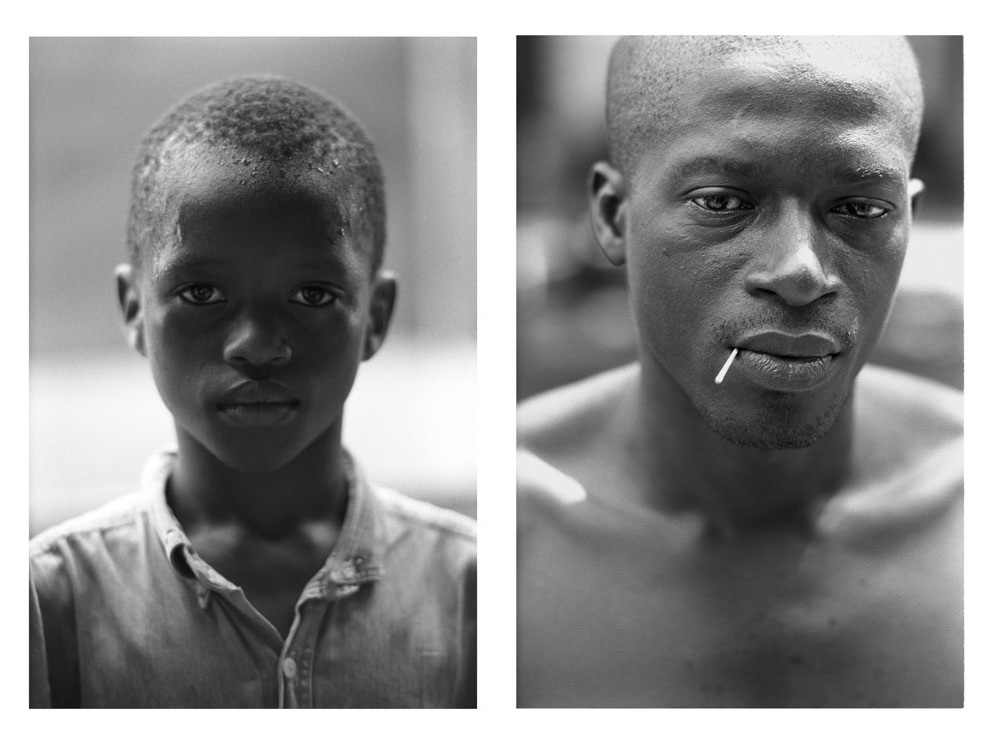
adjame, abidjan
And with time as wave (and now the wave building up after the splash-down that is the elsewhere-mentioned and ubiquitous financial collapse (or Massive Global Economic Crisis, elsewhere listed as MGEC)) the separation of friends. With age acquaintances either cement or fade away, and old friends diverge from the path and become uncontrollable variables against the constant of a night at a bar (or acquaintances are all you have).
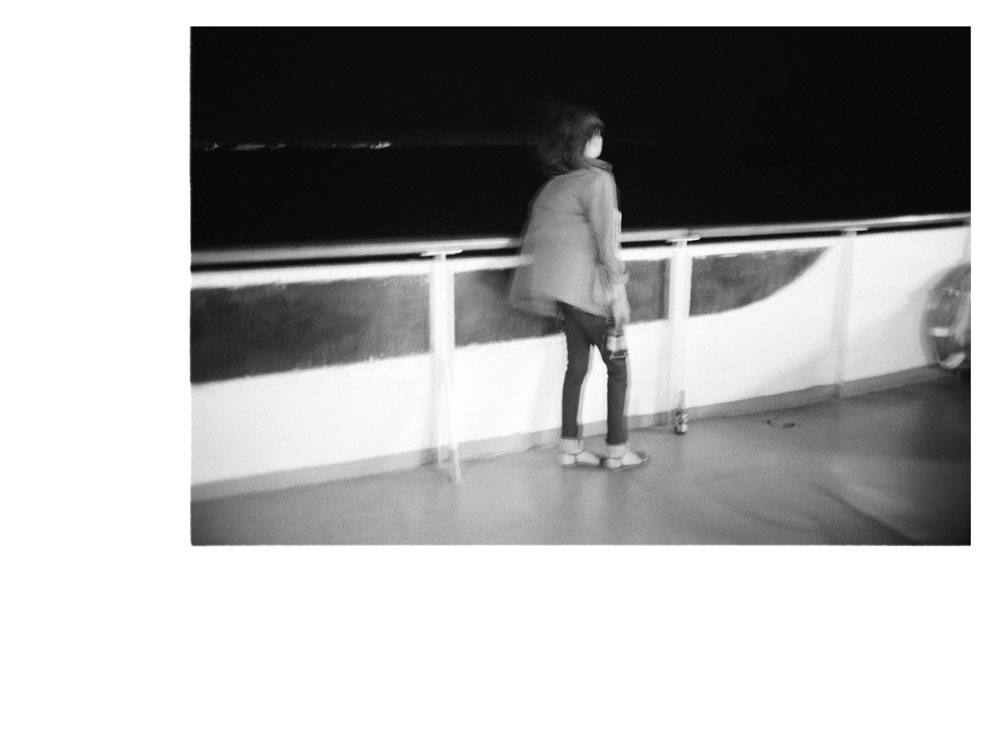
mediterranean sea
Nights spent on boats being one of those ways to expand time by filling it with memory, just as you can change a laundry bag from being something easily rolled up and placed in a drawer to something you can barely shoulder as you walk it to the cleaners (the allegorical cleaner of memory being the very act of writing (adjectives as detergent)).
Door closed in the cabin below-decks and the sigh of settling down, then the smell of a space without windows, though there is a window: a permanently-closed porthole looking out at dim-lighted surf.
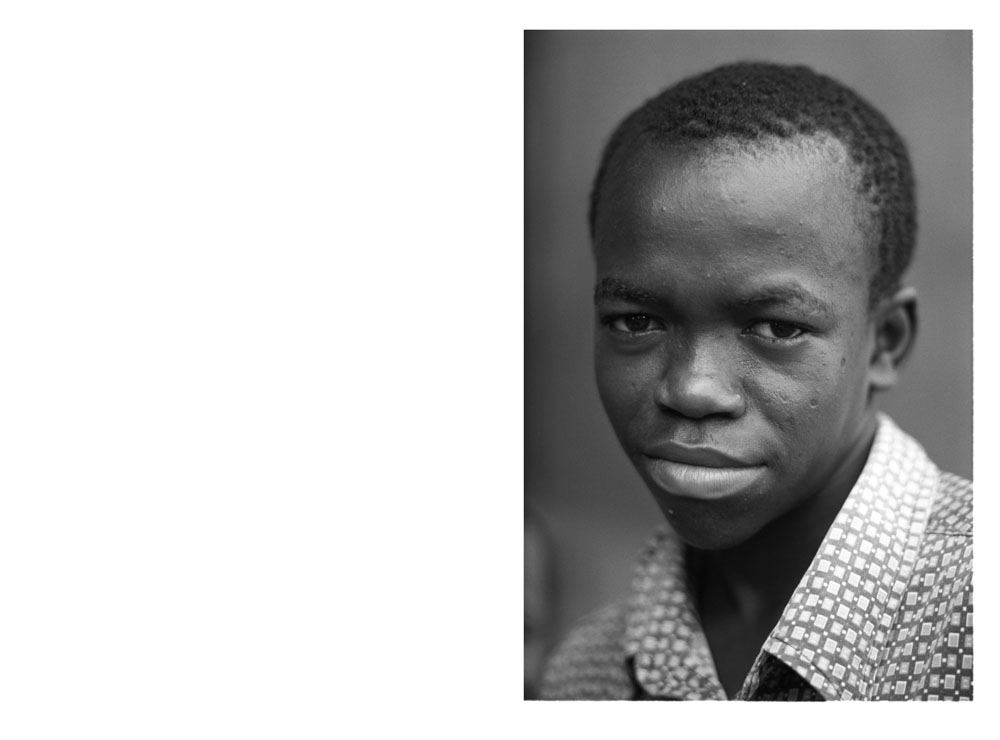
adjame, abidjan
Nachtwey, the most celebrated of modern war photographers (he of sober hand & clean gray parting), sort of explains himself in the documentary War Photographer. But through it all, there is a sense, supported in an interview with Amanpour, that he has been seriously damaged in some internal way by all the suffering he has seen (sarajevo, rwanda, ethiopia, sudan etc): and really, how could he see that madness? But the truth is that the madness has a logic of its own, a deviation from the ‘normal’. And for Nachtwey to return home to Tribeca to sift through negatives must be jarring, ny with its obsessions & popular ignorance proving that there is no dominant logic, merely a polarization, there is the illogic of the conflict zone and the illogic of the safer area’s ignorance, and those in between with direct experience of the dichotomy (who dip into the black water to pull something out) must see the falsity of both (or perhaps this is naive too (j.m. intoning with sarcasm ‘the west is the best’)).
I told him at a party that his book was too heavy; heavy in weight not subject matter (though meaning both).
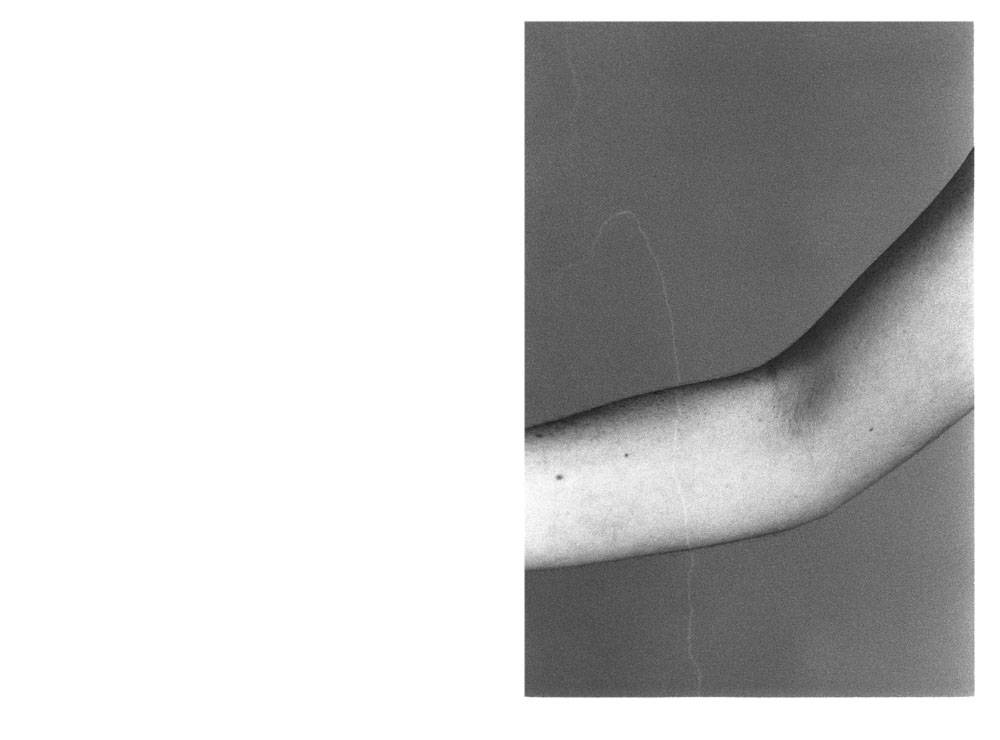
new york, ny
What was the name of that game played as a child, between two people? One person with eyes closed extends their arm, palm up. The other person (the controller of the game, while the one with arm proffered is submissive) holds the wrist about waist-level and slowly, very softly, drags fingernails from the pool of the open palm to the bare crook of elbow, while the one with eyes closed tries to guess at what point exactly the inside of the elbow is reached. Often times the tingling in the arm as the fingernails softly scrape is too much, and most (if not all) players think the elbow has been reached a few inches earlier than where it actually will be, the erroneous point being near the part of the arm under which the median cubital crosses the ulnar.
The point of this game being the disconnect between what you see as true and what you feel as true, the difference between these being a few inches of soft skin. You have your eyes closed and you go by your instincts, and more often than not, your instincts are wrong. Of course there are some who suffer the tingling and ‘this-is-it-ness’ for a measured number of movements and thus correctly stop the fingernail-dragging right on the inside-elbow, but, tellingly, this is no indication of real-world aptitude. In this game there are no winners and losers, just the satisfied curiosity of two players watching the proof of a mental/physical disconnect.
Funny how this is exclusively a child’s game, and even funnier still that when you get older you realize there are no grown ups anyway. You add ages, and add years, and stride into the room of the 30 year-olds carrying the new authority of seniority, but there’s no authority there. Let us repeat: when you get older you realize there are no grown-ups.
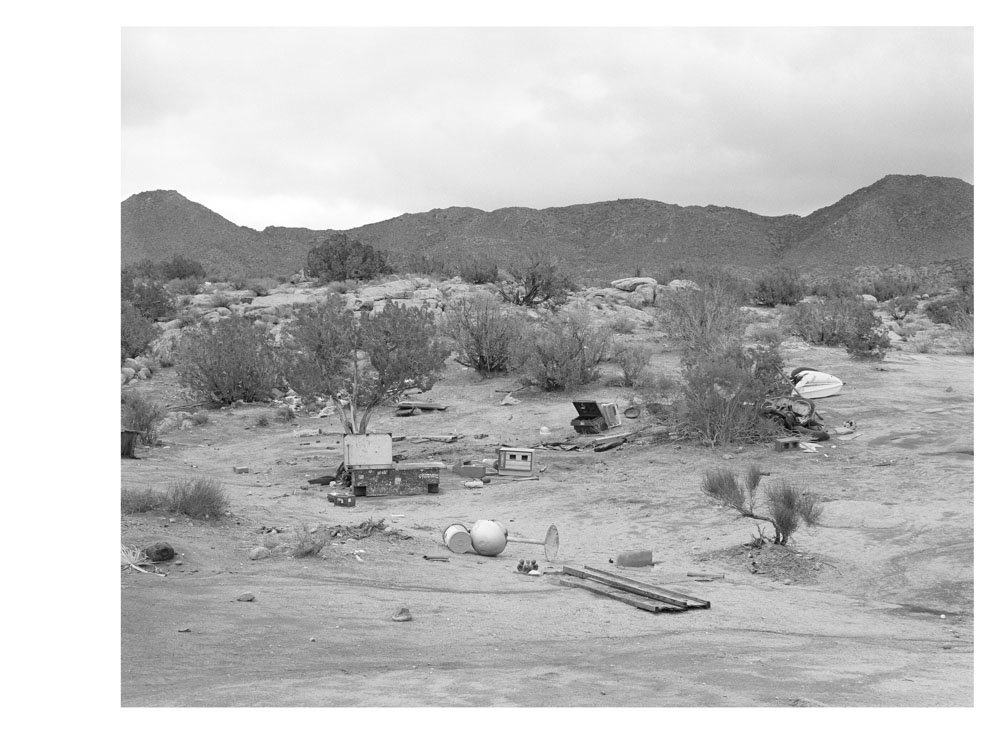
US-Mexican border, east of San Diego, CA
Explaining the big gap in the fence: in most places the landscape itself acts as a deterrent for anyone wishing to cross over into the US (the landscape here quite empty and frozen/blanched for miles and miles on the mexico side). So the border is primarily vehicular. Where vehicles cannot pass for reasons of pure mountain-steepness, there is no border.
The smugglers (drug-smugglers) however, get around the issue of this vehicular barrier, or, rather, they have found ways to get over it. Arriving in a convoy of three pickup trucks, they use a ramp attached to the back of one truck, and drive the other two up and over the cab, and over the fence, dropping slowly onto american roadway (and then they get caught, in many cases, with three million dollars worth of pot filling up the backseat >>> or if they think they’re going to get nabbed because the B. Patrol’s coming (headlights over the hilltop) and one truck’s still stranded en mexico, they just torch it... the profit margins so high they can burn one-third of their haul (or perhaps because profit’s not so necessary when there’s the threat of jail (unless, of course, you have someone bailing you out))).
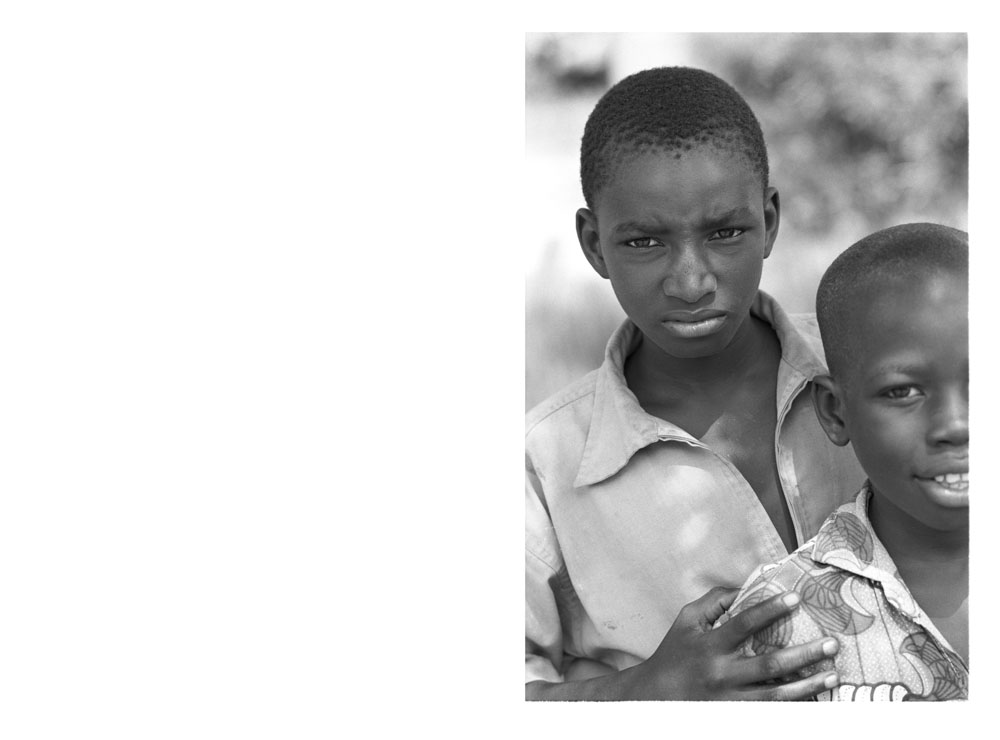
bouake, cote d’ivoire
A group of thirty that emerged from behind a crumbling wall and assembled side-by-side facing the street as if for a school photograph, dressed in shirts more white & wrinkle-free than if they had been washed for eighty-five cents a pound at the cleaners on berry & s 4th. Returning an hour later, as promised, to hand out the gifts purchased weeks before in chinatown: the markers, the crayons, the buttons & the bouncing balls embedded with tweety-pie & sylvester.
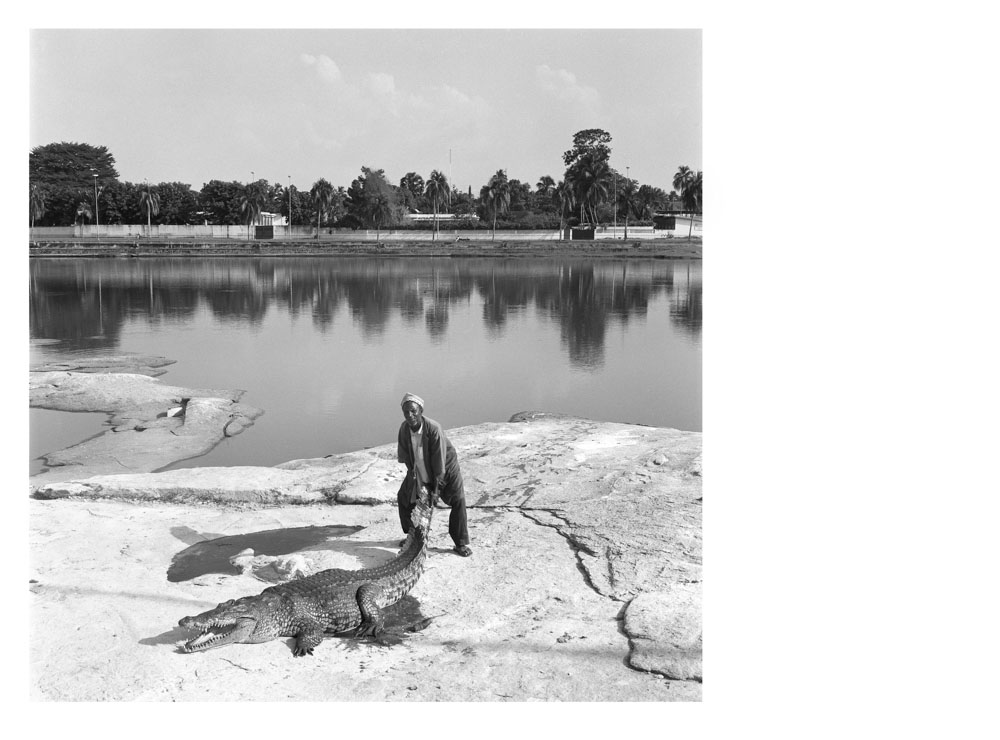
yamoussoukro, cote d’ivoire
In 1983 the government of cd’i relocated to the birth-town of then president F. H-Boigny, the town of Yamoussoukro in the center of the country, and he maintained his ancestral village within the high walls of the presidential compound. A moat rings the complex, and gives partial employment to its neighbors (this family, two brothers and a somewhat-diffident son, feed chickens to the crocodiles living within the moat - they call the largest le monsieur de cabinet).
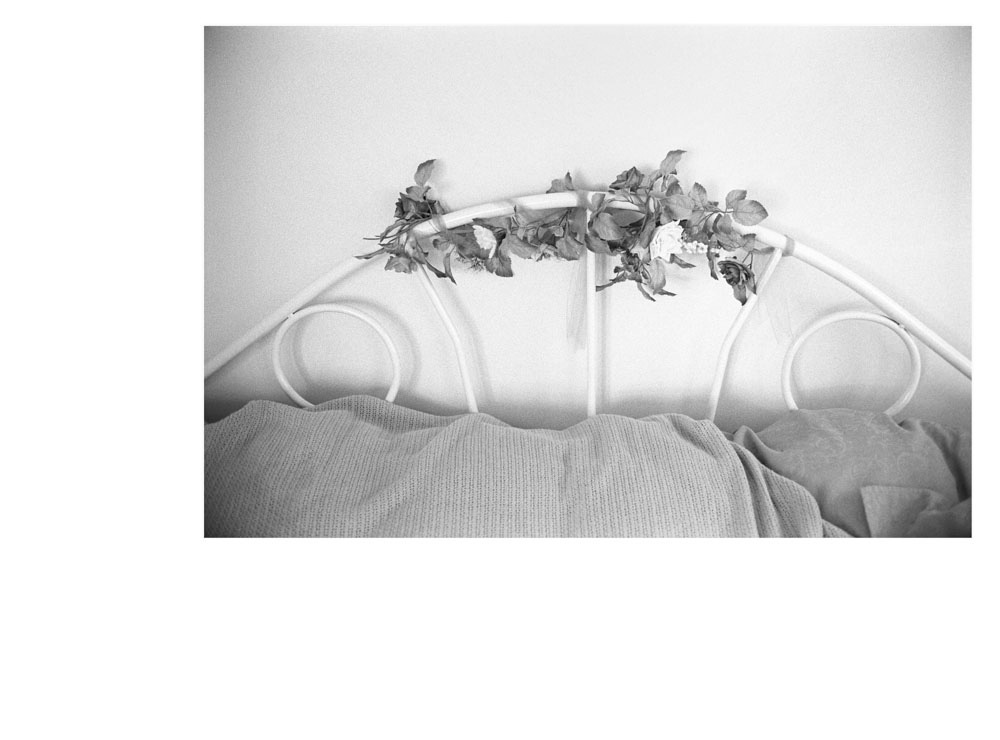
east marion, long island
E Hopper light is the light of the Hudson and of certain parts of Long Island. He caught it at the tops of houses in the late evening, or in the early morning along quiet streets in small towns, or coming through thin screens covering bedroom windows, filling the room with yellow. The light of Long Island is soft and diffuse, the moisture of a narrowing peninsula surrounded by steel-gray north-eastern sky.
On the North Fork, the light came off the water of Orient Harbor, into the second-floor bedroom through windows on two sides, incrementally feeding from the bathroom by way of a reflecting mirror. The light opened up and evaporated shadows, falling evenly throughout the rooms from morning to night. In the bathroom after lunch a flickering silver bending across the bathtub. It hit the mirror, bounced over the wainscoting, and narrowed to a dulling blade, then dimmed to a faded pink rose, and deeper, solemn evening blue before joining moonlight.
At night no sound was heard because it was impossible to stay awake.
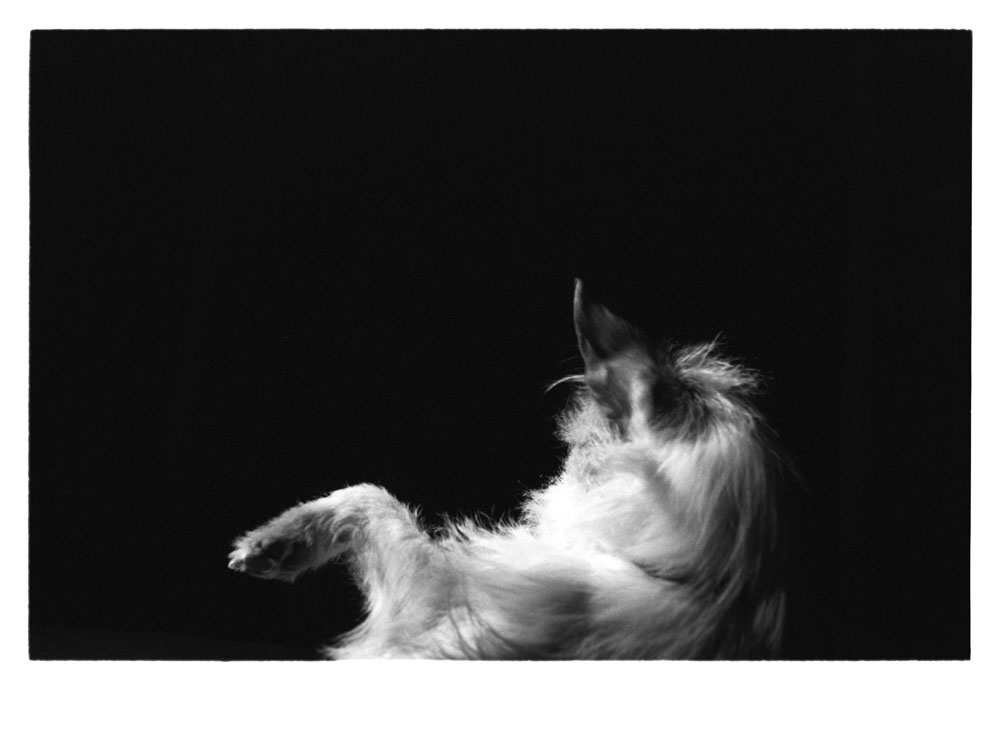
milan, italy
This dog slept every night with muzzle wedged between the knees of the sleepers. Finding people with legs crossed at a dining table, would jump into their lap and push his snout in to the join. We sat on the terrace with isola galinara behind us and for a few hours or days were familial, then in the morning with flat water, paddling out to the buoy with her on her belly, laughing, my face was stone. Well, that was the start of the change we did not want, but which we sure got.
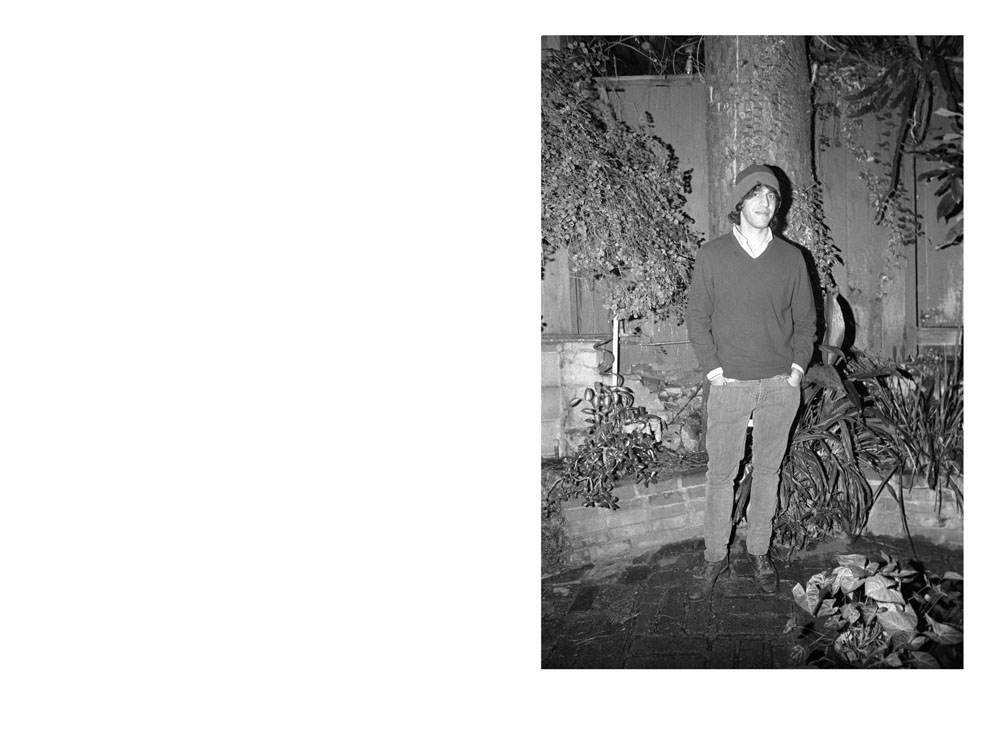
silver lake
And then quite without thinking the gear shifts and it becomes a passive day. The lock closes its gates, the water is pumped out. What before was laziness and a tendency toward personal disobedience, is now a constant twingeing, a need for s. Pinker, a want of engagement (the face opens out and eyes slide wider).
>>> Or a walk over a bridge and the psychic shift that always and without fail occurs upon reaching the highest point of the bridge, when the destined side becomes closest. This was Key Bridge. Always a sudden shift right in the middle: a waking up, or, realistically, a shaking of one’s self awake.
Backyards, as elsewhere-mentioned, always a reminder of teenage readings of J.K. in the bedroom by the heavy breathing soil, and thus, by extension, a reminder of one or more nights in the small park at the end of Sth Terrace, with the tall trees in the corner , where a leaned back and pulled up her knees, and where I found inside a rubberized bar she had buried in something far softer. You could feel the end of it with your fingers, but nothing made any sense at all (at the time).

verbier, switzerland
Digital distribution changes music even more, and many friends have not bought a cd in years, and most, if not all, have found ways to side-step paying anything at all for music. Xtorrent is a brilliant application, and search&download speeds in independent tests are roughly equivalent to iTunes. In some cases what you’re looking for isn’t even available on the more-mainstream digital music stores and thievery is the only choice (we see comparisons with the flourishing Black Market in communist countries(?)). The guilt of ‘stealing’ music assuaged in some degree by the widely-held conviction that artists make a maximum of 20% of the price of a record from royalties, even on iT where there aren’t even any actual plastic cds for the record company to manufacture. The real money for musicians comes from concerts. Furthermore, digital distribution & myspace & websites & email increases the proliferation rate of music rapidly, so there now seems to be more music, more bands, more cds, more movements and crazes everyday. Postmodern ubiquity of culture finds its symbol in the iPod, where Kanye segues to Mendelssohn and then to Horse Feathers, then to a song recorded in 1997 by FG & I in celebration of Emily Wise’s birthday (token lyric ‘i know a girl with a real nice a**, she gives espresso at hothouse’, the HotHouse being a cafe outside of Kew Gardens Train Station on the District Line... I stir hot chocolate with the blue arm of Oakley sunglasses, awkwardly, awkwardly).
This massive, shifting morass of music both doom and boon for bands, as with one great track circulated server to server their career is launched, so quickly in fact that many acts have seen the craze & subsequent backlash start even before the release of their debut album, an inconceivable notion in the slow-music 90’s (alluding to the slow-food & locavore movements of our crashing times). Also, the shuffling function of computer music libraries (built to deal with high-volumes of music, to deal with the postmodern character of culture as firehose) destroys the idea of album-as-linear-experience. The best song is the only song we buy, forget the rest. So our libraries become collections of hits, as interesting after prolonged exposure as a party with only superstars (superegos & vocalized solipsism). And, since we as culture-consumers evolve more slowly than the technology that feeds us, we do not know how to deal with all this euphoria or incredible depression, or incredible sophistication, or perfect jazz, and we get tired of the hits because of the lack of padding (the mind needs a rest between brilliance, observe: oscar-winning movies put hugging between car-crashes), and thus we are always needing new music, needing new perfect songs. And our attention span becomes very, very short.
How does this impact us emotionally? What damage does this exhilaration-fatigue do? (Do you gorge yourself?)
The gradual erasure of format limitations (1 hour for a typical vinyl & cd album) may change our ideas of an appropriate/conventional song-length, why 3min30sec for a pop-song, without radio, without a record company, what dictates are there? Why verse-chorus-verse-chorus-bridge-chorus?
Here I stopped on our walk back from lunch and floundered into the weeds by the road, trying to find a suitable exposure somewhere between f16 of sunlight-on-wild-ferns and f4 of mulchy darkness beneath pines.
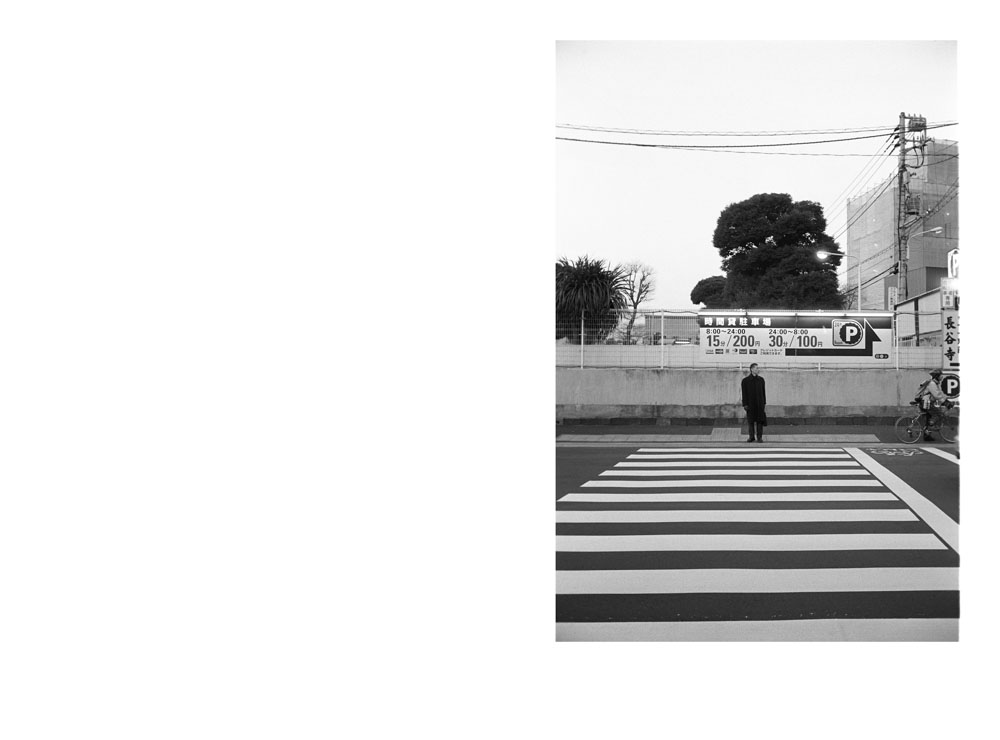
roppongi, tokyo
The recurring motif in modernist poetry of a longing for solitude & peace in nature: ref. Yeats’ Innisfree, Larkin’s Vers de Societe. Always felt while in the heat of society or stood ‘on the roadway, or on the pavements gray’. This is a common enough thought for city dwellers, who believe, constantly, that the city is proof of pandemic madness: there’s something in the water, why else suffer the misery of standing at an intersection while cars belch past, horns blaring, gripping your briefcase, wondering what to do with the rest of the evening.
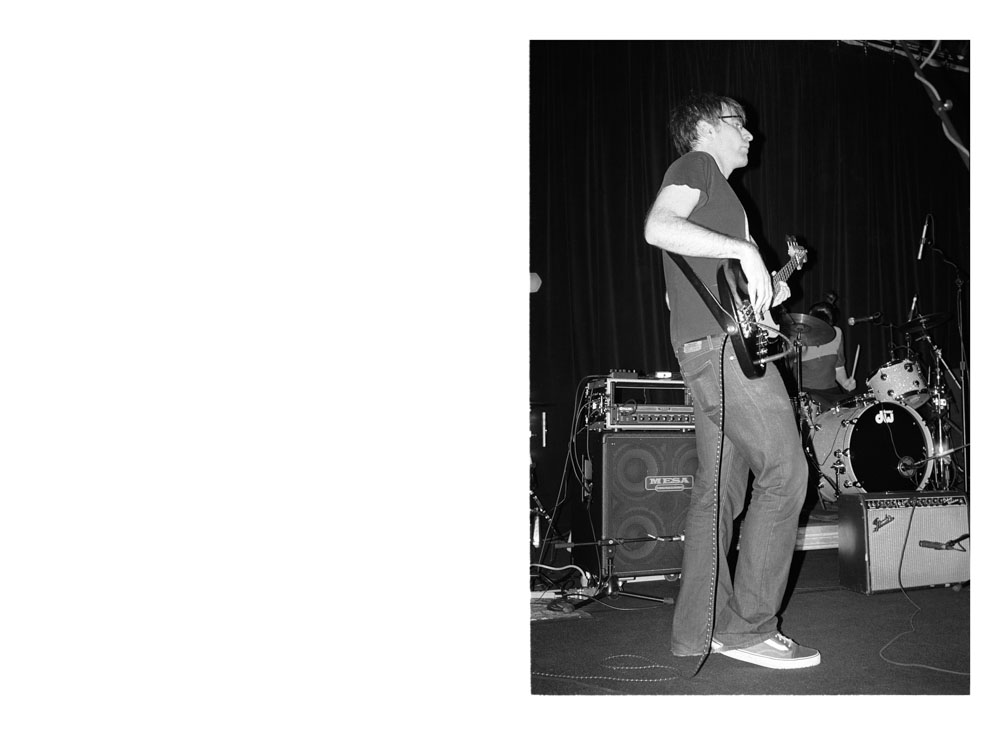
brooklyn, ny
It is quote endquote modern to say that there are no hierarchies, that no one thing is less or more than this other thing, that money as arbiter of taste judges mozart on level with the NBC tri-note; that Disney Main Street as true as Sinclair Lewis Main Street. But among the artistic mediums a hierarchy exists. Photography is on par with reality. But as perceived-reality is boosted through the process & artifice photography overlaps with painting, losing authority. Soon it transcends the ‘graphy, and becomes fiction/artifice, and is in a different & lesser medium all together. Music is similar, in that it takes the natural world (the vibrations that exist in all things, from birdsong, wind blow & the sound of a dropped box) and reorganizes the frequencies to create a perceptual order. Major C as the hum of the world at its best: divine and true and smooth. The movement from minor to major, - satisfying because it is disorder (discord) relieved: out of disorder, order.
But in the hierarchy of mediums among Human experience, nothing surpasses writing. Nothing surpasses the written word.
Photography & painting & music & the visual arts are all PASSIVE arts: the human mind processes the products of these mediums at the primary level. What is seen through photography is experienced in the human mind: the photo shows a car. The mind sees the car, just as it is on the printed paper, or behind the frame, or on the screen. In music the vibrations produced by the speaker (whether floor-sized or earbud), are replicated in perfection by the ear. The vibrations are counterfeits, and the brain registers the variations as music: as tone and rhythm and (most importantly) texture. The brain turns the vibrations into voice & instrumentation. There is an involved process, sure, but the process is based on recognition (e.g. of the syllable A as the singular article ‘a’).
Writing is the sole ACTIVE art, or the sole ACTIVE medium. The brain is required to translate (the operative word here is translate) the images of marks on a page (the written word as a uniquely human product, distinct from music, which can be found in nature) into recognizable symbols, letters, words, and then to whatever those words & aggregate phrases signify. This translation activity removes the specific from the source material (the experience, real or imaginary, as written-down), and in ACTIVE processing achieves a new status unique to the individual.
If I write ‘the red bus’, three different readers will see, in their mind’s eye, three different buses in three different hues of red, in three different environments. The efficiency of the initial words (red bus), and the plurality of worlds & experiences to which those few words apply (the infinite individual reading), prove the dominance of reading as a medium, over all others. Despite popular assumptions that reading is in decline, and that the changes we got are killing reading as a viable art, it has no comparison, and no art can claim its place. If reading were to pass, if the written word were to fail, we would loss the infinity of ambiguity, and settle, instead, for the paucity of the other & less specific arts. Of course, all disputable.
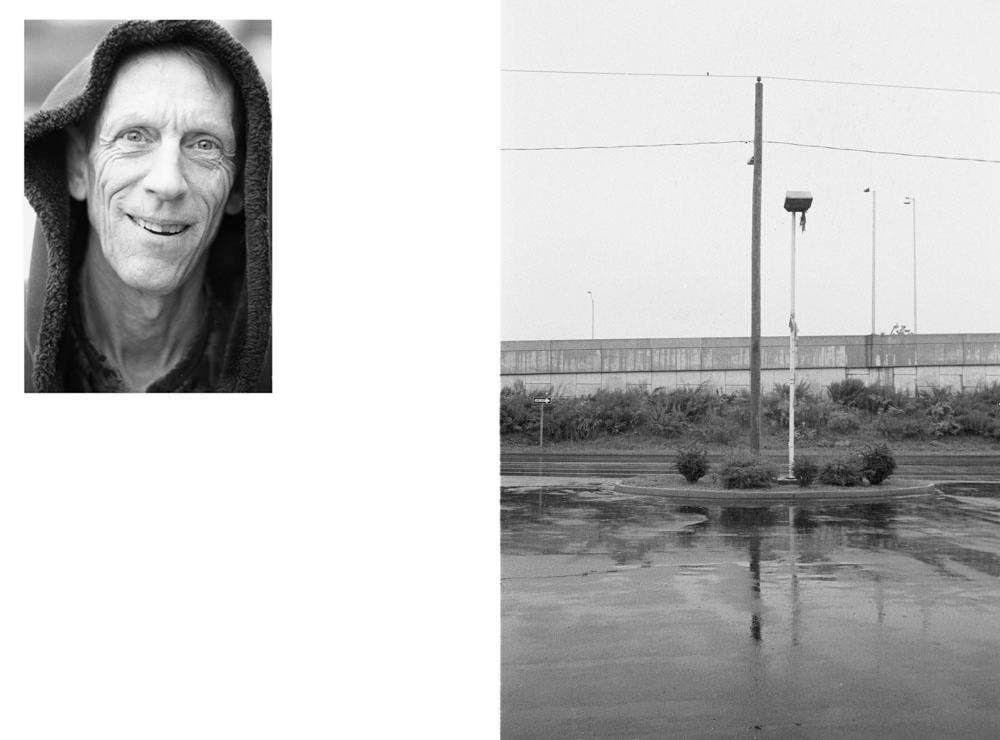
las vegas, nv
A man who loved vegas and who was born in vegas, he attracted attention for the hood pulled up and his carrying a broom and a dustpan like the victorian conception of death. He passed by on a travelator between Bellagio & Venetian staring at nothing in particular, and when interrupted he opened up with the eagerness of an unpollinated flower (though of course this does not make sense, flowers not caring if they are pollinated or not (busy fashionable things that they are). Maybe he was starved for conversation, but he spoke so freely and with joy, and he launched right into conversation as if we were good friends continuing a discussion from years before.
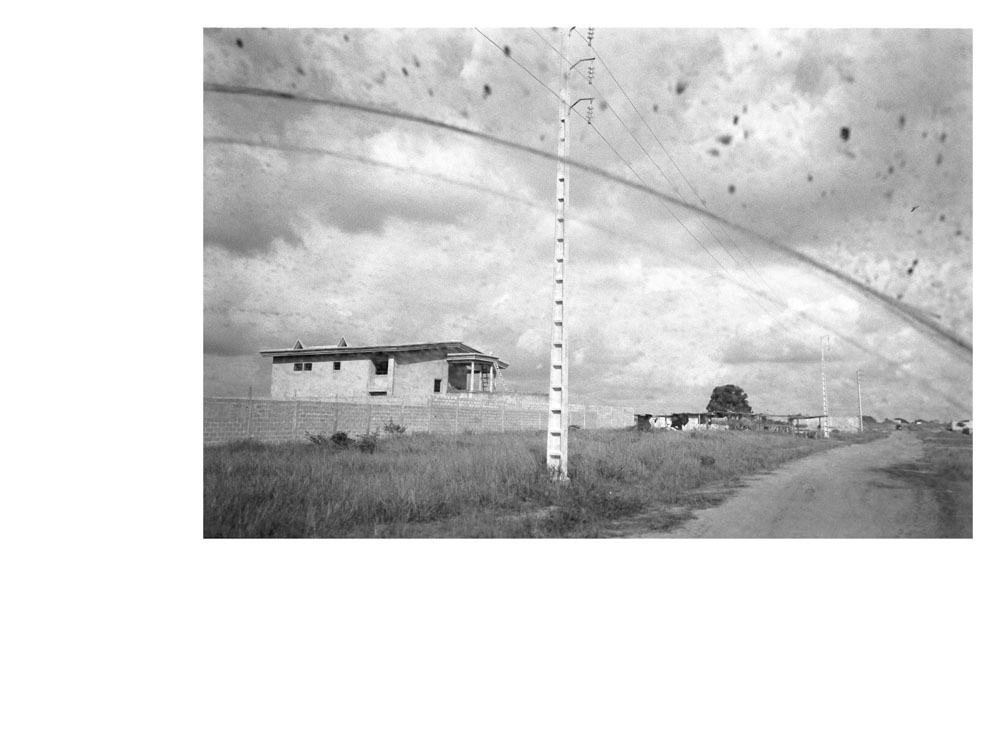
abidjan, cote d’ivoire
The advance that is fold.it, a project to determine the shape and possible pattern of proteins. The twenty amino acids that combine to form each of the thousands of proteins are folded in a very specific way, unique to each protein function. Computers are successful enough at analyzing and suggesting the best (or possible) way to fold the amino acids, but researchers think & hope that humans, with their unique puzzle-solving ability, can better identify the unique and possible variations of the foldings: so they produced a game, and made it available online for free. By creating and signing on as a user your successful ‘foldings’ are uploaded to the Baker Lab at the University of Washington, and placed in the database of possible foldings for each protein in the game/world.
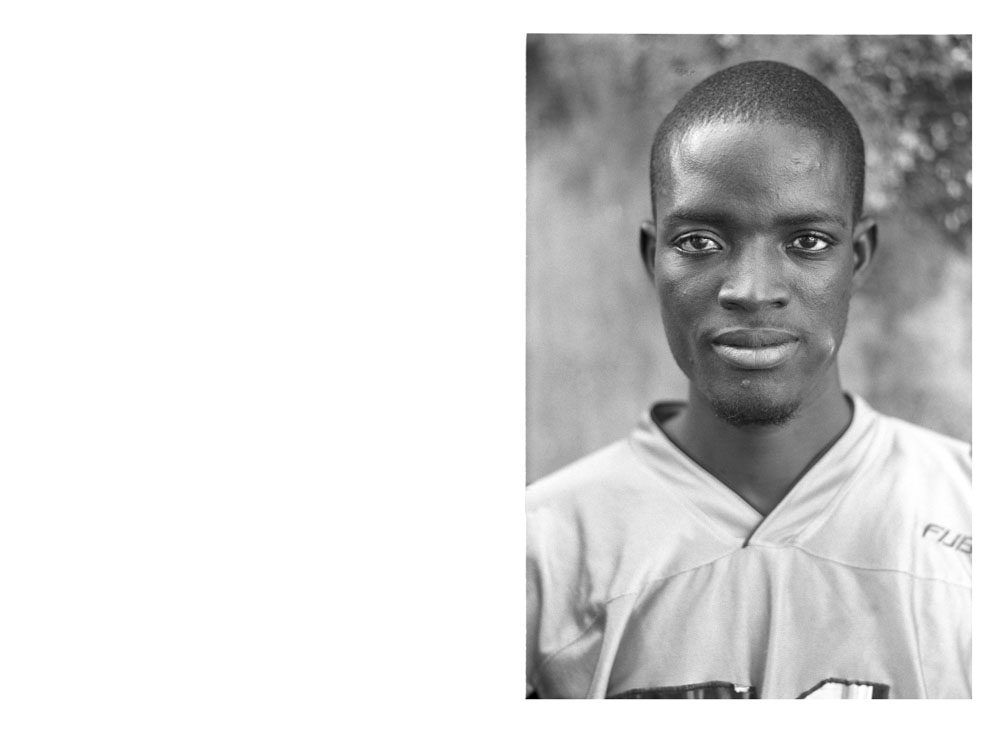
abidjan, cote d’ivoire
A growth on his cheek from something we couldn’t think of, and a gesture he made every night as we came through the gates after dinner, that common gesture seen everywhere: one hand fingertips flat to thumb, hand moved to mouth, mouth closing. He asked for food, we gave him what the restaurants scraped from our plates, tied up in white plastic bags.
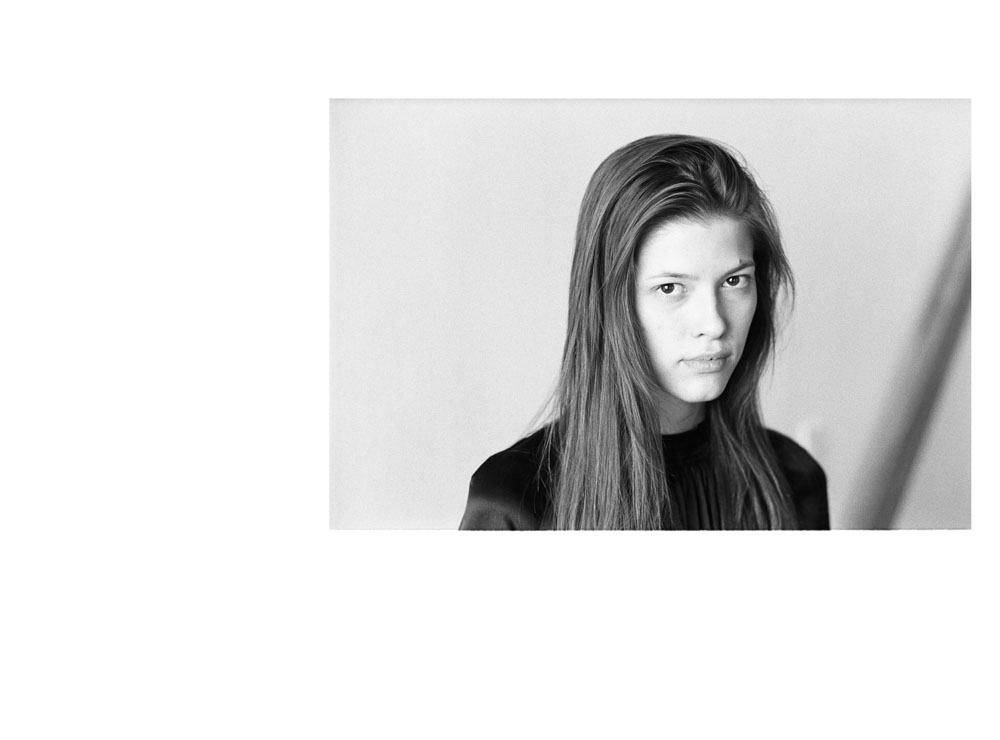
new york
T Ruff, even in trying to strip away beautifying artifice from his portraits (in a style very similar to the ‘passport photo’, albeit in a larger scale and with the heavy hammer of art held above), is making a conscious, deliberate aesthetic choice. And in any choice there is the mark of the character.
If Avedon was correct, and if the subjectivity of the photographer is too strong to permit straight readings of the photograph (as if it were a list of ingredients on the side of a box of cinnamon toast crunch), then what do you look for in a portrait to see the photographer?
There are the usual things, firstly, the subject themselves. Especially in so-called ‘art portraiture’, the subject is immediately telling. Because the subject has not been assigned by a third-party (a magazine, an organization, a patron), it is up to the photographer to decide who to shoot. Then you can look at the format, then the framing etc. But more importantly, if you want to find the photographer in the portrait, you have to analyze the look in the eye.
Starting out, portraiture is uncomfortable. You struggle with the camera for a number of years, and that is all you think about. Some photographers never lose this awkwardness: they are always checking aperture and staring down the viewfinder, making minute adjustments of focus. They will look at the face and see the lighting not the person.
Then one day the photographers forget about their cameras. They forget about the lens and the fact that you have to sometimes point it at the subject, and then all becomes relaxed and elastic.
A photographer’s character will be immediately evident in their subjects reaction to the camera. The interaction between these two people is modulated and distanced and fed through the mechanism of the lens, so whatever awkwardness is magnified. If there is joy and relaxation , however, they are also amplified, and the greatest happiness in a portrait photographer’s life may come from a little glint of calm, or curving half-smile discovered in a fraction-of-a-second portrait made of a person he met for no more than two minutes. Two minutes is not enough time to understand another person, but it is enough time to check the run of the other’s grain, so to see how you would & could fit together.
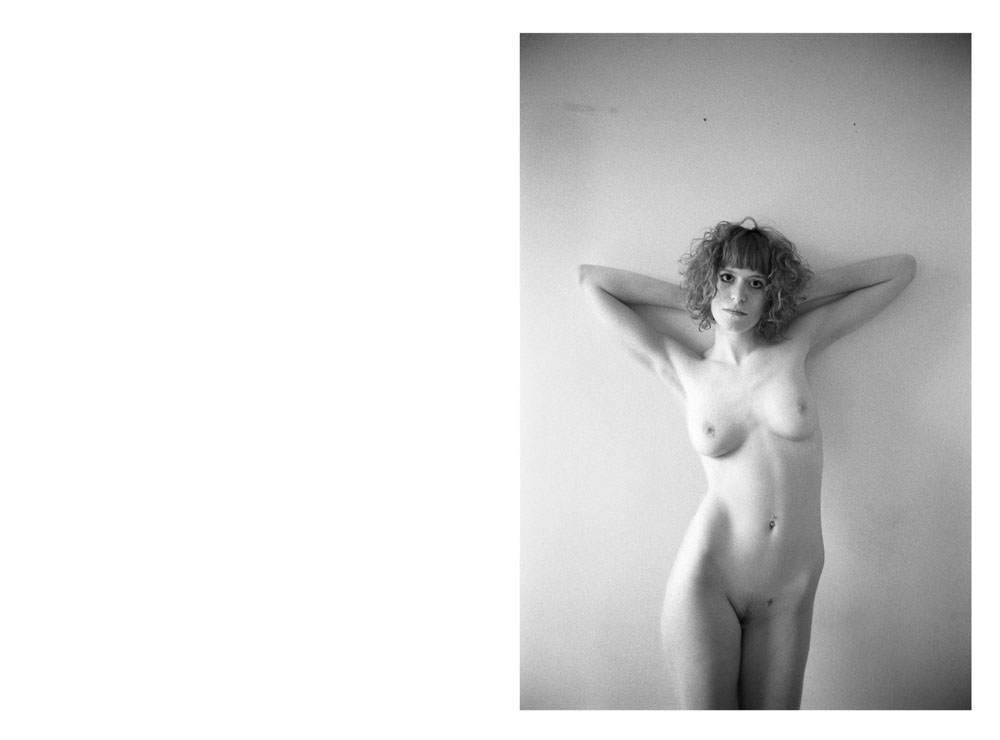
new york
There is or was a story going around, that whenever small magazines or agencies look at a portfolio by a budding young fashion photographer and see nudity, be it female or male, they toss the book away, nudity, to them, being childish and unnecessary: a ‘cheap’ photograph. True & there are the ‘early’ subjects that all photographers go for, the easy relevances: abandoned store fronts, nature scenes, sunsets, photographs of horses. Nudity is the ‘amateur’ photographer’s favored subject, and often the approach is the same: the nude is cherished, beautiful with or without sensuality.
Nudity as nudity, as shock symbol, is another approach, often combined with a soft blurring of the image due to the photographer’s quivering hands. Also, there is nudity as freedom, as a stripping away of worldly accouterments, and in these pictures beauty is irrelevant. The point is the nudity, nudity as a stripping away. Breasts, genitalia, bare skin, none of that really matters, only that lack of cover: the openness, plus vulnerability, without sympathy. Nudity as experienced by a newborn child, not understanding the shield against shame of clothing. J H Engstrom produces images like this, slumped nudes with mouths parted in-between words or mumbles, cropped from the thigh up, unattractive nudes, tired people in front rooms and kitchenettes, or in a re-occurring yellow chairs. This is subjective portraiture without calibrated cameras or film, by a photographer who assisted Testino for two years and produces work so consciously avoiding beauty that they come out looking beautiful. Nudity as freedom gained its apogee in R McGinley, who defined millennial avoidance of responsibility with large prints of white scenesters nude and climbing trees, or under waterfalls, or in the back of flat-bed trucks, or rolling down pink sands in white sands new mexico. We thank R. McGinley for every T4-carrying youthster in barbour jacket, shirt buttoned to the top. We see a new marketplace saturated with images from the digital revolution. Because everyone is taking pictures, the art world has to react, has to understand & measure & commodify the new tide before waves crash, and snapshot photography as a marketable, salable aesthetic emerges: the yashica snapsters are not sons of Andy Warhol but sons of W Eggleston. Wander a little and take a picture, content irrelevant, the message is the medium (or hedonism a movement), photography as an action is enough (cameras record mechanically, producing the beautiful by rout).
Talent is being there, talent is having the gall to produce work without content and still stand up. To quote k.west, ‘with my ego I could stand there in a Speedo and still look like a ---------- hero’. Pollock suffered the criticism of creating work that the proverbial four year-old could also make, yet he made it and signed his name, and gave it to the world as a gift, as a unique product.
Earnestness as underdevelopment.
Ennui as progress.
Art as finite gravitational point for money to orbit.
Is it too much to pay one hundred and four million dollars for Picasso’s boy with a pipe? Maybe, but not if you look back and see that the last price paid for a similar work by the same artist was $55 million (La Femme aux Bras Croises). Prices double without a change in the product itself. How does this happen?
The truth is that money does the work (the increasing). Money does what it wants, it comes (or it goes, the change we got). Finite art (as in art not easily reproduced, i.e. art made without consideration for our age of mechanical reproduction), acts as something unchanging, as a focal point for an argument.
The argument is how much is money worth? In an age of speculation and perceived global increase, money is(was) seen as something that was going to be worth more. What now is (was) worth $55 million will become $104 million.
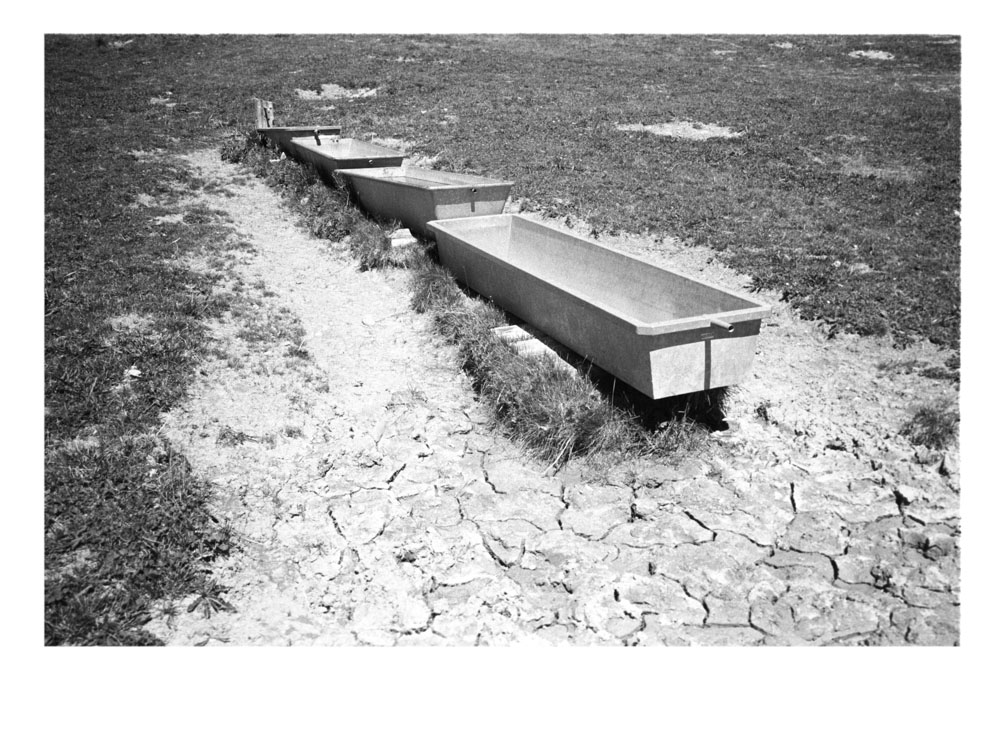
verbier, switzerland
Cross-medium idea pollination creates movies based on plays that were, in turn, based on a historical televised event, and the hubbub that surrounded it. The intended initial market of a song not a girlfriend or small crowd, but a commercial for potato chips.
In photography, paintings as source material, alongside film. And in the use of film references, there is also an appropriation of film techniques.
Most perfectly: shot-reverse-shot.
Or sequential movements toward a close-up: long-shot, medium, close, with costume changes just to show you’re not bound to the medium from which you steal.
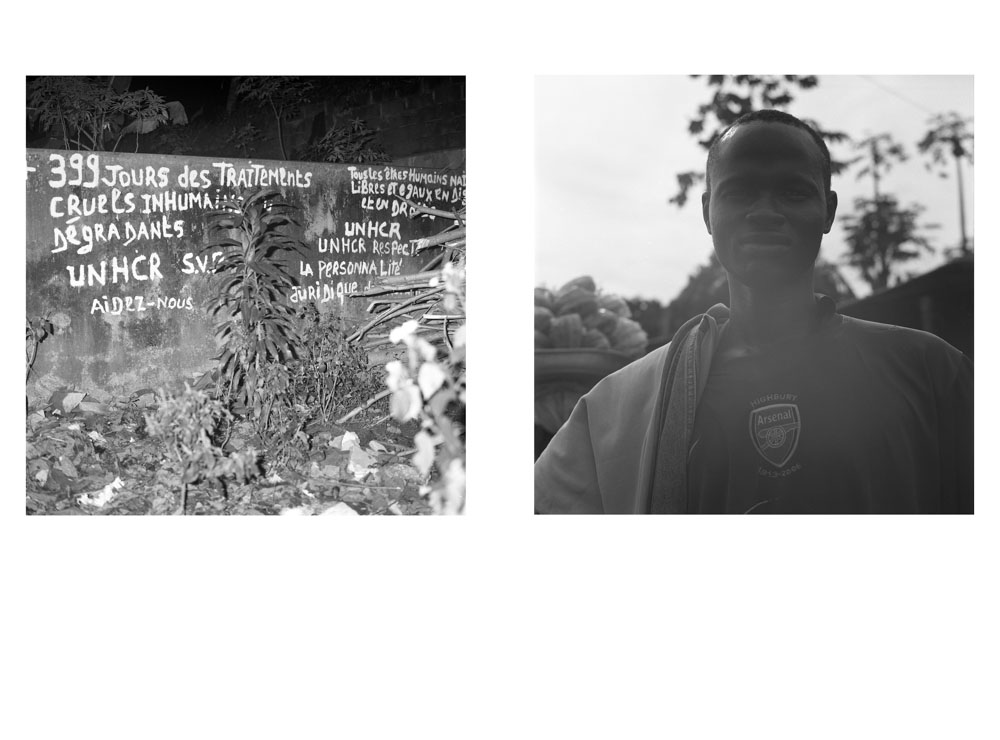
abidjan, cote d’ivoire
“Three hundred and ninety-nine days of cruel and inhuman treatment, United Nations High Commissioner For Refugees, please help us. UNHCR, UNHCR... respect the personality.” A wall opposite the UNHCR headquarters (roosters fussing in the dirt, a placard for beauty services propped against the tree - one afternoon a man leaned down from a truck to shake my hand, no friendliness meant by it).
///
(Obscuring the frame with some semi-transparent material as a new technique, seen in everyone’s work, particularly the work of the new kids, the swirls or flare of a blue gel held half over a long lens (thus set out of focus and experienced as only a feel of color, a feel of color so similar to the impartiality of memory rendering some remembrances ripped and smudged (pizza express at hyde park corner, pepperoni burnt disks eaten as a stack)) - R.M. exposing a whole roll of film to the dull light of a television set, then shooting the roll again, photographing boys with shirts off, or summer sunsets, or people on bicycles riding through lower east side - what does this say about us, that we photograph subjects dully, without prompting, and place partially-transparent material betwixt us and our target, such that there is no connection). The sad refrain of style over substance, and then the equal-lameness of style exerting itself over a subject perfectly valid (flare obscuring the calm smile of E & J’s ex-guard’s friend). And the brilliance of some of their work, and how the color just fits >>> it doesn’t matter what you do, or how you do it, as long as it’s good. >>> ‘I don’t care a whit for the new, I care only for the good (old or new)’.
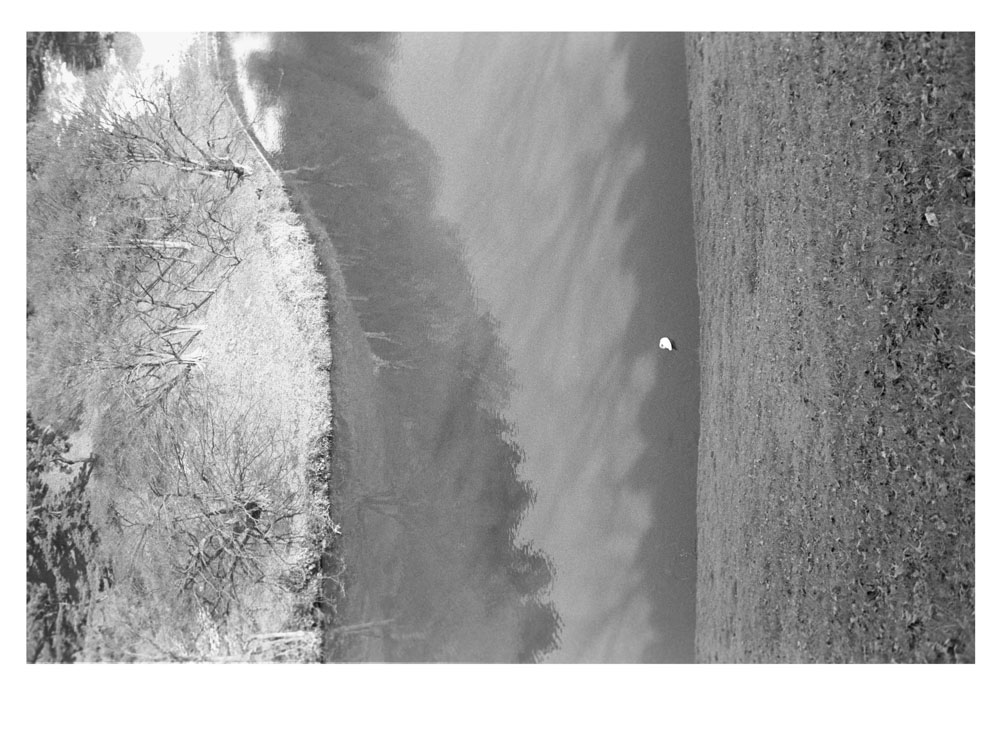
Cold Swan In The Imperial Palace Moat, Tokyo
Remember that 2008 and the beginning part of 2009 was a time beset by economic worry, by headlines prophesying and then diagnosing a ‘massive global economic meltdown’, also, in articles chronicling US attempts to ease the slide, a link with Japan’s ‘Lost Decade’, the nineties, during which the Nikkei stock index lost nearly half its value, wiping out the gains of a quarter century. Their crisis was similarly precipitated by the bursting of an asset-levied bubble: banks were left with bad loans, cash disappeared, unemployment rose, the Japanese government, however, did not slash interest rates for almost five years (or so), and there were no trillion yen cash injections until the late 90’s. The US government, faced with similar collapses of stock exchange, banking infrastructure and consumer confidence, lowered rates early, and threw money into circulation while some critics were arguing the difference between recession and depression. Putin, at the 2009 Davos conference, provided the perfect statistic: in just twelve months, the Wall Street investment banks have posted losses exceeding the profits of the last 25 years. This is a direct quote. 25 years of gains erased. Disputable.
From the future, in which this text will stay the same as when it was written on this cold but sunny Sunday afternoon, how will it have changed? Will it seem childish? Will we be ahead, out of the dark spot, and will these phrases and all this alarm seem quaint and a little naive? Are we invincible? Or are we on the edge of a cliff, still spending beyond our abilities, still mortgaging our future without quite realizing?
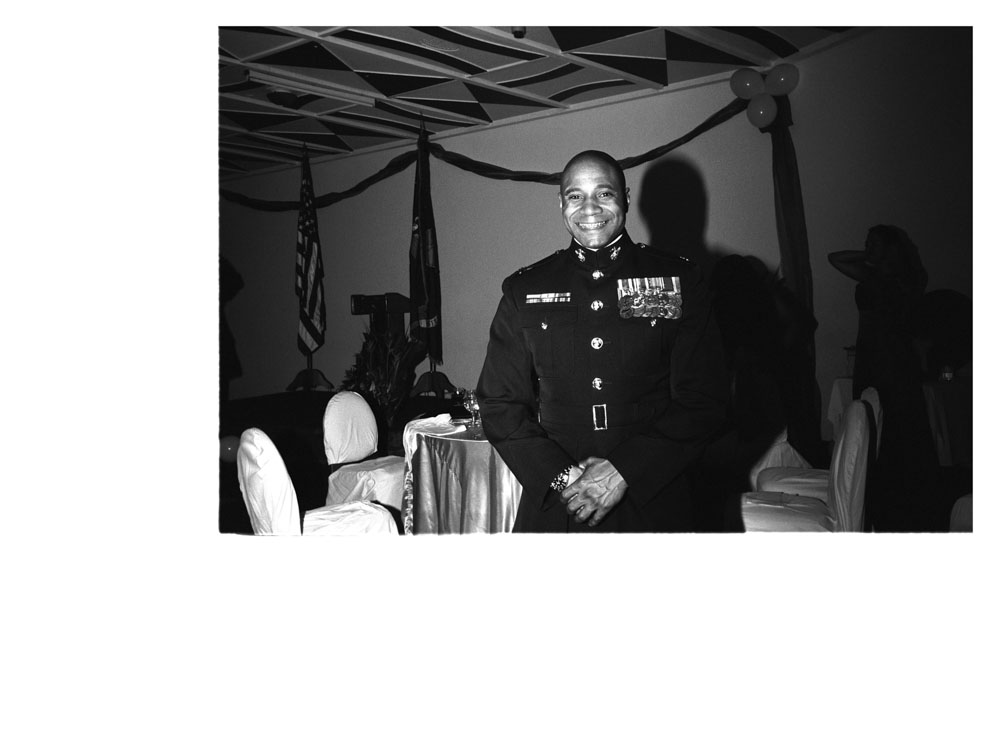
tennis hotel, abidjan
A Ball on the occasion of the Marine Corps’ two hundred and thirty-third birthday, at the abidjan gold hotel, in a conference room one floor below the lobby. K had trouble cutting or eating the cake, the memory gets complicated, a bunch of things still sticking in there, like J McC muttering ‘kill’ under his breath when the sword went it, the wife of the brazilian ambassador dominating, the kitchen staff peeking through the swing doors, and the way all the commemorative pint glasses disappeared after the desert course (though the marines had a stockpile).
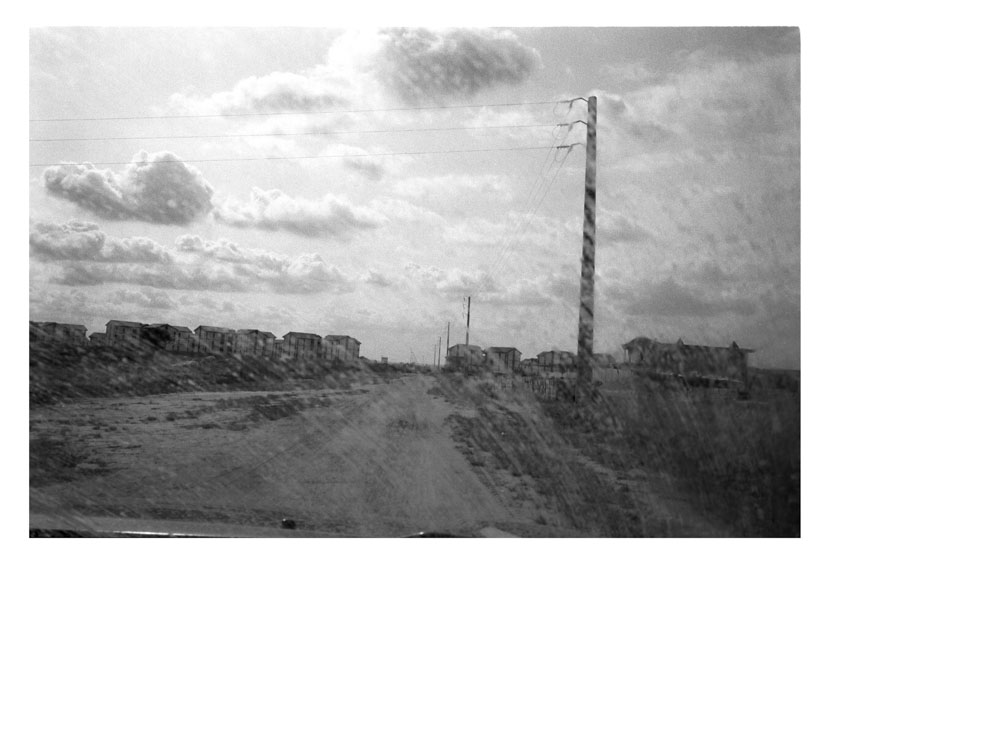
bingerville, abidjan
The idea of the lyric documentary (as elsewhere-mentioned in connection with W Evans) as the authority of the line and so forth, the strength of personality permitting creative expression without restraint/self-awareness/doubt/hesitance: differing from ‘perfection’ (perfection as everything in the quote unquote right place) in that the errors of expression are forgiven and accepted; wherein everything is accepted, and the important action is ‘doing’ and not necessarily perfectly. Artistic success as the authority of the line, of taking a photograph of YSL’s dog and that’s it, there’s the picture of YSL’s dog. The eloquence of the act: persuasion without rhetoric.
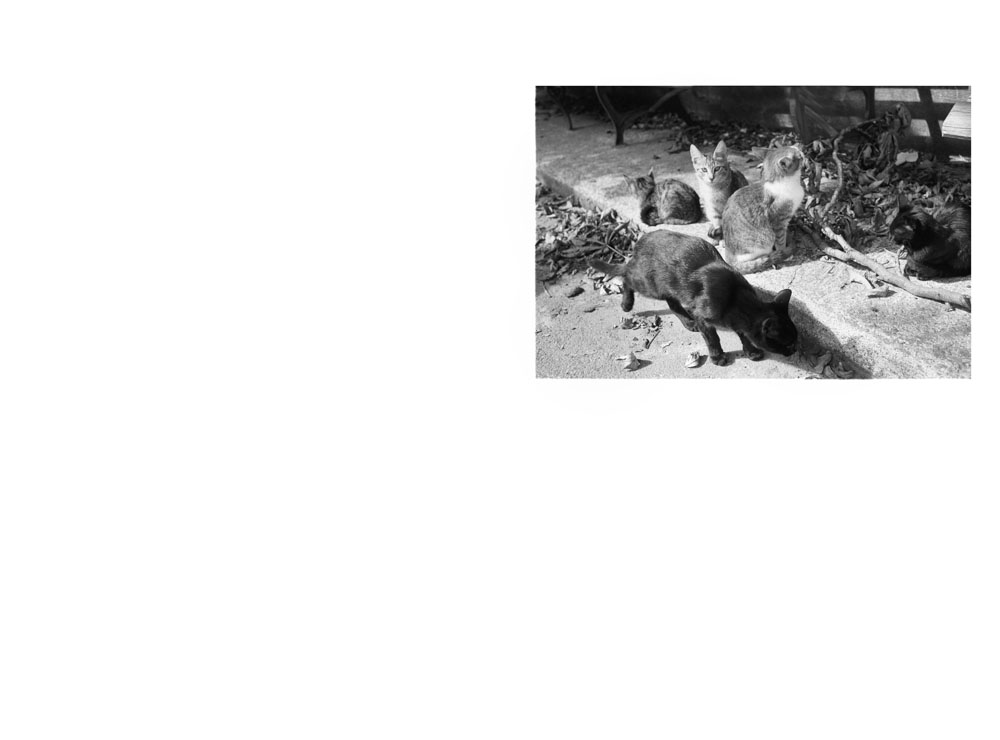
valloria, italy
The town of painted doors, in Valloria, Liguria, il paese delle porti dipinti, the murals on the doors not as interesting as the kittens in the courtyard, or the endless lunch at the only restaurant in town, where the proprietor, stooped and ancient, carried one plate at a time from kitchen to packed dining room, nodding when he set it down and explaining each of the nine courses in the dramatic voice of a Pietro Germi Barrister. Diet coke in champagne flutes: the drive back through the autumn twilight, through olive groves & hairpin turns, to the campeggio terrace where we sat in our jackets in the dark, last visitors of the season, served by a waiter once-handsome, now bloated by a disease we had forgotten the name of.
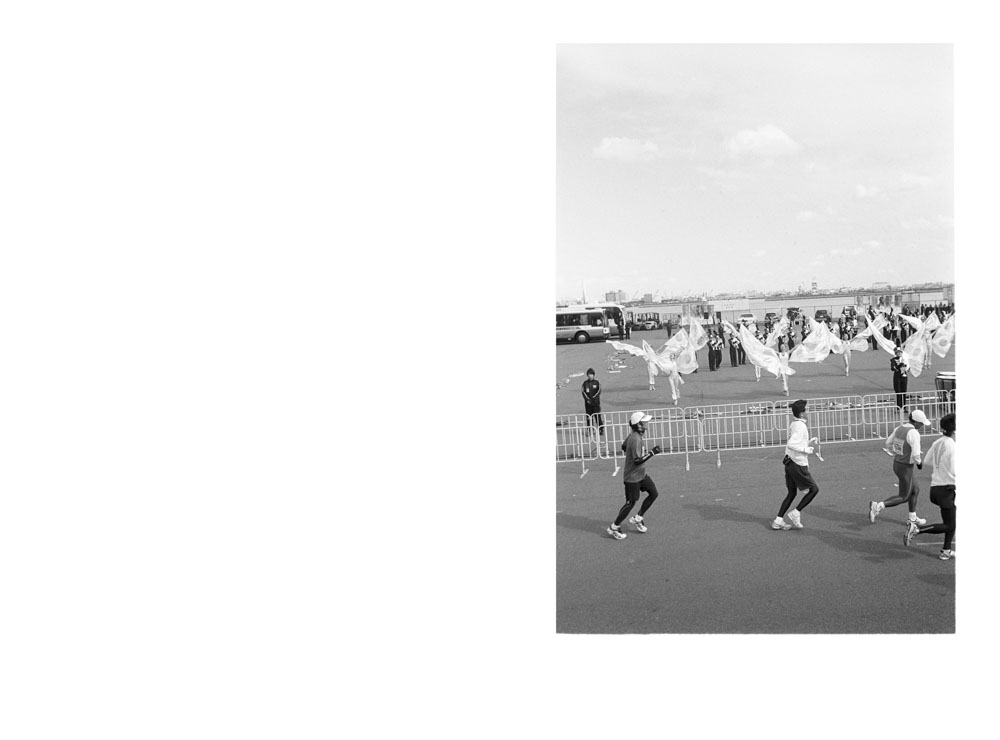
Odaiba, Tokyo
A friend ran in the marathon. It was his thirty-third birthday, and he was trying to to make a time of three hours and thirty three seconds. An old training injury started to act up mid-way, and he struggled to the end. He came in alone. We met him by the exit, arms raised as he waded through the crowd, and at home when he took off his shoes we saw blisters along the ridge at the front of each toe, deep red/black arcs like nail-clippings embedded within the skin.
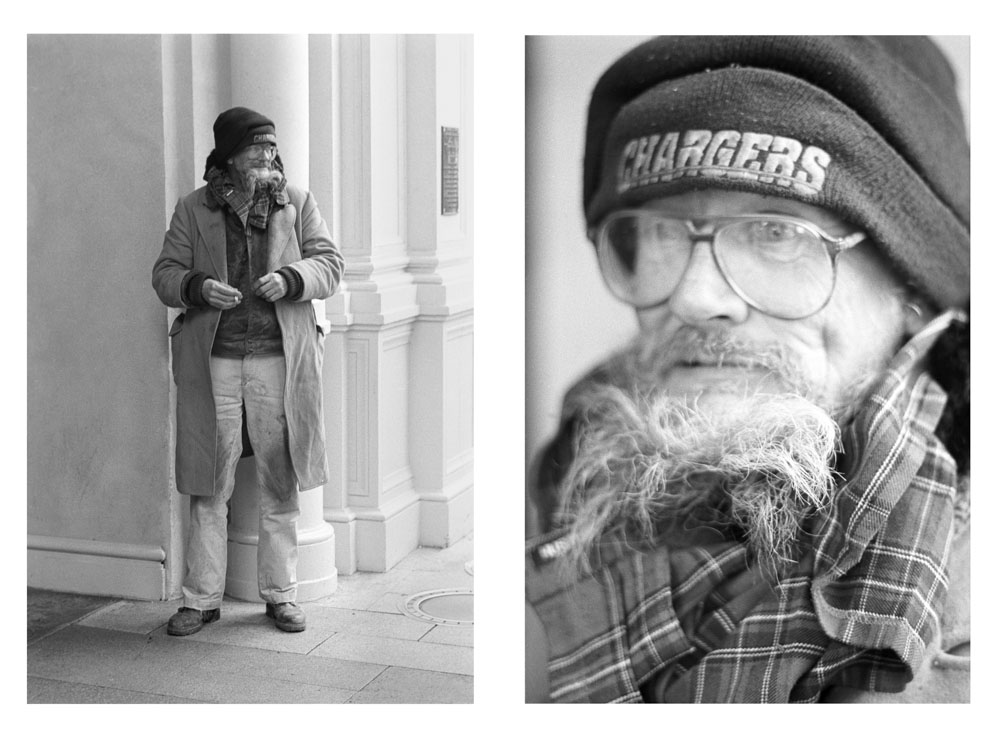
las vegas, nv
He was kidnapped from a city much like this one. One night they came to him and wrapped him in a silver blanket and pushed him onto a plane, and they took off from the runway and flew for hours. Upon approach to the new city, the plane faltered on landing, hit the tarmac, and crashed past the runway. The survivors ran from the burning wreck and slept in the dirt, then in the morning started building a new community out past the runway.
///
I asked him when the plane crashed down, he said last night. (His name: Bernard Eggman, with two g’s).
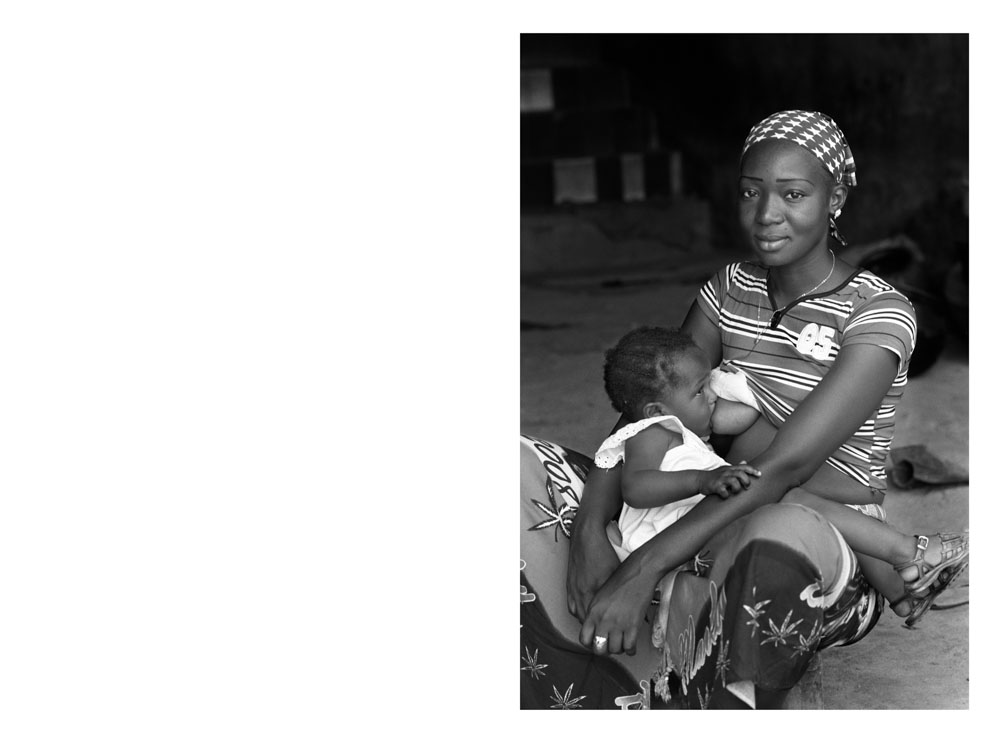
bouake, cote d’ivoire
A brilliant day full of accidents (two hours to waste before we headed back to the city, so D & I stepped out the hotel gates and took a left, off the path and into the fields, and this family living behind a low wall took us in.
>>> squatting in a villa that had been abandoned in the civil war (the neighborhood now filled only with such abandoned villas & weed-choked swimming clubs, yet it is overgrown and pleasant, and in the twilight smoke drifts across the fields and clouds pile up on the horizon, miles high). They took us in and nodded and smiled, and did not offer us anything (they were not overly hospitable, but hospitable in the way you are to friends -they meant us to relax, to do whatever - they did not stand up but gave permission with their eyes, and their slight gestures at the basin defused any possible feeling of impertinence). Smiles the elsewhere-mentioned honest smiles, just a curling of the lips and a turning of the head.
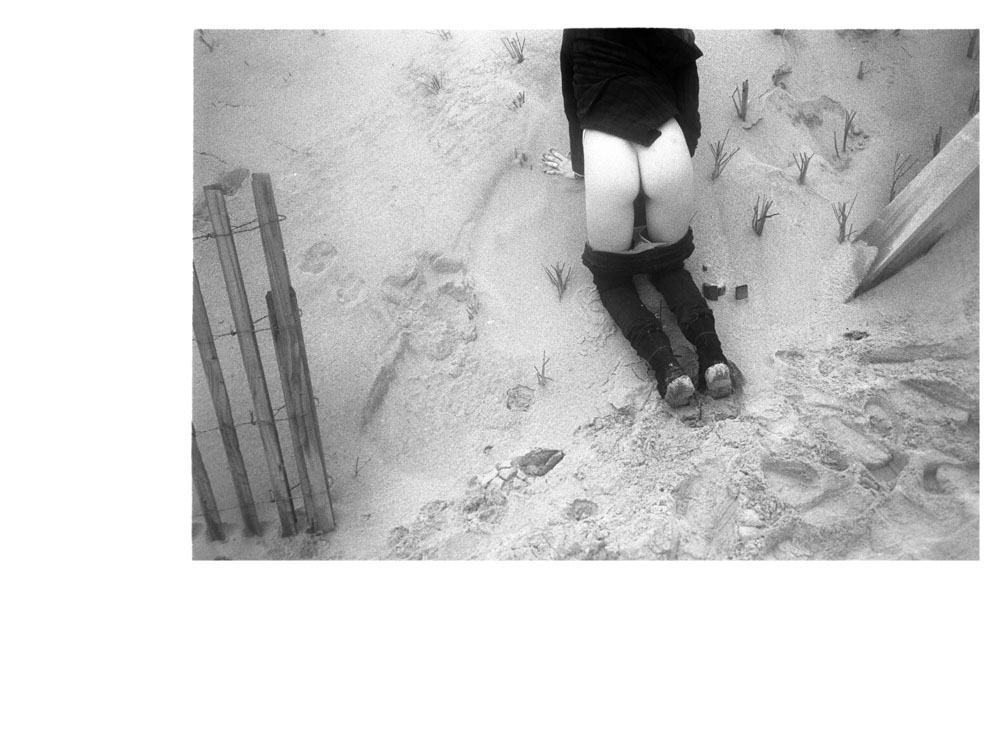
bridgehampton, long island, ny
And, and, and, and the subtexts of action being ordinarily multiple, the million reasons why anyone does anything. And sometimes the person doing the action doesn’t understand why they do it, though outsiders, the impartial viewers & hearers of ‘stories’ come to their own conclusion about motives, and about right and wrong. Of course each person has their own opinion, but that is a bromide, a platitude, some people have no opinions, and when you don’t know why you do a thing, you look to other people’s (neither true nor false) interpretation. Ah, ah, love and the illusion of love. People labor under a misconception (the lack of awkwardness when eyes meet neither an indicator of lost-passion, nor an indicator of the complete comfort that comes with true love). The story of the past, as written in the future looking back, does not have to deal with ambiguity. But this is not only because it has the cliched benefit of hindsight, but also because we have the benefit of knowing what happened next (of what moved present to future etc).
Oh would we not love to be sent a four-hundred word personal statement from the future, detailing who we will become and how we will feel.
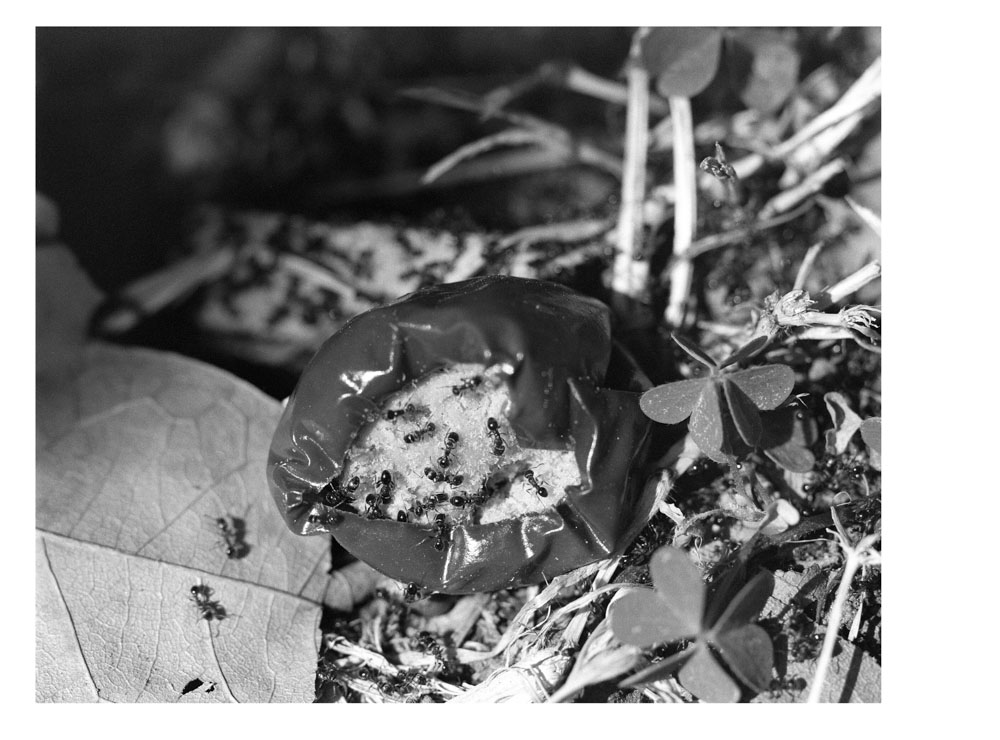
milan, italy
The changes we wanted: middle-class life for everyone, a country of intellectually-ambitious, healthy producers, satisfied with their work, calmly competently furthering humanism, earning a living wage partly saved, partly spent. The changes we got: the rising unemployment hinting at an economy extensively restructured. Old industry models broken down and renovated, swaths of outmoded (& anachronistic) business abandoned: ‘crop rotation’, describing the practice of growing different crops in one area so as to maintain optimum levels of nitrogen & thus fertility and avoid nutrient depletion: rye or winter wheat then spring oats & barley. Also, the concept of allowing the field to lie fallow for a year. To give the soil a moment of rest to get back to its more growable self.
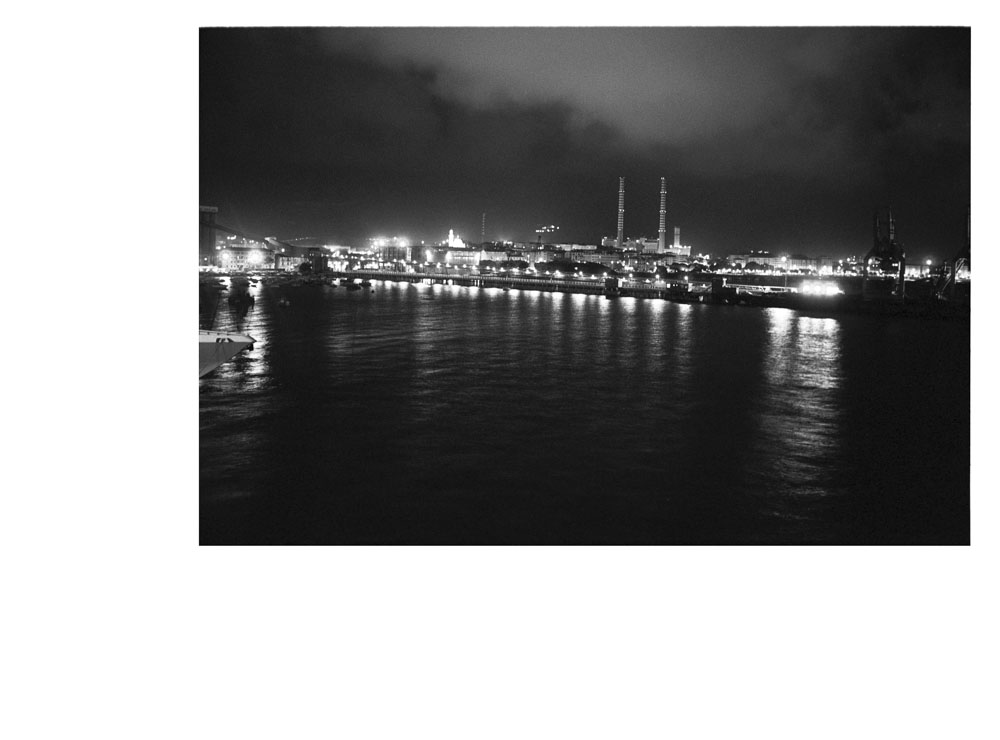
savona, italy
The issue not whether the horizon is straight or not, but whether you’re obviously trying to keep the horizon straight.
Photographs in which all elements are placed in a kind of stiff Mondrian arrangement of perfect alignment and balance, require a straight horizon line, a flat perspective as per Lewis Baltz. Without a stiff & perfect horizon line (and zero barrel distortion) the photograph falls flat; even a slight deviation and the intended effect is ruined. Use a two axis bubble level with a hot shoe mount. The point is to pick an approach and hue carefully to common dictates. If you want the horizon straight, make it as straight as you can possibly do, otherwise the image will fall apart and you’ll be an amateur. Alternatively, swing the horizon right over, like you’re Pellegrin through a car window. There is nothing worse than images taken with a 25mm lens and a horizon the photographer’s trying to keep straight. The Magnum love of tilted angles, of a camera just thrown in (f/8, there), the world experienced with head tilted as if H.S. wondering ‘what?’
Lesson to be learnt: be decisive, and then be exact.
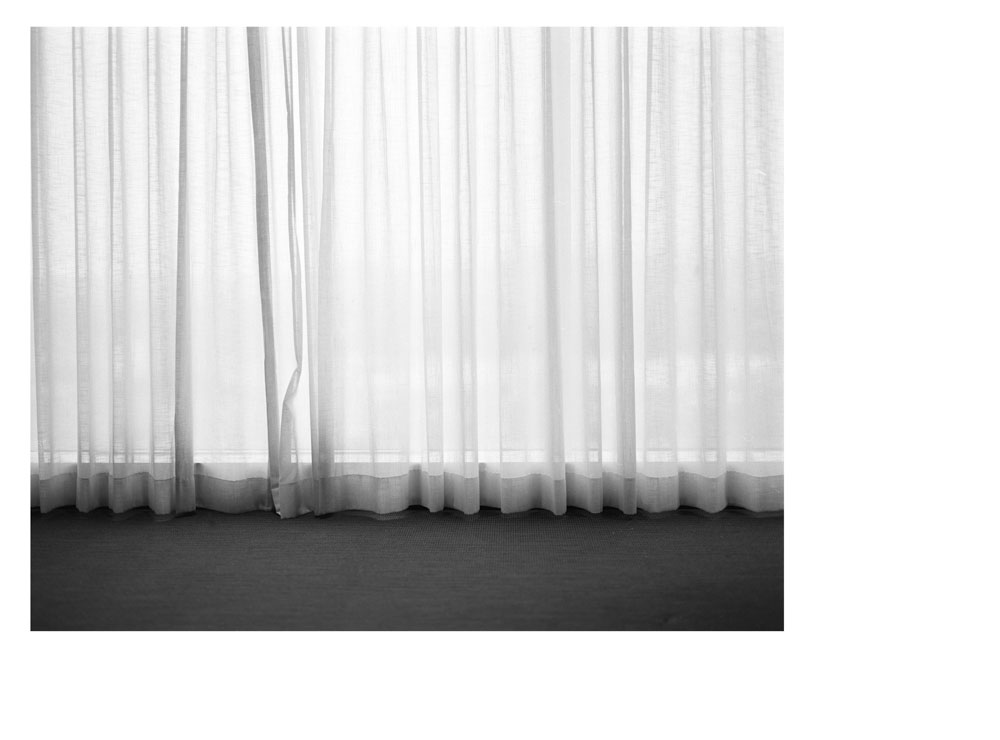
las vegas, nevada
Time itself has its obsessions, memory returning to the larger days and thicker moments that fill the laundry bag and make it heavier: a thought always of manhattan east of avenue d, and how before the illusion was ruined there were rolling fields and parkland out behind the tower blocks (there was no river in this thought, or it was just ignored). Why do I return to the park outside of the country store in blue hill and how we sat there eating slim jims with the sun behind the white church and the light dim enough to turn up the gain in the shadows
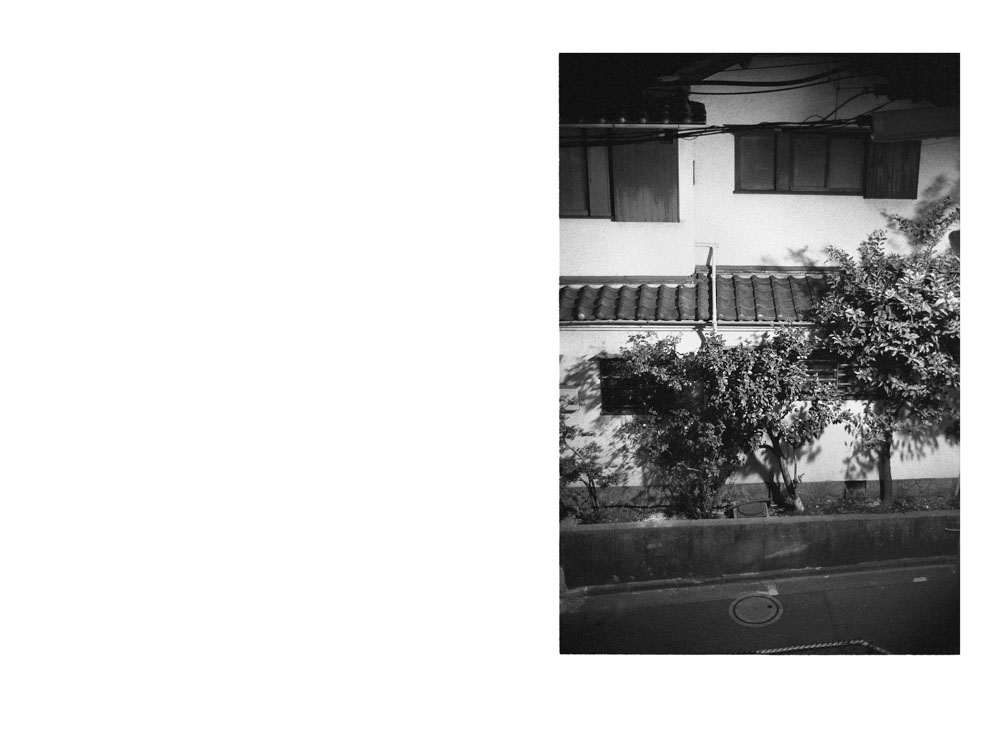
roppongi, tokyo
Behind the apartment, and a street now forever associated with K Bush and the futurism she promised: the futurism of the 1980’s, of green type on small black monitors, of beige plastic and heaviness as an indicator of worth. An appropriate companion aesthetic to millenial Japan, where the iPod standard of design has not quite come forward. In Tokyo there is slickness and simplicity (the Pasmo rechargable contactless smart card ticketing system for trains and buses), but it exists alongside the kitsch and the (thematically) opaque. K’s voice turns around the notes, shifting octaves, knife twists and at the end of a phrase, her emphasis in time not with the beat, but with the emotional current of the words >>> along this street, a vending machine selling warm lemon juice sweetened with honey, or a cafe latte in a small tin.
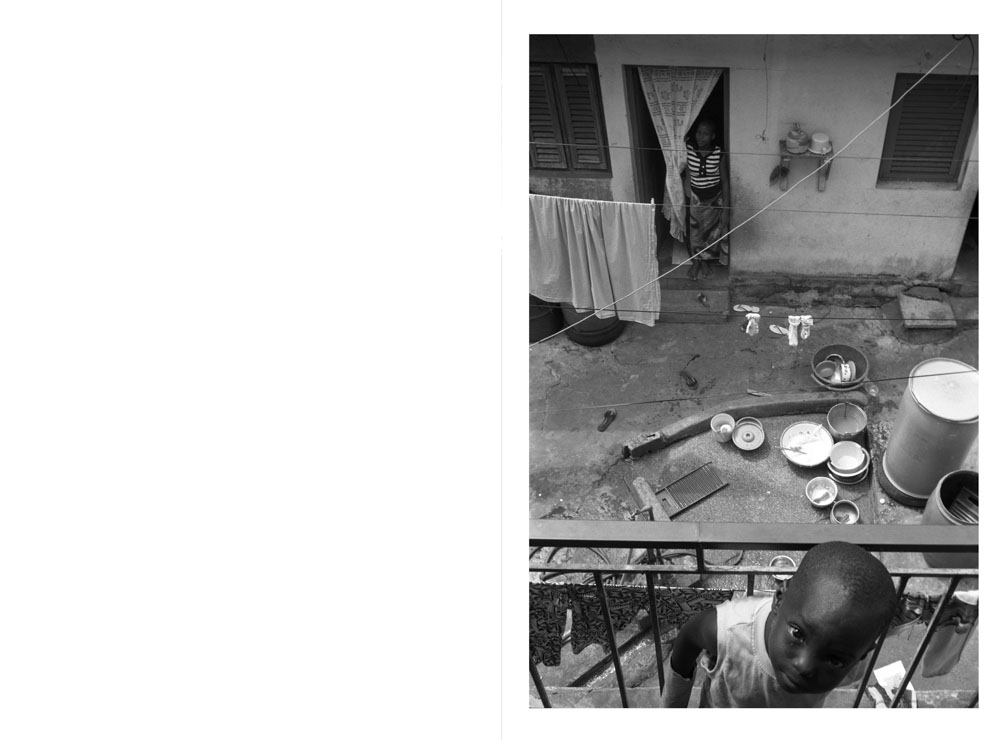
adjame, abidjan
...and D & B could not believe that I did not know my neighbors, like did not know what they did, and that I would hesitate to invite them over for dinner or company. As of writing this has changed, however, so, perhaps this is the change we got: a stronger sense of community, as, anecdotally, springs up in the feverish days right after a massive terrorist attack (and we are in a small building, we hear each other, we have identified footsteps, we are all victims of M.G.E.C. (massive global economic crisis).
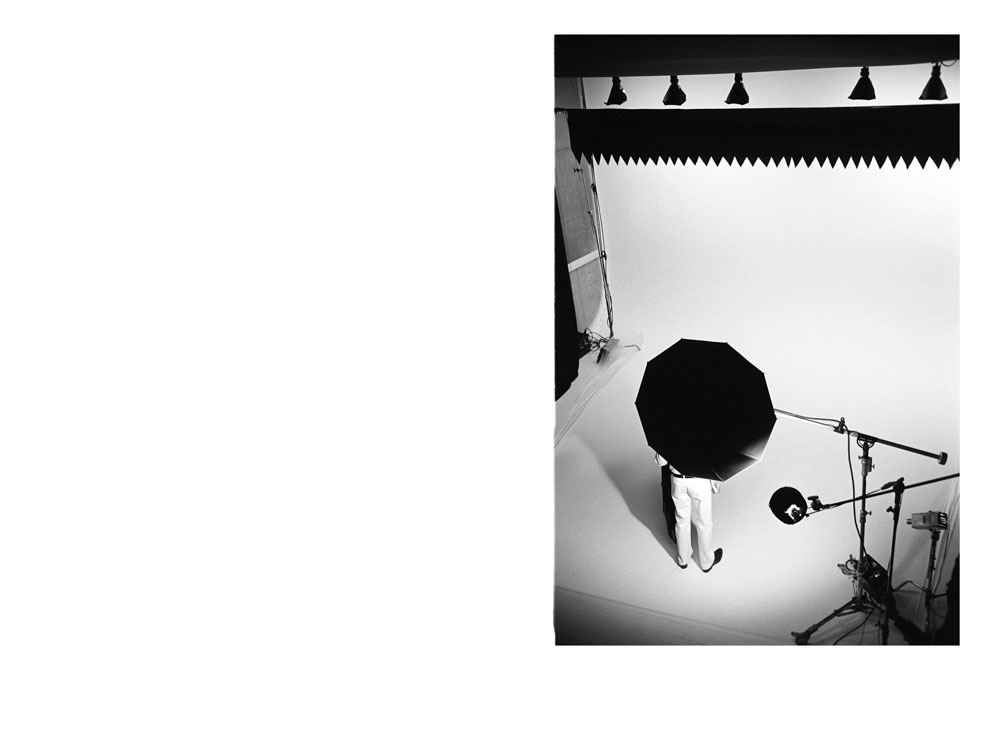
studio ten, tokyo
JR readies himself for one more leap into the cyclorama. Facing the back wall, he wears his ‘own face’, not his ‘photo face’. His face, his resting face/expression. A resting expression is the expression people have when absent, when they are swallowed in id, for example in sleep, before dreaming; or when waiting for the movie to start after the lights have dimmed and there is not yet reason for excitement/anticipation; or in the elevator; or on a walk on a day neither too hot nor too cold, without wind, without excess sun, merely overcast, overland from Gloucester Road station to South Kensington with cigarette in hand after school at the age of sixteen. The resting expression shifts with age and experience.
The resting expression of infants is evolved to be ‘attractive’ in order to provoke the nurturing instinct in the adult: we see bigger eyes in proportion to the face, rounder face, short, relatively small nose, and a larger head in proportion to the face.
The face of the child, of the prepubescent youth, is neither here nor there, but a transitioning from infant to the young adult. We see a decrease in “attractiveness” as the requirement for parental nurturing decreases, and as the physical changes of pubescence exact their damage: acne, gangliness, greasy mop hair, uneven teeth in a mishapen head, constant cowering in the dark for fear of social reprisal, baby-fat unevenly saturating the cheek-bones.
Past pubescence the human face is most like the ideal ‘mask’, that aggregate perfection that is the human face at its correct alignment, just as a building is built brick upon brick, threaded with electrics, windowed and doored, and then sold at its prime to a happy woman who ignores the first scuffed wall, steps over the first puddle from the leakier ceiling, and perhaps vacates one day, to allow another, less picky tenant to watch as the floorboards buckle and the grouting in the bathroom crumbles into each morning’s shower.
This perfect ‘mask’, of which each of our faces is an isotope (some of us being stable, and others... unstable), is an age-old concept, it is Plato’s ‘ideal’, Jung’s ‘archetype’, and we should not feel too bad when we evolve beyond the ‘window’ of our face’s maximum correlation with the archetypal perfect face, past that time when we are at our most universally attractive, and begin a slide towards that state some people call ‘wisdom’.
Resting expression, or a face in ‘repose’, changes with age, and many people’s resting expression is a direct expression of their inner character. They just look like assholes. Or they look like people easy to love, they look like they give themselves over frequently to affection and irrational liking.
McCain/Obama, final debate: the hissing and spitting versus the Dali Llama.
A contributing factor in the eventual victory: Obama is instantly recognizable in photographs. Even when shot from an awkward angle, from behind even, or (in Damon Winter’s example) in stark silhouette, you just know it’s Obama.
A Project For The Evening: sit, back straight, in your office chair, palms on knees, and, with eyes open, actively relax all the muscles in your face. You may be surprised at what muscles are constantly tense. Think about how this affects your resting expression.
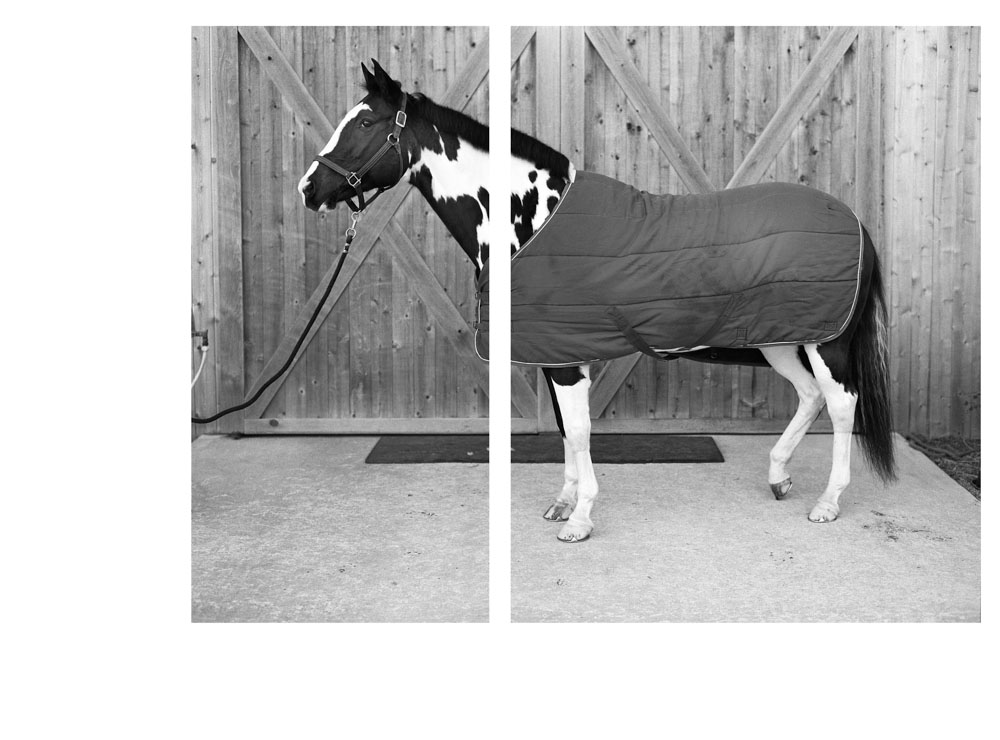
sagpond stable
Some cameras freezing in cold weather, or operating only mechanically, the batteries in hibernation, so you’re just eyeballing: the beauty of knowing the exact measurement of light, of being ‘cool’ enough to never need your light meter. This taken from an N Yorker article about the leica m3, wherein all the professionals were described thusly ‘cool’, C-Bresson among them. M Franck cooler than cool, after many decades of use she ‘knows her light by now’. The ability to measure light with just the eye, and having a mathematical formula to describe it would change the you look at light (f.5.6 @ 30 sec at the table by the window (iso400)).
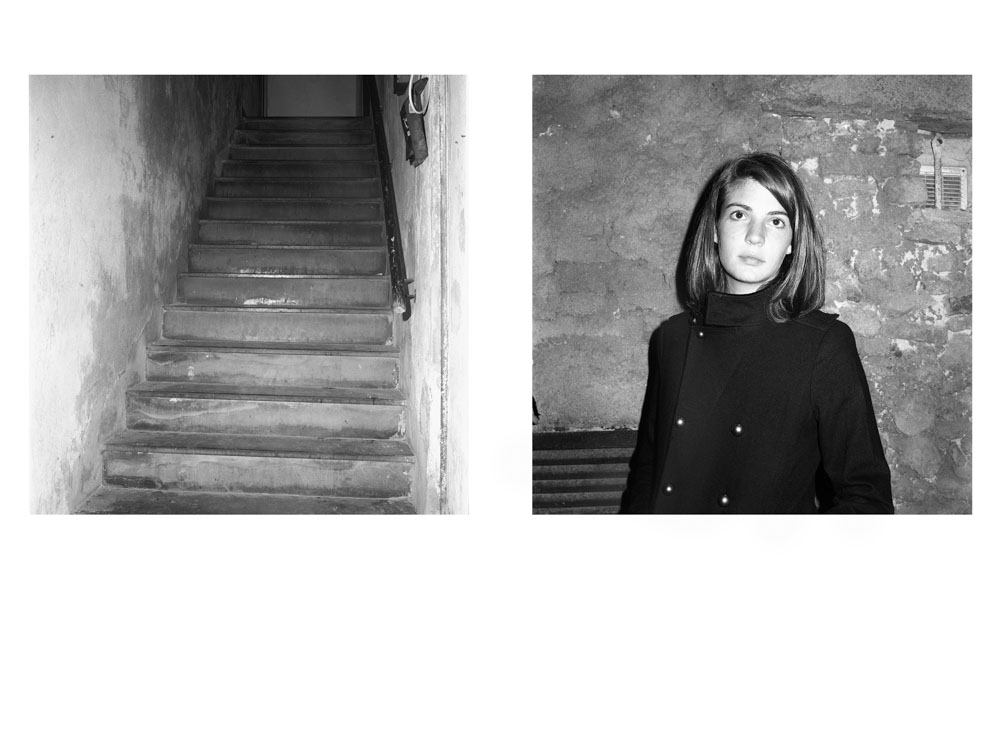
albenga, italy
Walking through the underpass of a subway station in a city far away (’faces petals on a wet black bough’), the constant clamor of recorded voices giving instructions. First, a female announcer listing connections, then a male, talking of the dangers of movable grates which slide out to make up the gap between platform edge and arriving train. And these voices cycle over and over, m/f/m/f/m/f into eternity, playing by day and at night, and through the same horn-like speakers mounted high on painted girders throughout. The male sounds deeper than the female, rattling the degraded speaker element & dusted diaphragm, and when the recording passes on to the female, the male is still there, ghosted in a speaker so used to low frequencies that the woman speaks and you hear a woman, but beneath her there rumbles a man’s deep repetition.
///
The elewhere-mentioned resting expression in some cases being not so much a sign of calm between photographer and subject as a direct response to the environment conditions of standing along a dark cobbled street on a cold summer’s evening, waiting for sunpak to recharge, and then: oh! A mistake.
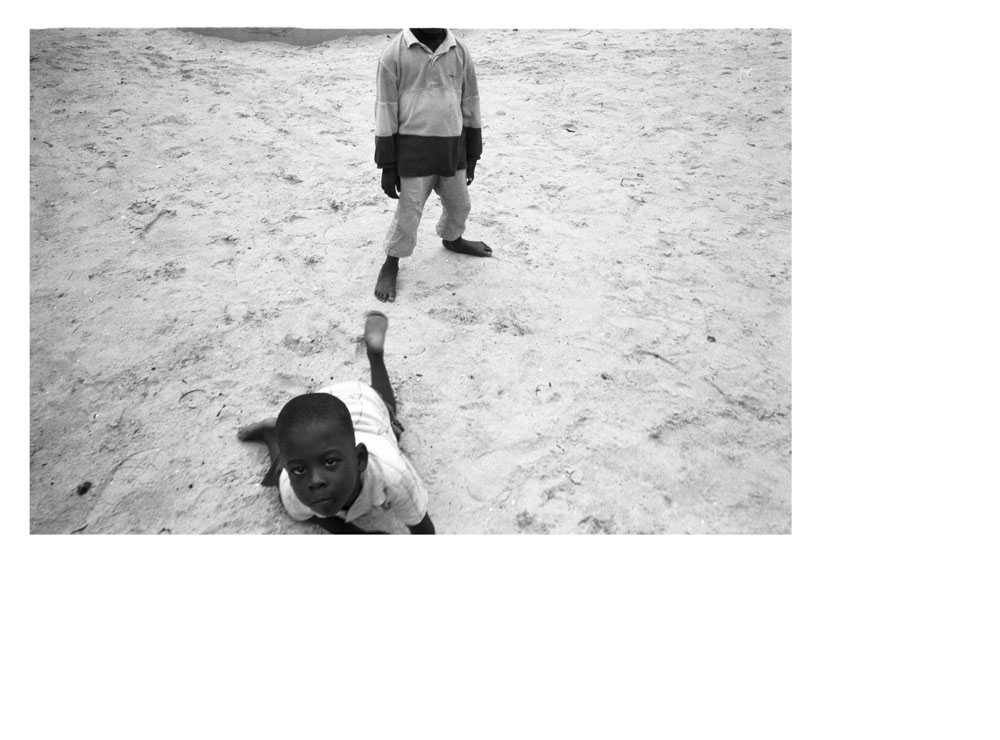
abidjan, cote d’ivoire
These being the elsewhere-mentioned lucky ones, the orphans under roof and fed & bathed and sheltered. The very fact that we were there to visit raises this orphanage above all other Abidjan orphanages by merit of its ‘visitability’. The stewards and workers came from homes where their children were worse-fed and worse looked after, and where no westerners came on Sunday afternoons to help draw helicopters with chinatown-bought crayons across vast sheets of recycled paper, and for the helpers & orderlies there was a certain illogic to the care given to the motherless children. Their children had parents and homes, yet they were also abandoned due to economic circumstance, to the subtle pressure of life (their parents were always working), and to the commonplace image of their poverty. Misery being only tragic at its most acute, while the lesser misery felt by a large chunk of the world is ignored (or ignorable), too normal to treat with charity. The way we deal with tragedy renders a disaster more profitable & easier to deal with (because of triage, you are helped), than the un-cinematic damage of a slow burn. If you bring toys to the orphanage, the orderlies will take them home to their children, and who can blame them. The delivery of gifts to the orphans comes at a far higher rate than deliveries to the far-less tragic, but no less-parented children.
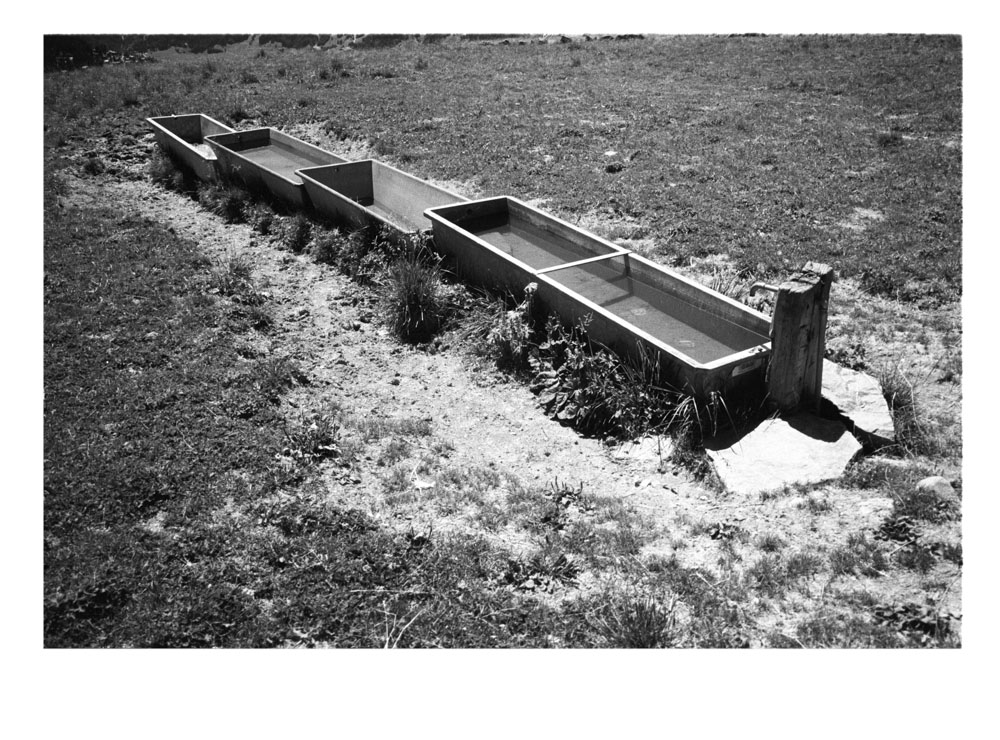
bagnes, switzerland
In an old story that went on far too long and seemed to interest nobody at all, there was a long section about the love of people for environments that were the opposite of the places of their birth & upbringing. City-folk love the country, country-folk love the cities. Beach-people dream of snow, and vice-versa. In fact this may be a falsity, as the elsewhere-mentioned defense mechanisms engender a love of home & a re-calibration of expectations to environmental standards, so to keep people still and stable and pat-/mat-ernal.
The change we see, increased urbanization, continues apace. For increasing numbers of people, nature as a vacation spot or a place to pass through on the way from a city to another city : the character of a natural place forming not from prolonged use & adaptation, but from a more temporary experience (the wind inside subway underpasses, created by the constant to-ing-and-fro-ing of passengers).
Urbanites in nature move toward the shade of trees, they look to promontories, a focal point, a green street-corner or a shelter made all of wood.
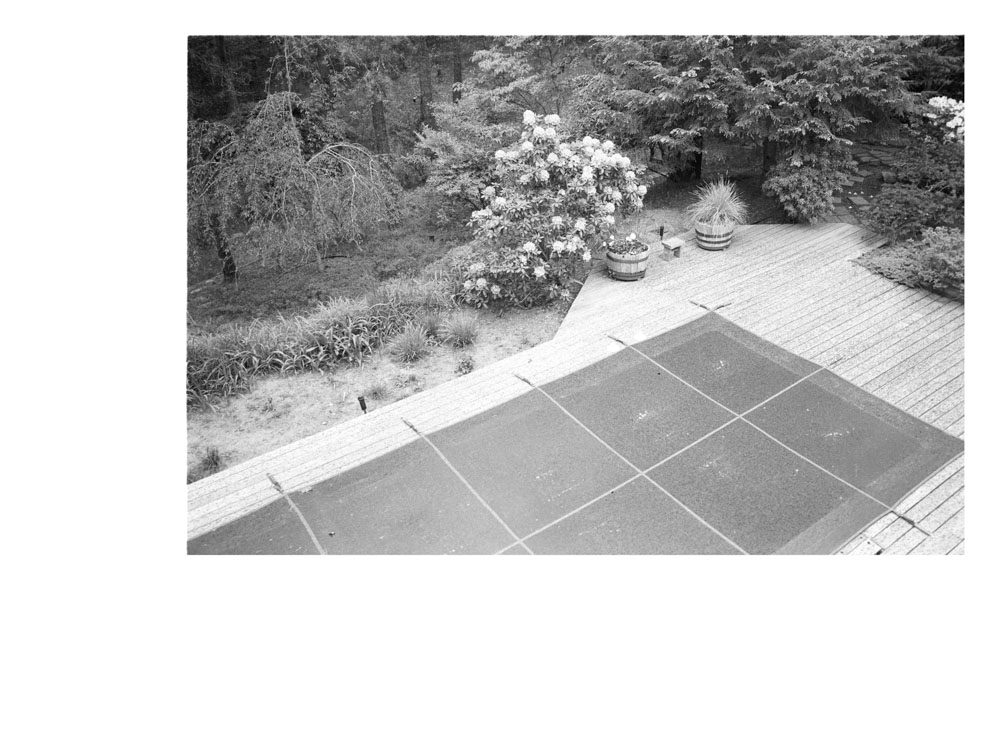
milan, italy
>>>The redemptive every-once-in-a-while pure happiness ,wherein the narrative of the past is rewritten & everything points to good, inevitable things (happiness as measured, we elsewhere-mentioned, by the belief that you are happier now than you were before). NThe strangeness of seeing two separate photographs of yourself, taken at different times of the year and in different places, and thinking that they are photographs of two separate people: one person happy and relaxed with the camera, the other so suspicious of having his picture taken that he covers his mouth and frowns (hair fallen over one eye (it’s 1994)). ‘These are not the same people’ (thought by the person in both photographs). Ajb, Drissa, EmMcC & JMcC on Rue Princess with the Marines & the dancers behind, smoke from the constant stream of exhausts blurring the flash somewhat, but still, relaxation in the arms and in wide-legged pose, and in the easy, casual smile. Operative word: easy. A smile that just came easily. Contrasted with the oddness and chin-down awkwardness of the mid-summer images. Or with the rictus of the birthday dinner (there’s no other word possible, rictus). These are not the same people (physically/emotionally). It’s not just a factor of time & place.
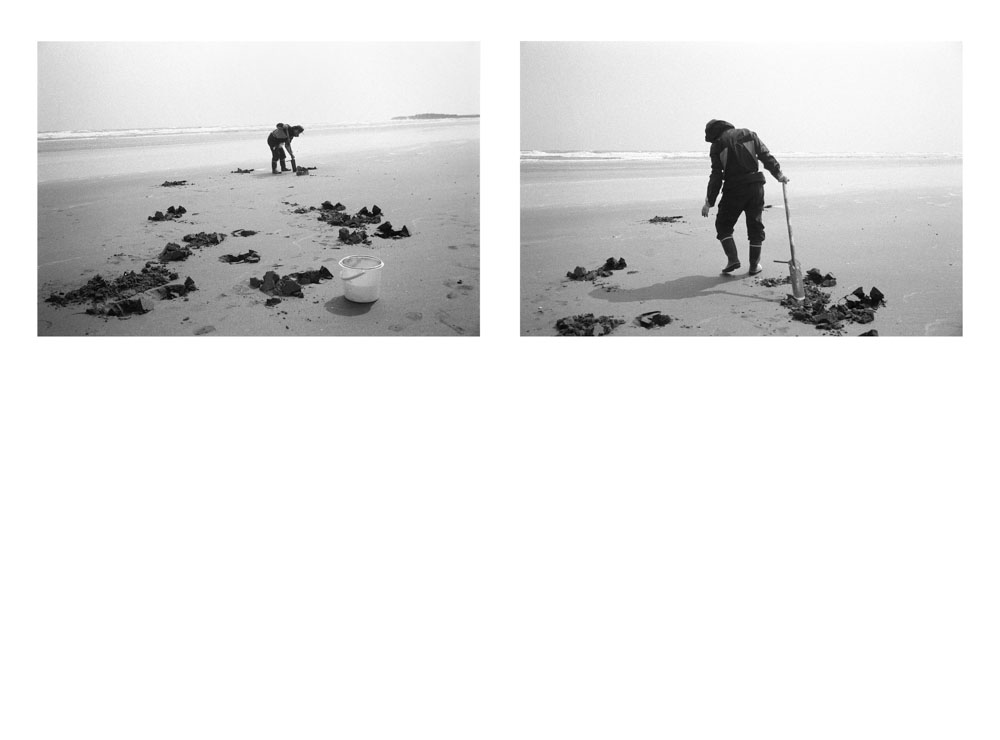
chiba, japan (double)
The beach is long and flat and falls steadily from dune to ocean, the waves crash smoothly and climb for thirty feet in a continuous rumble, then pull back to a low break. The sand fractures as the water recedes, small holes open in the sand like waking eyes. Dig under the holes with a shovel underfoot; turn it over and pull the worms out with your fingers. Put them in a bucket & keep on going.
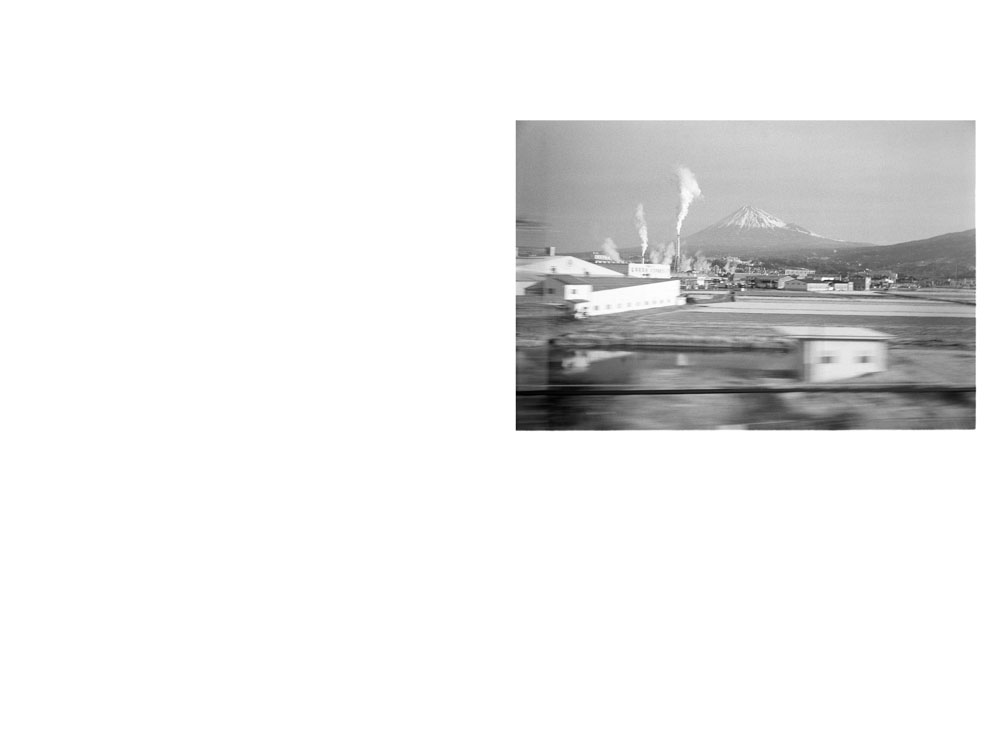
passing fiji, japan
The Japanese novelist R Murakami recently complained about the lack of ‘real’ experience in the daily lives of Japanese youth: they experience everything virtually, he said, through movies, manga, video games, cell phones etcetera, and on occasion are so isolated from the real world that they do not leave their apartments or bedrooms for weeks or, in some cases, years. There is a term to describe this estrangement - hikikomori (literally, a pulling away, or acute social withdrawal). Sufferers are ordinarily male, though not entirely, and though the term originated in Japan it is a culturebound syndrome, enabled by emerging sociological conditions, and has been reported in Taiwan, China, Korea etcetera. Blame rests on the usual suspects modern suspects: inadequate or conversely ‘smothering’ parenting, a failing school system versus intense academic pressure, videogames, bullying, a stagnant economy.
Murakami’s statements mirror the unease following the rampage in June of a suspected Otaku in the Akihabara entertainment and electronics district in Tokyo. The 25 year-old laborer rented a white van, drove it into a crowd of pedestrians as they crossed the main intersection, then got out and chased onlookers with a survival knife - seven dead, fifteen stabbed or otherwise injured. In his highschool year-book he described his personality as ‘crooked’, his favorite word: ‘destiny’.
Otaku culture is linked with the phenomenon of hikikomori, though it describes something quite separate: somebody with obsessive interests, ordinarily in manga, video games and comic books. Character traits associated with the Otaku are similar to those of hikimori sufferers: intense shyness, child-like behavior & interests. Literally, Otaku means ‘hello sir’, which is how the intensely shy address each other when frequent encounters at the small, specialized shops of Akihabara, force an acknowledgment in line with Japanese social politesse.
Globally this social estrangement among the young continues unabated. The virtual world of video games and facebook and all other digital alternatives to handshake exchange have evolved into more real worlds with expansive & very real reward: the most popular massive multiplayer online role-playing game World of Warcraft has an in-game currency with real-world value. Value is a side-effect of scarcity and opportunity cost, and in WoW there are objects, character traits and even property that people want, that have value, but which do not exist in a large enough number to be given to everyone, and there is a time cost for playing the hours necessary to be able to receive this items (either because only a more experienced character can use them, or because there is a timeline of plot etcetera preceding the moment of acquisition). Thus you can either play the necessary hours, or purchase the item using dollars on real-world marketplaces like MySuperSales.com or ebay. A rough exchange rate for WoW Gold (currently experiencing a devaluation) is 100 gold for $2.19. As each hour of gameplay translates into gold earned through battles and tasks completed (and salable items earned), a simple calculation determines the average wage of the World of Warcraft player: something around $3 - $4. Bearing in mind that this is a game, an entertainment activity (though the obsessiveness of play negates fun and promotes addiction - frustration amid euphoria) it suddenly seems like a good idea. Gold Farming is a sizabale economy, and involves giving your character (with login details) to a third-party and paying them to play, as if they were you, leveling-up for hours. This is something similar to hiring a dog-walker while you’re at work (the dog being your avatar). These third-parties are often in Asian countries.
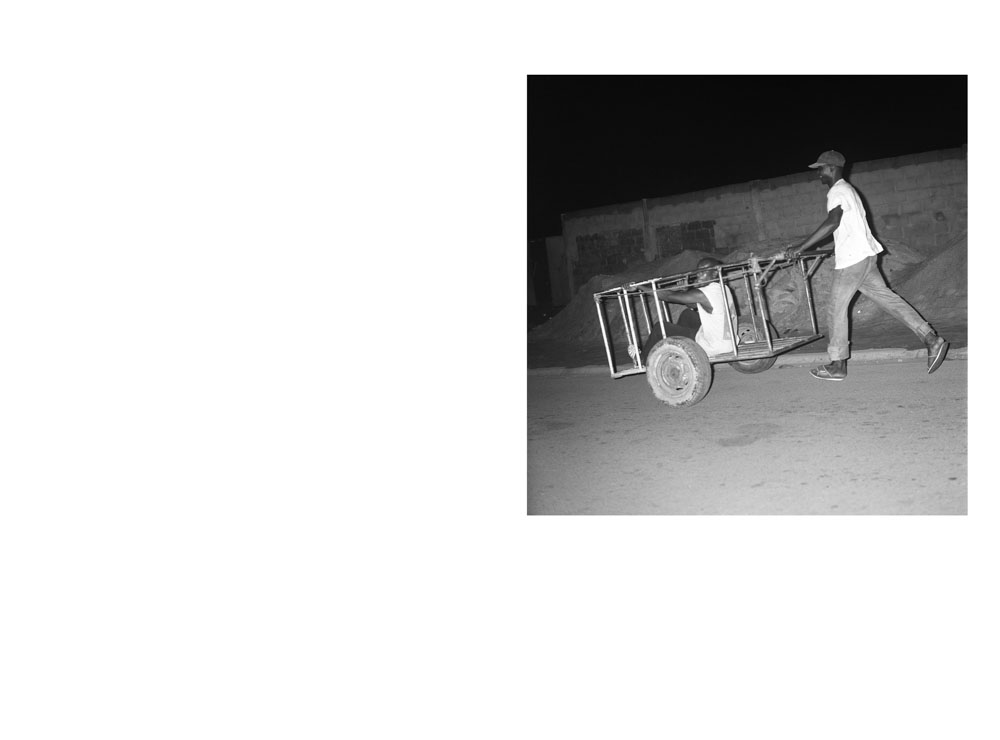
abidjan, cote d’ivoire
The road from Jardyland, back home, after an unsuccessful search for the biche, the miniature antelope, in the garden of the bar. These two come rolling out of the gloom between flickering street lights, and, passing, tell me I have to pay them for taking their picture, but the momentum of the cart is too much, and the pusher can not slow down as their curve their way down the slope, so they submerge again into the shadows, and we duck the red-and-white barrier weighted on a fulcrum by a brick, saying hello to the silhouette attendant.
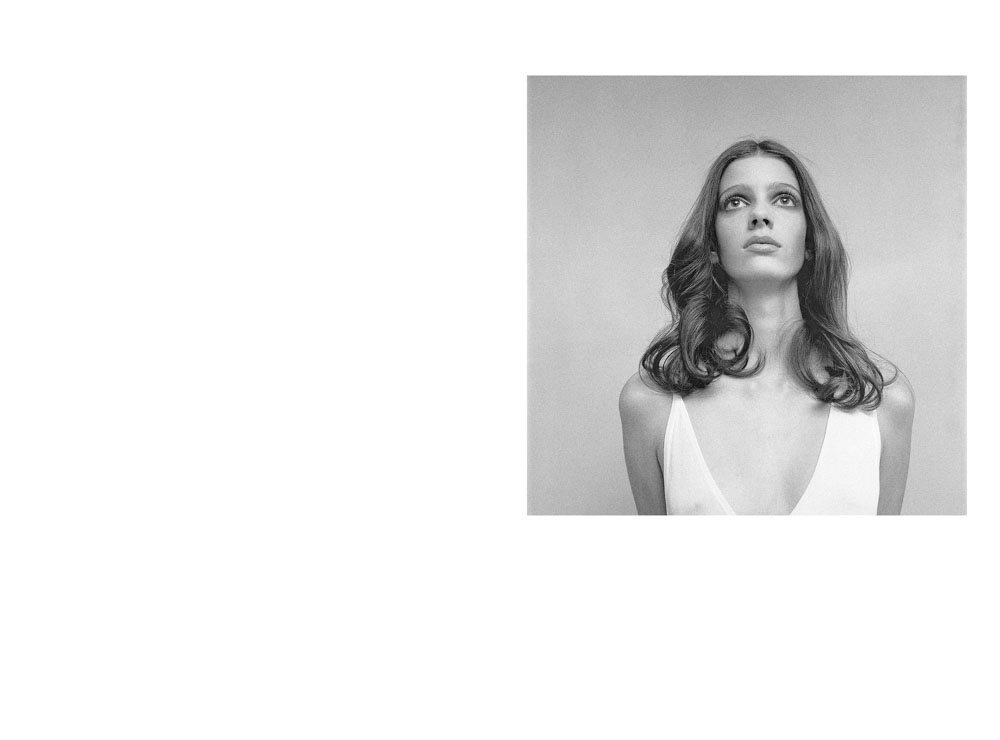
chelsea hotel, new york
We rented the room the day before and did not think about what we were going to do with the place, we moved in and looked around, and shot images that were neither of the place nor ignorant of the place: we thought that the best images are seemingly made without thought at all. Though perhaps they are only the preferred images because, without a prior formulation of ‘intent’, you can not classify the results as ‘successful’ or ‘unsuccessful’, they are just what happened (the elsewhere mentioned ‘authority’).
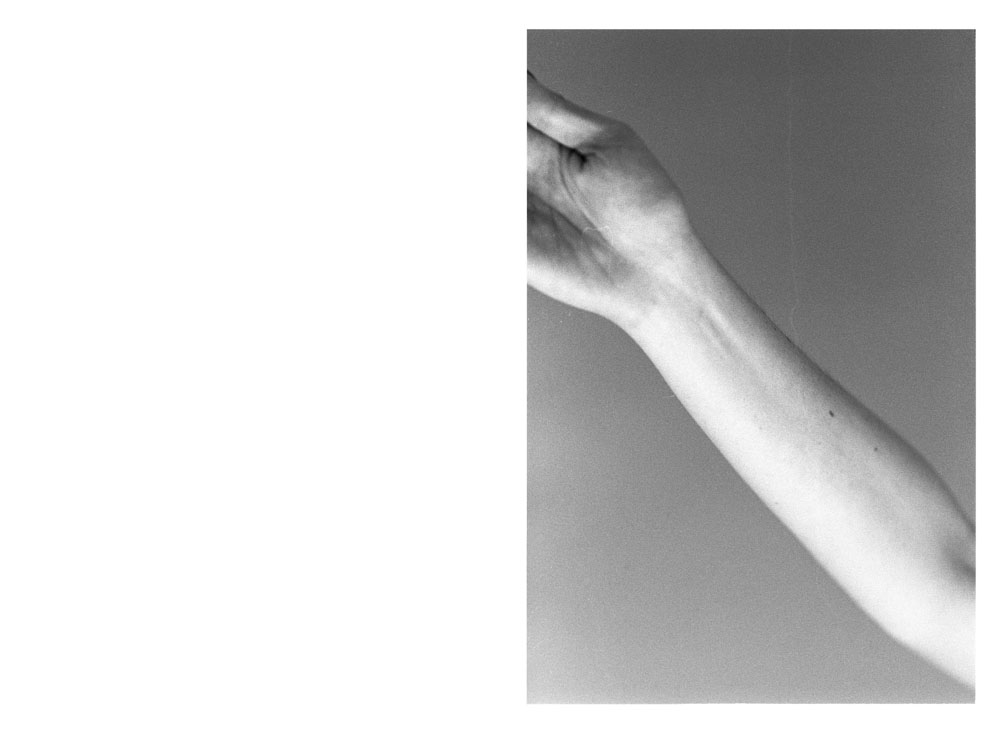
new york, ny
Something said in W Percy’s The Moviegoer, a book that for some reason has started to appear everywhere, on front displays at B&N, on tables at restaurants, in the back pocket of a man moving through an airport: ‘the happiest men are wounded men’, said with reference to soldiers in wartime, and spoken by the unstable female love-object, who is, in her feminine way, wounded (and yet not so unhappy).
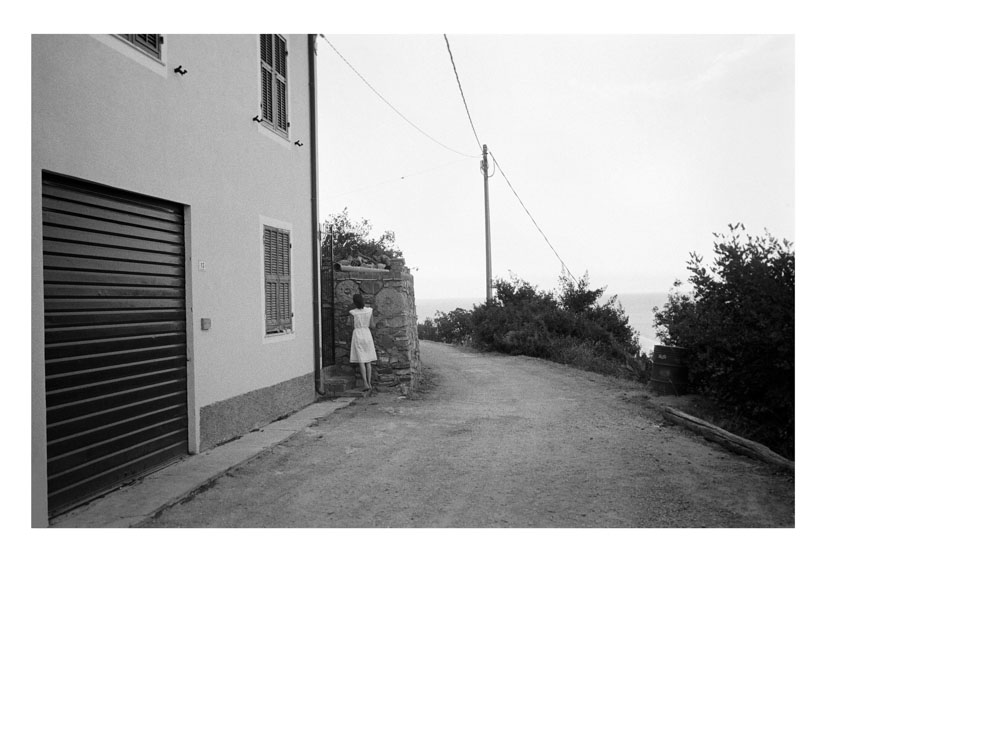
alassio, italy
The trail shown here is the Roman Road Julia Augusta, running from Albenga to Alassio above the Mediteranean, as good a place as any to run 5 kilometers back and forth in the early days of learning to run, when breathing is a stable thing you use to measure time, a waltz one two three, inhale. In the morning past the red bottom gate, starting up through the pines to the road, then with shirt off, running, as the sun in august rises over headland, over mountain-side studded with foot-high letters a-l-a-s-s-i-o. Old paving stones grown over and trees low overhead, then out, to the curve by the house that was always quiet, and to where the gray kitten appeared, leaping stonily from the bushes or out of someone’s backyard, we couldn’t tell if he was feral or just thinned by the sun, mangy in the dust. Up by the Benedictine church of Santa Croce an old man and a large young woman took cans from the boot of a red renault hatchback and distributed them, open, across the rocks, more cats emerging from the dry thorny bushes, in the evening with the sun westward, lighting only the waters out past the harbor. This is where we turned round to run back, but never before walking down through the small public garden of the church, to the shaded terrace perched over the cliff, from where you could see the curve of the riviera. And the wind channeled over the promontory to lick the sweat all away (and it was less real then, than it is now, in memory (the elsewhere-mentioned archetype of the ‘Italian Riviera’ sliding in to kill the ambiguity that comes with life-as-primary-experience: all cluttered with the unnecessary personal addenda that detracts from the clarity of actually being there (the lost night of sleep, the pointless bickering, the lost job, some stupidity of sunblock, a twitch in the knee) we forget how we argued, arguments only sound, and memory is visual (regardless, memory carries music easier than sound).
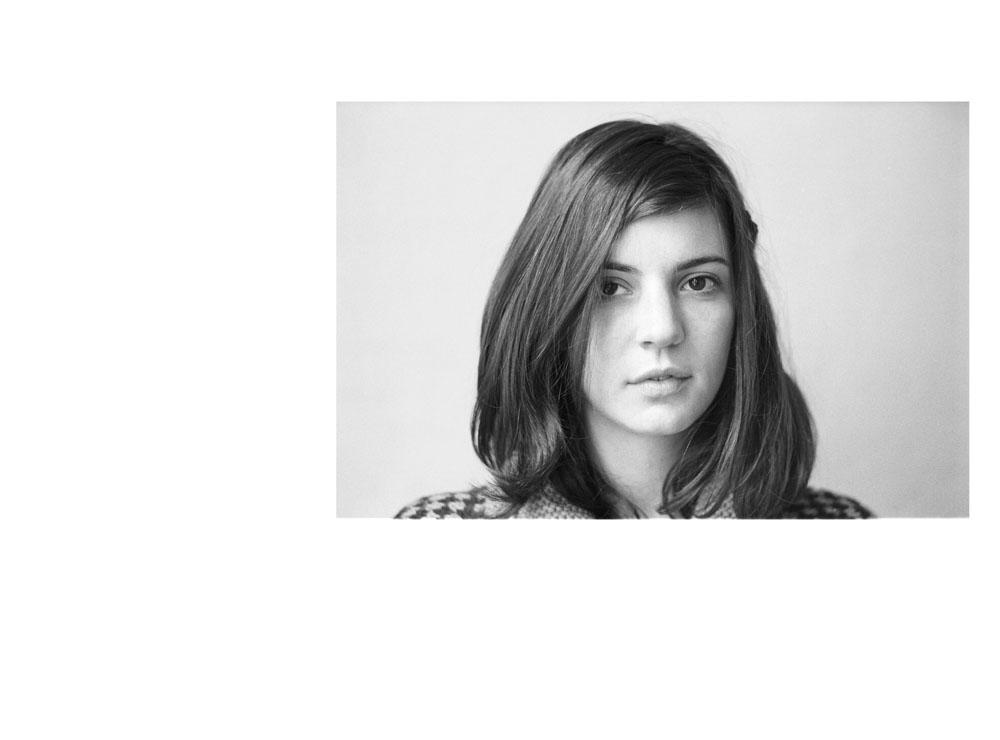
new york
Lowest thought of the year, written in another book that will inevitably never be written (and which will exist only as a bubble above the head, connected by a succession of smaller and smaller circles to the crown): “But I loved her in the way that some people love God, or Jesus Christ. Despite a lack of physical proof, I made daily efforts to support this love, I made daily prayer, in the hope that one day we would arrive in heaven and be saved. And I held her hand and we crossed legs in bed and it was a superstition.” A reoccurring madness throughout the year, an actual mental storm that attacked the brain and then the body and then the legs, so the only thing to do was collapse on the carpet in the hallway of the rented Milanese apartment (downstairs at Hamley’s playing video games and thinking maybe I had epilepsy): but what was it, was it real trouble or perceptual trouble? There’s the problem, there’s the issue >>> that time when a psychiatrist offered a diagnosis of temporal lobe epilepsy from a close reading of freshman poetry.
>>> Men’s problems: causing a thousand collapses over a year, whether yours or someone else’s, and men’s problems impacting everyone: the damage lasts and is unnoticed (and untreated) because it is not physical and thus is considered irrelevant (even in our psycho-obsession). The suggestion elsewhere that the easier disasters are the real disasters (the plane hitting the runway without landing gear lowered, with full-tank and burning fuselage), and the larger, untreatable and smoldering disasters of the commonplace ‘men’s issue’ are never even measured. Yet people are destroyed mentally as well as physically, and it is a more lasting damage, though, of course, it would be disingenuous and rather naive to say there is a socio-correlary for a terminal blood clot appearing unannounced in the slurred speech of a loved one. We twist and become gnarled like Remarque’s cemetary trees, and there’s the risk. To be stabbed is one thing, but to see one’s self turned into a knife, all sharp edges and a need for constant caution, is quite another.
But: love as a difficult thing hard to tame, hard to understand, hard to fathom & measure and find a relative worth. There are no scales for it, no scalepan on which to measure the strength of what you feel compared to what everyone else feels. It is an unspecific commodity, and as elsewhere-mentioned, our own feelings are not so important as our relative feelings. Our media (and we) create a vision of love that is not human (not the fragile & damaged love of humans), and yet their perfected & impossible version is so perfect & true that we aspire not for the people who are loved (we do not care for the people loved) but for the feeling of love (for the 3rd person in the relationship, for marriage for example). It is much in the same way that birds create in us the lust for flight >>> the ‘love heart’ being pure red and without valves and without veins, more of an upturned butt than the pulsing thing that will not stop until it betrays us >>> Love not being in the heart anyway, but carried in a wealth of data: a measurement of future possibilities, of future happinesses, or a tally of personality traits justified (a rise in the various rankings), all qualities with their numeric calculation as per the contents of a folded up newspaper seen under the arm of a hopeful person at a horse race. Love then being a kind of betting on horses (you know a bit but you don’t know much), full of risk and with (for sure) more losers than winners, love as a rush of thinking it all might come together (of thinking you might get to grips with it (it being life)).
The best kind of betting, wherein the players need not luck so much as the elsewhere-mentioned faith.
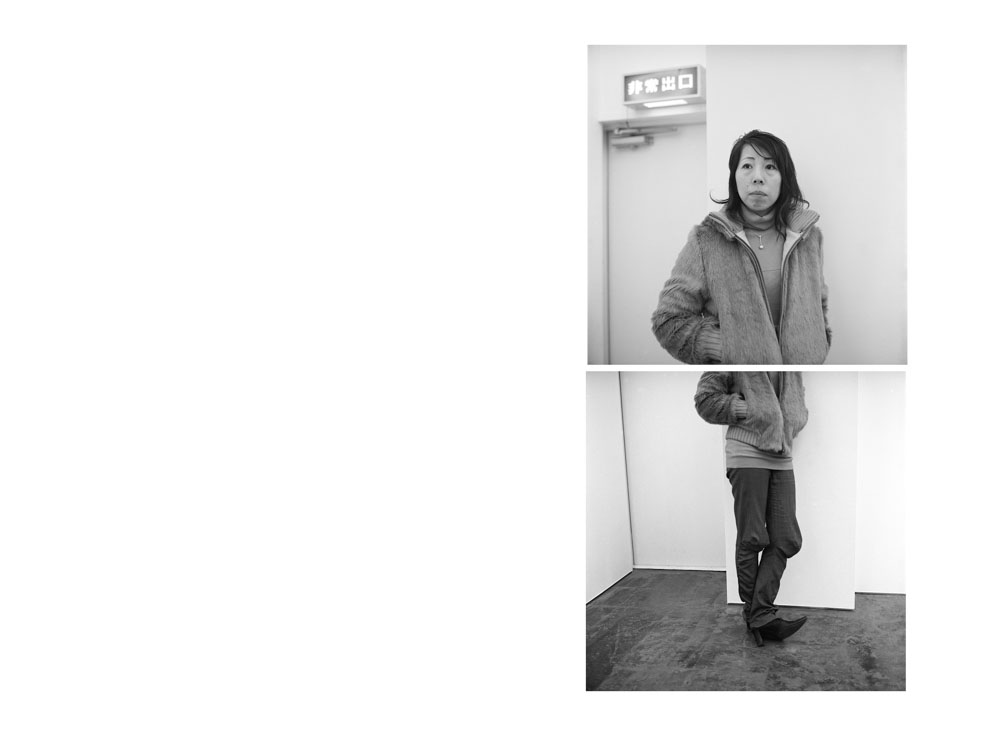
tokyo, japan
///
MISSING TEXT
Oddly enough this is a portrait in two parts of the photographer Rinko Kawauchi, who I photographed for a profile in Vice Magazine. Or ID. Something like that.
I pitched the story then found her through Foil gallery. She was cooler than I expected, dressed in a unique cut of trouser (hence the framing).
Sometimes meet your heroes (do this more often).
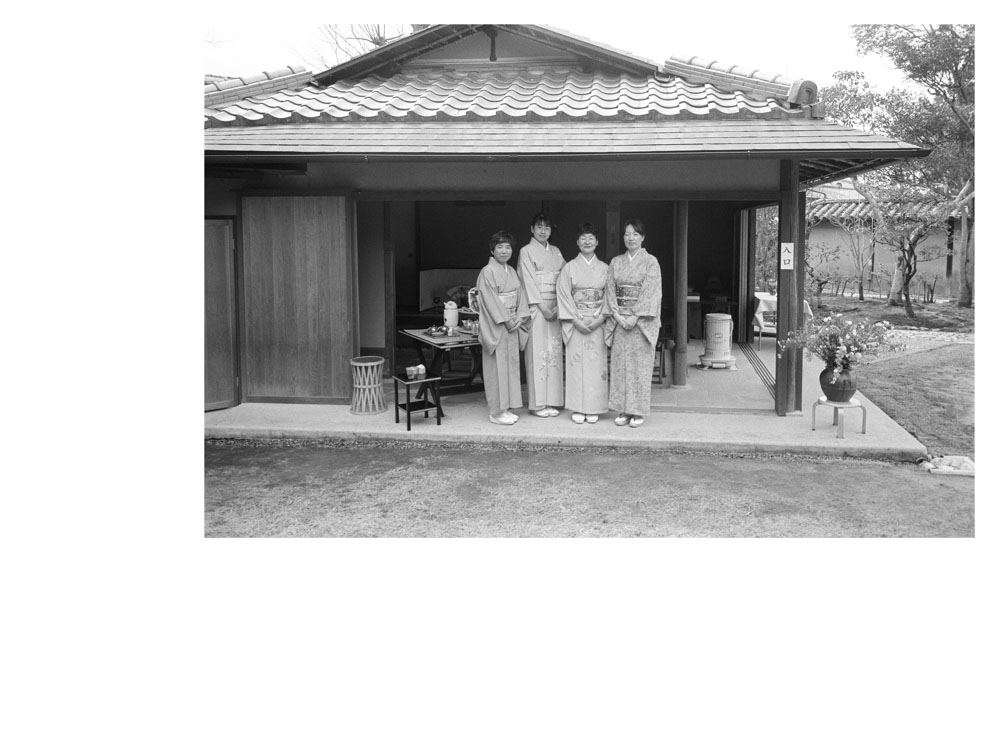
kyoto, japan
A note on defense mechanisms: the holding to an ideal that many criticize, which may in fact do more harm to the holder than good. Everyone has a defense mechanism, may it be a passing of blame/responsibility on to a higher (and absconded) power, verbal diarrhea, alcohol, early-morning sprints, obsessive Tivo recording and viewing, political fundamentalism, sexual openness, constant negation of even a single universal truth in the guise of liberalism, video-game completism, fidelity despite lack of passion, passion despite lack of love, nostalgia, facebook-stalking, travel as revenge for being kept on hold (credit P. Theroux), foreign lands as the repository of your future success, or over-work, and a whole host of others.
These defense-mechanisms develop over time. In youth the world is unknown and all the strange things that make no sense are unknown (they just don’t factor in). The idea of a world is that it is large and multiple and gatherable in the way that the media gathers it, organizes it, and presents it back to you (elsewhere there is the argument for (or against) the alternative reality of photography and television). When this idea fractures, the ambiguities of the world start to move in, and complicate things. First off, time speeds up (the wave elsewhere-mentioned), and this sense of time suggests that perhaps (because there isn’t enough time to figure everything out), there is wisdom in pulling up the drawbridge, and settling the castle for the night: there is wisdom in shutting yourself off from this everything. Defense-mechanisms, in all their weird guises, are reactions to the recurrent oddness of complicated (& real) reality, to the inability of the mind to quite fathom the difference between the real world and the more simple world ‘pictured’.
Black and white photography: kind of defense mechanism, a simplifying format that in latter days was necessity but which, in our digitally more colorful (color-filled) times, is an option: a loaded aesthetic choice. Black and white both more epic and more simple.
Sidenote: some people think color, along with instant color film, was invented in the 50’s, and everything color that exists from before that time, all the real objects like furniture and books and paintings and buildings, suddenly realized their colors in the middle of the twentieth century, just as infant self-awareness develops at the age of two.A long (accidental) tea ceremony - chakai - initiated by ladies beckoning from an open cabin across a garden, conducted entirely in Japanese, a language opaque and so far from the more familiar latinate & anglo-saxon derivatives of europe that all response was limited to nodding and smiling: the ideal way to interact. This is the interaction of children, and the woman second from the right gestured to a stool and then held out her hand. She withdrew, said a few words, smiling, then extended her hand again, and held it there. One thousand yen and she disappeared behind a screen - sounds of clattering boiling water - she returns with pot on black lacquer tray, small dish with flower bean-cake. Passing the pot from the carrier to the receiver requires instruction. The tray handed backwards, so with two hands at opposing corners, the tray is turned at 90° increments, and accepted. The tea poured straight, without wavering, hand on top to hold the lid. Then the cup is drained in one draught - and some people cough with a mouth full of hot tea.
The tray is turned 180° and handed back. She goes behind the screen and her companions, standing with hands crossed at the hip under the overhang, smile docile smiles, nodding from the waist: a creaking nod, deep and drawn-out.
The leader returns with more tea and the sequence repeats itself: the turning and accepting, the pouring and smooth full sip, then the turning and returning. She goes away and returns with a beancake shaped like a flower, and, with a miniature pink fork, makes the first slice. You chew and they watch.
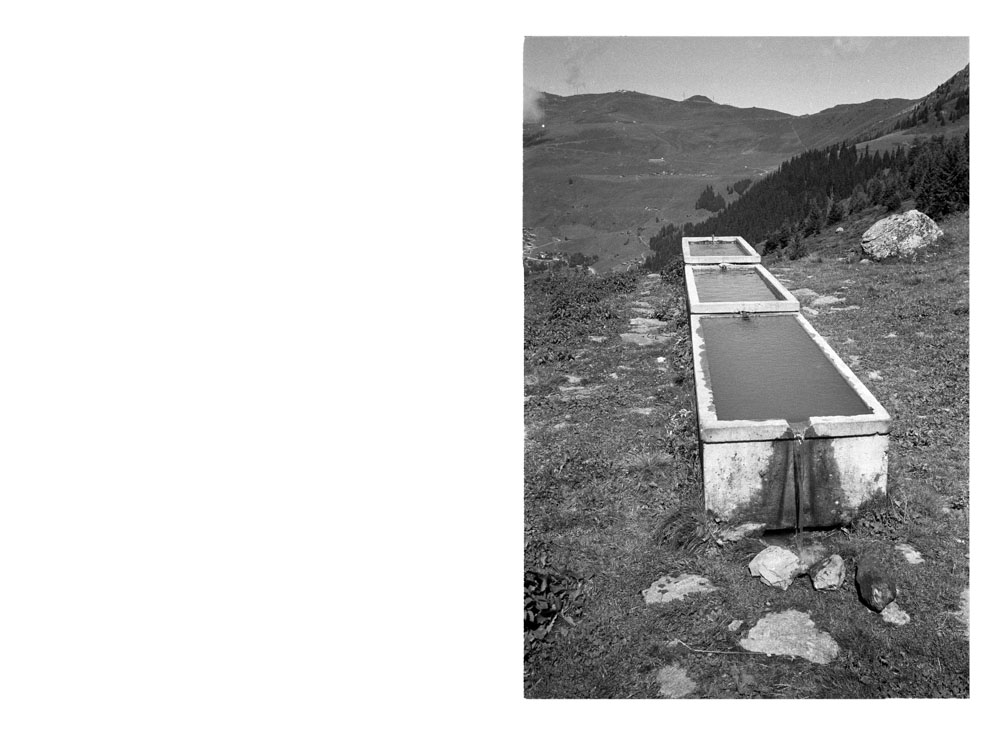
verbier, switzerland
Sidenote, in thinking about light in alpine air and the relative benefits of red filters (benefits that I consciously avoid and barely understand): the interesting fact that Emperor Nero, he of lyre-playing fame, used to more closely watch Gladiatorial contests by holding an emerald up to his eye. This is related by Pliny the Elder in the thirty-seventh book of his natural histories, in which he also describes the enfreshening qualities of the jewel (here called a smaragdus): ‘even when the vision has been fatigued by viewing other objects, it is refreshed by being turned upon this stone’, which explains, in part, the Autumn/Winter 2009 Dior Campaign.
Sidenote 2: Pliny the Elder also wrote that true glory comes in doing what deserves to be written, a classical maxim best put into use by, um, Amy Winehouse.
Sidenote 3: the curious story concerning a British photographer now living in new york, and the massive jewel he would carry from shoot to shoot in a cushioned black case, and which he would only take out at the last minute, to position in the path of some stray background light.
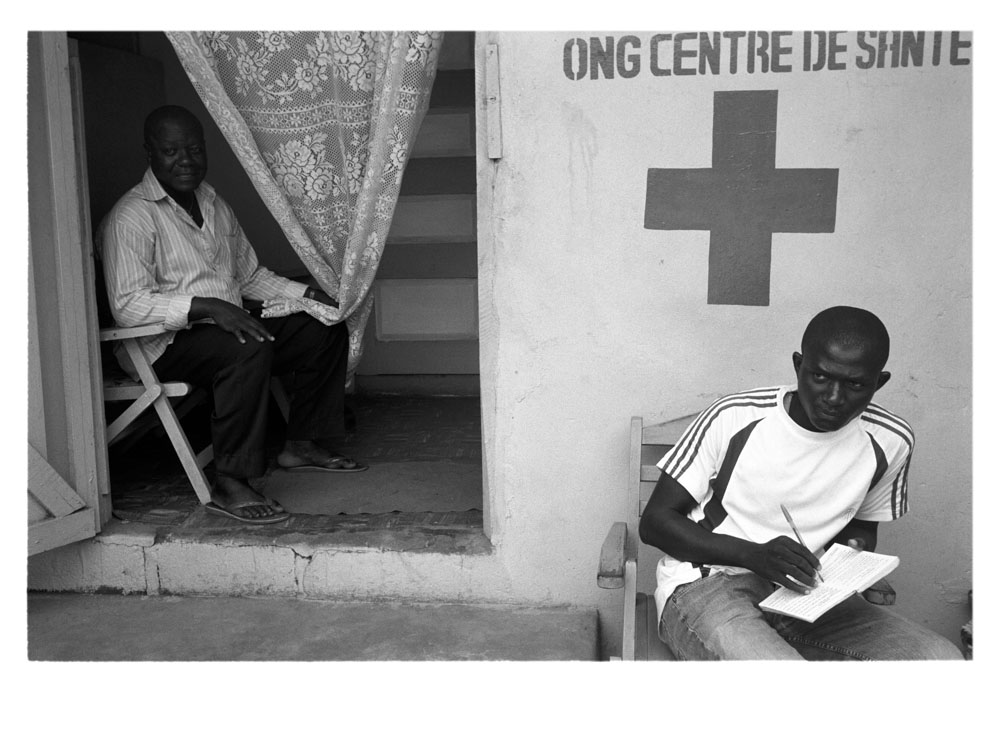
williamsville, abidjan
A neighborhood medical clinic: tests and small operations performed by unofficial doctors, yet doctors none-the-less. The classic description would be ‘nurse’, but in the environment, an environment where nothing is official, there are no addresses, street names, recognized ethnicities, and no excessive capitalization as per our legitimate west: these clinics are the hospitals.
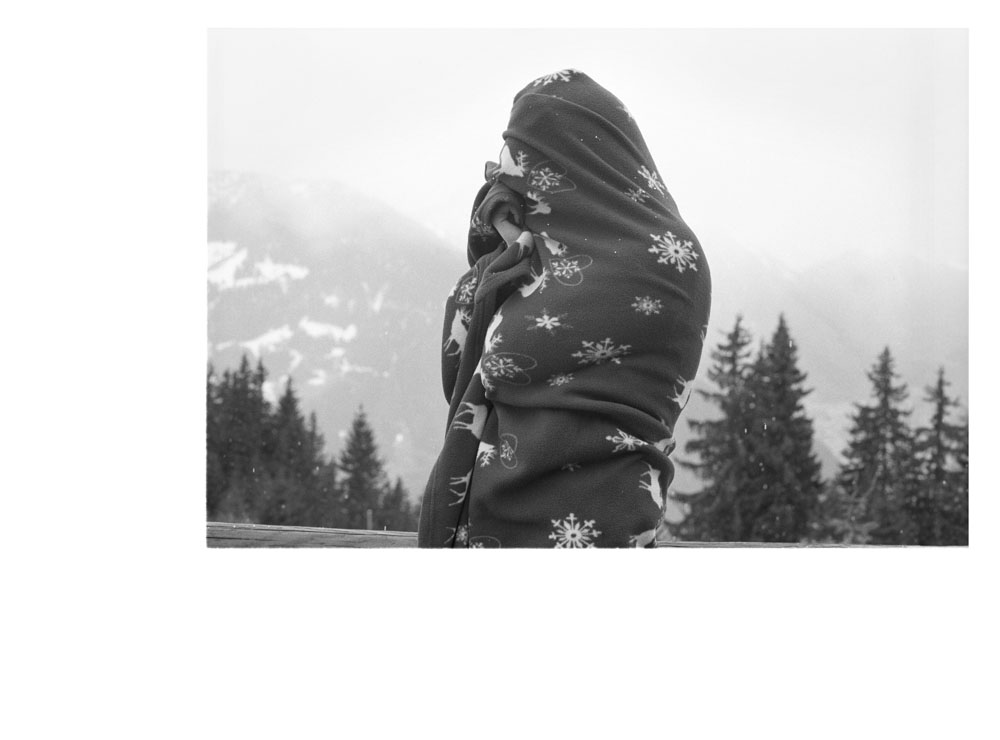
Clambin, Verbier
Literature as a non-specific specific medium, in which the elsewhere-mentioned RED-BUS is both a red bus only, and also all the possible variations of red buses.
Photography as a specific art (elsewhere-mentioned), hewn from the stone of reality, while abstraction in photography is merely the ‘abstraction’ of a closed eye, of patterns seen behind tightly-closed lids.
Analogy in literature (whereby an inference is transferred from an analogue to a target), is not so possible in photography, the closest approximation becoming ‘symbolism’. Whatever you photograph becomes the photograph, and unless you tinker with the ‘reality’ or ‘surface reality’ of the image (and thereby alter the veracity of the image, changing its ranking in the hierarchy of media, bringing it level with painting), the viewer of the photograph will see what you photograph (photo as specific). The ambiguity and emerging analogies of photography arise from the gap between images, from the un-photographed elements (the environment in which the red-bus travels, perhaps, and which dictates form), and from the accompanying noise of the photographer themselves, their past work etcetera (photographs being both specific and silent).
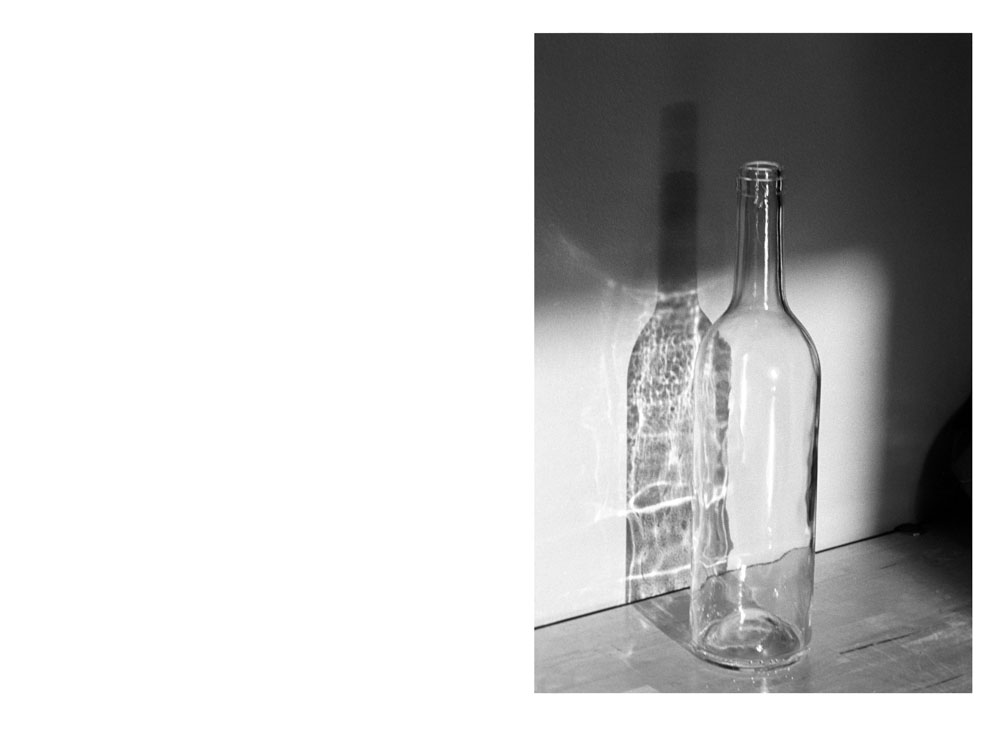
new york
A year of collapses both economic and social, and a shifting in the air that we can not yet measure, but which, in the way of looking back from a future time, will someday seem quite decisive. And why the erosion of interpersonal relationships? Why all the couples breaking up but staying friends, no massive cataclysm but just a holding-at-arms-length.
>>>> M Sidibe’s Nuit de Noel as the ideal, but of course (because of the medium of its expression) faulted. It is a photograph of a couple, a moment viewed for only an (elsewhere-mentioned) fraction of a second. Thus without narrative, without past or future, unreal. Who knows what happened next, what had happened before. We plug in our own wants and fill in the third-dimension of the two-dimensional photograph, and make reality.
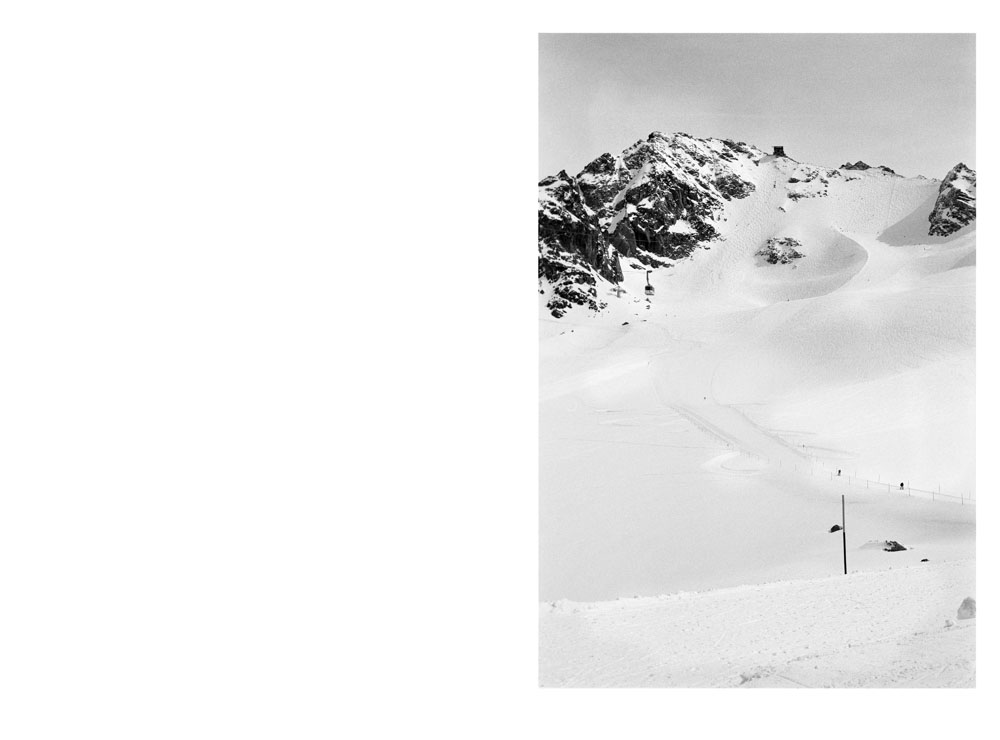
verbier, switzerland
Snow reflects light most effectively, and evenly-lit is almost two stops brighter than medium 18% gray, the measurement of gray that most camera and independent light meters expect to encounter. For a correct metering, either compensate the light meter, or overexpose the image by a stop and half.
This all depends, however, on what photographic medium you’re using. For slide/positive film you need to be on point, c46 is a little more forgiving (while increased exposure is prefered), and bwtx400 has a wide latitude, and benefits from increased exposure anyway, allowing labs to more easily make prints. Digital is a different dog, it is an electronic dog. V LaForet in a lexar infomercial recommends a typical underexposure of 1/3 of a stop, and, of course, lexar professional compact flash cards for photo storage.
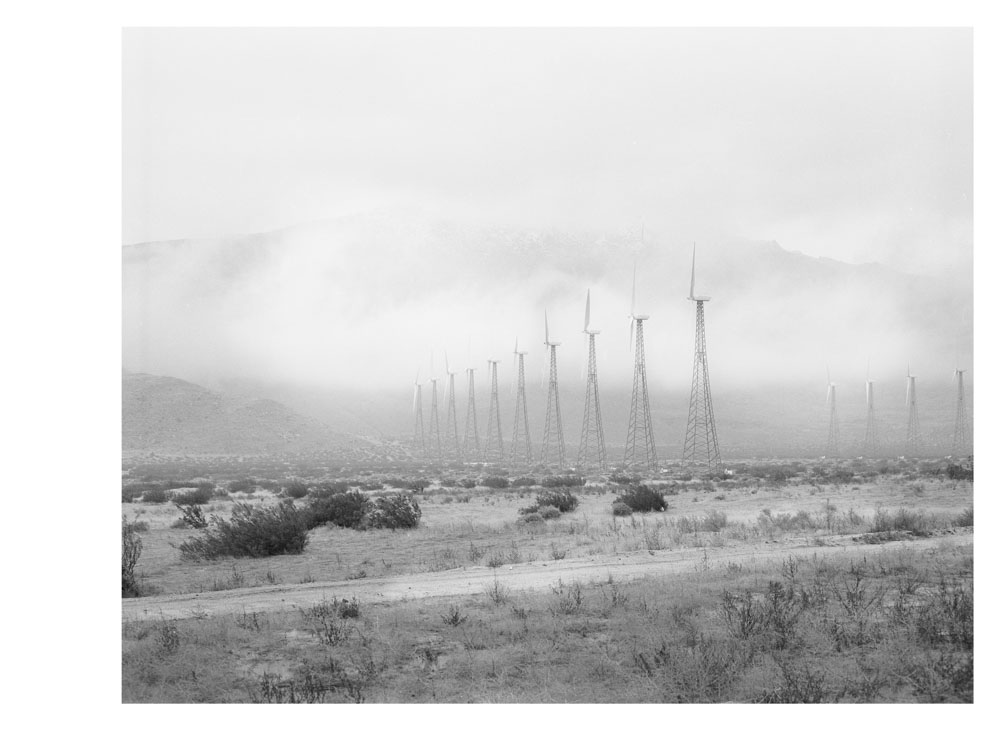
california
A paradox in polaroid’s death at the hands of digital, how the same mourners who decry the death of polaroid authenticity (and instant beauty) are also part of the same green generation that obsessively recycles & purchases only organic & lead apple to publicize the ‘ultra-greenness’ of their new line of laptops. Digital is a process with minimal environmental footprint compared to the toxic soup that is analog photography, wherein chemicals are poured untreated into domestic drains, and factories in dutch provincial towns churn out packets used only for a fraction of a second (and then discarded, gel leaking down to the side of a plastic bag and stinking up fingernails for hours). The photo lab you balance on your knees while watching 30 rock on thursday nights.

TBC if I want to keep these old layouts. they were pages to split up chapters.
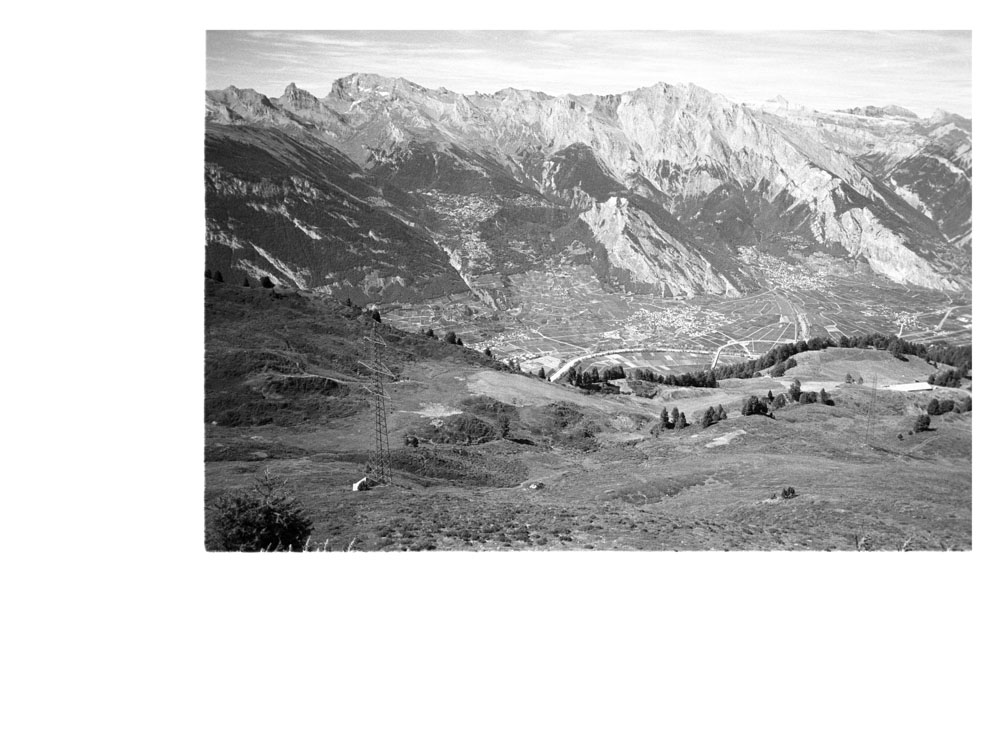
savoleyre, switzerland
The current, perhaps merely perceptual ubiquity of Anton Chekhov: a sign that we are all self-hating and envious. That we cure the sick but begrudge them their attentions, that we create but hate our creations, or are well-aware of how lowly they are viewed, how banal the thoughts or how self-absorbed the ruminations. For actors, the infinite scorn of Chekhov for both good and bad actors, the lacerating criticism of being only true in your deaths. As a doctor, his observation that the upper-classes suffer the same toothless old age and disgusting deaths ‘of market-women’. The consolations of literature being intellectual and more like ‘good advice’. In arch, high-literature there is more admonishment and cautionary terror than pats on the back from an aged Irish nanny.
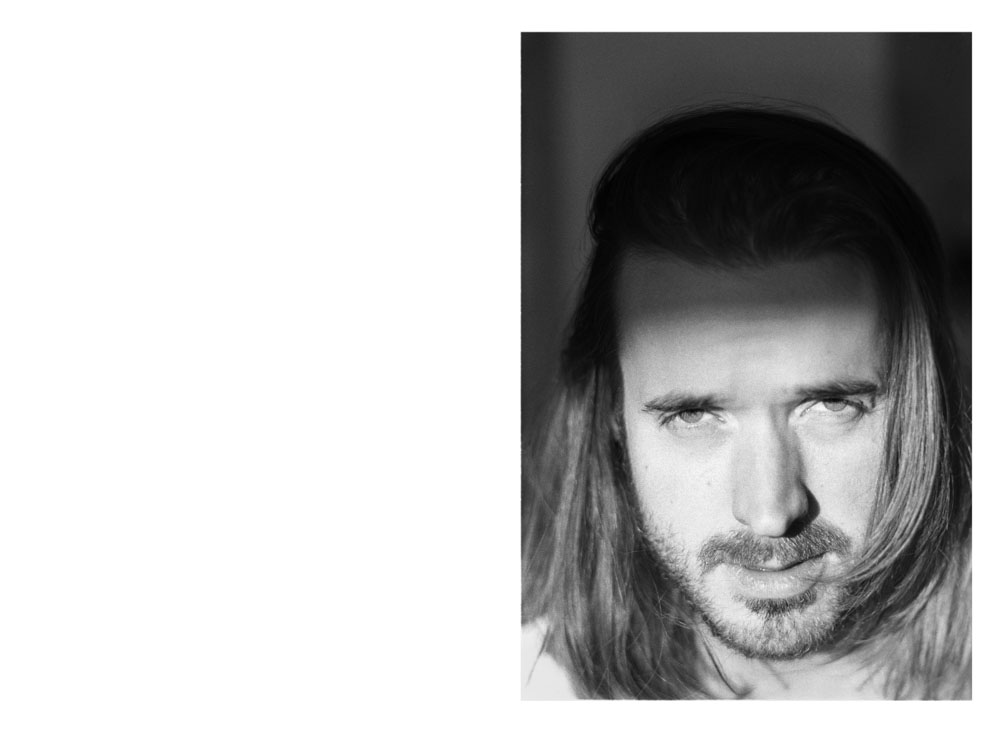
williamsville, cote d’ivoire
Herge & ligne claire as perfect modern style, whereby the M Kakutani obsession with limning finds its apogee in an expressive face built from three lines only, bolstered by context. A style suited to both belgian port towns and opera singers, to the surface of the moon and to forests. All lines the same width (and importance), a democracy of line, an aesthetic that extends even to plot: the plot, herge says, must also be straight-forward. Claire as clear, claire as straightforward (in the French-speaking world, but not at home).
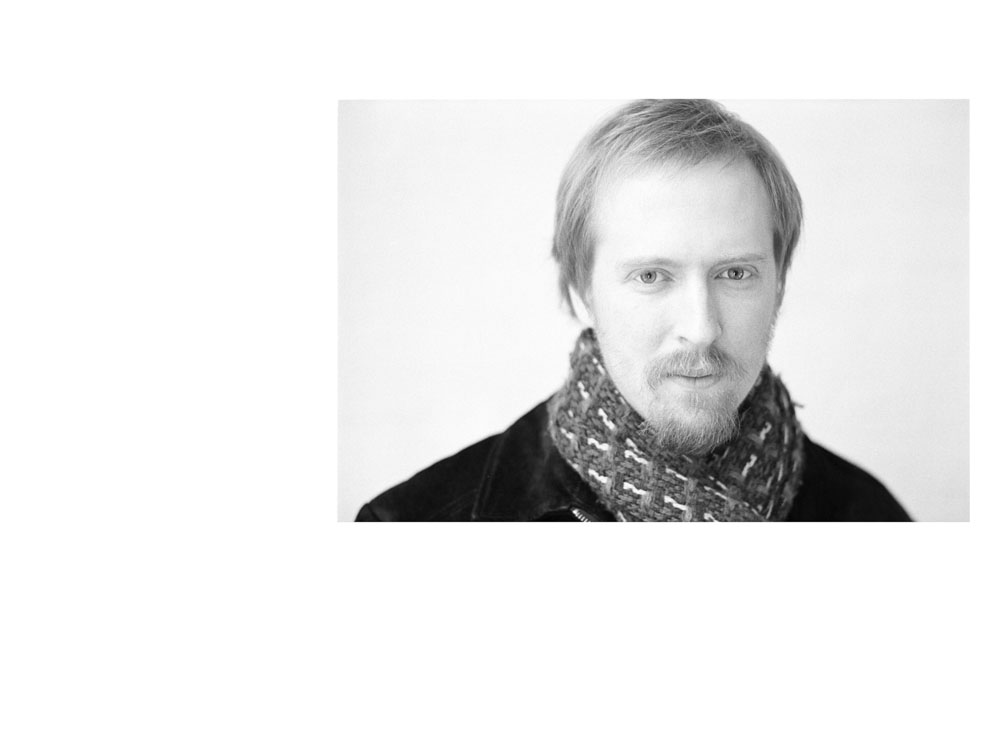
new york
Photography as a language everyone thinks they can speak: yet the importance of photography as varied and disputable as the relative value of its numerous forms, real/fake/constructed/documentary, but always taking from life. Furniture made from wood always holding the characteristics of wood despite being a chair or a bedframe or a door; and wood furniture best appreciated when this ‘woodness’ is maintained and supported. Photography, successful photography, always honors its origin in reality (whether the situation is fabricated/faked or not)
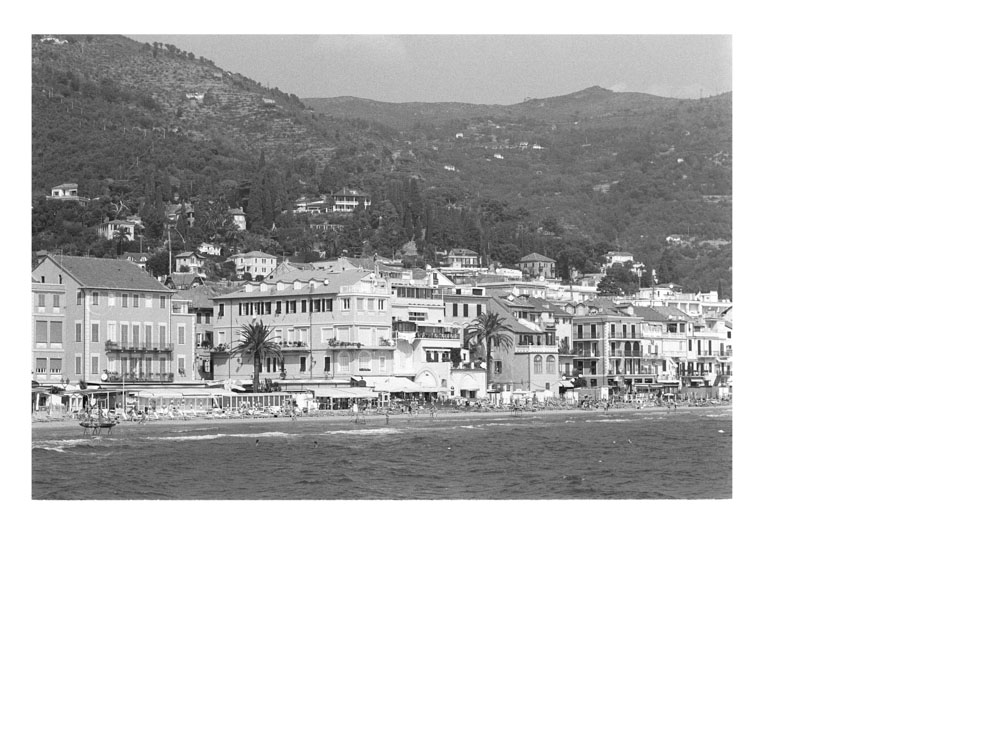
alassio, italy
...the Italian Riviera still feeling in many ways like the ‘Italian-Riviera’ of To Catch A Thief, neckerchiefs necessary, hair bryled and parted, salt drying into the elastic of a waistband during campari on the wharf. The elsewhere-mentioned active/neutral/passive mental gear-system, here set to glorious reception, to passive. (A girl with a dog appearing always lonely at the cafe and the nightclubs, beautiful with sun-kissed hair short and skin peeling, this girl appearing as possibility of another (romantic) life, when our relationship was so strained it snapped nightly, and who will last the test of time: this girl a potent memory, an insect who, in lying down to die in settling wood, emerges later as a shadow in rock (a fossil to hypothesize over).
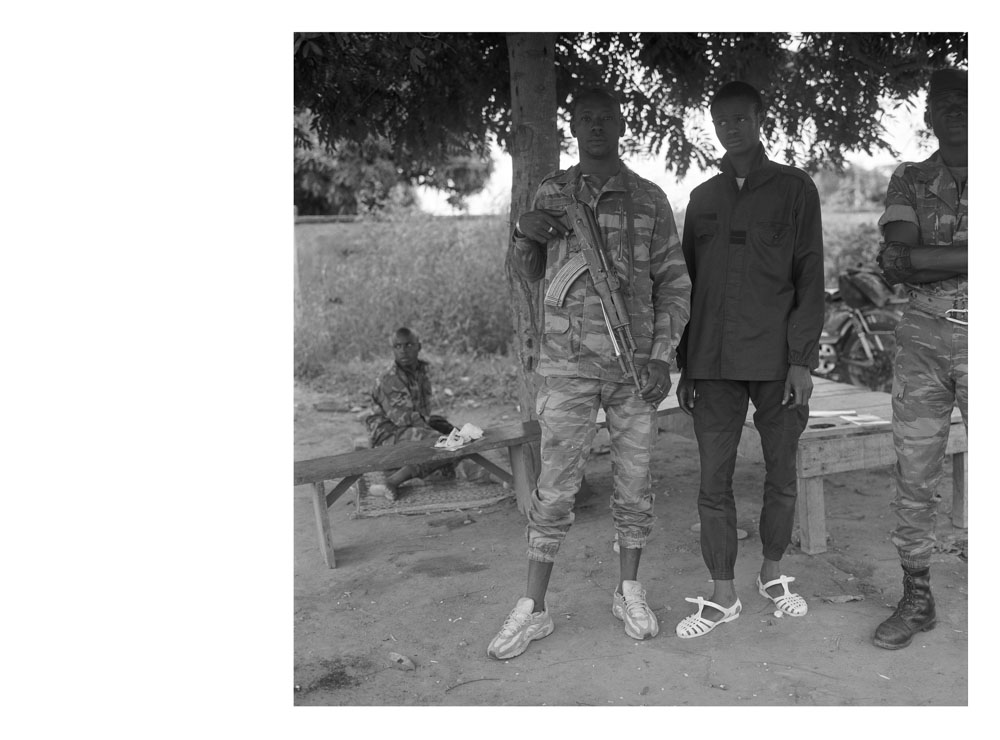
bouake, cote d’ivoire
Woken from their sleep beneath this tree. They were there to guard the home of a former leader of the force nouvelle, but as things in the north seemed stalled and quietly stablized, they did not pay much attention to us except when we wanted to take a record, at which point they jumped up (’jumping’ as relative term) and assumed a more militaristic position. >>> Force Nouvelle as official custodians of the north, and, in some way, successful at it, the slumber of Bouake indicative of a peaceable settling more than a pause between bloodshed (fingers crossed).
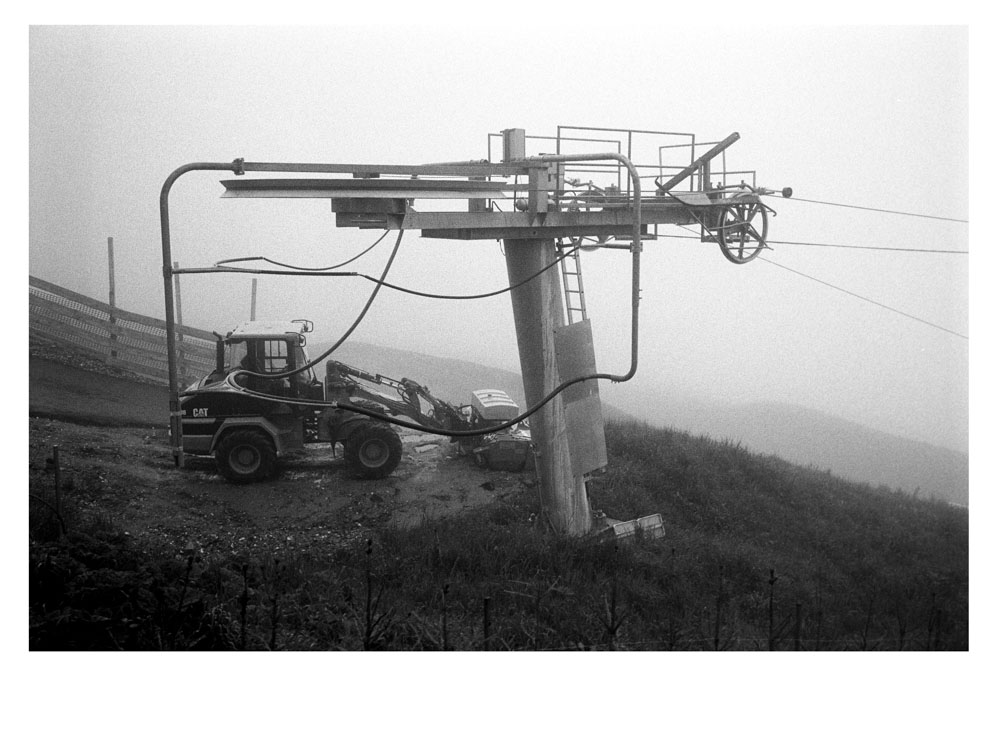
verbier, switzerland
Memory refocuses around the photograph. Whatever was photograph begins to dominant the other memories of the situation in which the photograph was made, and the mood and framing and all the various factors influencing the ‘tone’ of the image come to define that point in time. Barring mad circumstance, whoever is photographed at the party is remembered. Our experience of the D-Day landing has narrowed to that presented by Robert Capa’s few existing photographs. Even when lengthened and expanded and dramaticised in the manner of Spielberg’s grueling opening to Saving Private Ryan, the source material remains just these few photographs, and the varied and complicated truth of what it was actually like to be there is forgotten.
The notion of a’photographic memory’ as a particular ‘type’ of memory is false: all memory is photographic. Photography is the more perfect emulation of a working memory than any of the other so-called memorializing mediums. WG Sebald, prince of remembering, who sits in East Anglia exploring the post-war Europe of his mind, uses photographs as memory triggers, or, rather, he uses them to illustrate memory itself.
Memory as a fragmentary process, splitting time into sections more easy to organize. Photography making available the miniscule fractions-of-a-second we previously ignored (over which we hover with scalpel and notebooks open, ready).
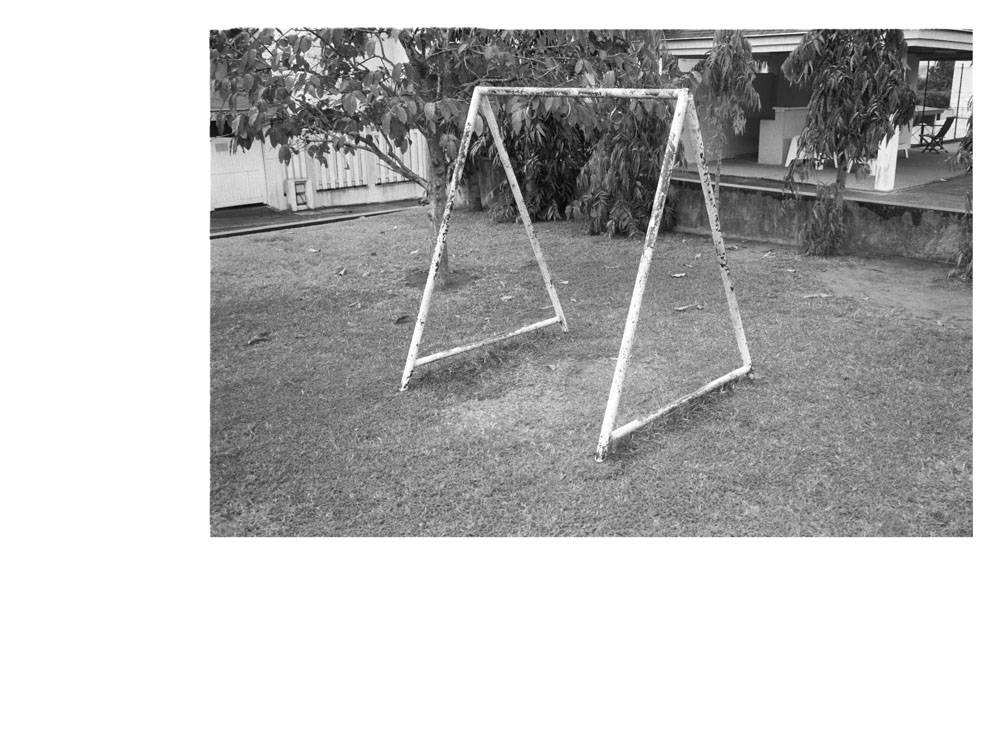
abidjan, cote d'ivoire
/// Repeated Text /// An error from the book, since it was done all on my own. Written, edited, laid out by me at an apartment on S5th street in williamsburg. I wrote a lot of it at the Rabbithole Restaurant on Bedford and S4th.
Nobody was waiting for this book. Nobody wanted it. And nobody really got it either. I sold a few through Dashwood Books and gave the rest away.
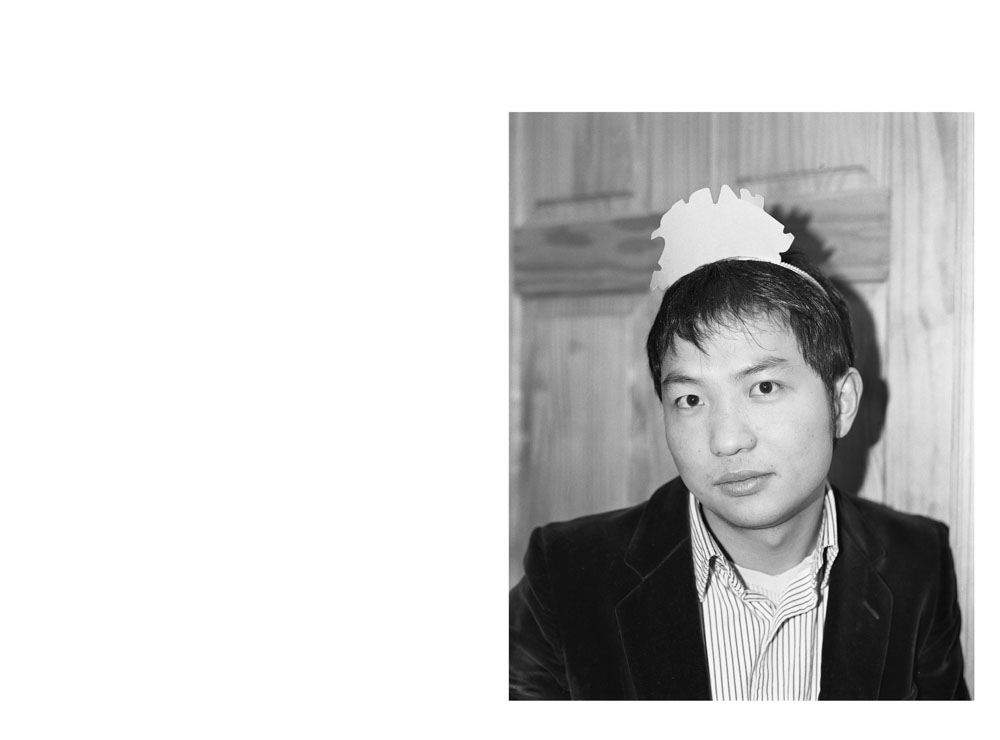
Liang New Year, New York, NY
Oh but the redemptive power of time and the measurements we fabricate. One day turns to another and we celebrate for one reason or another, thinking that everything will be different, (despite overwhelming proof - sun moving east to west - that everything will sort-of stay the same: tracks well-worn, wheels low-gouged in the rut; but, worse still, we do not have memory).
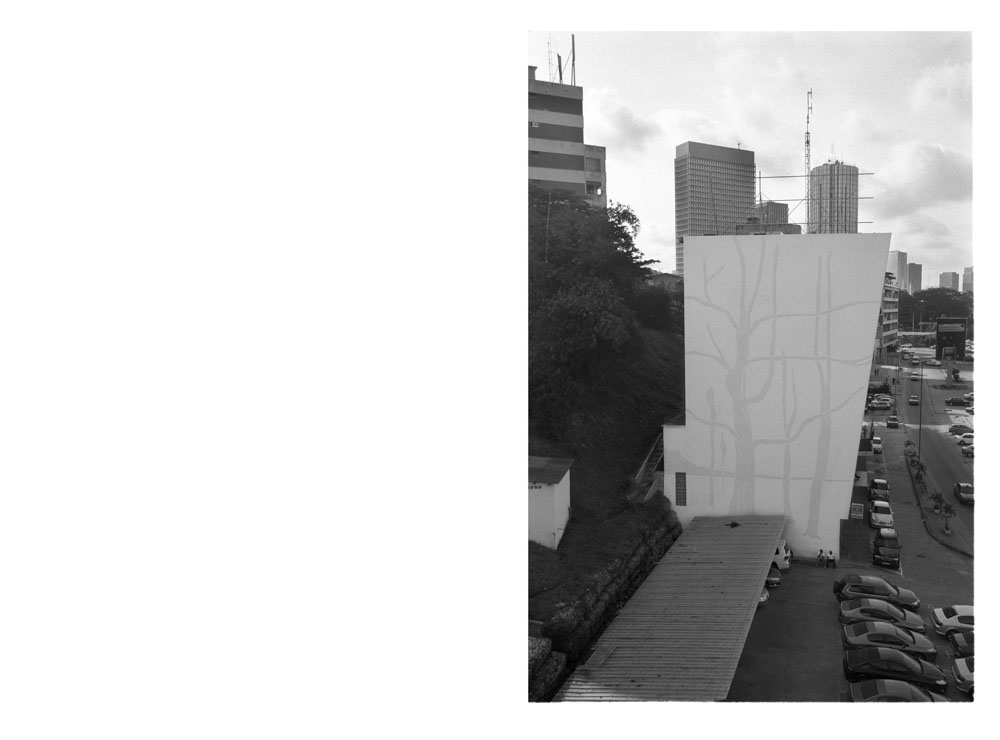
plateau, abidjan
Taken from the deck of the sofitel facing toward the business district. C d’I as a place that has gotten worse: there is a misconception (common to some privileged people raised in the 80’s 90’s in England & US) that everything is always getting better: crime rates are dropping, transport improving, technology getting cheaper every month, the danger is not entropy but the pandemic malaise when everything is excellent (diagnosed as depression or O. James’ affluenza), when there is no friction in the world and it is possible to fall or rise through life as if through air. Abidjan as a place that experienced a massive economic boom into the 80’s (Abidjan as the biggest port in West Africa, and cocoa), then suffered a degradation of infrastructure & standard of living caused by the classic errors of corruption, political in-fighting, war, and waning investment. Riots & attacks, and now the alleged stockpiling of weapons all around the city (to arm youth militias, they say). The Hotel Ivoire, a sprawling hotel opened in the early sixties on the Abidjan lagoon, boasts an ice-skating rink, bowling alleys, casino etc, and a massive, multi-tiered swimming pool that spreads over several acres, criss-crossed by bridges, but which now sits dry and empty, weeds cracking through the tiles (hallways scuffed, a vague unease, shouts heard through walls worn thin, a terrible exchange rate at the concierge (we photographed a wedding party as they moved along the terrace, the women all smiles, the men characteristically gruff).
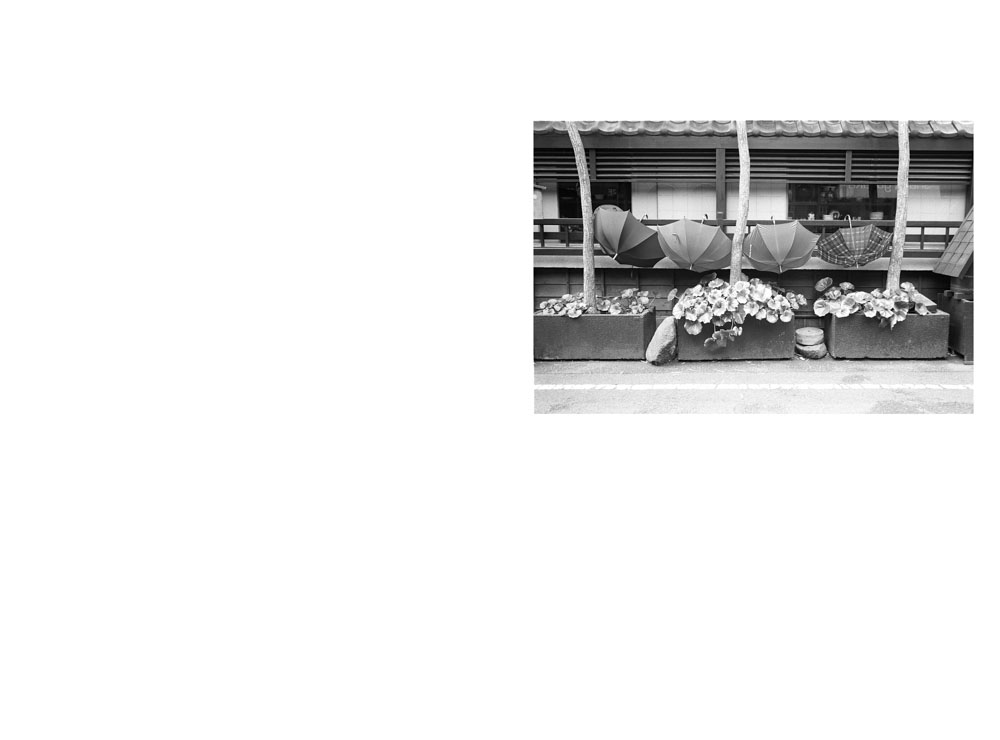
Tokyo, Japan
An article read recently about the current impact of the economic crisis in Japan, where the economy, still not completely recovered from the lost decade, has been plunged into what officials predict will be a ‘severe and protracted depression’: though the overall crime rate has been falling for the last five years from an already globally-minimal rate, police have recently been focused on a new threat: elderly pensioners caught for petty-theft. On one occasion the police were called to a small grocery store in Sapporo to arrest a seventy-one year old man, and found $7500 in cash in his pocket. He protested that he ‘preferred’ not to spend money on groceries.
Japan has the oldest population on record, this is no surprise to anyone anymore, and the elders of Japan were recently featured in the now-more-populist National Geographic’s issue on Longevity and the secret of living longer. The article focused on the island of Okinawa (along with Sardinia and Loma Linda in California), and found that a mix of social integration (preferably inter-generational), daily exercise and a sense of usefulness contribute to this longevity. Japan, however, is changing, as it has always been changing since Admiral Perry sailed into Tokyo Bay with flanks turned shoreward and cannon-flaps raised, and elders are isolated in the Japanese cities in the same way that they are abroad. Here too you see the old woman at midnight in the grocery store, buying four quarts of ice cream, cat food and a frozen waffles. Japan is resilient to change, the dominant (or previously dominant) aesthetic being ‘wabi-sabi’, roughly translated as living alone in nature, or apart from society, and in an austere manner. More of a world-view than an aesthetic, combining both a visual jargon and a particular ethic, it is based on a theory of living with transience, of accepting the shifting nature of life, the world, etc. Rather than suffering the movement toward 100% entropy which forms so much of Western thought, wabi-sabi integrates the natural process of change, elevating the melancholy of loss to a more spiritual state of “acceptance”. A typical Wabi-Sabi object a bowl will not be obsessively symmetrical, made from rough materials, and will react to use: become chipped and scratched, stained by tea or handling. Interestingly and appropriately, wabi-sabi is often used in conjunction with web development, especially web 2.0 user-created and open-source applications, that are often simple frameworks evolving over time from one state of useful imperfection to another more complicated yet no less subtly flawed ubiquity. Wikipedia.
Objects and cultures formed in consideration of Wabi-Sabi allowing and in fact finding strength in adaptation.
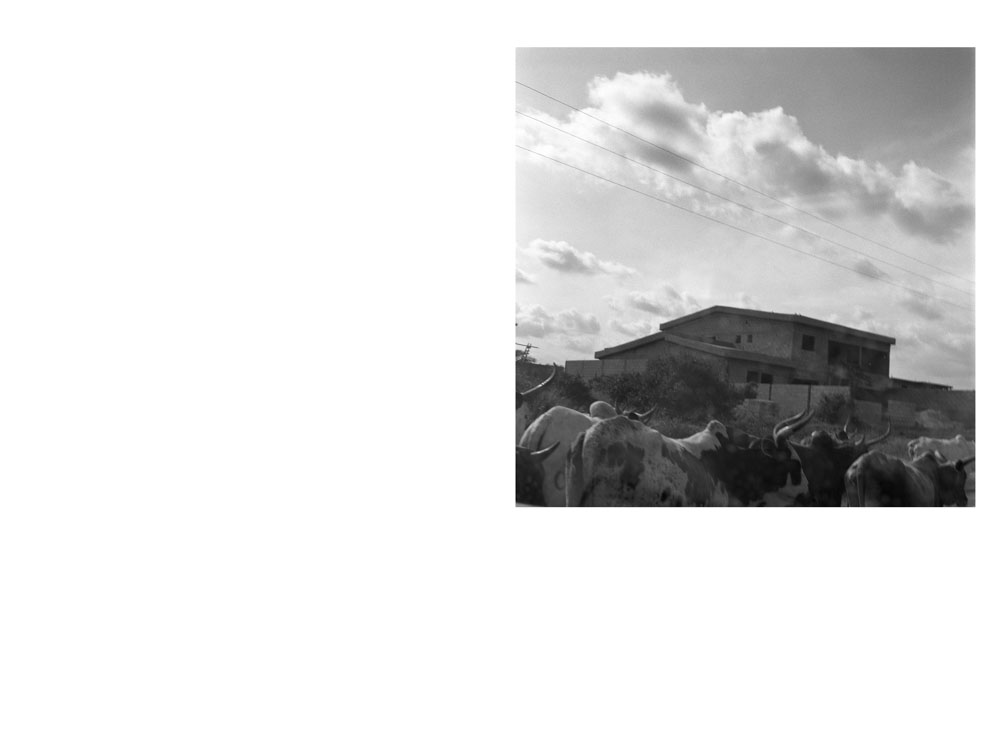
bingerville, abidjan
Every Saturday: a run in the countryside, upwards of eight kilometers through banana plantations and rural villages, dusty fields and half-built state housing: a group of one hundred ex-pats, predominantly white, jogging with western zeal past benches set outside shacks in the dirt, the villagers calling out and children running along side. The route of the H, indicated by dropped clouds of confetti (starry on red dirt), up hills, down through glades, flanked by thorn bushes and low branches that cut and scrape. Two thirds of the way, a rest-stop: a cluster of huts, smoke from smoldering fires, the trees dark in the early evening, the sun long across the ground and beaming the dust. The Ivoirian organizers pull up in a pickup and unload their black barrel filled with single sachets of water (a barrel of filtered jellyfish), and an ice-chest filled with Flag beer & orange soda.
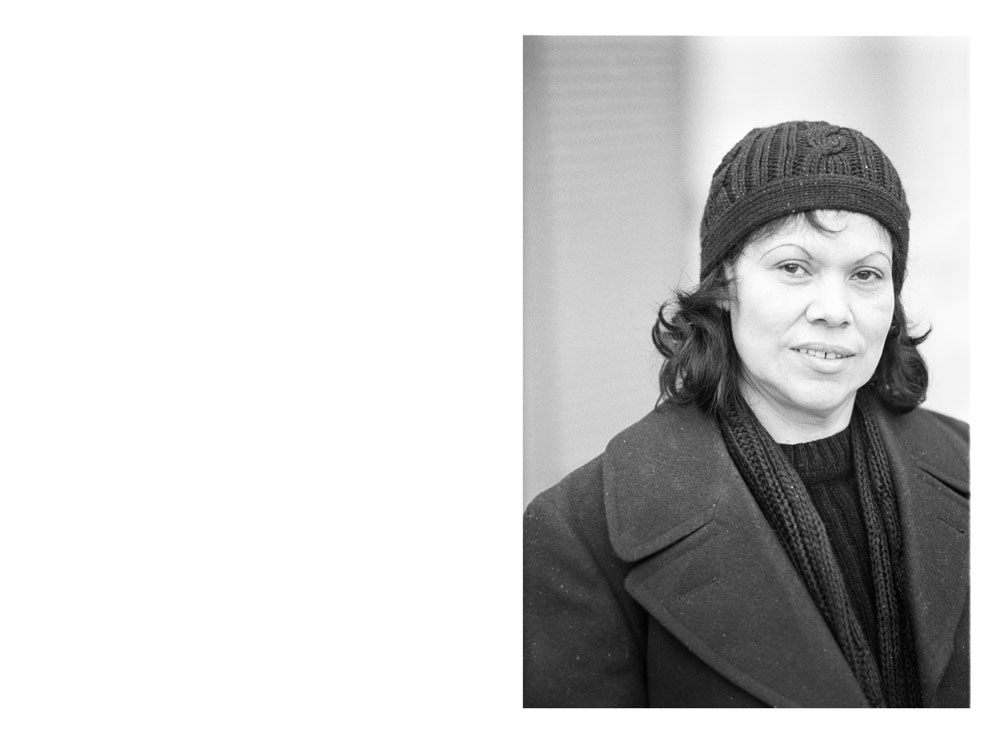
las vegas, nv
Lateness as a terrible trait, but justified in some way by the thought that lateness is never anticipated, so it is new time freed up from the schedule: by being late you are in fact giving people a gift of unassigned time, be it five minutes or half an hour. If people carry books around then you have just given them a good bit of time to read some more, or, if not, then they can do some basic observation for a while (something few people do anymore, observation being, as elsewhere-mentioned, unproductive and thus expensive as per opportunity cost).
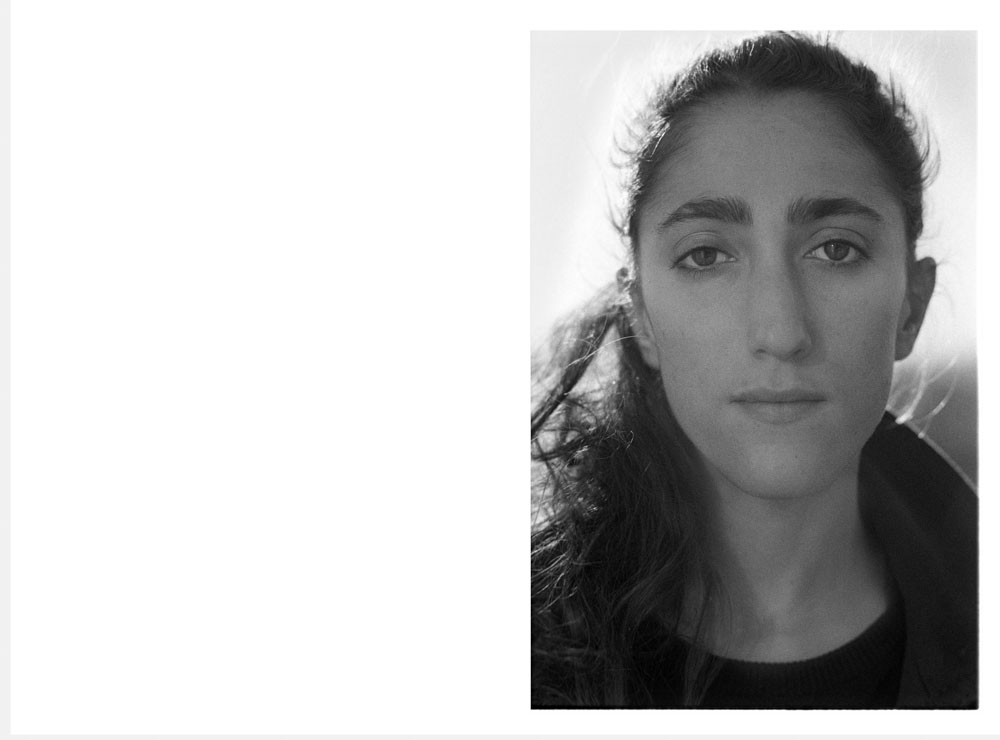
los angeles, ca
An idea for a project on the state of Missouri, that started out as the vaguest of all ideas, hatched from a joke, a pun (a grandfather’s pun some would say). But the funny thing about planning something, or just thinking about something new, is how the ear opens up to the new vocabulary and hears misery everywhere, we hear ghost houses, celebrationland, c. langan, k. city.

BREAK
SECTION D
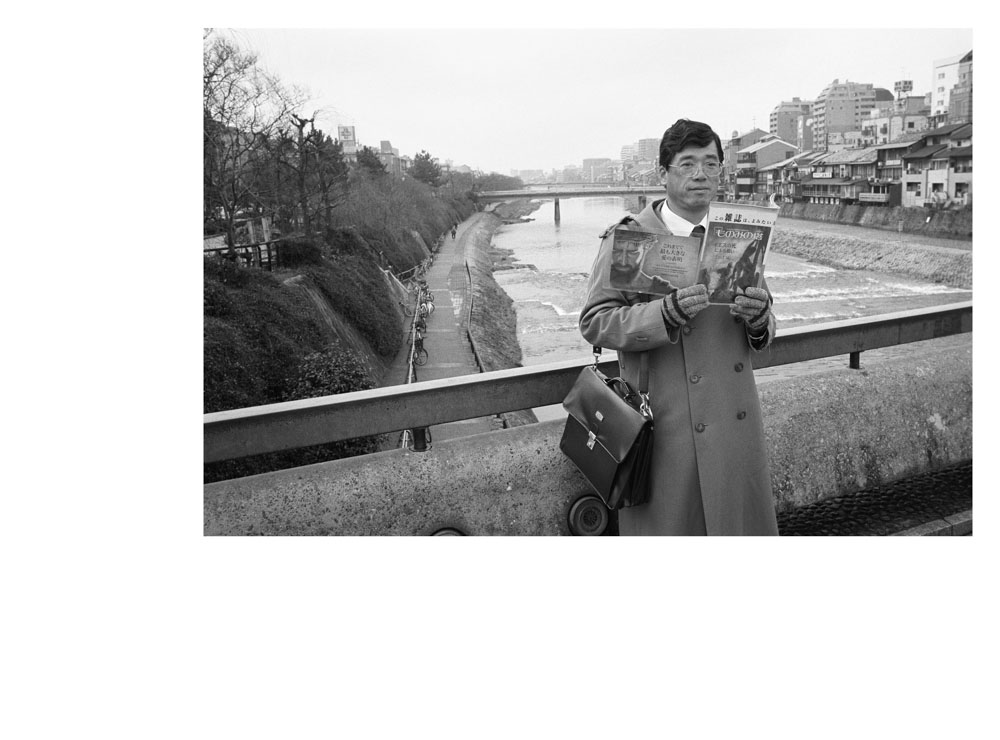
kyoto, japan
A note on defense mechanisms: the holding to an ideal that many criticize, which may in fact do more harm to the holder than good. Everyone has a defense mechanism, may it be a passing of blame/responsibility on to a higher (and absconded) power, verbal diarrhea, alcohol, early-morning sprints, obsessive Tivo recording and viewing, political fundamentalism, sexual openness, constant negation of even a single universal truth in the guise of liberalism, video-game completism, fidelity despite lack of passion, passion despite lack of love, nostalgia, facebook-stalking, travel as revenge for being kept on hold (credit P. Theroux), foreign lands as the repository of your future success, or over-work, and a whole host of others.
These defense-mechanisms develop over time. In youth the world is unknown and all the strange things that make no sense are unknown (they just don’t factor in). The idea of a world is that it is large and multiple and gatherable in the way that the media gathers it, organizes it, and presents it back to you (elsewhere there is the argument for (or against) the alternative reality of photography and television). When this idea fractures, the ambiguities of the world start to move in, and complicate things. First off, time speeds up (the wave elsewhere-mentioned), and this sense of time suggests that perhaps (because there isn’t enough time to figure everything out), there is wisdom in pulling up the drawbridge, and settling the castle for the night: there is wisdom in shutting yourself off from this everything. Defense-mechanisms, in all their weird guises, are reactions to the recurrent oddness of complicated (& real) reality, to the inability of the mind to quite fathom the difference between the real world and the more simple world ‘pictured’.
Black and white photography: kind of defense mechanism, a simplifying format that in latter days was necessity but which, in our digitally more colorful (color-filled) times, is an option: a loaded aesthetic choice. Black and white both more epic and more simple.
Sidenote: some people think color, along with instant color film, was invented in the 50’s, and everything color that exists from before that time, all the real objects like furniture and books and paintings and buildings, suddenly realized their colors in the middle of the twentieth century, just as infant self-awareness develops at the age of two.
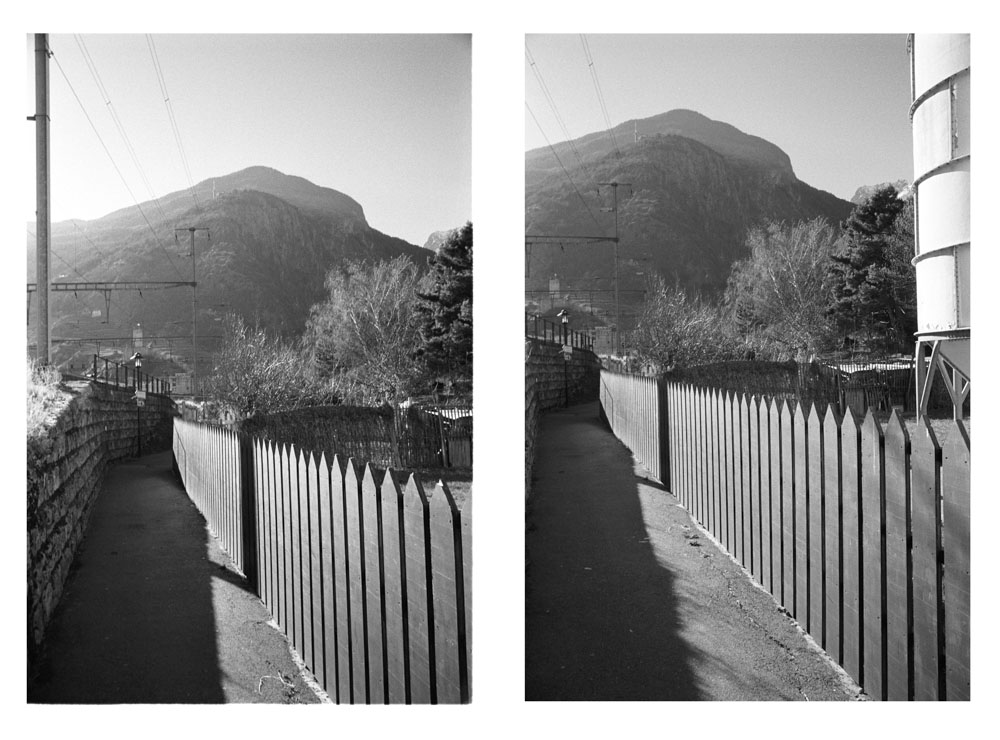
martigny, switzerland (double)
In closed conversations with a close & long-term partner there are always small phrases & references that go unrecognized to outsiders. This is not the same thing as an inside-joke, but a linguistic thing similar to the synching of room-mates’ menstrual cycles.
‘Antonioni Walk-About’ refers to a phenomenon in Antonioni’s movies, now also seen in many low-budget independent movies (Wendy & Lucy being one long Ant. W.About). In an A.W’A, the main character enters a new environment, typically one characterized by alienating architecture and deep depersonalization, and has a long reflecting moment while strolling absent-mindedly (though absent-minded in the ABSENT sense, not the lackadaisical sense, as if in gray despair). Notable examples from Antonioni’s movies >>>>>>>>>>>>> l’eclisse: the encounter among the flag-poles after the big poodle joins the feral pack, lines of the flags cracking against the posts in the wind, high wide angle shot of MV standing before them - rapt >>>>>>>>>>>> l’avventura: walking through Messina, Sandro comes upon an artist drawing a church, and, swinging his medallion. spills ink across the picture >>>>>>>>>>> blow-up, of course, the most obvious example, the legendary scene in which DH follows VR across the park and photographs her struggling with a soon-dead man, the only sound the waving of trees in wind.
The power of the A.W’A is in its forced meditation. Speedy cuts, dialogue and the rapid fire of language are tossed away in favor of a walking pace, the filmmaker forcing our close observation with his camera. Photography brings A.W’A to real life.
Behind the Martigny train station while waiting for a train carrying a passenger from Milan, a walk under the tracks through the tunnel, and, discovered, a quiet path, through factory yards and a school, all silent on the weekend. And above the scene, the mountains (or the next-to-mountain) photographed years before on a similar occasion, MM leaving for Geneva in November, the log train in the foreground.
Other A.W’A’s shared with the partner mentioned at the opening: Montreal summertime with the pavilion on top of Mont Royal, the surreal wind and the open ballroom, a visitor buying candy from a vending machine a short ways away. The walk along the dunes in Corsica to the beach that smelled of sulfur, and the interminable return among wasps.
Or in Cd’I, with Drissa ambling behind the hotel in Bouake, to the squatter’s home and the bombed swimming pool (elsewhere mentioned & photographed).
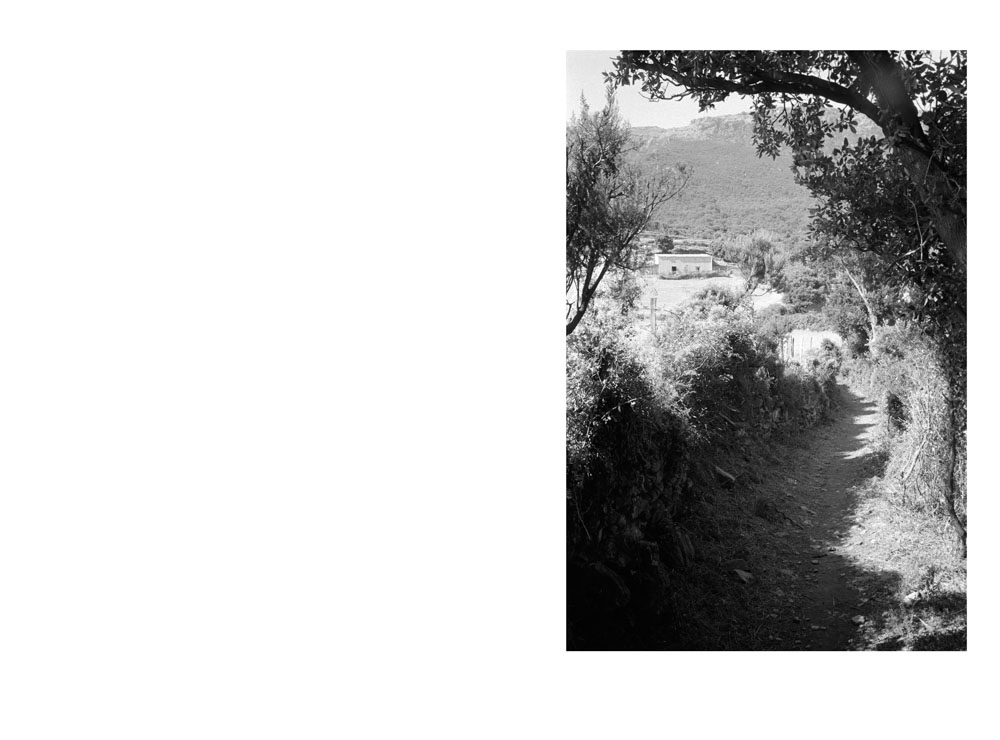
sisco, corsica
From the maison casanova, a 30 minute run up the d32 and into the mountains.
- right out of the gate, the road will connect with the road from Sisco and Balba, follow this a quarter mile until the first turn off (indicated by a signpost with 2 arrows). The road grows quiet as the trees close in, follow the road over a stone bridge, then onward, until you see what looks like a private residence up ahead. This is not somebody’s house, but a very tight clustering of separate houses, so take the central path (the regular square paving-stones), and bound up the stairs. You will emerge above the houses and on a path with a field in front of you and to the right, and a drop to your left (the tops of trees below). Follow the path down to the left (the field was closed off by a gate), and take care on the rocks (they grow wider) and then there’s a dirt arch and a stream running underneath. The path widens, dominant color pallete brown/green. This is the corridor described in personal recordings as the Ringwraith corridor, since, in some way, it looks like the road along which the other hobbits first encounter the ring-wraiths in the fellowship of the ring: dark, gloomy, cobbled, the hint of an unseen presence, trees arching inward, and the camera retreat and focal adjustment (popularized by Vertigo) here simulated by a running-forward (and the one-two-three/inhale breathing pattern of waltz time for diegetic terror). Then a full hurdle over a muddy ditch and up, to the sunburnt field behind the barbed-wire fence, the path narrowing and bending like a luge track, filling with rock and mud such that you are on the balls of your feet, running in the recommended fashion under sniper-fire. Past the field the track starts to rise, refuse from failed construction underfoot, tiles cracking, white paint smearing the path, an always-leaking faucet in a cabin wall, then up, to the abandoned convent and the family living in the tower.......
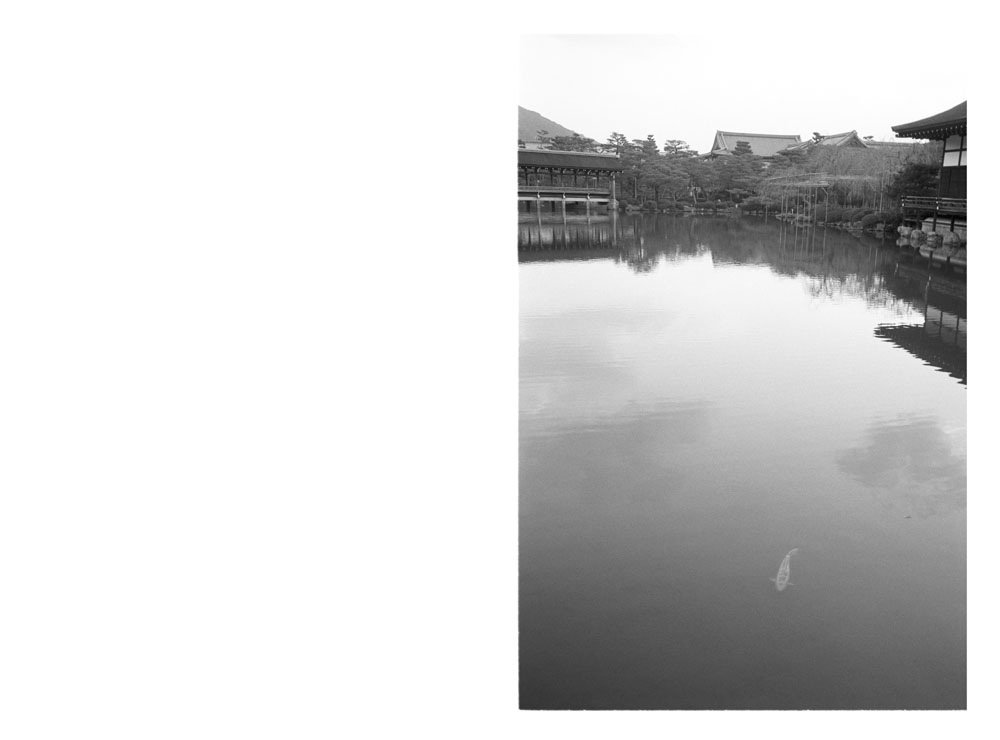
koi fish in heian-jingu shrine, kyoto, japan
There is a species of koi fish (domesticated, ornamental carp) known as the jinmengyo koi, which has a humaoid face: please http://www.youtube.com/watch?v=TVgxyUUlbL8
For casual pedestrian observers who know little of japanese culture except that gleaned from movies, books, music, video games, comic-books etcetera, see a deep fascination with what can be summarized as: the clash between nature and technology. Japan, forced open like an ocean clam by the elsewhere mentioned Admiral Perry, modernized quickly, perhaps too quickly for the average mid-C20th Americans & Chinese, and was punished fiercely for its precocity: cutting-edge technologies were ‘street-tested’ in Hiroshima & Nagasaki - the most horrifying application of theoretical science in history. Post-war Japanese government policies sped economic redevelopment, though with significant help & advice from the Supreme Commander of The Allied Powers in Japan, General Douglas MacArthur. Later financial support during the Korean war furthered this so-called ‘indebtedness’ and deepened the schism between ‘Modern Japan’, in which collaboration with the world was actively promoted, and ‘True Japan’, which is the resting expression of Japan, a mix of archetypal honor-systems, shinto-religious influence, and the solidarity of living in nature which makes up the wabi-sabi system. Thus the massive success of the Studio Ghibli movies, of Final Fantasy, of Mario, of Godzilla as a freakish monster awoken by an atom bomb climbing from the sea (Admiral Perry) to destroy the city - attacking, of course, the skyscrapers first.
Super Mario of course is a mix of all these concepts, and if you really want to read into the series, you can see Mario - an Italian plumber - as a symbol of some bizarre hope that the foreigners (in this case Berlusconi?) will return to kill off Bowzer/Godzilla. There is again the recurrent use of nature to triumph technology, in this case the red and white mushroom and fire-flower, ingested to aid in the battle against the cannons and fireballs, waged underground in sewers, and in creepy, creepy castles. We can take this further. The super mario mushroom, with a white stalk and large red head speckled with white, is the fly agaric mushroom. Commonly poisonous, it is also known for its hallucinogenic properties, arising from the its main psychoactive constituent muscimol. Though muscimol would not necessarily make its consumer feel larger than life, or even just larger. There are no structured hallucinations. Instead: a lucid dream state, whereby life is narrowed to a forward trajectory: perhaps along a rightward vector, just perhaps. With occasional aggressions and digressions from one castle to the next.
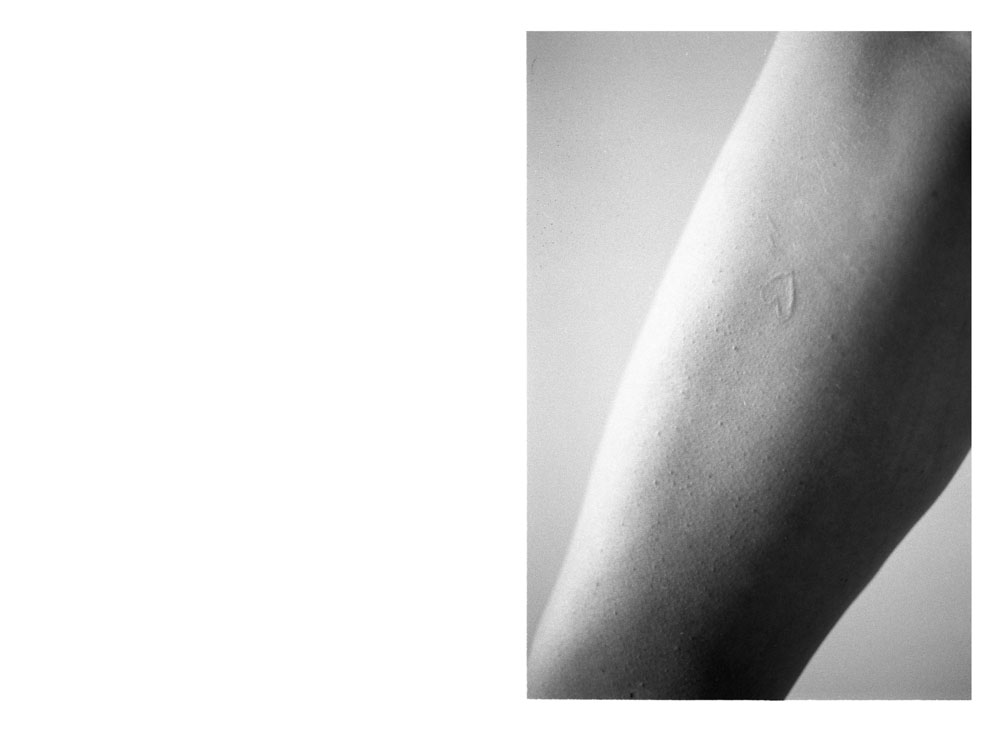
new york
Of the many treatments against acne, the most popular and effective is Roaccutane, also known as Accutane. By fiddling with DNA transcription, the active ingredient in Roaccutane (Isotretinoin) reduces the excretion of sebaceous glands: the skin experiences a ‘drying out’, also an adverse affect on keratinization, dissuading yellowy/black plugs from forming in the pores. The real world effect is (theoretically) reduced acne, raised self-esteem, and a strange life side-track into actually, personally advertising products and clothes and lifestyles for near on a decade. It is a useful quick-acting solution for outbreaks, and model-agents keep a cardboard box of the silver blister packs in storage closets and in desk drawers.
A rash of lawsuits in the late 90’s and early 00’s suggested a possible link between roaccutane and depression, otherwise described as ‘clinical’ depression, suicide, suicidal ideation, etc. The clinical studies are not exactly conclusive, there has been no proof of a causal relationship: one suspects that in many cases the very fact of having bad acne on a level requiring pharmaceutical treatment is enough cause for depression. Also, the time in most people’s lives when they battle with acne is usually a time of great personal/physical/social upheaval, the early-to-mid teens, and depression and adolescence go hand-in-hand. And, to repeat, for most people acne is a cause of depression in-and-of itself, and to have any relief has the immediate effect of raising self-esteem.
Regardless, being 14-18 is turbulence enough without the addition of even an ‘arguably’ psycho-active drug, and there are a host of variables tipping up and down in waves of uncertainty, promoting all sorts of emotional collapses. The literature analyzing, memorializing, and dramatizing the teenage years is long and extensive, there is no need to reiterate the maelstrom. But each person’s chaos is distinct, and impossible to explain fully to someone else, much in the same way that the telling of a dream is of interest only to the dreamer.
Self-mutiliation as a past-time or proof of a deep feeling grew to pandemic proportions in London in the mid-nineties, and has its own culture best explained and summed up in the story of R Edwards. The original guitarist and lyricist for Welsh rockband The Manic Street Preachers, Edwards was known for his intellectual and politically aggressive lyrics ( ‘Hitler reprised in the worm of your soul’, ‘if man makes death then death makes man’), and disappeared in 1995, his Vauxhall Cavalier abandoned by the Severn Bridge (a notorious suicide location). There are reports of Edwards living the life of a mendicant in Goa, or of being seen traveling across China, all stories that describe the typical journey of British student on his gap-year, but the reality is that he probably just jumped from the bridge. He battled with depression most of his life, chronicling his struggle and disaffection in songs on The Holy Bible (‘life is lead weights’, ‘I wanted to rub the human face in it’s own vomit, and force it to look in the mirror’), and was intensely insecure and demonstrative. The most notorious incident of Edwards’ life (aside from the supposed suicide), and the symbolic center of the self-mutilation pandemic of years later, came back-stage at the Norwich Arts Center in 1991, when the NME journalist Steve Lamacq questioned the authenticity of the band’s values (suggesting the above-mentioned naive political posturing). In response, Edwards, with a razor blade, carved ‘4-REAL’ into his forearm.
Sidenote: Edwards loved the poetry of P Larkin, whose Vers de Societe has the telling lines: ‘sitting by a lamp more often brings / not peace, but other things. / Beyond the light stand failure and remorse,’ though this of course is about the sadness of spending all your time alone at home in a nice chair with a good book (& guiltily enjoying it).
4-Real imitated by dreamy youngsters with heads filled with Keats (’love is my religion’, ‘i have been half in love with easeful Death’), a first girlfriend in silver underwear with ‘thin’ written in scabs across the left thigh, words seen only in dim light from a sulfurous street-lamp while we lay in a suburban living room, (’the gas breathes, the trees are darkly swayed’, Larkin would say). Words inch-high on the forearm, letters cut with a cheese knife, the curved point doubly-useful, found in a father’s kitchen, stolen and hidden behind the wicker cover of a bathroom heater. The dried blood lasted for three/four years and then the knife was thrown out.
Keys dragged hard several times across the leg in the bathroom of the Garage in Kentish Town, at the Mogwai concert where FG and I raided the stage and stole a delay pedal. Days later we tried in vain to replicate the echo of Helicon 1 (a song that would be the soundtrack for that morning after LCB & I lost something together behind the bathroom in Hyde Park, early summer 1997... we separated by the road soon after, but I remember being alone in the earliest earliest dawn, when the night was wallpapered pink, and clouds lay flat and still (as if etherized upon the table) - walking across the riding path home, jacket muddy from our lying in the bush and the rain). The night when TF and I blacked out. He: dressed as an Intel computer. And we came to ourselves hours later with hands gripped around glasses of malibu pineapple on a balcony in the winter, on a london morning, thin cables of blood leading from heart to arm. The point, I told the councilor at school, was physical proof of a mental pain, but nothing more came of it.
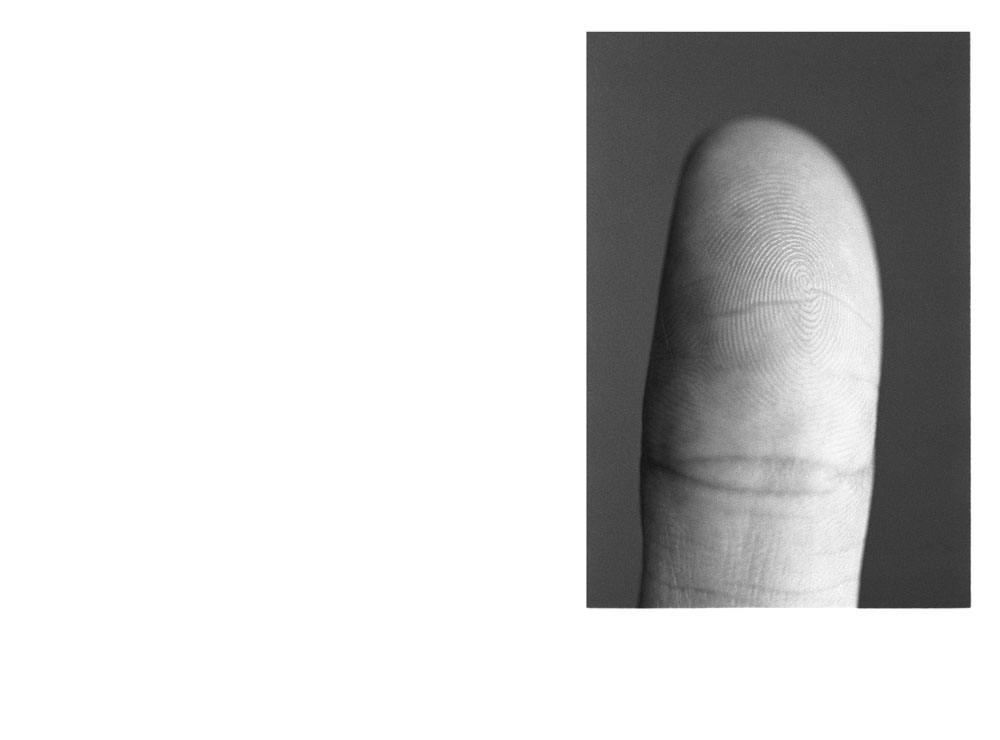
new york
The raised peeks of a fingerprint that creates the distinctive whorls, loops and arcs of the ‘print’ are called ‘friction ridges’.
Secretions held in the valleys between each ridge are the oils left behind in a dustable fingerprint, so what is left is actually a ‘negative’ version of the fingerprint. While the print made at a police station by fingers stained with ink are left by the high ridges themselves, and thus positive.
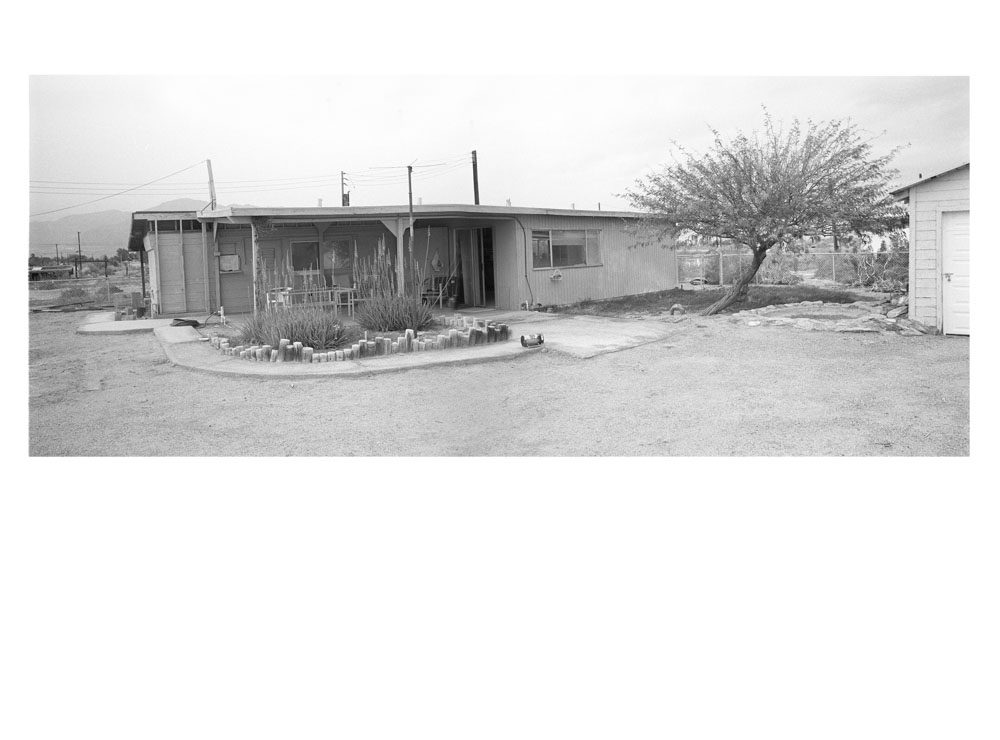
salton city, ca
S. Sea as another place that is not getting any better any time soon (housing prices dropping catastrophically once more, the original housing boom stymied by salt, the second by the housing crash). A. S. living in his brother’s home while the brother’s on an oil rig (AS leaning out the window, beer in hand & catcalling; he doesn’t have a problem with meth ‘if you can afford it’). The next-door neighbor’s house a burnt wreck: squatters were there for a while, ‘doing drugs’. They set a fire, intentionally: they set a bed alight. It burned for a few hours until firemen arrived and pumped water through the windows.
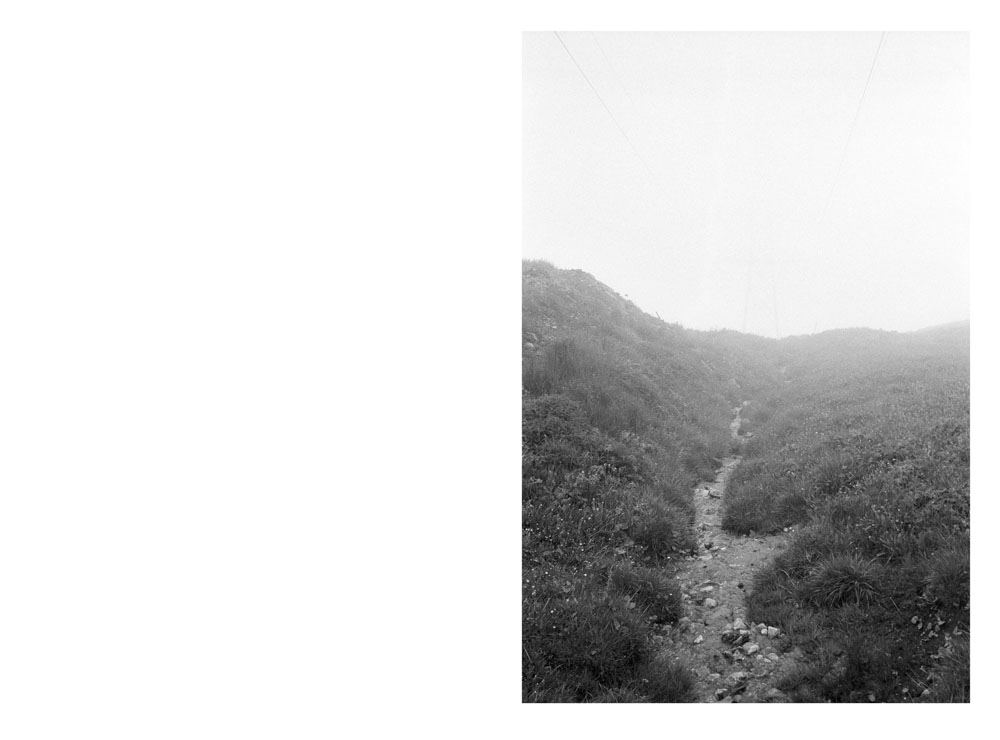
verbier, switzerland
The changes we believed in: fundamental changes akin to fault-line shifts to break our trust in the solidity of the ground. A movement from perhaps to yes. Though it seems instead that we moved from ‘perhaps-meaning-no’ to ‘perhaps-meaning-maybe’; the uncertainty deepened, in the same way as a bottomless pit implies a fall that will go on forever, never punctuated by death, but which still represents death in a different way: the death of not knowing what’s down there, of forever-falling.
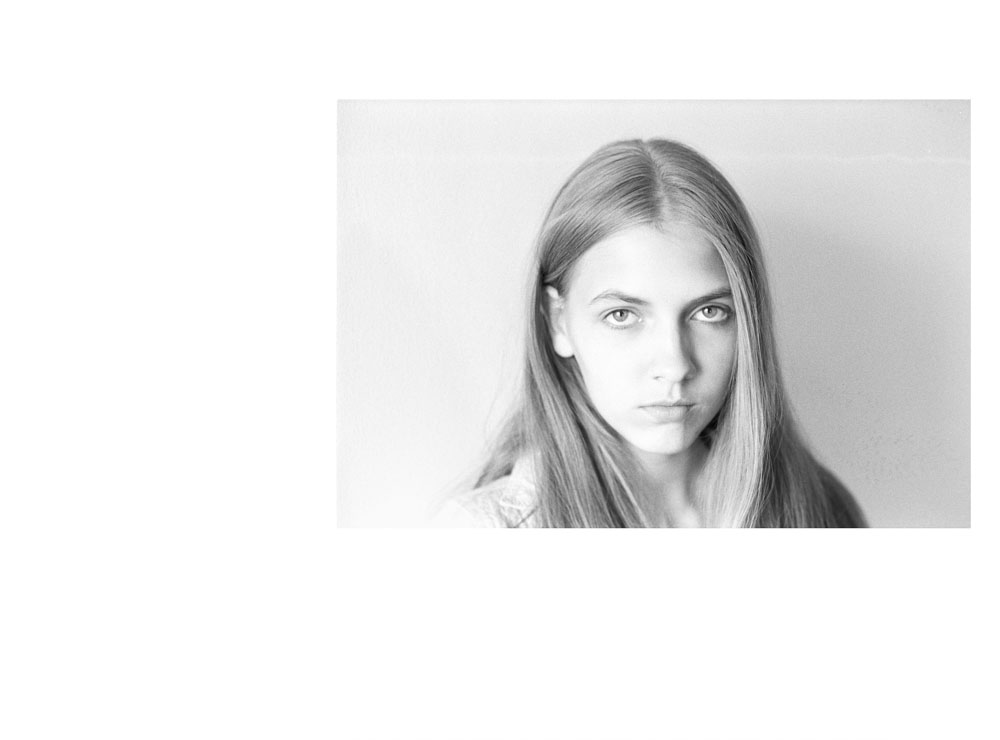
new york
In the dispute between art as something traded between artists, and art as something produced by artists and consumed by non-artists (we see temporal fluctuations in favor of either), there is the issue of good portraiture beautifying versus good portraiture as a realistic representation.
Of course nobody is that great looking, some people are more ‘photogenic’ and lend themselves better to the flattening effect of the camera. Everyone should indeed look like themselves, which is the essence of good style: to take the little you are given and maximize. The better portraits are of the person being photographed. And, conversely, there can be portraits so subjective that they are really only portraits of the photographer himself anyway.
Avedon was a proponent of this second theory, and has been quoted as saying that portrait photographers merely photograph other people in order to complete their pictures. He said ‘the (imagined) subject, which in a sense is me, must be discovered in someone else... (someone else who is) willing to take part in a fiction he cannot possibly know about.’
The photographer will, if he makes photographs of people, inevitably suffer the critical assessment of having taken an ‘ugly photograph’ of someone. There are ugly pictures, and there are real pictures. And there are beautiful pictures and fake pictures. Photography, despite its status as an ‘art from life’ is not subjective, and life is not that beautiful.
It is, however, real.
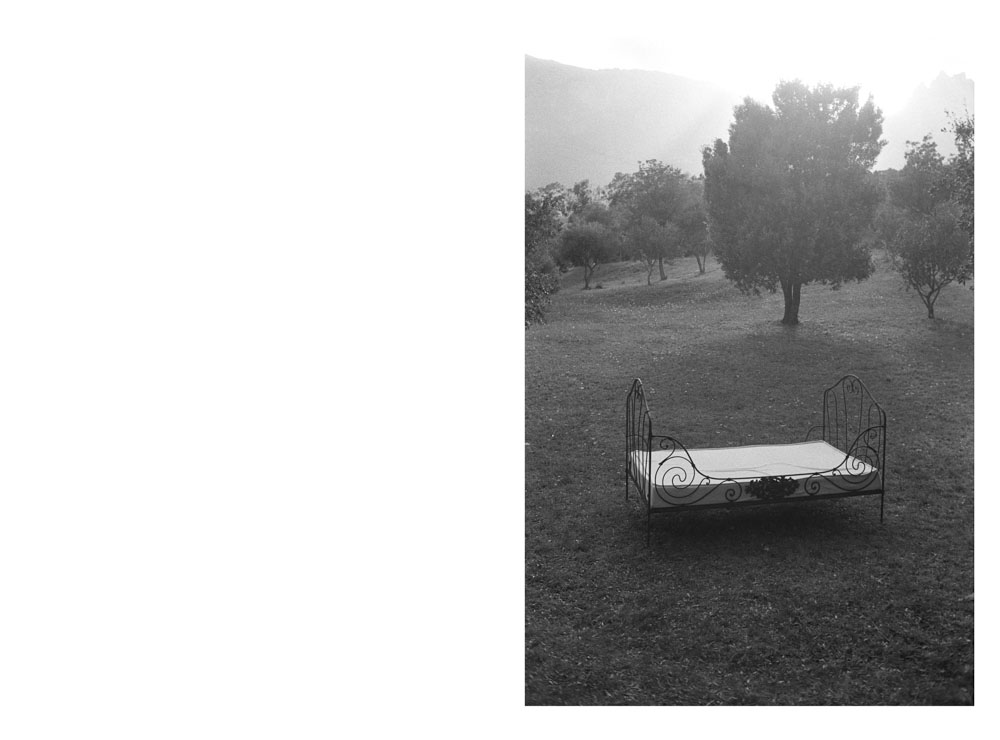
maison casanova, corsica
Literalness as something to be avoided. Distinct from ‘obviousness’, which, in photography, (paradoxically) describes an ‘easy’ subject matter, for which all readings are present and... satisfactory. Coney Island at dawn. Unfortunate tourist with t-shirt tucked into shorts.
The backs of billboards (in america).
(Bed in a garden)
Literalness subverted, in the manner of T.S. Eliot’s elsewhere-mentioned tradition and the individual talent, through concentrated replication of photographic tropes : in photographs made with or without irony, though the status of ‘irony’ inevitably ensues, & maintains cultural validity (this is commentary). >>>>>> ‘We must set (the artist), for contrast and comparison, among the dead’. Let us take snapshot photography, let us replace t4 with P30+, fingernail-flash with profoto7b & beauty dish. Let’s have a party by a swimming pool (guido on hair, pat on m/up).
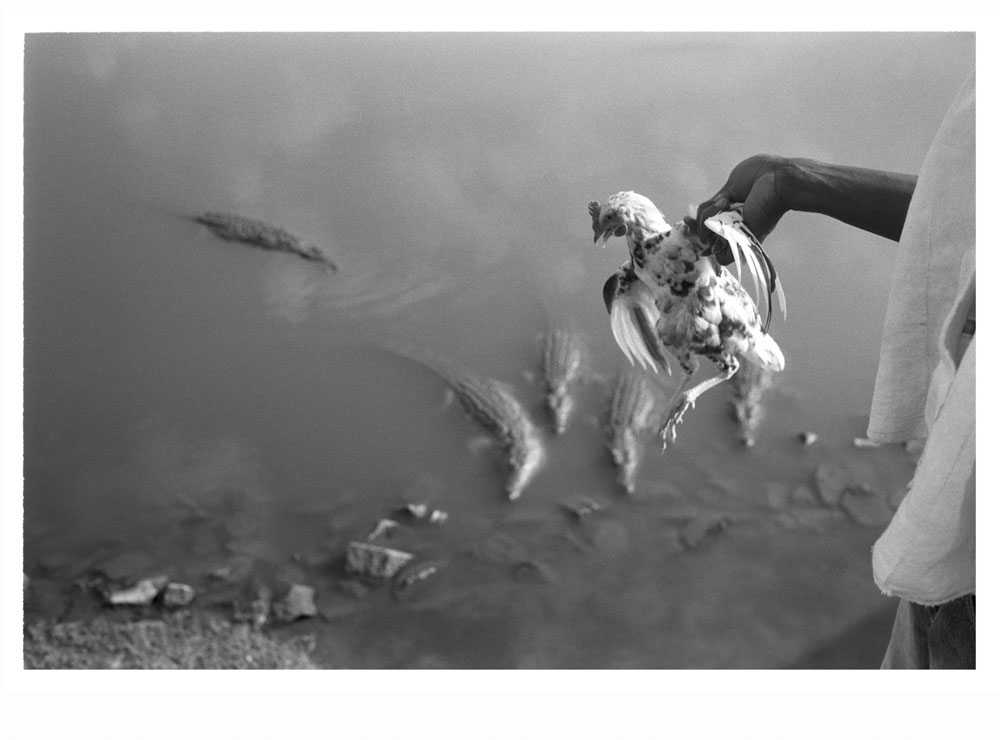
yamoussoukro, cote d’ivoire
The uncle (shriveled, arriving on a motorbike), stands down from the ledge and poses with a machete, the son, above, takes two chickens flapping from a covered cage, and stands over the water holding them by their bunched legs (like a half-laden shopping bag); he smacks them against each other to attract the crocodiles (a tambourine player to a crowd) then tosses them under-arm to the most-dense concentration of mouths >>>
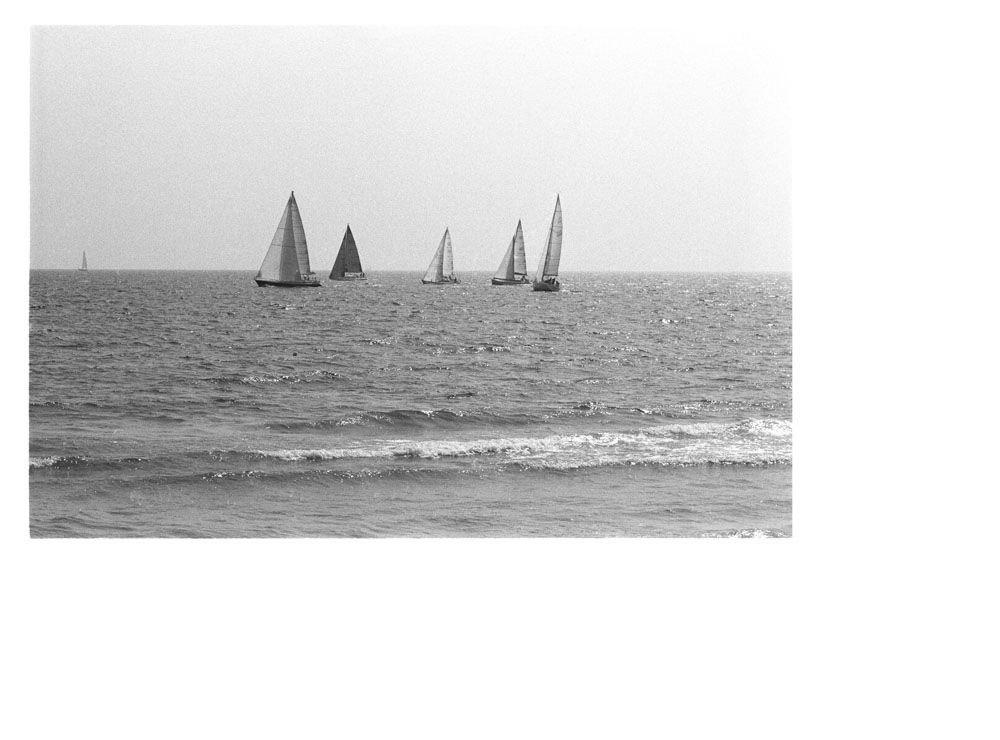
alassio, italy
An internet trope known as ‘shipping’, derived from ‘relationshipping’: the habit of internet fanboys (excessive lovers/haters/arguers of popular culture) to favor one particular outcome of a relationship between fictional characters. For example, whether or not Harry and Hermione should become boyfriend & girlfriend, which caused J.K. Rowling to famously complain ‘the shipping wars... my God the Shipping Wars’.
In fact the specifics of the J.K.R. case might be wrong, regardless, a ‘Shipping War’ comes about when one type of possible future relationship is seen as ‘better’ than another, and so they go at it in the internet forums or in competing fan fictions. The Shippers, in a testament to the power of the media in question, become infatuated with one set up. Thus the setup itself (the relationship itself) becomes an object of both passion and jealousy, in many cases coming to replace any real relationship the Shipper themselves could have (because, as might be obvious, the Shippers are socially-disconnected introverts).
The change we wanted: increased entertainment & free-time.
The change we got: media so complex and perfect and in many ways more satisfying than real life. Fiction starts copying the complications of reality. Also, real-life desires and yearnings being satisfied by the consolations of fiction, albeit in ways liable to turn mothers’ eyes glassy.
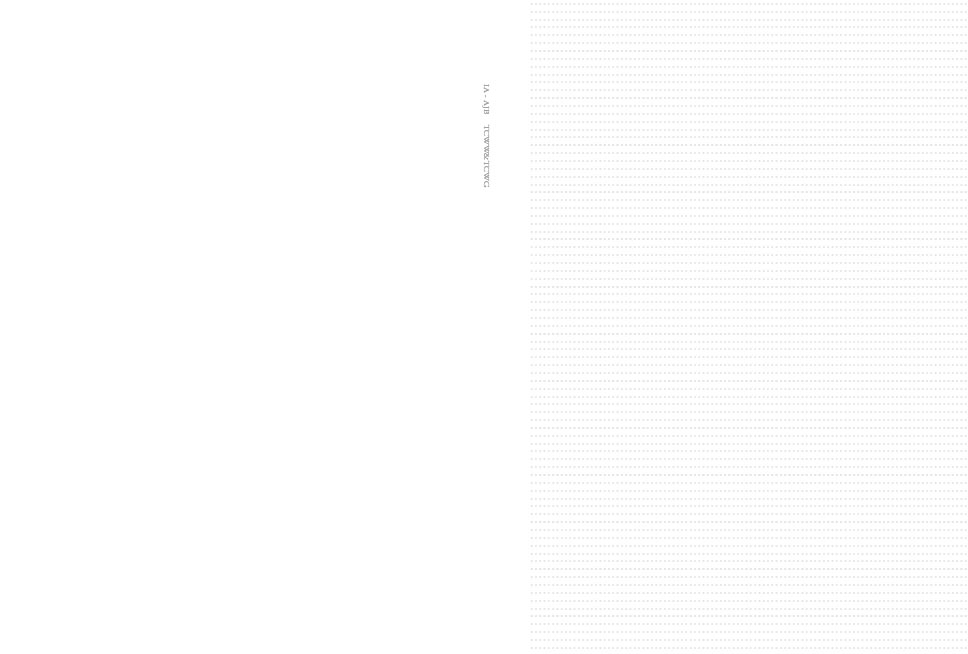
Cover Layout
the change we wanted, and the change we got all images © inadequate animal • alex john beck
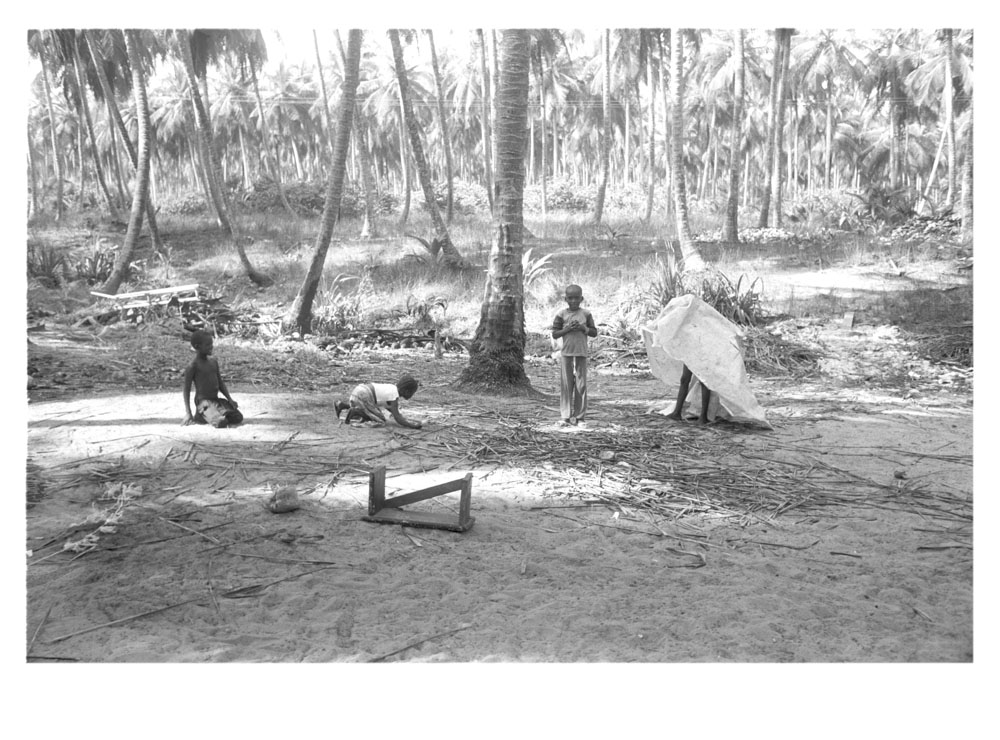
assinie, cote d’ivoire
An arrangement of four kids playing in the dead space between the villas on the beach, where the jungle overtook the creak. Their village up the road, and it was where we were walking, they struck these poses partially in nervousness, or shyness forcing all four of them under the white tarpaulin (eyes peeking from beneath). >>> one of those photographs which keeps the game running (the thought that one day there will be a roll developed with photographs so terrible and illustrative of a pure lack of quote unquote talent that there really is no need to go on, this fear recurring every time a batch goes to the lab >>> but not yet - there is often something when the contacts come back: a mood that wasn’t there when the picture was made, but captured on the film (and not in the eyes); something like this spacial arrangement of subjects, a felicitous moment of (to me) purity and humanity that, on camera, and printed, points to the imagination & not to reality, and which answers no questions and asks none, and which, to the photographer alone, is proof of existence (an existence perhaps capitalized to Existence by the new reality suggested by the image). It seems odd that I was there at all (’how well I would write if I were not here’). But I was and this is what came back.
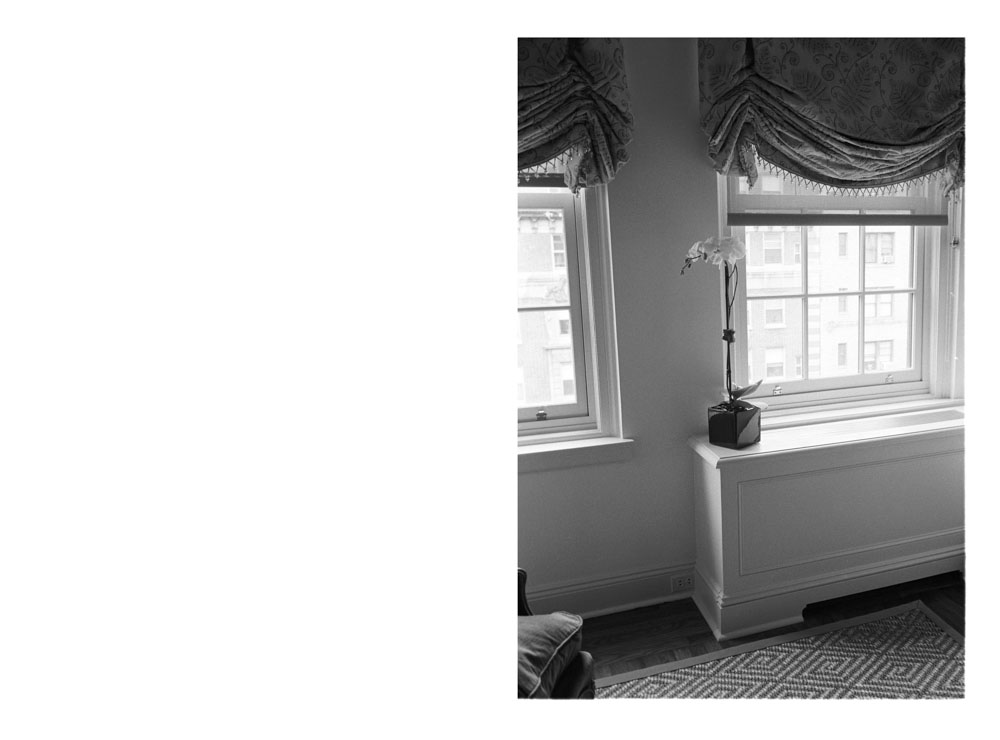
mother’s day orchid, new york
Gifts for supportive mothers (who, when called from a phone booth just south of Bryant Park in the summer of 2003, responded to a confession of adolescent self-mutilation (elsewhere-mentioned), with a calm yes I know; oh, that counselor and the phonecalls that must have ensued (when sleeve rolled up and not-whole in inch-high scabs)). Tis a good thing to keep your origins within daily communication (just as a rocket round the moon renews contact with the launch station on the east coast (implying a ‘coming home’). And let’s extend the metaphor, were we unreachable and on the dark side a little while back?
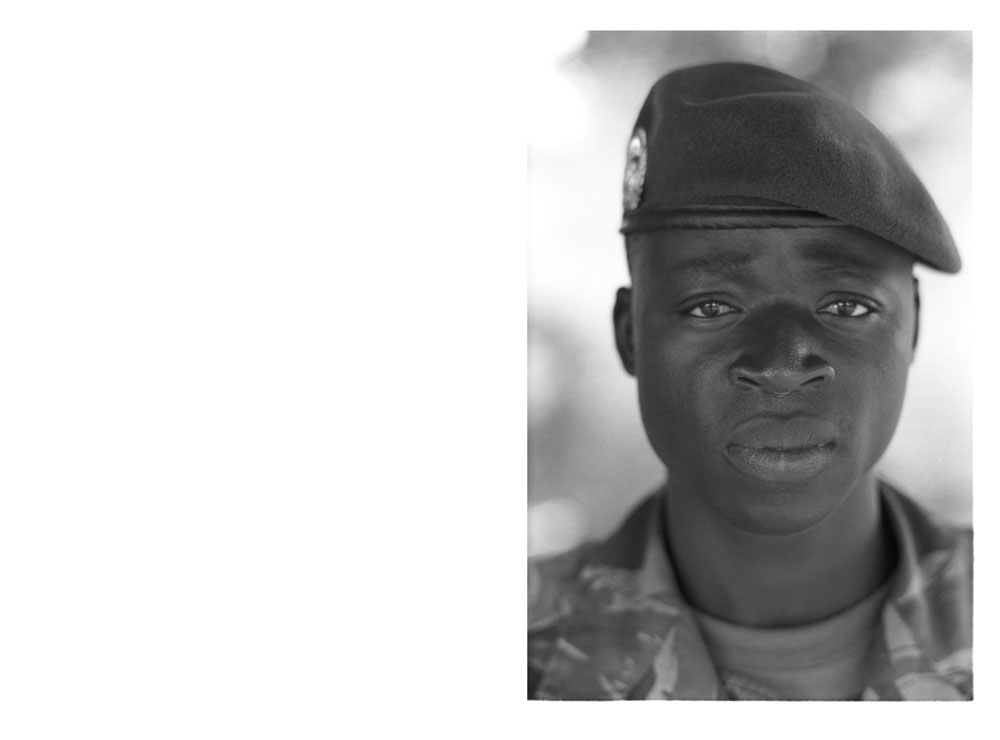
bouake, cote d’ivoire
To know nothing of another person, and to be nothing to them but a web of brief associations and stereotypes, but to shake hands without cause, with this elsewhere-mentioned friendliness.
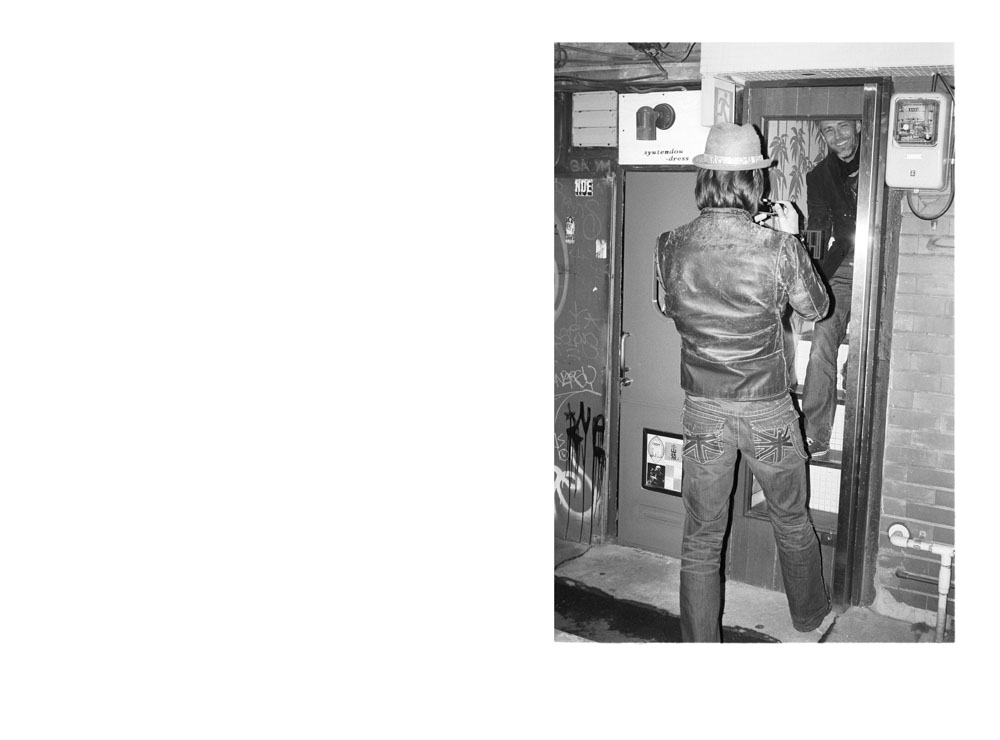
shibuya, tokyo
Drinking condoned when it is done as celebration (or mourning).
At all other times, it is maintenance, and thus suspect. The intoxication of sober sunday nights, of seeing and speaking sharp as a tack at midnight (the thought that this sobriety is so odd & perfect & inspiring that it must be somehow brought on by narcotics).
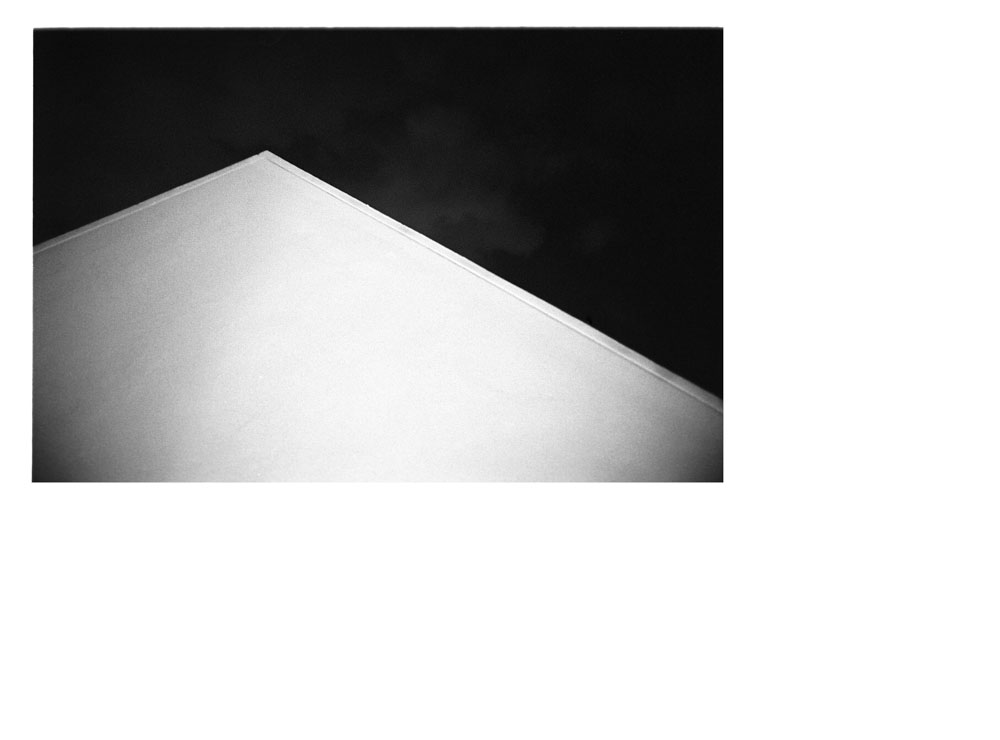
florida
As WW would have it our souls dwell best on the themes of night sleep death and the stars, but all books & thought need be forgotten (or laid aside) if we want to be able to see them (midnight as temporal flag, a moment fraught & heavy, though for reasons human and human only: nature does not care for midnight, owls carry their own time and do not care for your superstition, they hoot when they want (night flowers opened at dusk do not close at midnight for fear of death, they close because they’re done)).
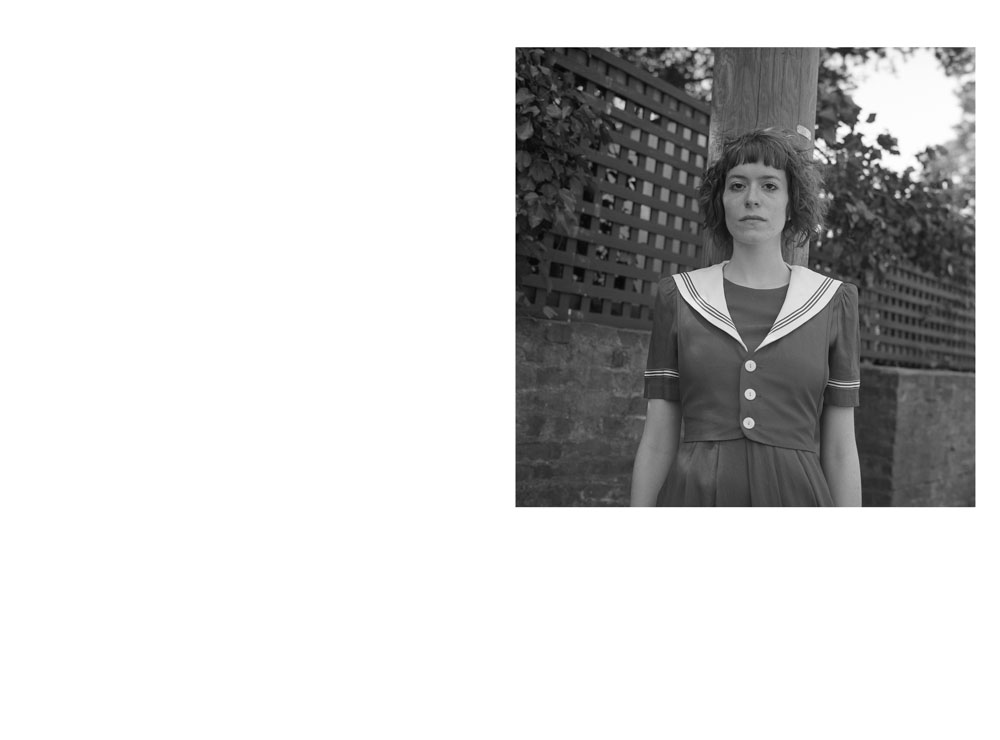
sag harbor, new york
The tension built up in each episode of the television show 24 diffuses over the week that sits in between each broadcasted episode. In this interval the specifics of the plot evaporate and the viewer forgets who was bad and who was good, and remembers only one thing, that Jack Bauer is very good even if he is, on occasion, bad. He shouts and whispers hoarsely. That is all ye need know. Then the next episode starts and the plot continues, the people who are bad may end up becoming good, and vice versa, and Bauer loops from one cataclysm to the next with either loyalty or revenge as motivation, as brachiating apes swing through from branch to branch. When seen back to back, however, as when watching the DVD collection on long plane-flights to distant places, the tension disperses, and the fact that everybody he trusts ends up being somebody he betrays and/or tortures becomes a little strange. And also disconcertingly nihilistic for a prime-time show watched by an american audience that almost daily seems loses more confidence. So it came as a pleasant to notice that in the last season they began to pay almost constant homage to the original free-agent of human justice, Herge’s ageless Belgian reporter, Tintin. Bauer and Tintin have begun to dress almost identically, specifically the three-quarter length beige trench-coat, but the resemblance does not stop there, no, the haircuts are also similar, and the casual observer notices that K Sutherland (his name almost always now spoken in reverential & harsh whispers) is dying his hair an unnatural blonde and combing it into a quiff. The writers have a joke at Herge’s expense. We can also look at Tintin and Bauer’s nearly endless source of funding. Does he have a Macarthur Grant. And when they travel, they travel with magic backpacks, out of which every kind of item can be pulled: diving suit? Radio set? Pistol w/ silencer? Almeida, newly revived Almeida = Captain Haddock, similarly incapacitated by booze. Which brings us to Chloe. She must be Snowy, always faithful, never wavering, a constant support. It seems likely, though cruel.
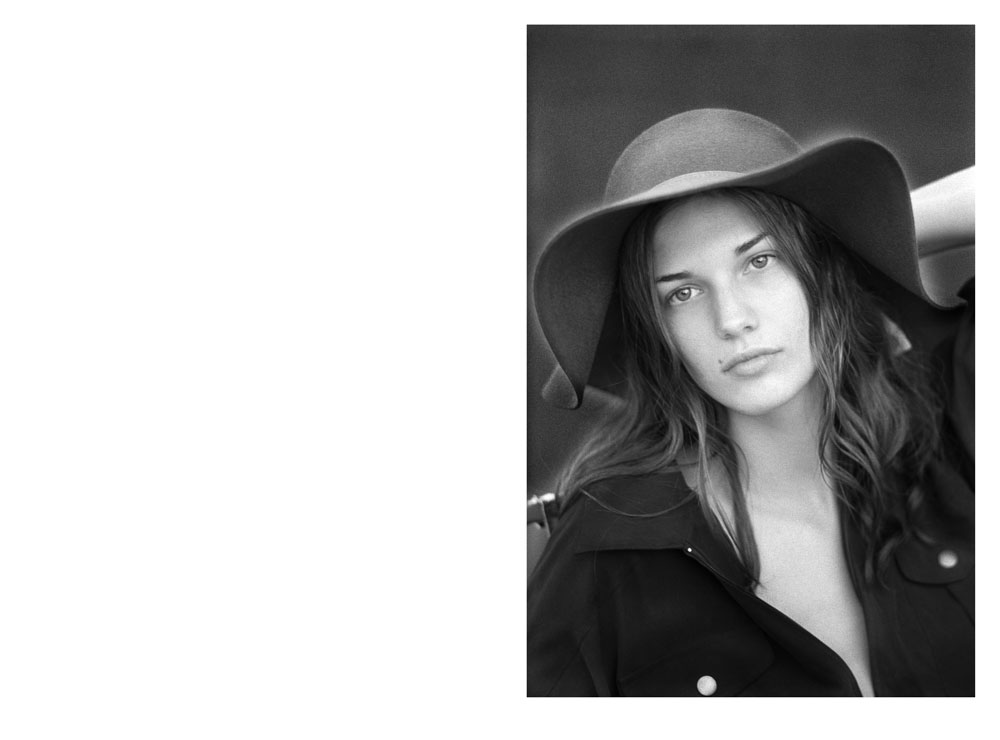
new york
The aggressive movement against beauty and sincerity, a movement later known as ‘modernism’, de-emphasized the age-old truth of truth as beauty and beauty and truth. Keats coughs once more in his grave, & V Woolf, she of long cheek, slender skull & penitent eyes down-turned, tells us of a change that passed among Mankind around 1910, after which we began to suspect that life did not in fact ‘exist more fully in what is thought big than in what is commonly thought small’. From big thoughts to little thought(s). Modernism evolved, touching all aspects of creativity and life, and at intermittent periods of Historical Time, during which the gravity and seriousness of world events (wars & catastrophes) made us suspicious of hip disassociation, it was invariably derided as inappropriate. Modernism, or its aesthetic variant, irony, was declared dead after 9/11.
However....modernism and irony and intellectual (or sub-intellectual, impulsive) negation of the above truth/beauty maxim, these have not died, and avoidance of concrete truth is still a viable pass-time. The internet as singular noun is the vessel of modernism made sharp and light. Art in Modernism: a reflection of reflection of a reflection, documentary filtered through style, or documentary framed as art, or as cynically-made product occupying finite space (providing a rallying point for the speculation of money).
S McCurry sneaking out of Afghanistan with rolls of film sewn into his tribal camouflage, then heading back in years later with NatGeo camera crews.
Chaos theory posits entropy as an unstoppable force, kin-and-companion with time: things fall apart (along the fourth dimension), we all devolve from purity to truth (modernist truth as abolition of beauty, or beauty in ugliness) Also Modernism as a reaction to overpopulation, as a raising of the elsewhere-mentioned drawbridge in response to hordes gathering across the moat.
To the Deconstruction and Obscuring of intent and quote unquote point, we can say nothing. To a man who talks only to himself in words he alone understands, mumbled so thickly from behind narrow lips, we can make no judgments, though he is the modernist par excellence and the holder of smaller/personal/self-evident truths.Beauty in women has not beaten off the Modernizing hordes, and ‘intellectual’ beauty dominates (the beauty of the woman sufficiently attractive to other women she can sell them a blouse), the ‘interesting’ face photographed with the tenderness of a Weegee crime-scene.
But then: the universality of casual & true female beauty, stripped of sexuality, and, in observing, the thought arises, as always provoked by beautiful natural things: that order and peace and hope are the most comfortable poses (the elsewhere-mentioned poses of exhausted/satiated bodies), and a beautiful face makes you think only of streams unpolluted, of snow slopes untracked, of a fresh coat of paint in a newly renovated apartment, of the rightness of things when they are unaltered by thought & control. But that’s the body & the foisted inheritance of our human nature.
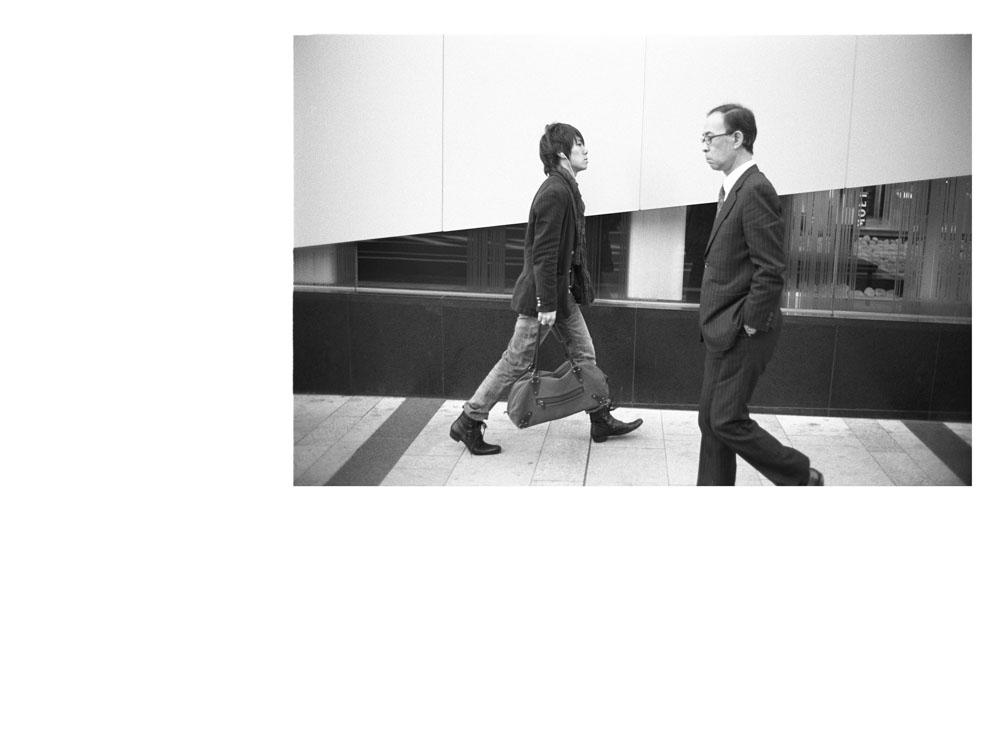
bouake, cote d’ivoire
Note: american flag bandana. The (to our senses) bizarre generosity and calm that sometimes exists between people who know nothing of each other, who can barely communicate, and who are brought together not because of an exchange (though of course there is a ‘taking’ of a photograph - please excuse me if I prefer ‘making’), but because of meeting. Much proof of humanity in these kinds of situations: the openness of the half-smile & life goes on, and what matters is attitude. character is destiny. The changes we want: humanity. The change we get - well, it must be humanity, otherwise it’s the opposite. (To be most proud of: the calm of the subject. Nothing more.)
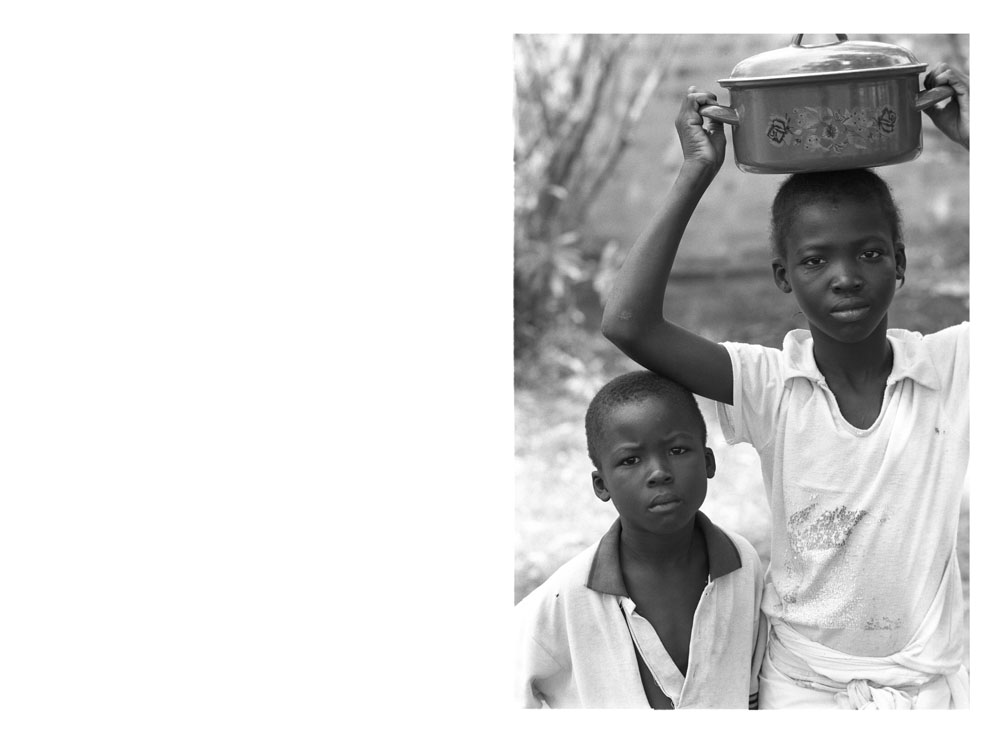
bouake, cote d’ivoire
Resting expression, as elsewhere mentioned, being a rough indicator of personality (as rough as lamentable phrenology, that mengele-measure of africa). Here and there, suspicion, but, more often, and always a surprise, the elsewhere-mentioned openness. The repeated intoning of human goodness under fire, or in Thoreau-like circumstances, pleasantness (Force Nouvelle as Rousseau).
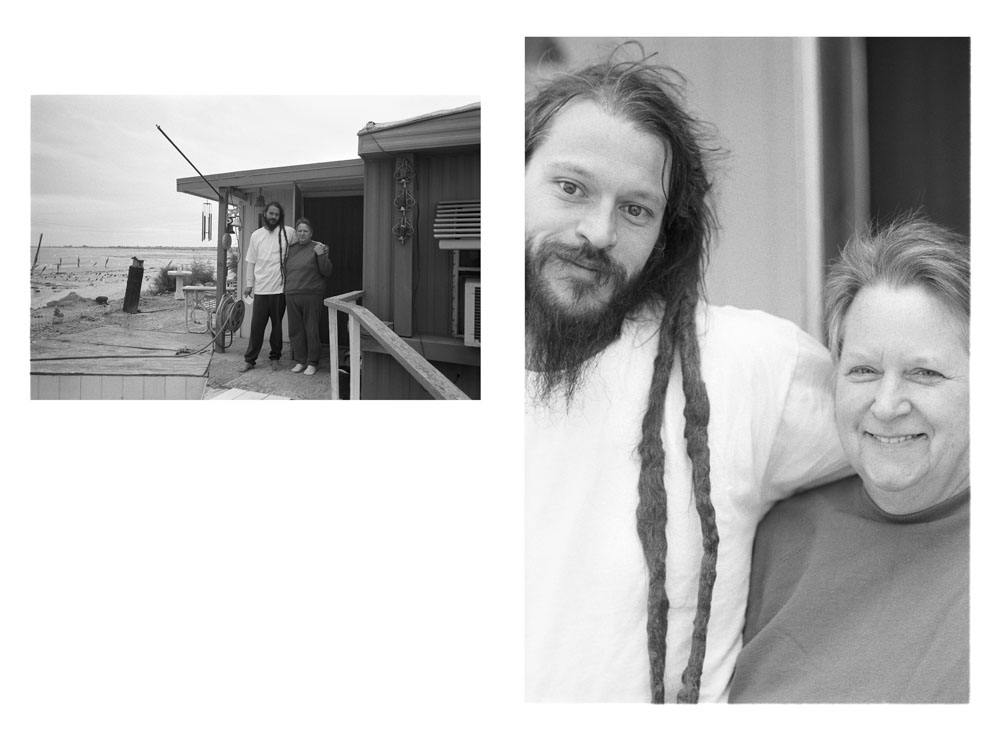
salton city, ca
The family resemblance not so much obvious as implied because of a lack of alternates: and they were proud of each other. Sidenote: Dick Clark on American Bandstand angered & silenced Prince by expressing surprise that the musician had come from ‘Minneapolis of all places’ (one possible & great advantage of globalization: near-universal access to all the same influences & all the same crap.
>>>Film techniques ripped off in order to bring a bit of movement. We move in closer & closer &...
///
Oh but that’s good news, happiness anywhere as good news, she with good true smile (our external judgments just education-as-indoctrination, right, ignorance here not really assigned bliss, but, despite the telescope to the mirror, they don’t seem to analyze themselves... why not have a beer at noon and watch television? It’s cold outside, there’s not much to do. A.S. saying there’s never anything to do). We seek the pleasure of warmth with instincts no more developed than those of bed-bugs
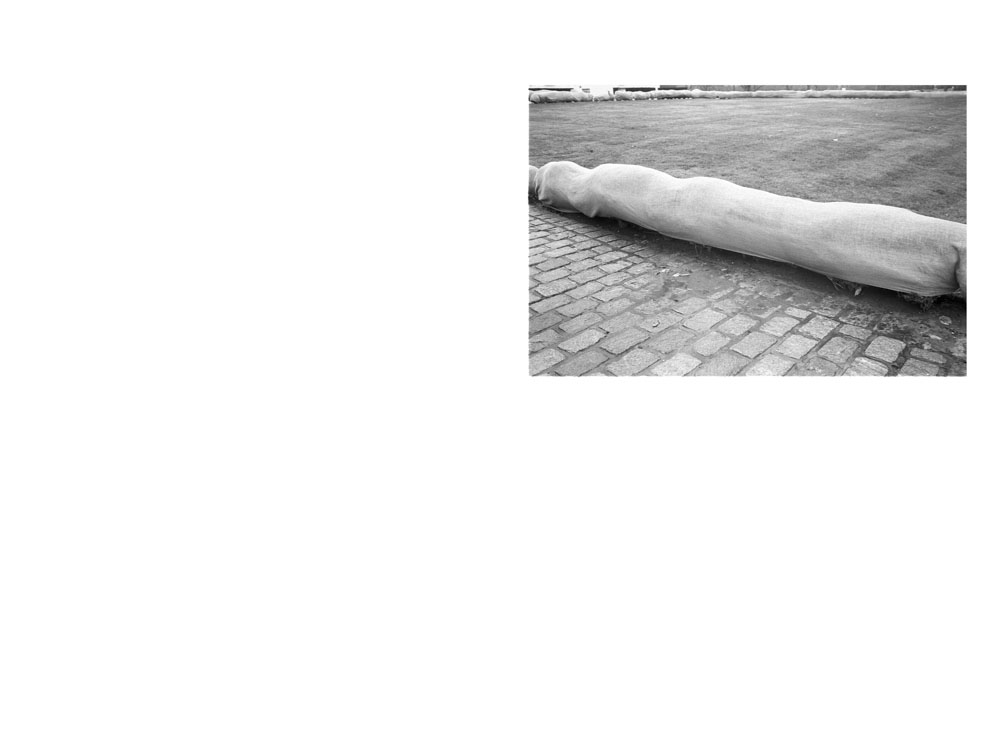
east hampton
Z Leonard as recent discovery & someone working in the popular field of (usually) black and white grainy images displayed without explicit context, and often adopting the aesthetic benefits of antique photography and classic monochrome work: aerial photographs, WG Sebald’s memory of the Rhine valley a smear of sunlight the imprecise nature of remembering (as so often elsewhere-mentioned). And the image of trees in Brooklyn backyards squeezing through a railing, buckling a sidewalk; a book titled analogue, a lament for new digital ages (work, small work like this not being small at all, it is the larger work (the 4x7 foot landscape photographs of nothingness) that aims for smallness).
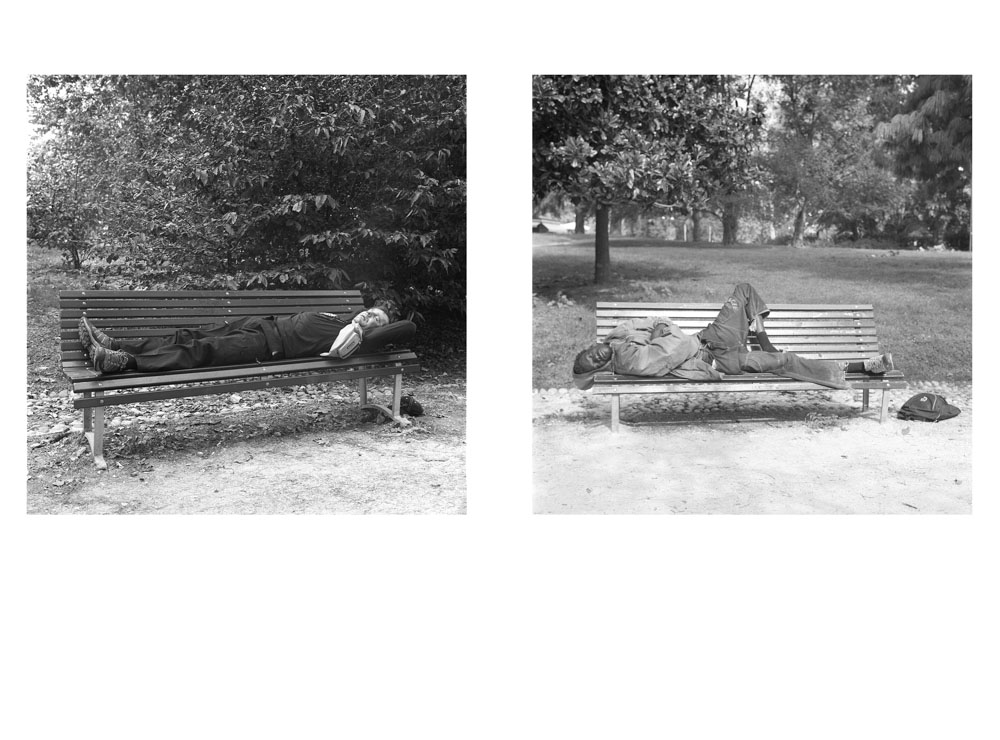
parco sempione, milan
This being the only wide-open green space in that city, a fine place to take a mid-afternoon nap (or run through every morning, you have to ride your bike to it from wherever you sleep: this is not a city for runners, this is not ny where a common sight is the middle/upper-middle-class kid running with specially-bought shorts & shirt in one direction and headphones on).
///
Looking down through waist-level finder, an adjustment of aperture & shutter speed, bringing the scene into focus. The sleeper opens one eye, just this one eye, all else still, hands behind his head. Camera dropped to the neck strap. Straighten up and walk away, mi dispiace mi dispiace.
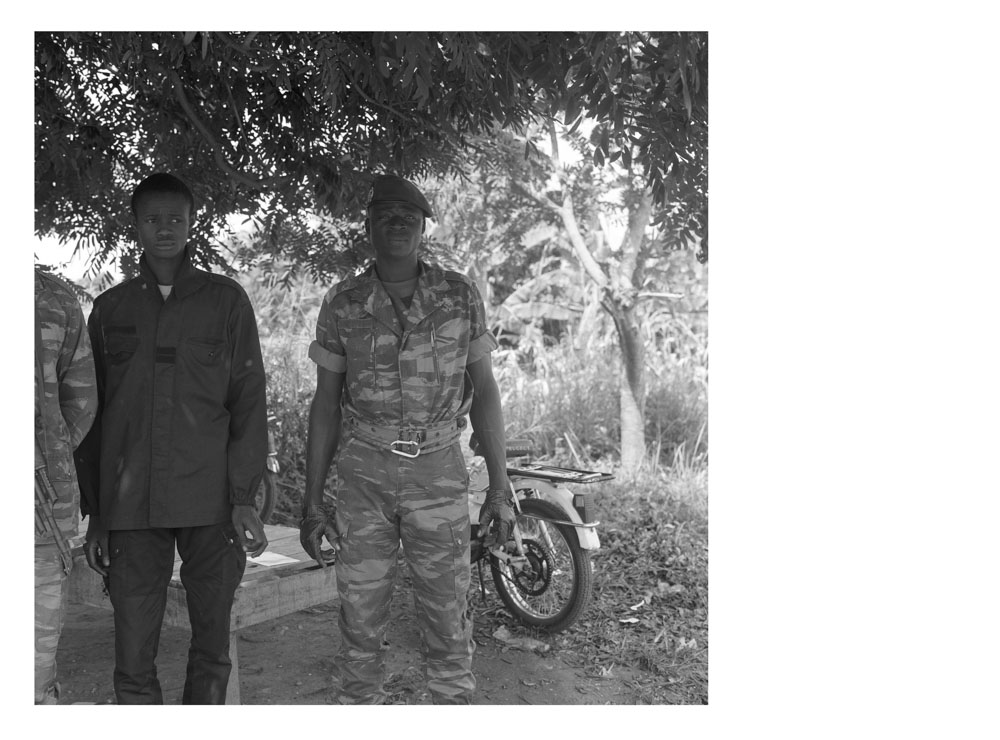
bouake, cote d’ivoire
The observation made by veteran J, that few of the many guns & rifles seen in cdi were actually loaded (all weapons off the safety yet never accidentally firing). Also, the straps of the guns so short that even if the soldiers wanted to fire they would not be able to raise the gun up to sight down the barrel, the stock would stick under the arm. They would only be able to fire at a human target if they bent over backwards.
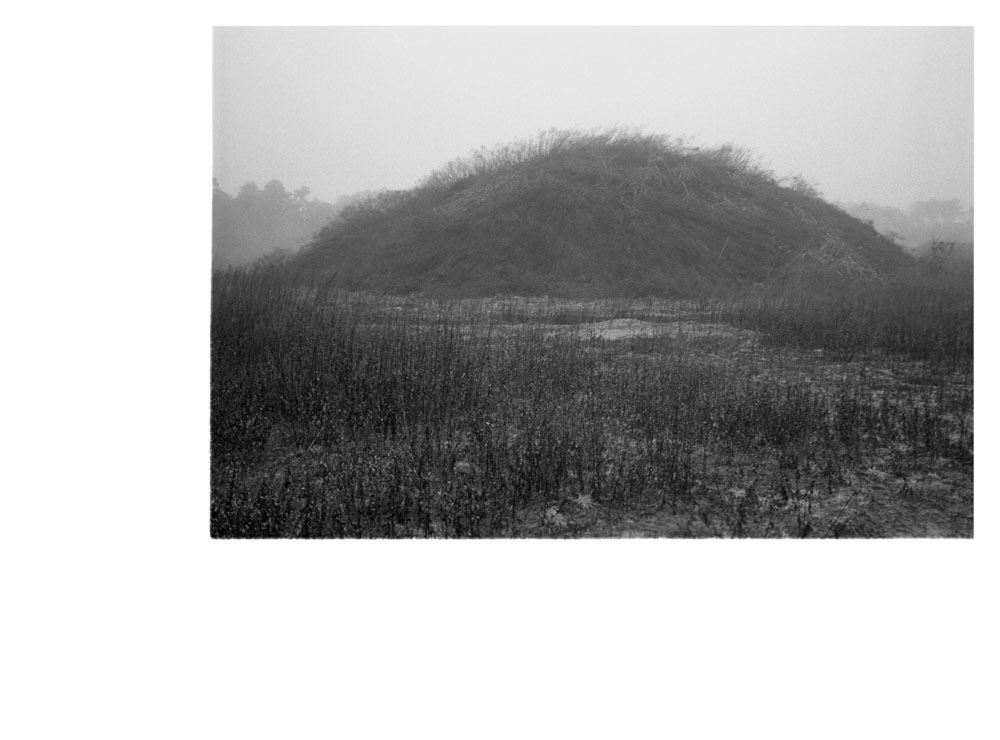
wainscott
A lyric from l. cmpsns, about wearing best suits & stealing last words etc etc - banal words but heard in the midst of a break-up, gathering meaning in plenty, and the meaning carried in the chords themselves, & in the melody, not only the lyrics (in sympathy with photography, and identifying the medium (music) as art, whereby the form supports the function (sad music w. sad lyrics, or, in this case, obscure, defeated/defeating lyrics w. obscure defeated/defeating melodies).
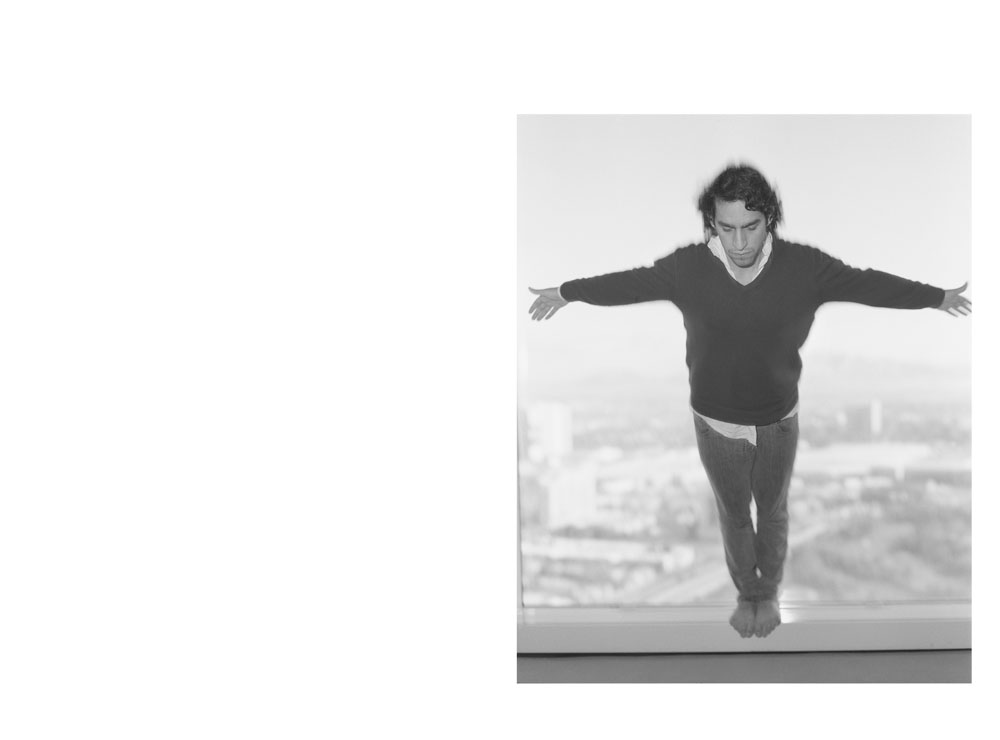
southern california
The illusory barrier that we all think does not really exist, actually exists, and you can drive along the highway east from San Diego and see it shining between the hills like a copper ribbon.
You can drive up to it and put your hand to the metal. Of course the half-mile walk up to the border takes you through brush and low desert weeds, and when you reach the fence the atmosphere has been taken out of the air, so it is light and odd, and like the moon, and though there is only silence (and the wind hissing through the tall slats), there is that funny feeling of being watched (they stand along the ridgeline with binoculars and will come say hello if they see you anywhere near).
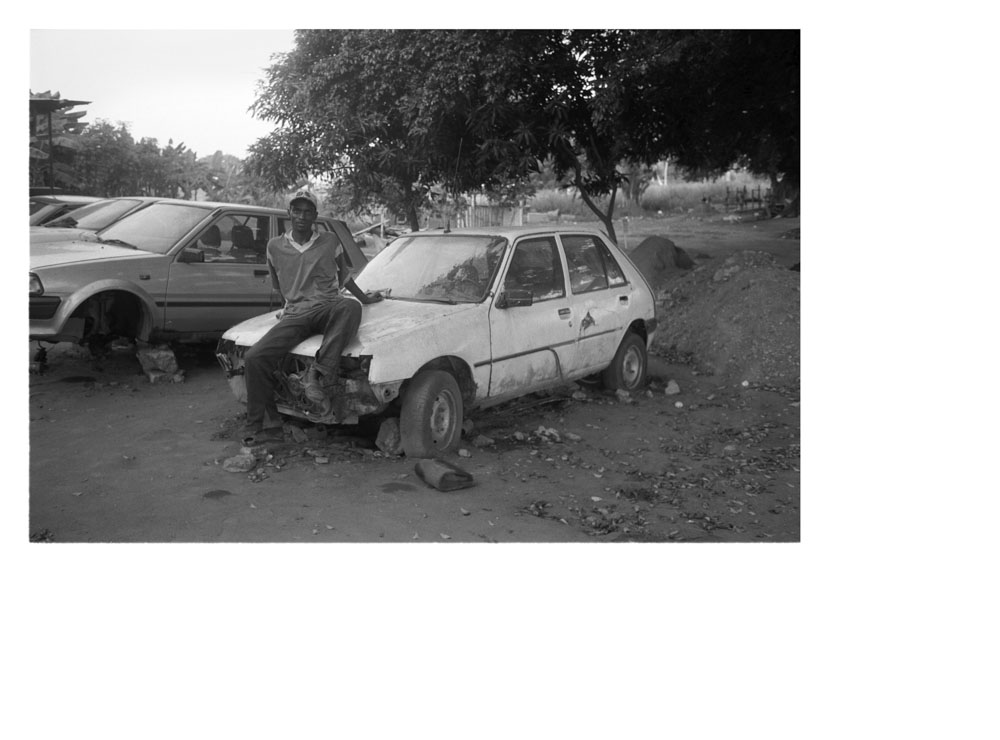
abidjan, cote d’ivoire
Degradation of infrastructure as buzz-topic: The World Without Us a bestseller, popular proof that we all want to know what would happen if we all just fucked off and left everything behind. The crap that sits and rusts and does not go away. Or, a dream of returning to a state of naturalism, to pure organic life, to the quote unquote nature of Swiss Family Robinson (monkey butlers excused), to the world as it was without us. A long chapter in the book that nobody read about the nature replacement kit given out by the national parks commision, and which, when worn (worn as you would a sleep mask), showed the wearer’s exact location from a time long before: manhattan as a fetid marsh, perhaps, flocks rising in sunlight from nolita etc etc. The point then being that you can wear it on the subway and see burrows and worm fields passing through the windows, or walk across water on the west-side highway, and take it off when you watch the reader at lincoln center cinemas (ignoring the world around you in favor of some previous time where there were no people and there was instead an idealistic nature more Richmond Park than Amazon).
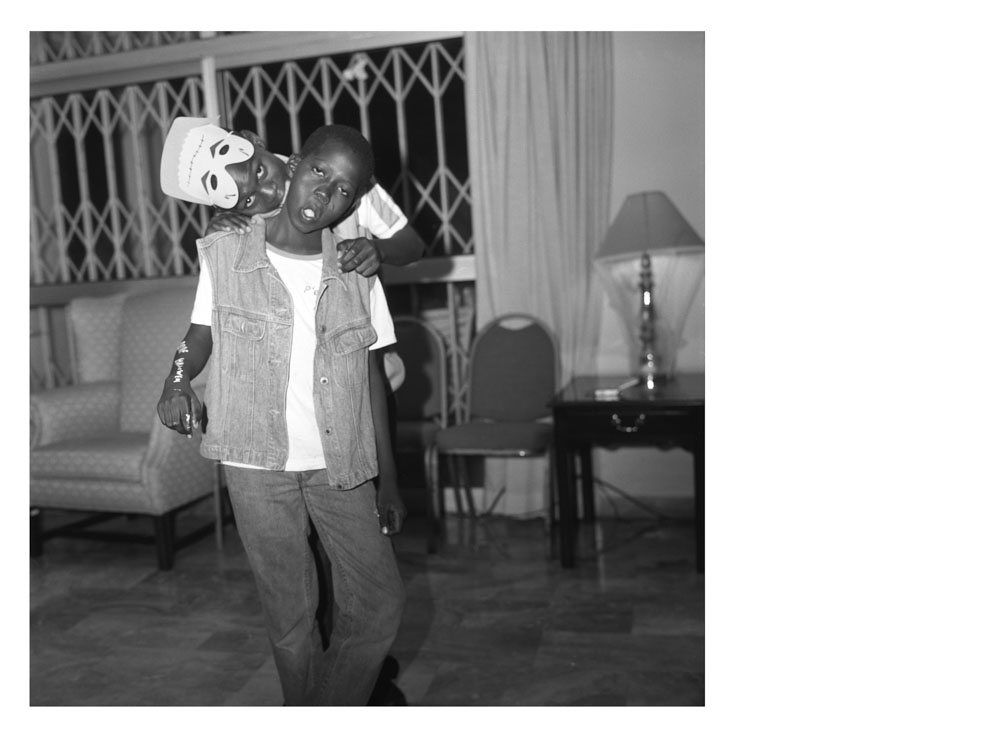
abidjan, cote d’ivoire
The elsewhere-mentioned Calvino theme of ‘how well i could write if I were not here’, now merely remembered and presumably paraphrased beyond the initial meaning (though i remember the book well and the initial images i supplied to flesh the text (verbier dining room in the spring and an earlier thought of living there to write). Having its corollary in all things, and in photography as the phenomenon of seeing images in the contact sheets as if for the very first time (though of course you were there when the picture was taken, turning the knob to focus). This must have been early in the night, when kids were in the makeshift haunted house (bush comatose in a bedroom with a flickering tv knocked to the floor) and after four flags had eased social interaction (rolleiflex as a physical deformity everyone notices but does not ask about).
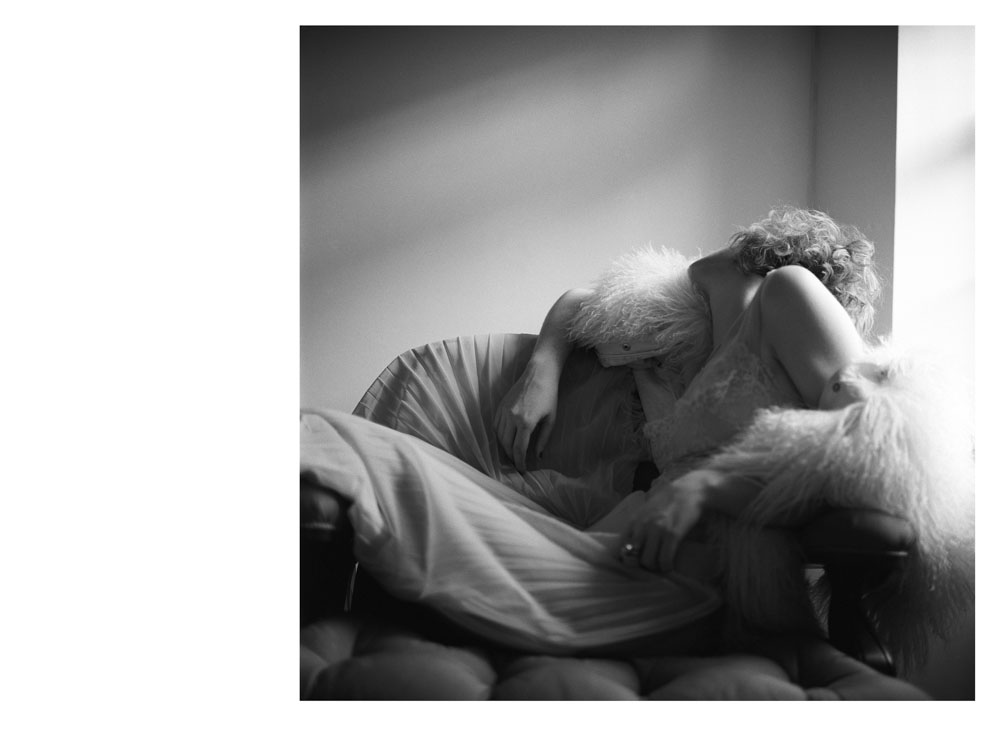
new york
And what you do on any day is your business, there are many ways to fill up your time (your wave). There is no stable standard of productivity, and the O James diagnosis of affluenza implies Western misunderstandings of productivity: we got to make money to live. You also got to live to live. If we head to the dark center of the universe (as we are said to be doing in the year 2008), then nothing is certain and we can only navigate to personal compasses: the magnetic pole in a lost world is personal.
The superstitions of religion eclipse the solid and universal ethical teachings - this in itself is a cliche. But despite miracles left and right there are usable maxims to increase the overall efficiency of life: to increase the return on investment of our time and our energy.
Sidenote: in return for a week’s stay while I waited for a plane-flight to Europe, I gave my friend a photograph of an event taking place in his apartment without his knowledge. SG came over and lay across the armchair in M’s bedroom: the sun went flat over the hudson, I developed the rolls with KF laughing at my hands in the black bag. Then scanned & printed & framed the picture, and left it on the shelf above the fireplace, so that upon good friend’s return, he walked into an apartment empty and with even echos absent, and saw the visual ‘echo’ of this fraction of a second of an otherwise-forgotten afternoon.
Sidenote 2: the remarkable proliferation of portraits wherein the subject is looking away, photographs of the 3/4 back of the head being particularly popular. Is this a negation of personality thing? Are we all sick of people’s bloody faces? Or is this the distillation of an ordinarily distinctive part of the human body down to something more universal. When we see a face we see the person, the unique part of the person, deep with expression and personality and idiosyncratic creases & wrinkles & blemishes. In a head we see the head, and, by extension, every other possible head. Conversely, we can say that an image of the back of somebody’s head can not necessarily be a portrait, thus it can be an abstracted (or depersonalized) image: we receive our emotional cues not from the expression or relative beauty of the face, but from the more impressionistic elements of color & line & context. J Teller’s girl london 1998, shows a beautiful neck and a mouth caught in a conversation from which we are excluded. The subject smiles: seen alongside his fashion work (i.e., seen in context), I want to be part of that conversation. Gerhard Richter’s oft-imitated betty, his daughter in red-white-robe turning away and staring into a gridded void, gives us more, but still not enough: not the sting of rejection nor the taste of voyeurism. Photographs taken from behind without the subject’s consent are of a different type, and the night now too far advanced to address the distinction.
If one day you create a moment of fiction, one that, because of the medium in which it is preserved (the archival photograph) exceeds the life-span of the original intention & creative hope, you will have created a fertile memory. It will grow, detached, as stated, from the thought-process of its genesis, and become something entirely different. Some future day will come when it will no longer seem fiction (the mechanism of fraudulence dismantled by the endless beating of time-as-wave), and it may seem like the truth.
Sidenote three: the image that inspired many a lover’s trip to Paris, R Doisneau’s le baisser de l’hotel ville, of a couple embracing in the crowd passing a cafe, was, in fact, posed. The truth emerged when Doisneau was threatened with a privacy suit brought forward by a couple who argued that he had taken the image without their foreknowledge. In defense, Doisneau proved that he had actually hired a separate couple, Bornet & Carteaud. The impact of the photograph is undiminished: the raw materials of the photograph no less effective in their falseness, just as a plane at a certain height generates its own lift, and the engines (the truth) can power down.
Regardless, for some viewers the most important characters in a photograph are not the central subjects, the people Doisneau posed for example, but in fact the people that he did actually covertly photograph: let’s say the spectacled man to the left of the couple, whose short beret and fully buttoned overcoat remind me of a character from Of Human Bondage, Philip, who realizes that he will never be more than a half-rate painter while taking art classes in Paris. The thought of giving up, of stopping that kind of expression, of being filled with emotion but lacking the skill & talent to express it, sad to conceive: as if feeling hot one night and rising to open the window, you see through the glass not the trade of the busy street below, but nothing; not empty sky and mist, not an absence formed in the interval of an adjusting iris, but nothing, and then the realization that it is stupid to hope something will emerge from that nothing (and the window painted shut and the heat continuing).
The context important of course.
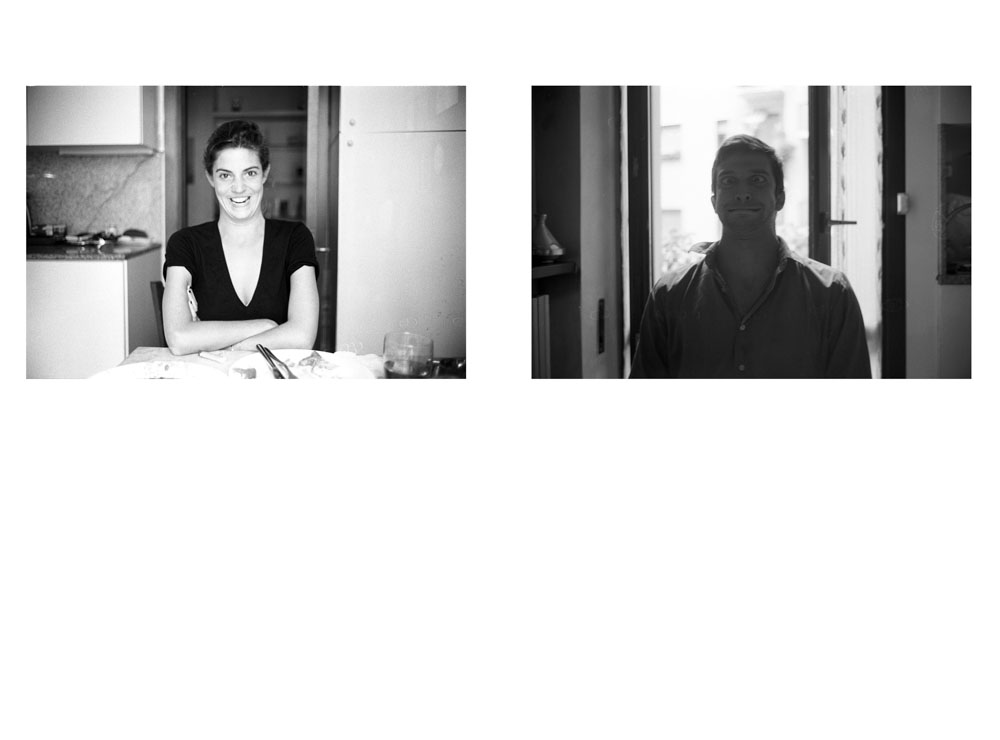
milan, italy
The hokiness of beauty, connected somehow with an amateur photographer still obsessed with sunsets, pretty women & water, thus the appeal of the ugly, or of the fake ugly: the expression not quite smile or frown, but a dazed pause between; the ‘nothing’ photograph of a corner of a corridor inside an apartment building. Also the abolition of beauty & ugliness in favor of pure image-taking: let’s just see what’s happening. J. Teller quoted as saying he never retouches an image, and that his subjects understand that their portraits are never retouched, so all blemishes will remain, flash-lit and ‘revealed’, usable evidence in a trial to determine relative attractiveness (and somehow excused by the harshness and ‘ugliness’ of the lighting), and there is some honor in this, a protestant trust in the raw truth that exists beneath gold and adornment and rubbish. J. T. occupies a very rare place in the pantheon of modern photographers in that he seems to be able to do whatever he wants. And well, he should. His aesthetic is founded on the principle of snapshottiness (he and his assistant(s) confess little knowledge of camera technology/fetishism etc), and with too much guiding and too much forced-framing the whole elsewhere-mentioned intent of the photograph would fall apart. Relaxed and life-like (not glamorous, but life-like), is his game: we do not hold our heads completely straight all the time, so why should every camera be held straight. What to say to those who complain that everybody could do what he does? Remember the elsewhere-mentioned comment about Pollock. There are narrow slots in all artistic genres & mediums, and only one person can fit into the top spot at any one time. J.T. has the top spot in the snapshot slot, and gets all the artistic credibility, while T. Richardson, arguably his wing-man in the ‘use the flash, blow the fuck up’ aesthetic, gets less art-cred but perhaps more day-to-day work. Also, J.T. should be heartily thanked for the images of M C Boscono in the rooftop bathtub, & in bullfighting costume by gold window, to which my dreams may forever digress.
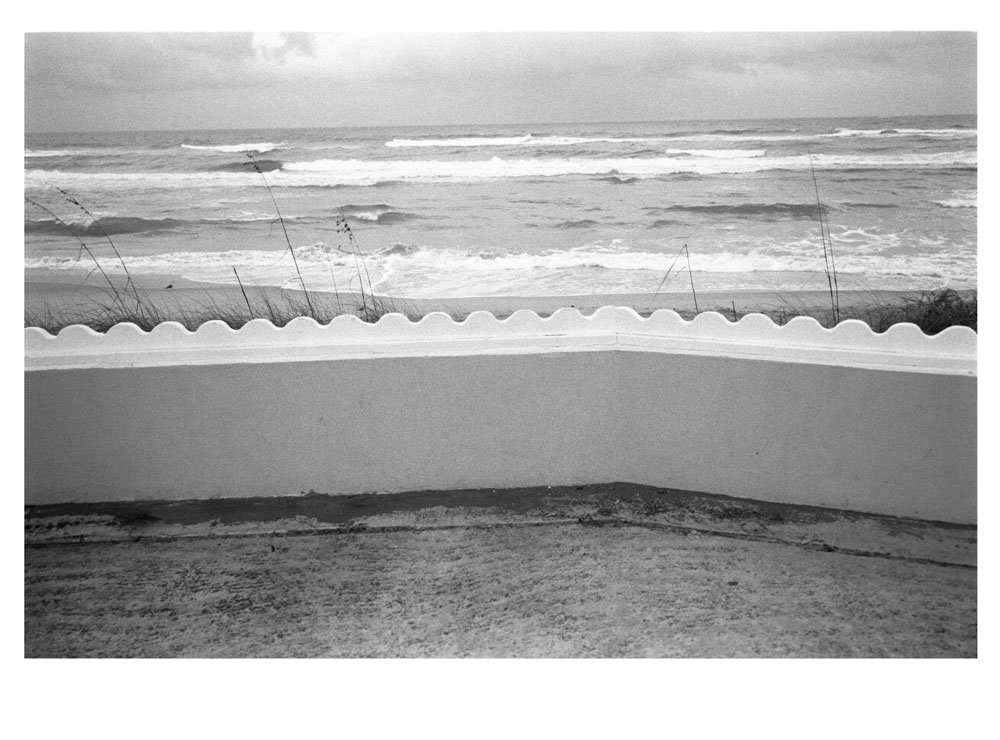
palm beach, florida
Some places as authentic and others as inauthentic, and the difference is the familiarity of the source material (all places are permutations of other places, either as escapes-from or homages-to). To understand and to have experienced the source material of a place reduces its appeal: to see City Place and realize that it is trying to be an italian town square much like the italian town square visited days before: knowing the source is not privilege, and travel (excess travel such that the ‘home base’ is a storage locker) detracts from the pleasure of familiarity, and it provokes and endless system of ranking & comparison >>> oh but to float along the surface without emotional ties (to have no place & no source).
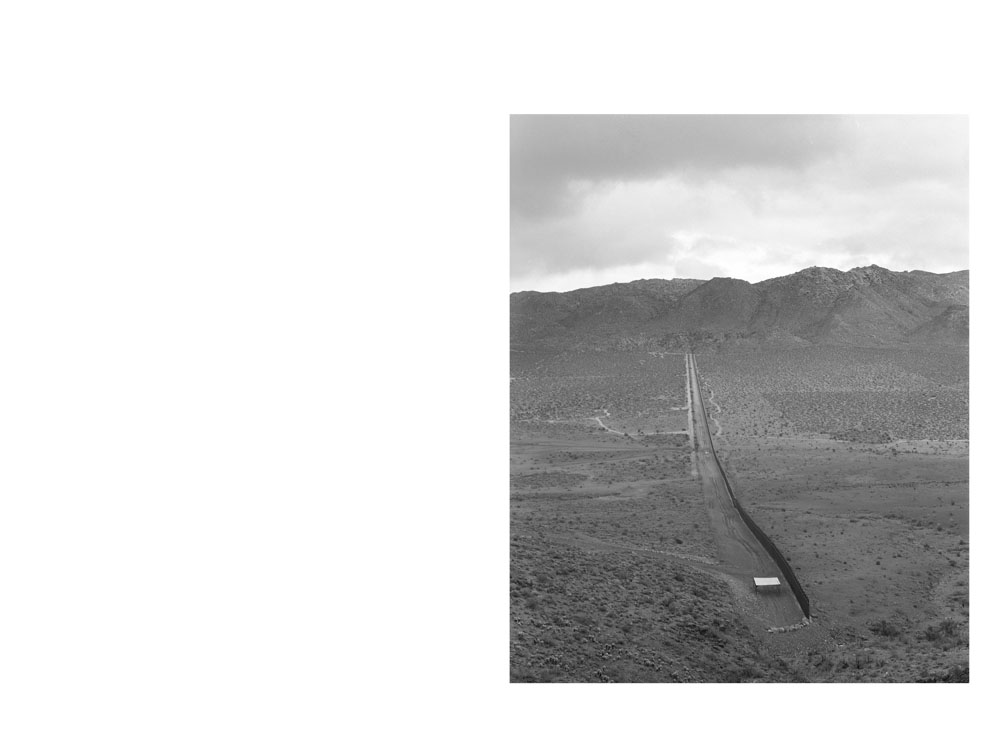
las vegas, nv
Vegas as a physical place but also, arguably, a state of mind, whereby ‘it’s vegas baby’ permits irrational behavior and deviance as norm. Excessive drinking, the throwing away of money at the hell that is poker after four whiskies, wearing short skirts and toddling on heels across the dice-patterned carpet of the casino floor, or talking shit with complete strangers without ever meeting their eyes (eyes on the cards & dealer’s hands), all are condoned and seen as norm... in vegas (granted, these examples are rather tame).
The psychic force that is ‘vegas baby’ not permanent, however, and most people (seriously) chart its influence as lasting three days max. For some, one night is enough (i.e. for me, the funny fact that waking up early and trying to buy a paper makes a person feel like a social anomaly, a flasher in unbelted-macintosh, a train aficionado, a male lover of cats), for others it’s a long weekend, and then you just want to get back to couch and beer in the fridge and a drive to nowhere in particular.
If, however, a large percentage of the visiting population of Vegas are not able to leave, are forced, perhaps because of a thrice-millenial snowstorm of epic proportions (radio announcers hysteric through the blizzard), then Vegas becomes not vegas baby, but a place like anywhere else. Fifty-percent of Wynn guests forced to stay on through no fault of their own: people go buy books and watch movies in their room, and wait in line for the buffet in the marble room with the fake skylight. The town becomes a dull place with too many slopping guts and not enough purpose, and hedonism gathers dust. >>> An orgy with the booze all gone, the participants now disgusted but still, still, unclothed.
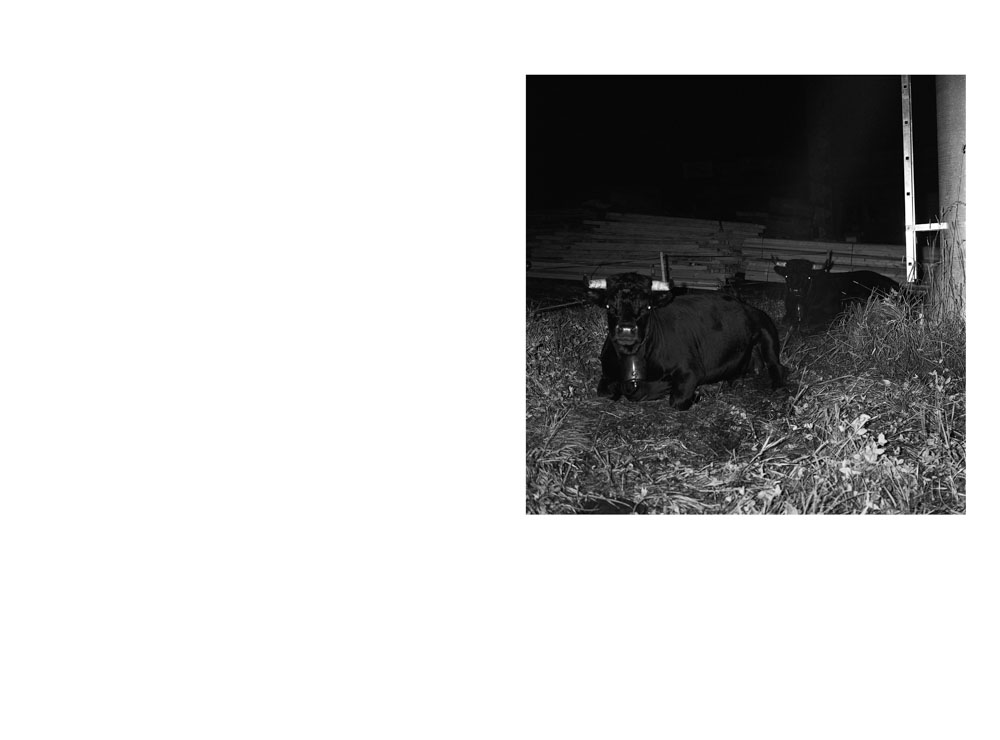
verbier, switzerland
Sidenote, in thinking about light in alpine air and the relative benefits of red filters (benefits that I consciously avoid and barely understand): the interesting fact that Emperor Nero, he of lyre-playing fame, used to more closely watch Gladiatorial contests by holding an emerald up to his eye. This is related by Pliny the Elder in the thirty-seventh book of his natural histories, in which he also describes the enfreshening qualities of the jewel (here called a smaragdus): ‘even when the vision has been fatigued by viewing other objects, it is refreshed by being turned upon this stone’, which explains, in part, the Autumn/Winter 2009 Dior Campaign.
Sidenote 2: Pliny the Elder also wrote that true glory comes in doing what deserves to be written, a classical maxim best put into use by, um, Amy Winehouse.
Sidenote 3: the curious story concerning a British photographer now living in new york, and the massive jewel he would carry from shoot to shoot in a cushioned black case, and which he would only take out at the last minute, to position in theA proliferation of animal-themed bands & artworks, remarkable for what this proliferation says about current states of culture (Culture as a measurement of environmental conditions just as acne is an indication of sebaceous clogging & unbalanced skin). Are we trying to go back to Nature? Regarding the bands, the Animal Collective, Grizzly Bears, Wolf Parades etc, we see a co-opting of natural symbols in an attempt to gather up some of that natural tone: an aesthetic shift from digital to analogue, though most of the above-listed bands use technology more than the other (equally hip) groups like the elsewhere-mentioned horsefeathers, joanna newsom. This shift exemplified by an aesthetic (visual and musical) rooted in sloppiness and human-error, where production and voice and tone are not ‘perfected’ my technology.
The so-called age of the condor, up to which we climb after the rational/material age of the eagle that began in the 1490’s, and which now, on the brink of a massive global economic meltdown, seems to be losing control. The myth continues: in the 1990’s the condor was reawakened and began to fly alongside the tired-but-buoyant eagle. Here there was an opportunity for unprecedented growth along both eagle and condor lines, unfortunately squandered in the immediate millennial age, during which both Jungian opposing functions (rational vs. intuitive) collapsed, and we buggered everything up (in popular alt-opinion, anyway).
Continuing the metaphor, the eagle, tired from its’ five-century flight, could not recover from this mid-air collision, and fell to the earth (cratering iraq/afghanistan, hamas/israel). The condor, recently ascendant, took wing quickly once more, and these are the years when things will (allegedly) change.
Applicable sidenote: a friend writes an email documenting the changes afoot in london, the impending street-to-street warfare and rubble-scavenging club-waving horde roaming Whitechapel. Recently returned from Japan, where he has been building ski resorts in northern towns, he writes that he has ‘found morality’, which suggests something very interesting. That he did not have morality before. There are no atheists in fox holes, they say(’the fools in old-style hats and coats’), and in this our new fox-hole, when the age-old truths of free-market banking are being blown apart (socialized) we are reaching to a higher power: the governing dictator of ethics & morality, and, in creative arts, the impressionistic truth of human error.
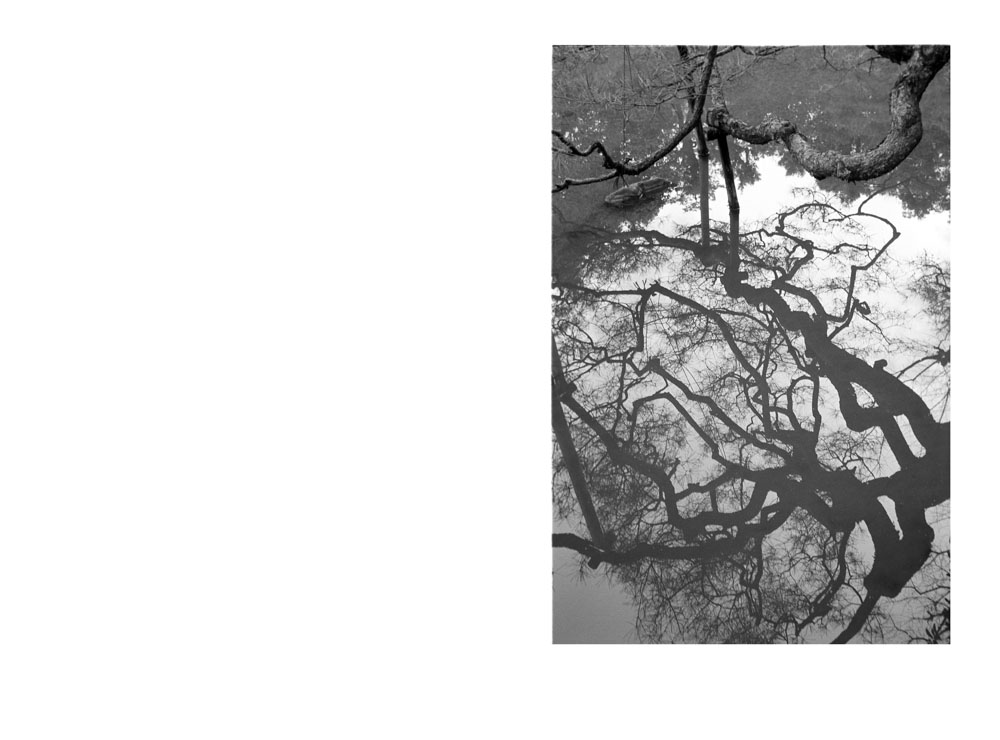
kyoto garden, japan
Just to the left are a set of short columns set in a zig-zag across the water. In SC’s Lost in Translation SJ runs across these in a short-legged hop-and-hop, and the camera either focuses or focuses away from a bush in the foreground. This might be the bush, reflected in the water, albeit from a different angle, and of course at a different time of year. Kyoto in spring being, allegedly, a tourist-trap unlike any other tourist-trap, crammed with slow-moving hordes, more of them pouring every minute from coach after coach after coach halted at the curbside, like bilge-water from moored tankers.
In the early winter, fewer visitors, and blossom does not fall like snow from burdened branches, nothing like that. Only the late-winter promise of future beauty, and the perfection of being in a place that you know to be beautiful because of picture-postcards sold at the entrance and exit gates. Because the thought of blossom itself is an atavistic pleasure. Springs seem shorter with age, and blossom is so transitory that before you notice the falling of blossom and bring it into your daily appreciation like a new color of paint in the bathroom, it stops. Blossom once again disappears into the realm of the impossible.
Sweaters seem ridiculous in summer. In the winter you can't imagine a day without socks.
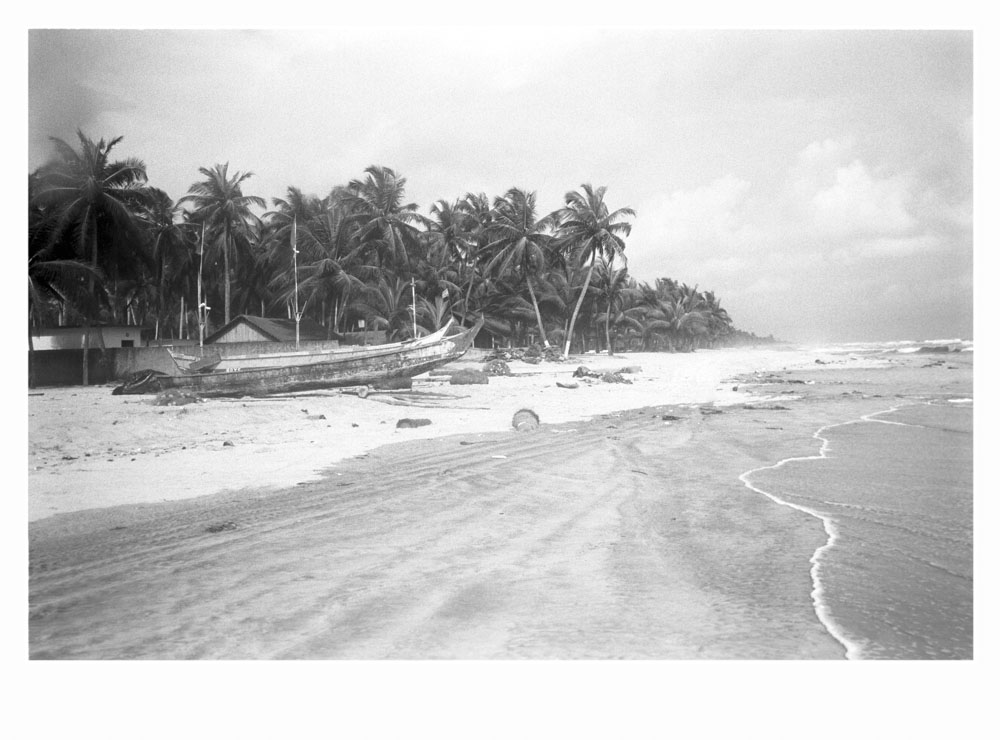
assinie, cote d’ivoire
>>> perhaps some influence from the only movie that will instantly bring tears: the opening moments of The Thin Red Line, of deserting soldiers swimming in South Pacific atolls, caught starry eyed as melanesian choir walks through the village >>> the choir of unknowable words harmonizing at full-volume (a full-capacity set of lungs emptied with each phrase). For English boys raised amidst housing and underground and buildings so cold all year round there was never a need for air-conditioning, to dive from a polynesian double-canoe or watch without thought for time the weaving of a mat, well that was a dream, and late at night with stella artois in tall cans bought from europa foods, listening to why does nature vie with itself, the land contend with the sea, in the basement room with no light but the television. And it must have slipped in somehow, an influence that caused a hanging-back and this photograph.
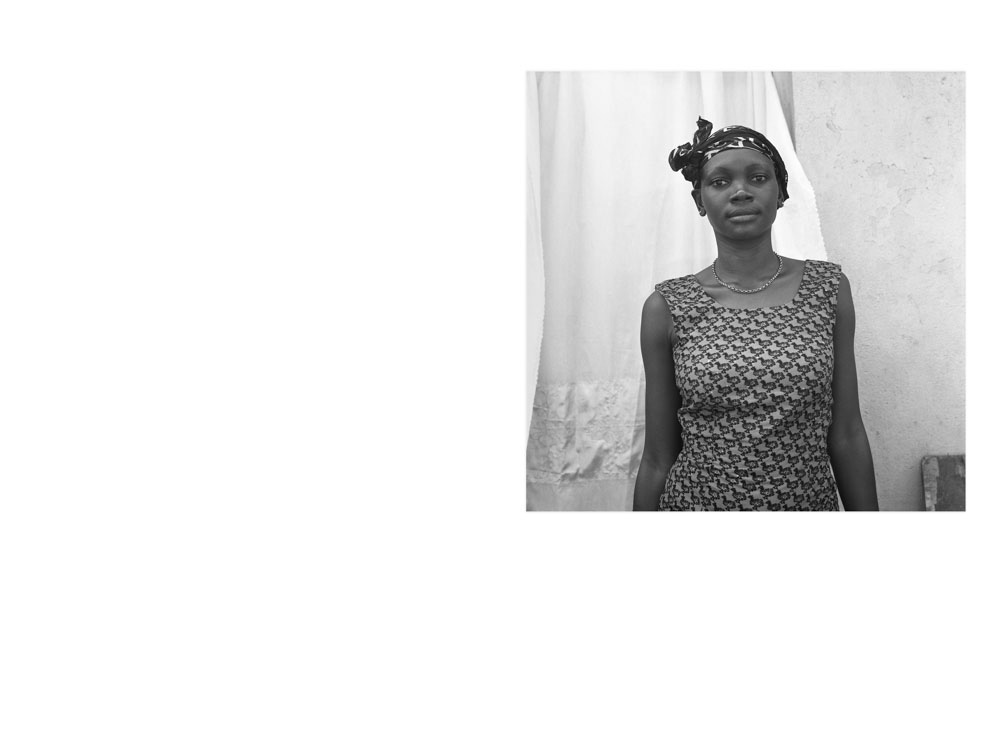
adjame, cote d’ivoire
Possibly D’s girl, but who knows, my french sometimes so bad that everyone was a sister or a brother (the community kind of as one), my latent optimism finding proof: though a veil of language separated me from them, I thought all was utopian on the other side.
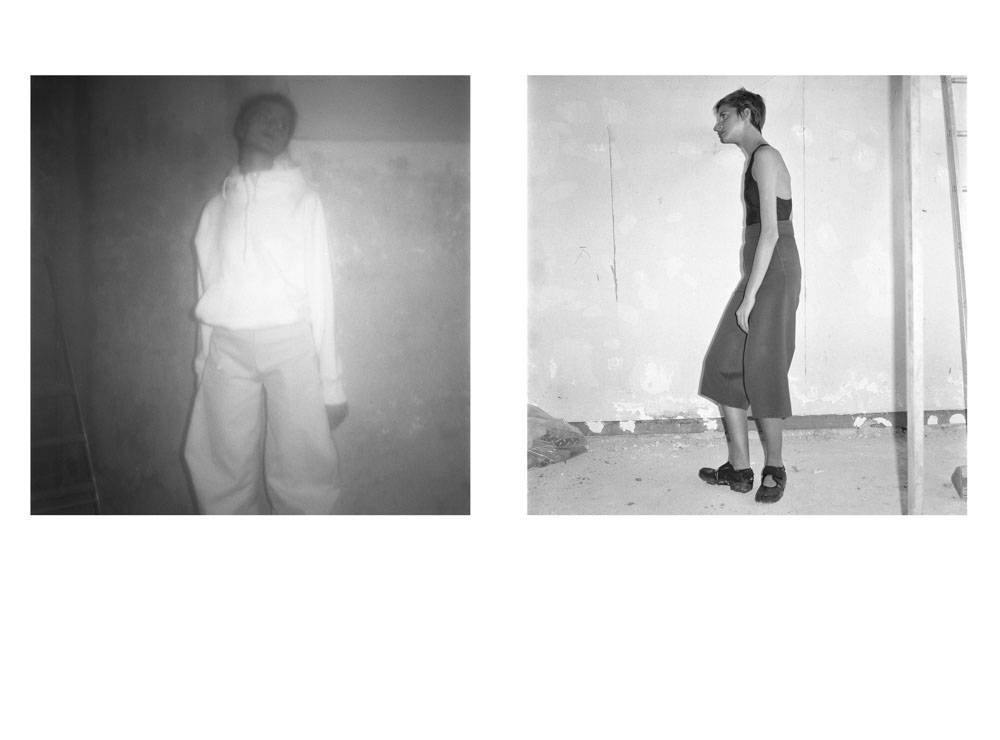
milan, italy
Sontag wondering what would happen when we no longer understand the art-historical precedent for our photographs. Would the scene from The Life Aquatic, in which SteveZ puts Werner on his shoulders and walks down the steps, be so effective if we did not, in fact, recognize it as a direct reference to the frontispiece of W Blake’s Songs Of Innocence & Of Experience? The ancient should not be a point of reference, not something to copy from, but a point from which to understand perspective. With each successive generation of photographers producing work, the possibilities of the medium becoming ‘stuck’ increase. Photography, above all other mediums, is always and only a creation-from-reality. Reality though, affected by facebook et al, whereby ‘friends’ replace friends at a rate of roughly 100 online friends for every real-world friend. The new photographic & digital movements will accept and understand this. As they already have: aesthetics of the facebook gallery bleeding to the gallery wall (flash flash flash). Though we will need to go further with digital if we want to give it artistic validity, at least further than flipping the picture over on one axis to make a mirror-image, or making blue things red things.
///
The belief, instilled in us from an early age, that the world is our oyster.
The grammatical number correct: the world (singular) is our oyster (singular). The our interchangeable with your, the phrase remains the same. The point being: the world is our oyster, there being only one world, and only one oyster split among all the people to whom the world is given. Given this information: we are entitled to the infinitesimal part of this one worldly oyster (which we all know will not be enough to get us through the day). Lesson learned = work harder, and/or find your own oysters.
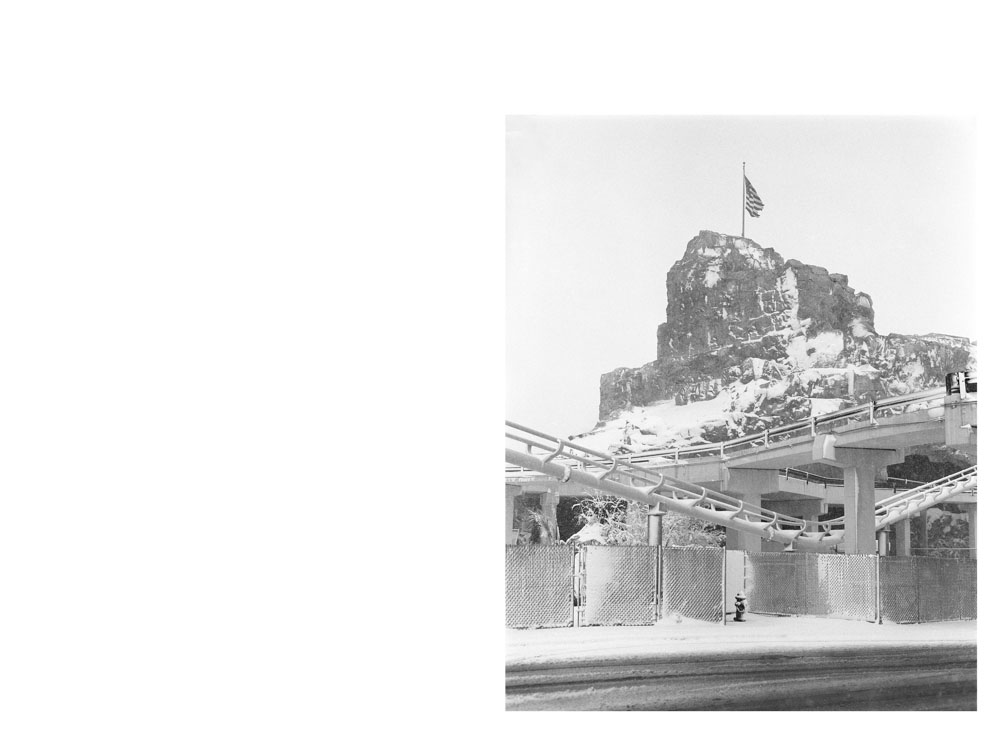
outside las vegas
Primm, a place that exists for a variety of reasons, none of which have anything to do with civilization and the need to camp beside fresh water or create favorable conditions for growth, it is, however, on the border of california & nevada on interstate 15, and perhaps applicable for some tax-break, and within blizzard-driving distance of vegas. But it is an outlier casino with all the vegas-like attractions: buffet, slots, hotel rooms, roller-coasters, half-naked dancers. Delivered, however, in the old vegas style, without the pretension of luxury and ‘adult’ glamor: it is a place that drags its knuckles.
Vanya’s Sonya telling us that in milder climates less energy is expended on the struggle with nature, so man is gentler and more capable of feeling. Oh, Buffalo Bill’s, where much energy is expended in understanding what it all is, and where the only feeling is the most natural instinct for flight, or of drowning oneself in the entertainment sanctioned by irony (the irony with which we are garnish all our sustenance, so to add taste or avoid indigestion (indigestion here being stupidity).
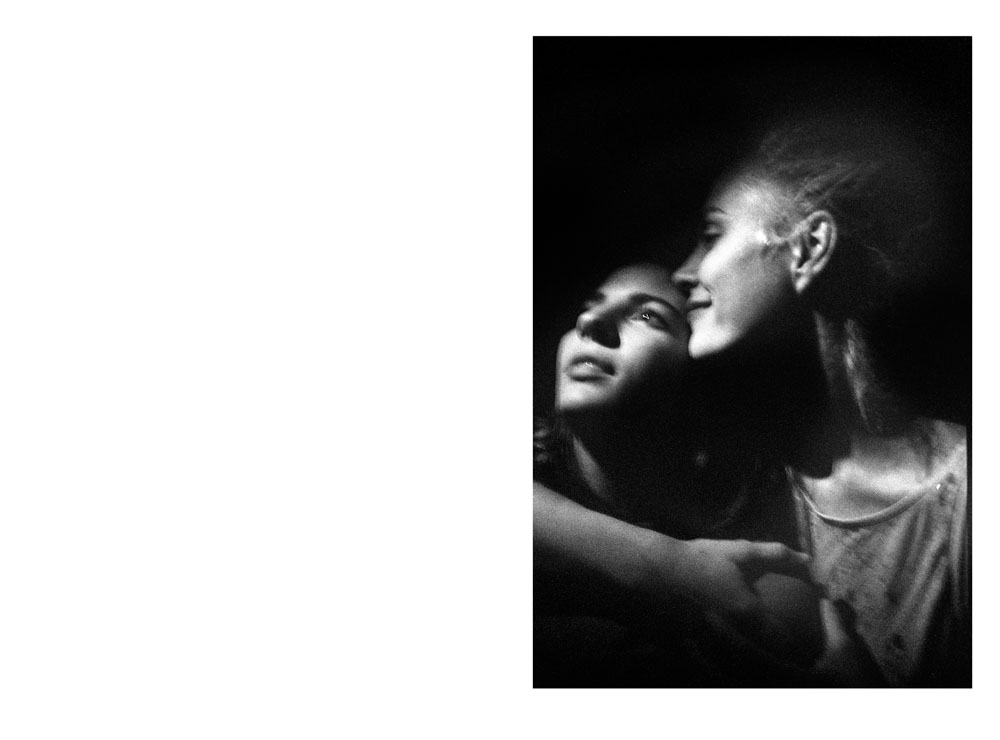
milan
The recurrent beauty of photography being its translation of experience through the idealizing forces of glass & film into fragments that perhaps have nothing in common with the actual reality of the moment, except perhaps the choice of subjects. That night a night when C held her farewell party in Milan and she arrived late to find her friends & colleagues bored in the back room, and where the professional setup was replaced with an old favorite camera (now manufactured far more cheaply in China not Russia, but of course sold for twice the amount). Her and E.T. were talking about something they have both now forgotten, but beneath the only light in the room, and despite what ended up becoming a typical night (we drank and talked about nothing and T.S. and I babbled about R Galchen), there is this, this accidental photograph, and now the memory is black and white and everything took place under a water thick with oil.
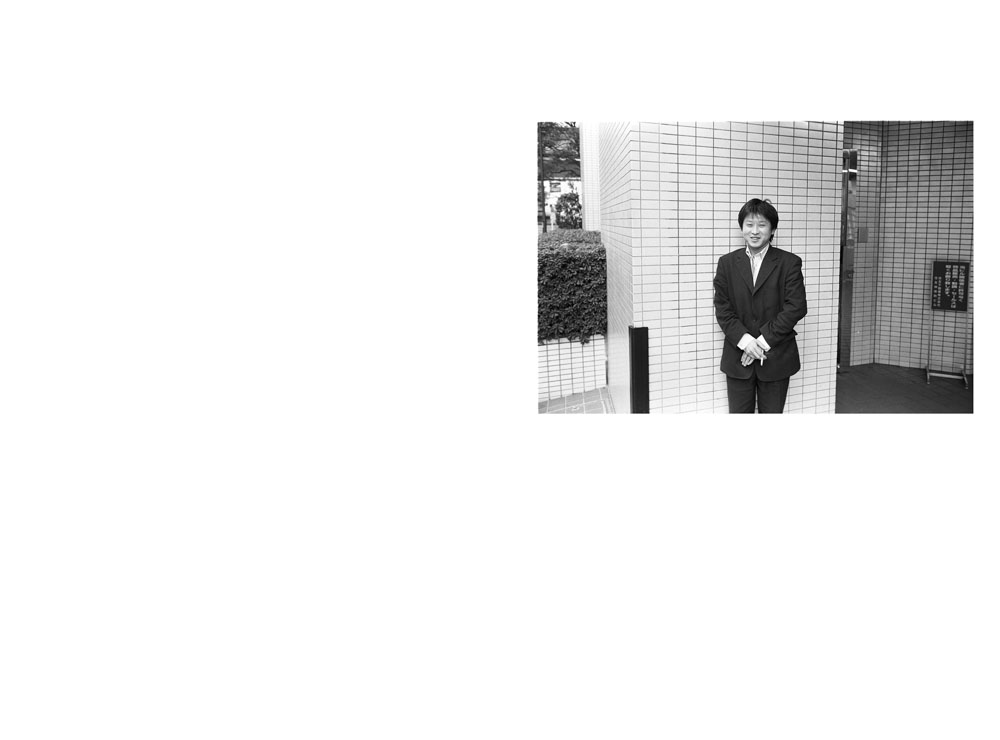
Tokyo, Japan
On a flattened box of tri-x in the back-pocket of a pair of jeans, always ready: shassin uo to-te mo ee deska? Excuse me can I take your picture? Japanese phonetically.
Assessing the choice of the street as a place to take portraits, there are two options for the photographer: passive or active. Either they stand back and photograph without involving themselves, in the manner of C-B in Spain: framing the shot for the architecture, and then waiting for the perfect composition of people and other elements (man in top-hat, bicyclist); or of M Epstein meeting snakehandling co-eds on a hillside in Los Angeles. Here the emphasis is on the accidental, on life as lived when there is nobody around to take note of it: photographer as recorder of the sound of trees falling.
The other approach is to approach subjects and directly petition their involvement, typically signified by a close-crop and a gaze into the camera: Arbus in Washington Square Park, S. McCurry in Afghanistan, the difference between Salgado’s miners and the portraits of miners, and, in the most famous example, Avedon in the American West.
The first approach is the approach of the shy photographer, the solo photographer who looks to the art for documentary purposes, where the accidental moment is revealing, and subjectivity is a result of luck and, later, a selection of the more ‘telling’ images. The second, more direct approach, is for the social photographer, for the interacting, controlling photographer, and is, perhaps harder to do: the help of the subject must be solicited, impressionistic techniques are less-tolerated, luck is less forgiving, and, as suggested elsewhere, the character aura of the photographer is far more influential. The fear of the new and shy photographer is directly reflected in the subject’s face.
Sidenote: there are conflicting stories about how Avedon solicited the subjects of In The American West, for example, maybe his field producer (assistant, rep etc) approached the drifters and mothers and a chunk of the 750 people eventually photographed, while others maintain Avedon himself went up to R Garber at Keith’s Lunch and Breakfast in Provo, Utah. In either case there was an eventual ‘reveal’ whereby Avedon would step in and describe the project with all the charm and ease of a consummate celebrity-wrangler, and the subject would agree to two minutes spent with back against white piece of paper pasted southward somewhere fronting a large expanse of sky.
And of course there are the cross-overs, the photographers who break the active/passive binary of the street portraits and make photographs of people without their foreknowledge, though in a style that formally presents the portraits as ‘solicited’, i.e. with the full-cooperation of the ‘sitter’. PL diCorcia most famously blended the two in his 2001 ‘Heads’ exhibit at Pace, in which a scaffold-mounted strobe in Times Square isolated pedestrians in a cone of their own revelatory light, faces filling the frame. PL then got to set legal precedent for all soul-thieving photographers when an orthodox jew, caught by PL in wide-brimmed stoicism, encountered the self-same image enlarged to 48”60” on the wall of a Chelsea gallery, and issued a lawsuit. The judge threw out the lawsuit, suggesting that the photograph was art, not commerce, and thus protected by the first amendment (despite costing upwards of $20,000).
Sidenote #2: Art+Commerce, a photographic agency based in New York, one of the largest, if not the largest, photographic agency dollar-wise in the world. Art PLUS commerce equals goodness. What we should all aspire to if the Age Of the Condor does indeed come to pass in 2012.
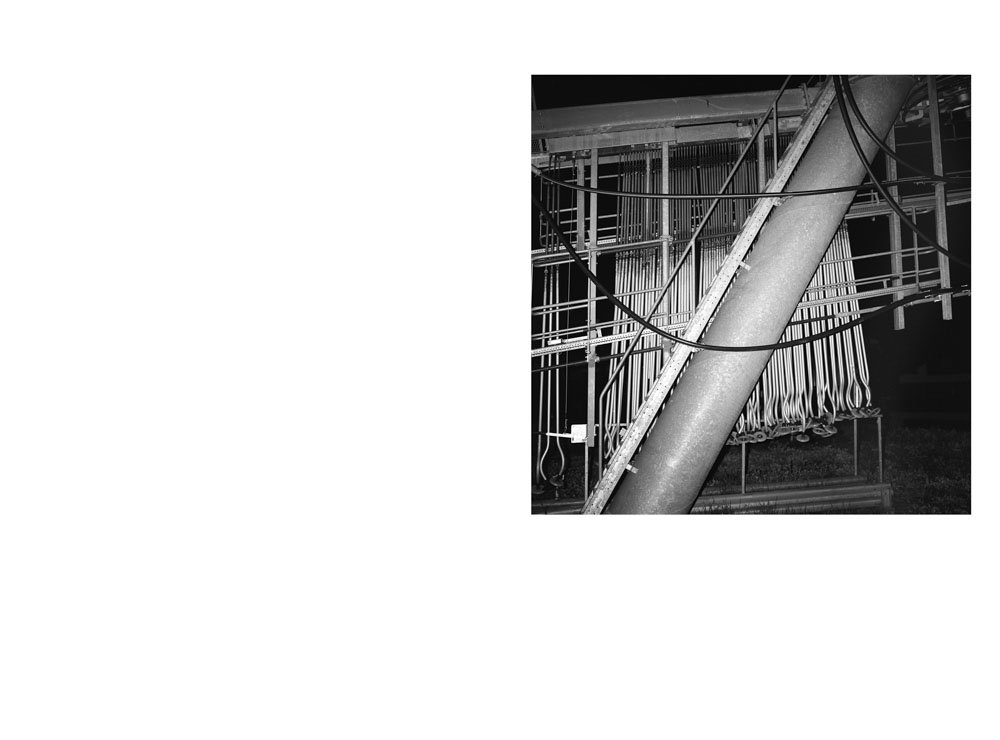
verbier, switzerland
Nostalgia as something you do not know so well growing-up, but which establishes a foot-hole in your life, in your day-to-day life much later, just as a absent father, though delinquent in adolescence, becomes a governing force both dictatorial and judgmental in adult life: someone from whom you ask both orders and advice. Nostalgia not just a definition of that backwards-looking motion all people do in order to seem from whence they came, but also to see whether you’ve gotten better or worse: to measure relative happiness. Nostalgia as a theory of aesthetics: this was my life at that point, these were my values, how have I moved on, how would the me I was look at the me I am now? How would my past self judge my present self? The elsewhere-mentioned present is a narrow affair, lasting no longer than 9 neurological seconds (9 seconds being the length of conscious time), and so the only time worth monitoring is the past and the present. Contrary to popular (& naive) taste, the past and the future are always changing: changing relative to our present values. Nostalgia is a measure of the discrepancy: between what you wanted to happen, and what did happen, and also, from the future, or what you thought you wanted to happen, and what you now know did.
The archetypal plan B is the real plan. What is the plan B? And how does is differ, from past/future/present. The gap between is governed & measured by nostalgia.
Nostalgia, with age, grows in power.
In adolescence, lower-case: nostalgia, nothing much, an over-the-shoulder thought to summers past.
Then, with the movement beyond school to responsibility (the movement of a light schooner out of the cover of a harbor, to the open sea), the subtle sentence-case: Nostalgia. And capitalization, adopting the power of a Pronoun. The memories of childhood achieve the permanence and power or things that will never happen again: moments on a boat on Walker Pond will never repeat. The black van emptied of seats will never again carry skinny windsurfers to a flooded valley beside Ellsworth, ME. A moonlit catamaran pulled half-across the beach will provide only one night’s respite from wet sand, no more. After, only the memory enduring, held concrete in past experience remembered.
The word nostalgia, gaining capitals, soon carrying full weight as NOSTALGIA, when the future becomes more finite than the past, when the story of the life in question is more than half complete, and the real point of the life, the mystery later solved by biographers, can already be half deduced from the facts available: the past as etching in stone. The future as a fluid thing, moving along a vector, with the tiny, tiny, statistically irrelevant present as variable.
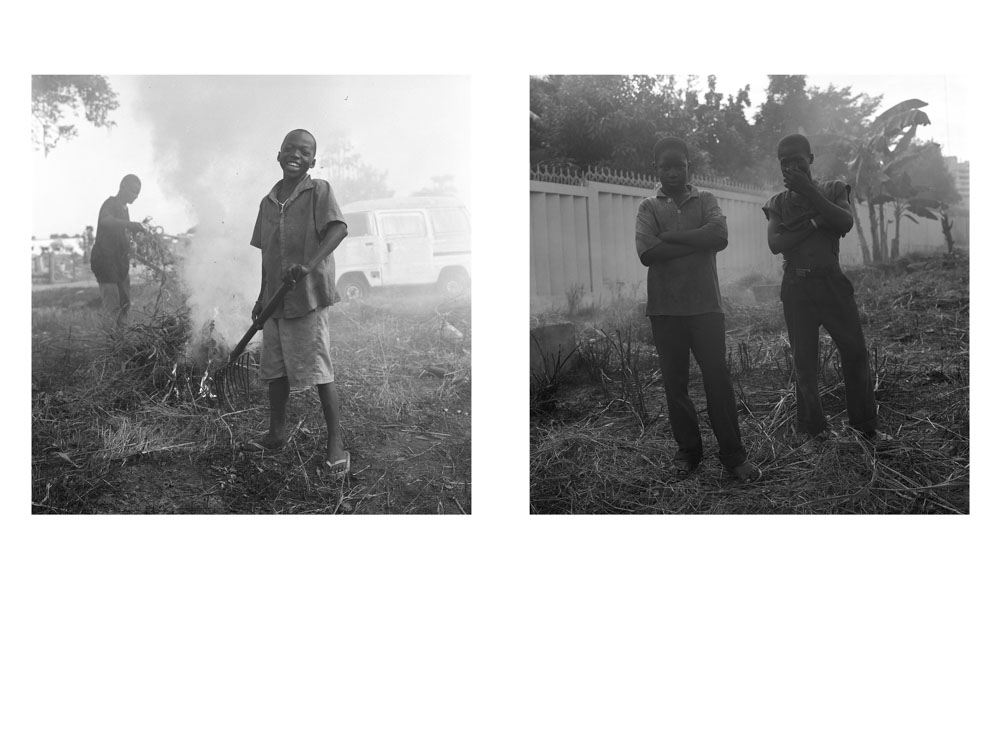
abidjan, cote d’ivoire
Looking through the contact sheets of D. Ab., and knowing that genius is not being perfect every frame, but in selecting the right frame. Many of her images being prosaic and perfect in their own small way, but then, in the top left corner, the boy holds the grenade palm up and makes a face (if she cut and stored negatives like everyone else, does this make this the first frame she took? If so, why did she continue for so many more. Of course she was probably just taking pictures, but it would be nice if she was doing it just to satisfy her subject, or to patronize the mother (so they wouldn’t think her crazy)).
///
The time spent deciding on what to do at night, where to go have dinner, whether to bicycle or walk, or take the train. Taking the train means reading, biking means exercise, walking means (some of the time) you’ll go somewhere closer (but then if you’re closer your options are limited). The only poems remembered in whole are the shorter poems, the petals on a wet black bough, the hands folded like a japanese paper napkin, the this is thy hour, oh soul, thy free flight into the wordless, also the ever-present thought that madness will not come from a realization about the unsolvable ills of the world, but from a snapped shoe-lace.
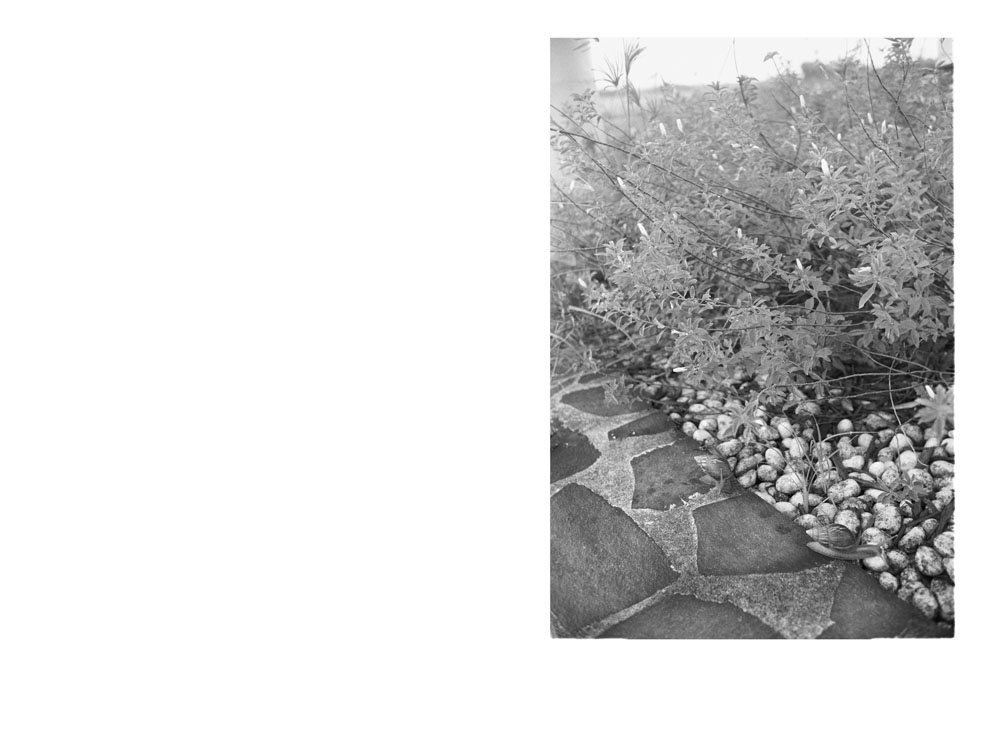
guam
Stealth bomber downed the night before. A $billion+ B2 crashed after takeoff, both pilots parachuted to safety, the northern ridge of the island smoking, helicopters flying low, every radio station providing eye-witness news reports, then switching back to country.
Hotels rot with ww2-era mortars in the pool-side shrubbery (and at dawn, frogs and snails creep from the bushes).
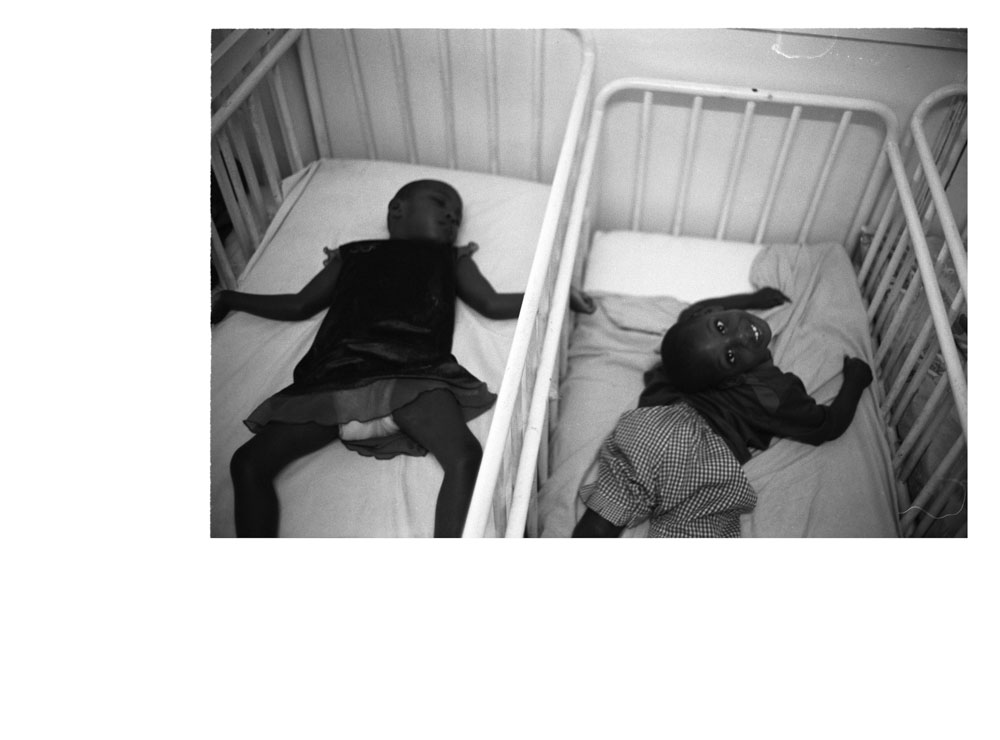
abidjan, cote d’ivoire
Or the further unhappiness of physical happiness (a smile) in a situation where there should be no happiness. Selection pressures even here, where only the healthy and good-natured children are adopted first, and the damaged & hard to control kids stay behind (the older ones are the more ruined ones, the courtyard, the courtyard, (though, in one case, they come to grips with it, as updike would put it, and help around the facility, a squat girl with shaved head holding open the door and brushing the dirt off kid’s shirts (though, of course, only if they have the mental faculties to come to grips))). He would not stop swinging his head back and smiling, though my expression must have been no mirror at all.
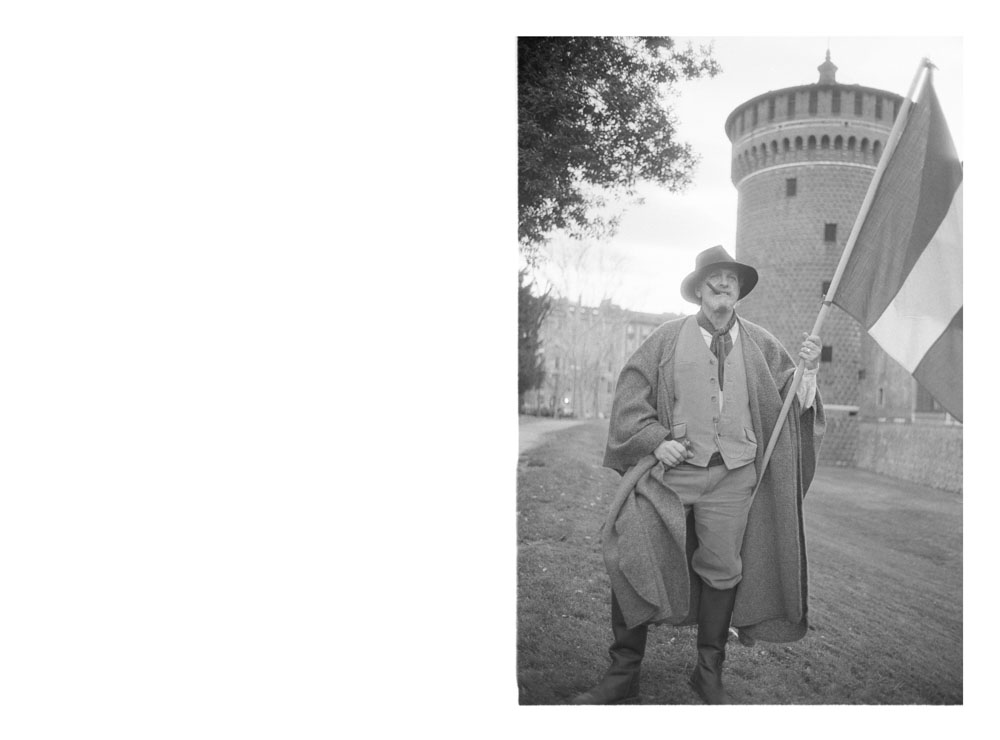
milan, italy
///
MISSING TEXT
Some protest or festival on the grounds of the Parco Sempione where the models bought their weed.
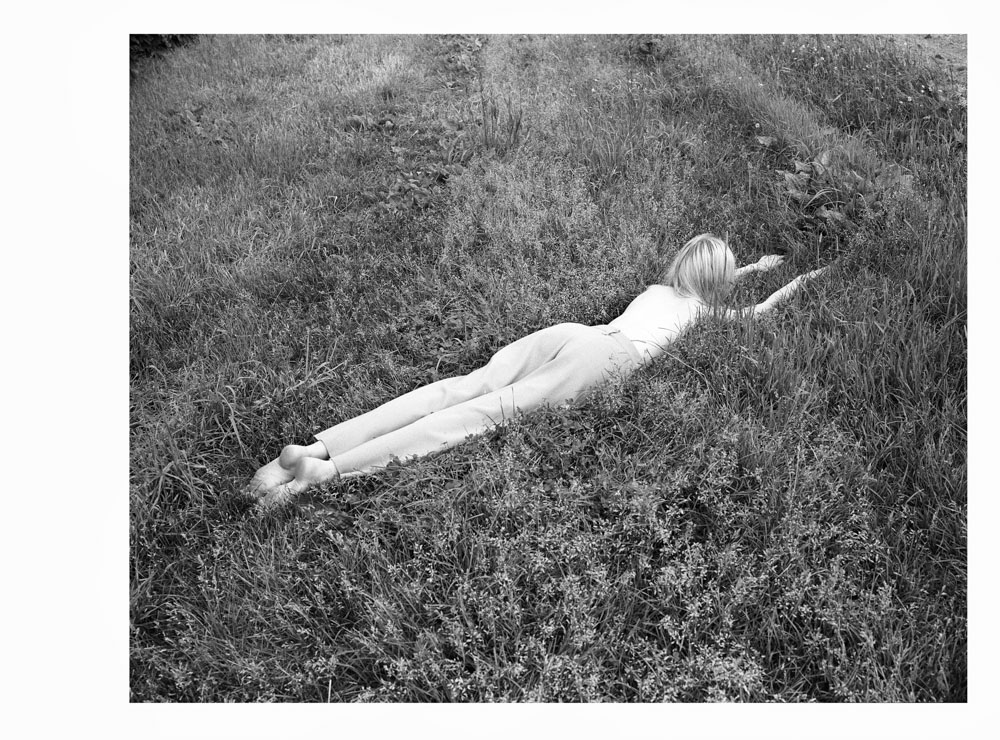
supergirl, long island
C Kent as obviously not Superman because he wears glasses. Rather an insult to people forced by Tintin/Asterix/FantasticMrFox et al to a childhood behind glasses so ill-fitting they rose on the cheeks with each smile, so the smiles stopped (but only for a while).
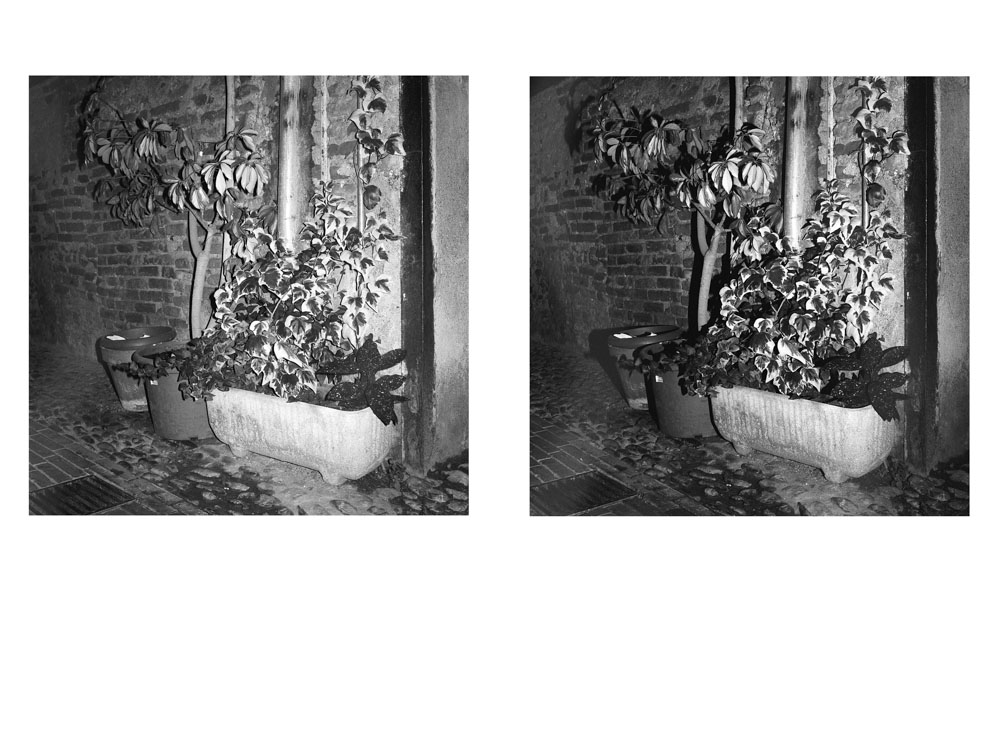
albenga, italy
The issue with creativity in the modern age, exemplified firstly by W. Benjamin and later clean-shaven by L Hyde, is that most art & most creativity is not necessarily salable product, and that to turn the so-called ‘art’ into product removes the essence of the art, rendering it suddenly kind of irrelevant, much in the same way that you can’t learn much about a person’s thoughts on Proust if you perform an autopsy after his death (no, that can’t be right). Regardless. Without the umbrella definition of ‘art’ (whether assigned by the viewer or by the objective governing organization that is the art world (sigh)), a painting on a wall seems quite useless. The qualities that would render it worthy of framing (the ephemeral artiness) are fragile things, and do not hold up to reproduction. The main chain or luxury-chain furniture and house-ware stores Crate & Barrel, Pottery Barn, Ikea etc, all sell ready-framed and curated artworks: typically black and white photographs of plants or of doorways in European and ‘classically beautiful’ cities, or muted color patterns and paintings of barns. There is no disputing the beauty of these works (the lushness of the furled sail, the delicacy of the peach watercolor), but the beauty is commonplace and ‘banal’, and nobody would consider these prints art, nor especially cheap. There are no bargains in high-art either, but for works like this, works that are decorative without ambition, the value is in the value, in the actual dollar amount of the product being sold. So maybe they’re bargains.
///
So, the danger in doing creative work in a world that does not necessarily attach a dollar amount to a day’s quote unquote work (artistic labor being very, very difficult to measure in the same way that you can calculate the correct hourly wage for a bookshop clerk), the danger comes from not valuing, in any way, the act of working itself. The arbiter of success in a market economy (even a post-industrial market economy) is money. This is no revelation, but in warning or in consolation to people whose days do not come with a +$ , there is also a plus something else, which may be described as an increase in skill or understanding of process or discipline. When most days are in fact -$ days (the changes we got wreaking vengeance) the fear is that all effort is sent into the ether, and that all this writing & fiddling & cerebral calisthenic & casual building-up of work is all to nothing. But, we repeat, there is a gain, so for these days we should use, instead, +! , exclamation point standing not for surprise or happiness, but for the satisfaction of doing something constantly and getting better and better at it (the joys of learning a language, for example, of one day hearing Serge Gainsbourg and realizing what a dirty fucker he was). And you’ll notice that there is an equation that governs most people’s lives (because the vast majority of jobs are of a particular sort, wherein money buys ownership of the worker, and the worker gives over freetime & quote unquote ‘personal ambition’ in exchange for money (and the later development & satisfaction of ambitions they never knew they had (the plan B’s))).
Notable equation:
+$ = -! | +! = -$
(more money leads to less satisfaction given that more satisfaction brings less pecuniary reward) Though, of course, in most cases this is only applicable in the early years of development (16-27), after which new ambitions (creative director) & new realities (kids wives & dogs (cats)) emerge.
In the beginning the artists are filled with lust for art and then there is the dawning reality that art is just the gloss in the paint on the walls, and that sometimes not only is there no paint on walls but also no walls.
Sidenote: the understanding that some people actually do nothing, that though some op-ed writers comment on personal agency and others on the credit binge, there are actually some people who only consume. Who passively consume in trailers by man-made lakes, drinking four beers before noon and not even having the ambition of being full-bore drunkards (why, that would require dedication). There are black holes in this universe just as there is pure evil too (pure, pure evil as sensed in certain train corridors, or when that man walked into that road-side pizza joint, or driving Nietzche mad (the flaying of a horse)), and it is difficult to come to any conclusion about the worth of artistic effort, only that when you are asked ‘what are you doing?’ by a woman at a cocktail party you should have an answer, and not feel, beneath your feet, the yawning of the black hole.
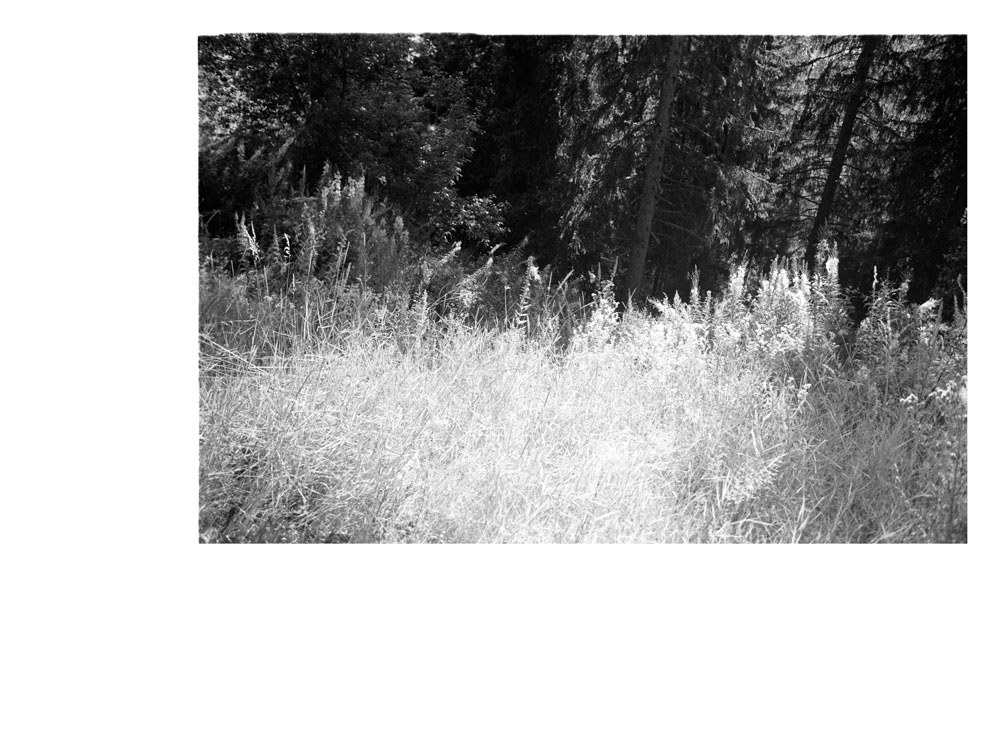
long island, new york
He being the only punk in town, riding a long board up and down the pavement of this, an understated yet no-less glamorous town in the Hamptons, where average housing prices edge around the million. He ate peanuts with his head down, demure, and would not stop chewing them despite the click of the shutter, but there was no need to ask him to stop, it was more interesting to try and time the crunching of molar on molar.
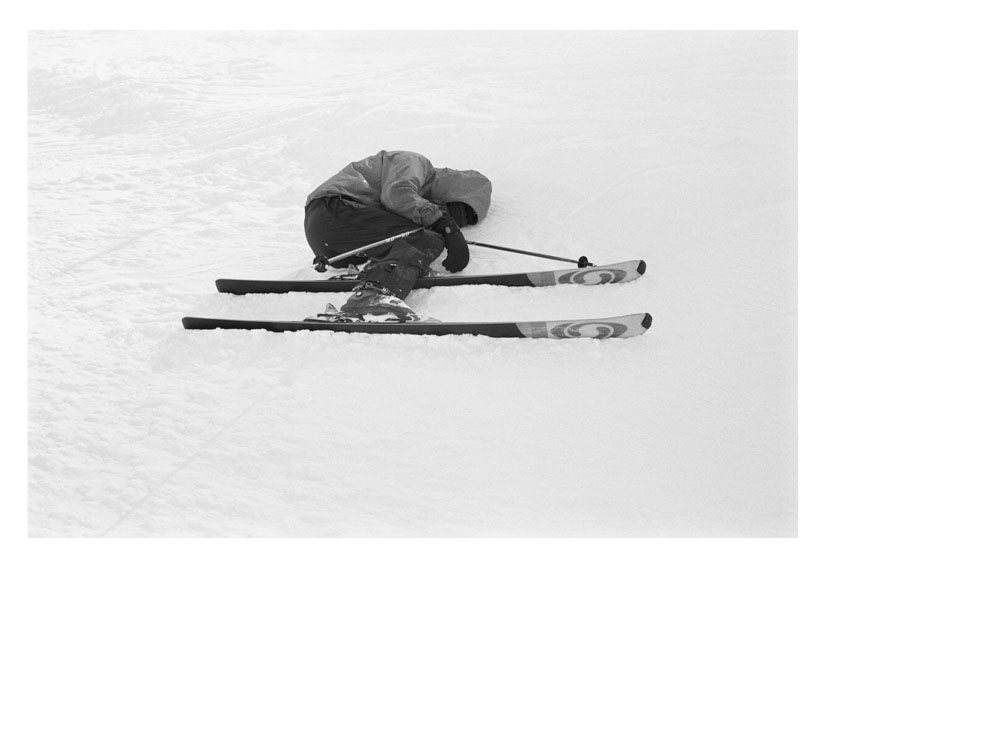
montfort, verbier
An unanticipated change being the evaporation of several inside-jokes (inside jokes as jargon specific to a relationship: when the relationship dissolves, so does the jargon). The concept of the black-hole and how it ate us (that sound of eating), oop, no more.
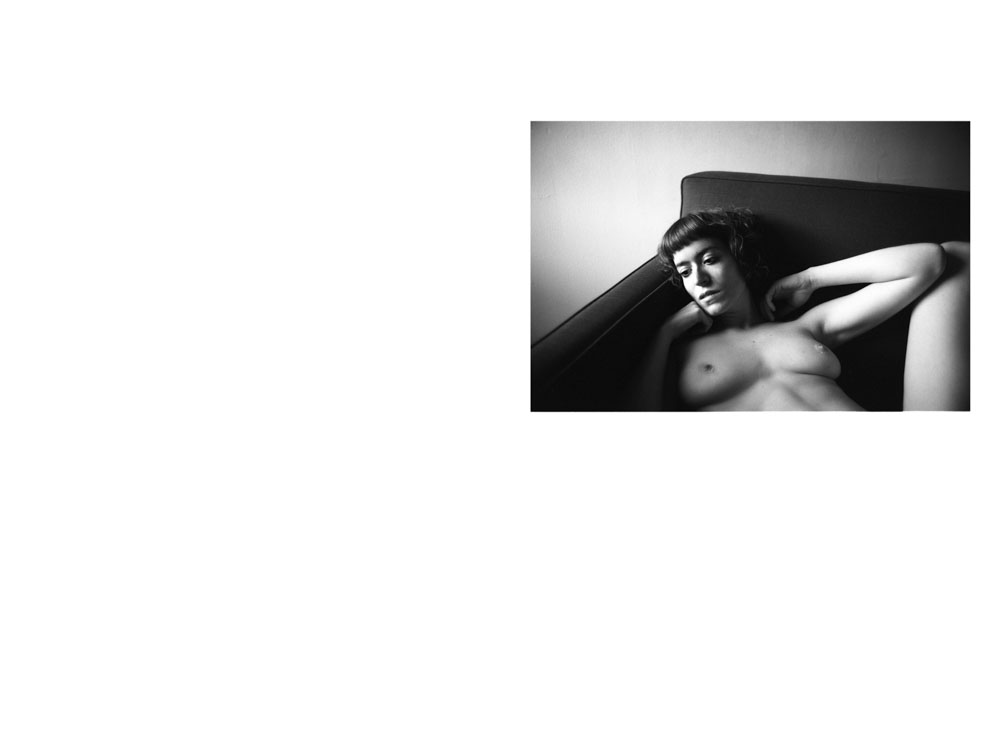
east twelfth street, new york
The precedent set by models-turned-photographers is not especially good. Models as a whole become convinced of the relevance of their attractiveness, when time itself, time, the universal force that nobody has learnt to control (not nivea, not memorex, not w.g. sebald), when time itself destroys the authority of a face’s beauty, then beauty should not be replied upon. It can still be enjoyed, however, much as you can still enjoy a fine spring day from a cafe terrace while carrying an umbrella. Models though, do end up pursuing photography in large numbers, and there are success stories: M Sorrenti an example, though as rawly-talented as he is, his fashion work with women chemistry and “arousal” in his subjects, a reaction perhaps to his being very, very good-looking (disputable). Others crumble under the weight of their attractive-ego, and cannot photograph people effectively: as mentioned elsewhere, the photographer should not really fill the room. New Yorker staff photographer Platon says there’s not enough room in the studio for two egos. If you want to capture a subject as they are, as larger than life, well then, you have to make yourself small.
In the twenties and thirties, the elsewhere-mentioned L Miller was a successful fashion model and then photographer, and she mixed with both art and fashion people freely, as both subject and potential lover. She left New York for Paris with the intention of assisting Man Ray, who ordinarily did not take students. L Miller, however, had some things to teach the then-legendary photographer, and she became his lover/muse etcetera, and dabbled in solarized printing and surrealism. She returned to New York, set up shop, began to shoot for Vogue, and after many years of turbulent relationships, and time spent in Egypt, she was in London with her future husband R Penrose when war broke out. She began a new career as a war photographer, on assignment with US troops for Vogue, the first female embedded photographer, and indeed one of the very first war photographers. She shot with a rolleiflex, and leica.
Many of her photographs show a surrealistic streak possibly interpreted as academic detachment: explosions on a hillside glimpsed through an open balcony window, possibly from a hotel room. But the most notorious example of thematic confusion is a photograph taken of Miller in Hitler’s bathtub as victorious Allied troops flooded Berlin. Miller, photograph by the Life correspondent D E. Scherman, washes away the dirt of war in a cramped tub in the fuhrer’s bathtub, her army boots side-by-side on the bathmat. What makes the image most unsettling is her half-smile and arched ‘oh hello’ eyebrows. Though the story behind the photograph, the weeks of drudgery following troops through numerous sites of atrocity, justify the relative paradise of a bath, the typical position of this image in exhibitions of Miller’s work is mounted between the other images of those days, the elsewhere-mentioned SS Guard in the Canal, and the secretary/suicide. Scherman and Miller arranged the bathroom like a set, and took turns photographing each other. She joked about washing off the dirt of Dachau in Hitler’s bathtub - her intentions and sentiment swirling in curious eddies.
In childhood she was raped by a family friend, and her father was an amateur photographer who would often photograph his beautiful daughter in the nude. She later stood with rolleiflex on a mound overlooking the unfinished mass graves of a liberated concentration camp. A disconnect would have been necessary, and models, models who by profession inhabit fictional & idealized images of real-life, are suited to this kind of detachment.
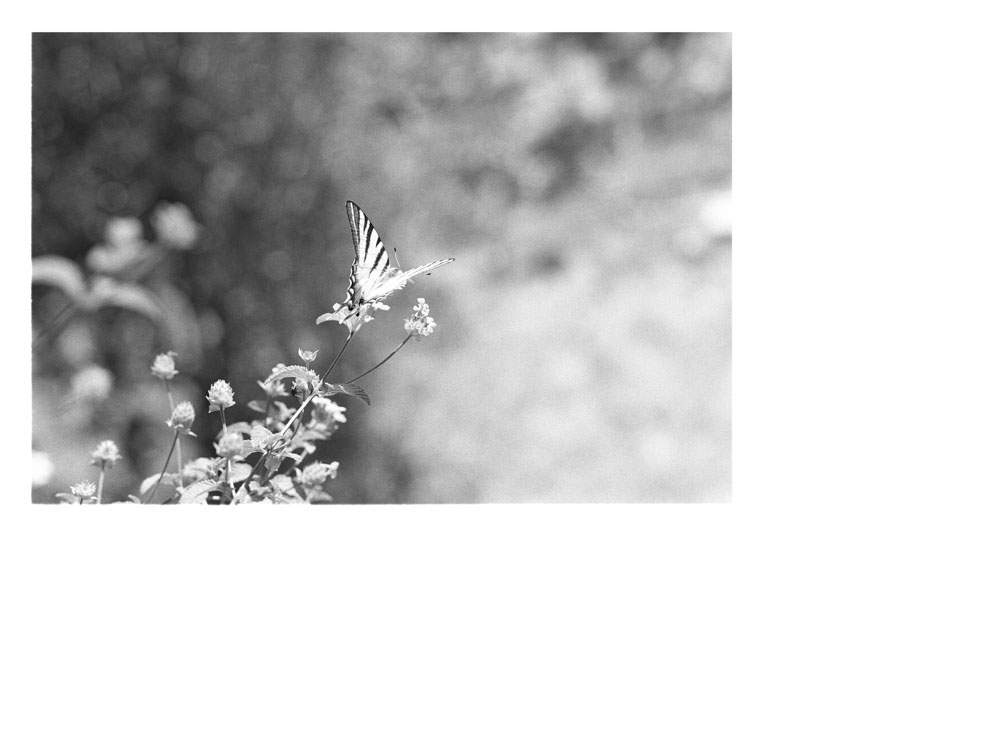
alassio, italy
And the fear of beauty comes from the need to acknowledge it, to see light and contract pupils.
The specifics of the conception of beauty differ from culture to culture, but studies (the most famous of which summarized in Stephen Pinker’s almost pulitzer winning book the blank slate) show close similarities between the whole. Symmetry as something we can all agree upon. The beautiful in photography being a very long discussion indeed, but potentially addressed in some meaningful way using the f fenon style of novels in three lines, that icon of overkill, to whom we pay homage.
Beauty in photography as portra-400 NC, by which the pastel tones of boarding-house dining-rooms around breakfast-time are preserved in ample grain and with a depth of field facilitated by mid-speed film.
The use of a tripod to allow Lewis Baltz to shoot leveled & composed tracts of industry with a 35mm camera, b/w film set at the smallest aperture possible (though not quite the f.64 of photographic lore).
Camilla, as photographed by Roe Ethridge, being subject-beautiful above formal-beautiful, no gridded briese hmi surpassing in tonal perfection red bikini on early-spring hip. Beauty not as art but as beautiful women (a classic conceit).
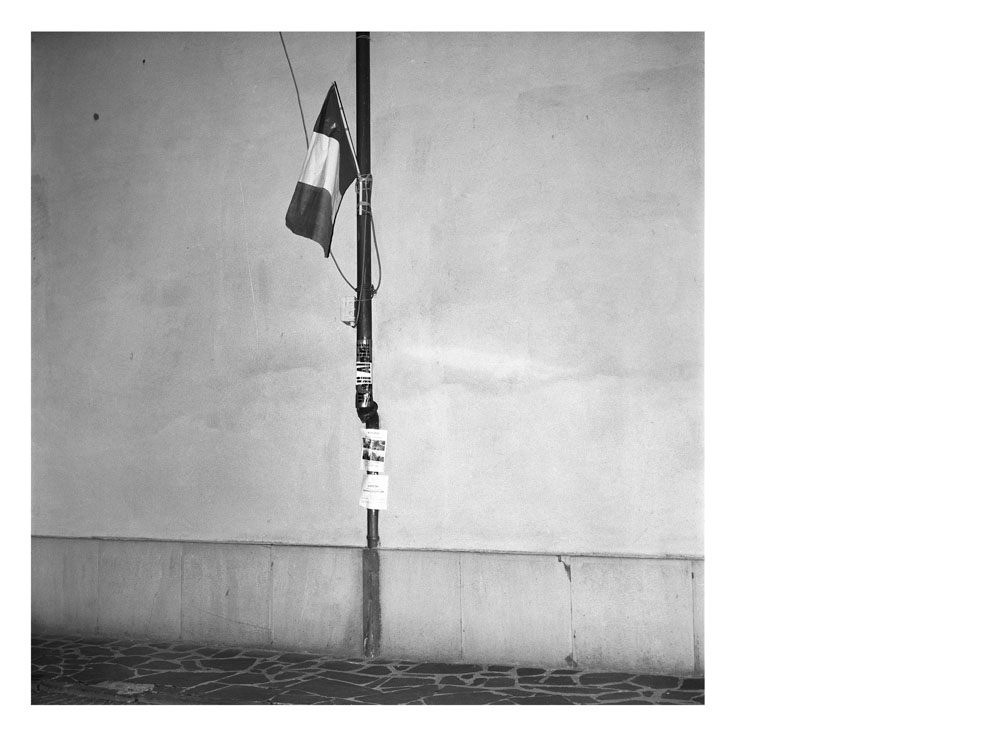
albenga, italy
Flag off the town square in Albenga, one of those funny towns that has no real international brand, and exists as a localized phenomenon. A memory of a trip remaining pure even in the years following, since there is no universal archetypal ‘Albenga’ to dilute your remembered experience with the collectivized experience of everyone else. New York and Paris being imaginary cities more than real cities: the promise of New York being divorced from the reality of New York. Paris as anthologized city, written about, fictionalized. DdL, white noise: no one sees the barn/ we’re not here to capture an image, we’re here to maintain one/ every photograph reinforces the aura’. Elsewhere-mentioned travel of cameras not people, which bring experience back... then increased fidelity of the recording format and the viewing medium... hence the feel of travel without the actual travel. The increased validity of the secondary experience, and the degrading truth of primary experience. What is Paris if not the thought of Paris.
(burnt rubber in the metro on a rainy winter evening, it’s 1998, ‘the yellow smoke that rubbed its muzzle on the window pains.... curled once about the house and fell asleep’, beginning to see the light in a red room on rue monsieur de prince (everyone with badly-bleached hair)). >>> what is paris if not the thought of paris
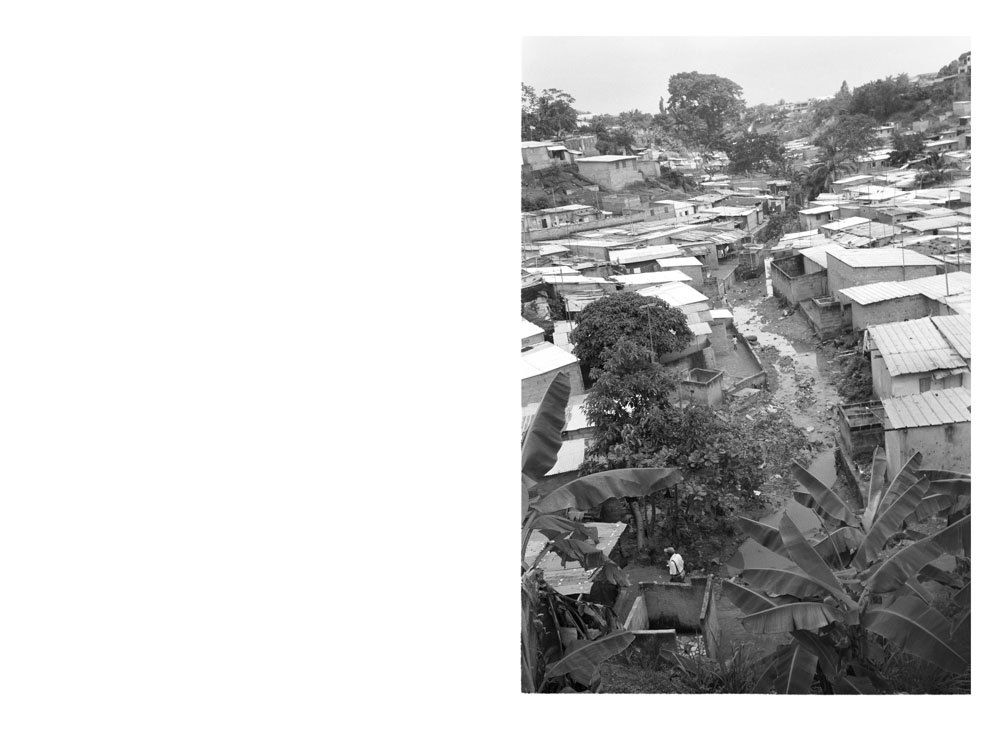
abidjan, cote d’ivoire
The guns-to-caviar index describing shifts in spending, from defense (fighter jets) to private enterprise & the hedonism typical to confident times. Typically an inverse relationship: war is afoot, the populous hunkers down and more money spent on rockets than on lavish balls and flower arrangements through the foyer; or peace is declared, and we celebrate, no more battleships, we toast each other’s health. But in recent years, the trend has shifted, and the relationship has been directly proportional: despite there being war and high military spending, there was also a culture of (relatively unpopulist) excess: the suggestion that someone is benefiting from war, or that our global conscious has been knocked off kilter, and that we are in error, (but perhaps this shift in the trend is due to a flaw in the data, which compares sales of fighter jet with sales of private jets: 9/11 being an incident that prompted both swift military retaliation (and spending), and a tightening of travel regulations whereby it was more convenient for the ultra-rich to travel privately through one of the host of time-sharing private jet companies that popped up like mushrooms in gloom).
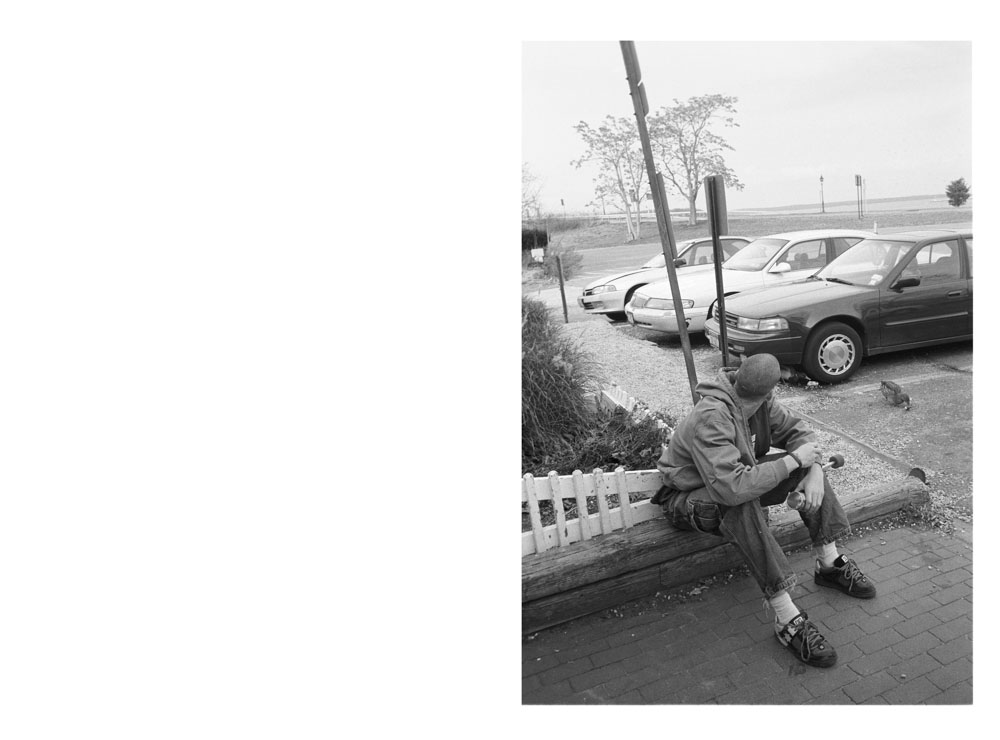
sag harbor, long island
A crucial component of modern art being a lack of emotion, or if there is emotion, the inappropriate emotion for the given situation. Smiles and joy and rainbows and nudity for nudity’s sake associated only with the anathema that is commercial work. So ah the modernist angle is the oblique angle without subtlety, or if subtle, so off to one side you’re approaching from a whole new place, and thus then oblique once more (subtlety of emotion as a new formulation of the ‘obvious’, just as coca cola has been getting successively less sweet over the decades as our tastes change (disputable)).
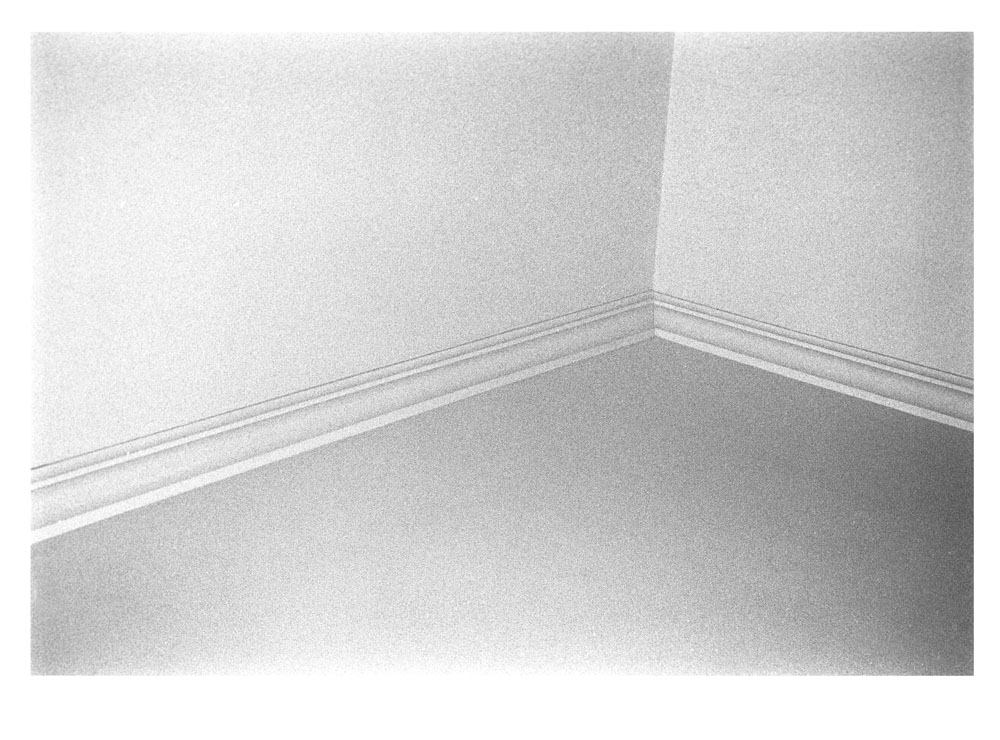
new york
Idealized notions of individual agency imply that a man has complete control over his own life, and in a free society complete responsibility for advancement (and failure) lie with the individual. The change discovered is the possibility of a life becoming a different life without being quite aware of it, as trends and patterns of behavior emerge and exert their shifts. A constant evolution of a person is taken for granted, but the hardening of aspects of a character into gnarled neurosis and things-you-can’t-talk-about not taken into account by normal descriptions of ‘growth’.
The changes desired symbolized as a group over one hundred strong heading forward into the future like creatures on a great quest, the taller ones helping the shorter ones as they climb boulders up a slope, fjord rivers, tea cooked at nightfall & passed around in a steaming pot, eyes dewy by fire-light. The changes we got: increased hermitism, defense-mechanisms strengthening; an inability to talk about the future; pandemic singledom despite publicized availability; supposedly wizened doubt gnawing at a youthful confidence now grown stagnant; sadness as something to be carried just as cellphones and iPods are carried (always, and mourned if lost); passion dimming under the pressure of rationality; ownership as a preference for permanence, & not a sign of success. But then: the moving of the goal-posts in consideration of a real world now grown more real through increased exposure (time as a wave that brings us closer to land), and the knowledge of relative standards, and a happiness in that.
(We learn to know what we like, and then we gorge ourselves on these things that we like).
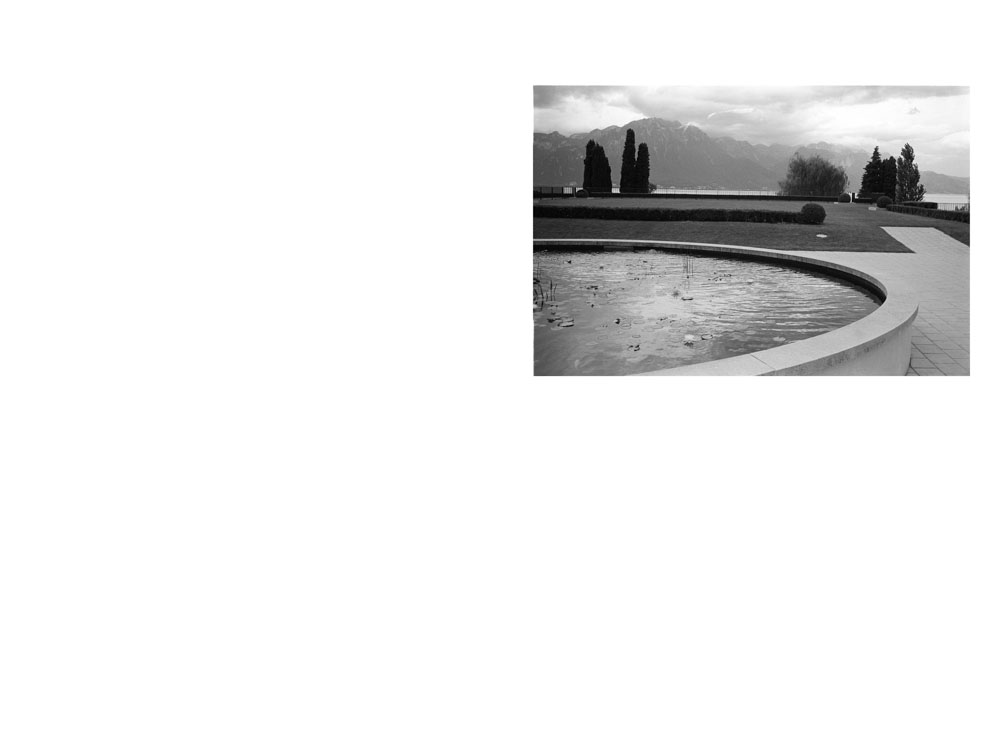
montreux, switzerland
Monet as a man whose blindness, in retrospect, influenced the way he painted, the garden of Giverny reduced, through paint and cataracts, to smear of color and... impression. The applicable truth for the bespectacled: wearing glasses predisposes you to a photographer’s life, since you have already been looking through a lens for a very long time.
The reality (always disconnected from the story), is that Monet was painting in this way, impressionistically, long before cataracts made his garden and water lilies all smudgy. As a student he visited the Louvre and, in contrast with the other visiting painters who made faithful copies of the displayed works, would sit by a window and paint the gardens. And, interestingly, at the age of 27(8) he tried to commit suicide by throwing himself into the Seine.
Sidenote: the 27 club, or forever 27 club, a group of (mainly) musicians who died at the age of 27. Hendrix, Joplin, Morrison, Cobain, & our elsewhere-mentioned good friend Richie Edwards.
Val Kilmer at a party talked to super-friend MC about the universal male fear of joining the 27 club, and went on to say that if you get through 27 you have nothing to fear, MC, you’ll be ok. This was at a time when MC himself was suffering from an irregular & perhaps ectopic heart beat come from striking his chest very hard against the steering wheel of his girlfriend’s borrowed car when a hairdresser hit his car from behind at a stoplight on Laurel Canyon Boulevard just south of Kirkwood. But the fame & influence of the members of the 27 Club, and the prestige of being a member, create a different pressure. If you get through 27, you’ll be alright, but, meh, you will also be just alright. You will not be a mythical figure.
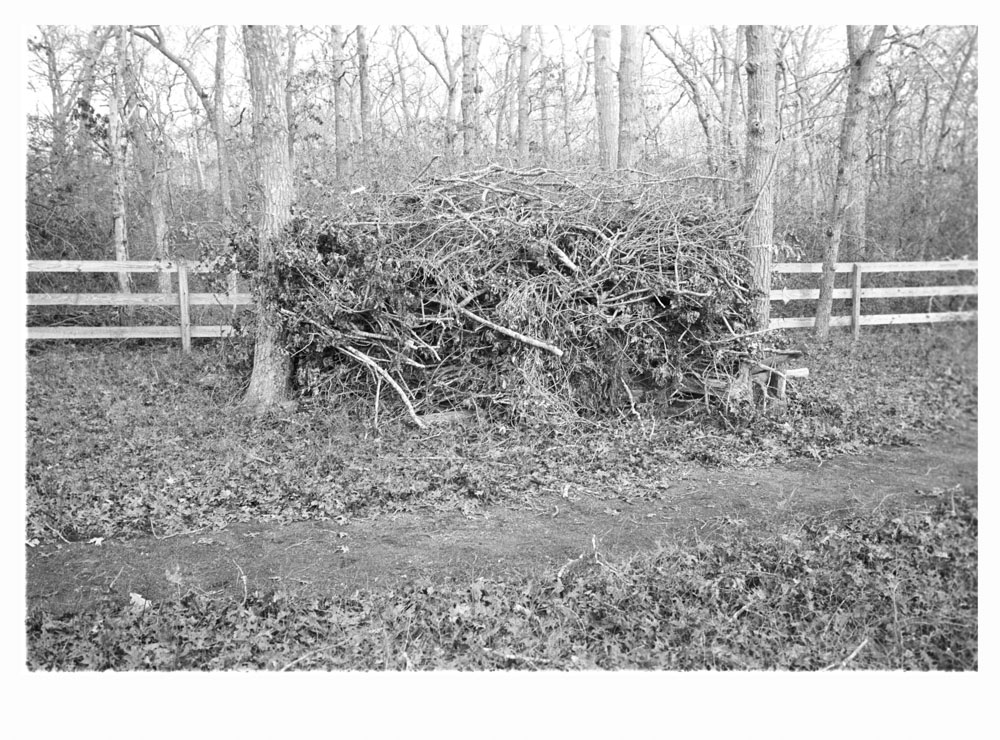
long island, ny
This year’s love of exhibit titles that are lines from adolescent notebooks, or verses from the quiet songs on a punk rock album, or the contents of a thought bubble in a bad knock-off of calvin and hobbes, and either way always solipstic: my way is the only way or is it, i know where the summer goes, etc. Or similar image titles that are bad in the way that they unforgiveably provide unnecessary subtext to the photographs, photographs being best when left alone, instead of annotated with every silly thought that enters the photographer’s head, like ‘but we were happy that day and not the day after’, or some endless whining about something that happened a long time ago and which exists only now as a kind of shirt so badly stored the moths have gotten to it and it can not be worn. It has no real-world value, it covers with mangy thread the new suits either side.
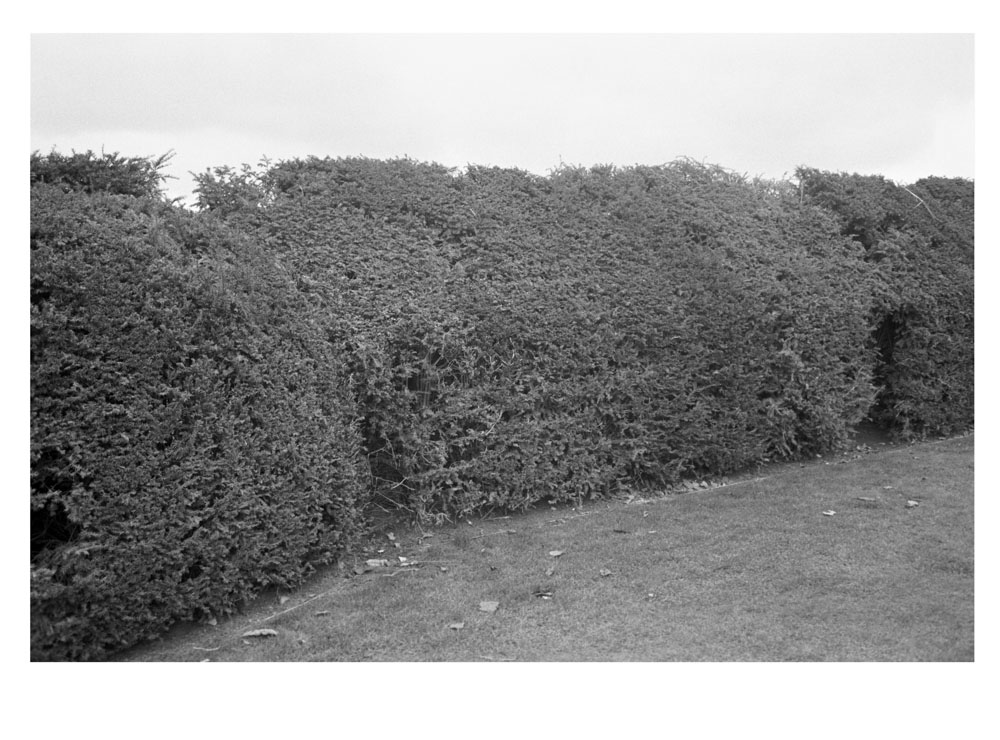
paris, france
The gardens best experienced one night years ago, and for only a few minutes (we were very quick for fear of being caught, bare just to the mid-thigh, and giggling more than passionate).
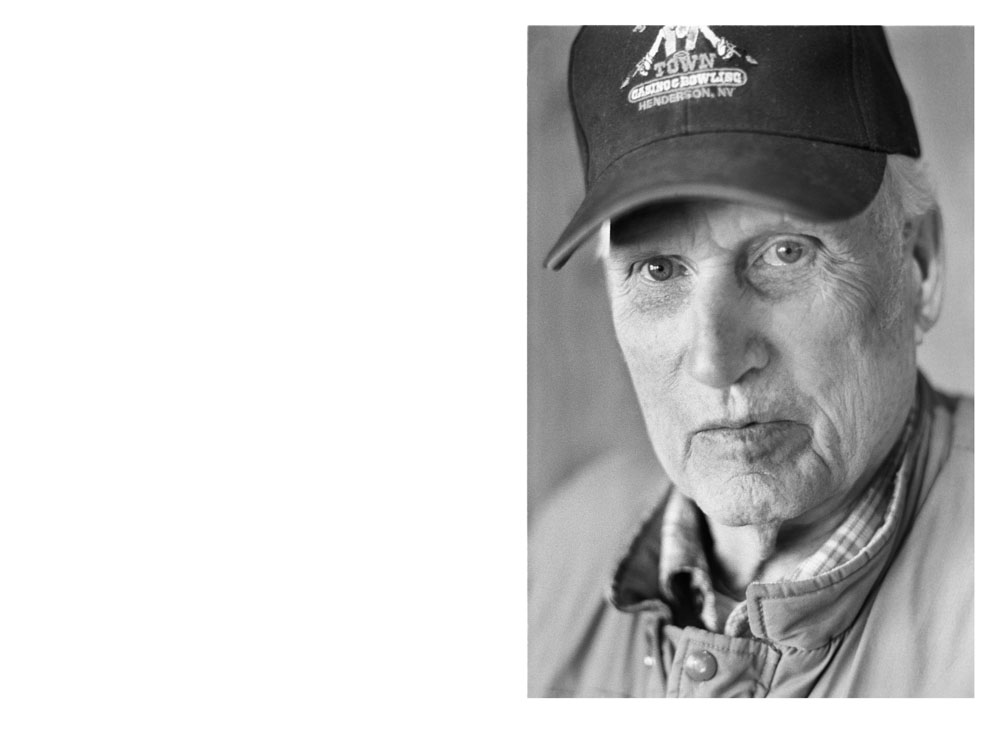
primm, nevada
He came from Nebraska and was just visiting, a self-proclaimed farmer. Squat short man with eyes that got caught on one thing, and when he moved his head his eyes would float for a moment, caught as if on a badly-mounted hook, and then reposition. Hands in pockets of a well-worn denim jacket, he never took them out, he stood in the airlock between the blizzard and the jangle of the casino, watching drivers scurry from their cars and shake off their boots in the damp (he said he’d never seen anything like it, and repeated the phrase, he said he’d never seen anything like it (no shaking of head though, just eyes down-turned watching the boots tap toe-to-floor)).
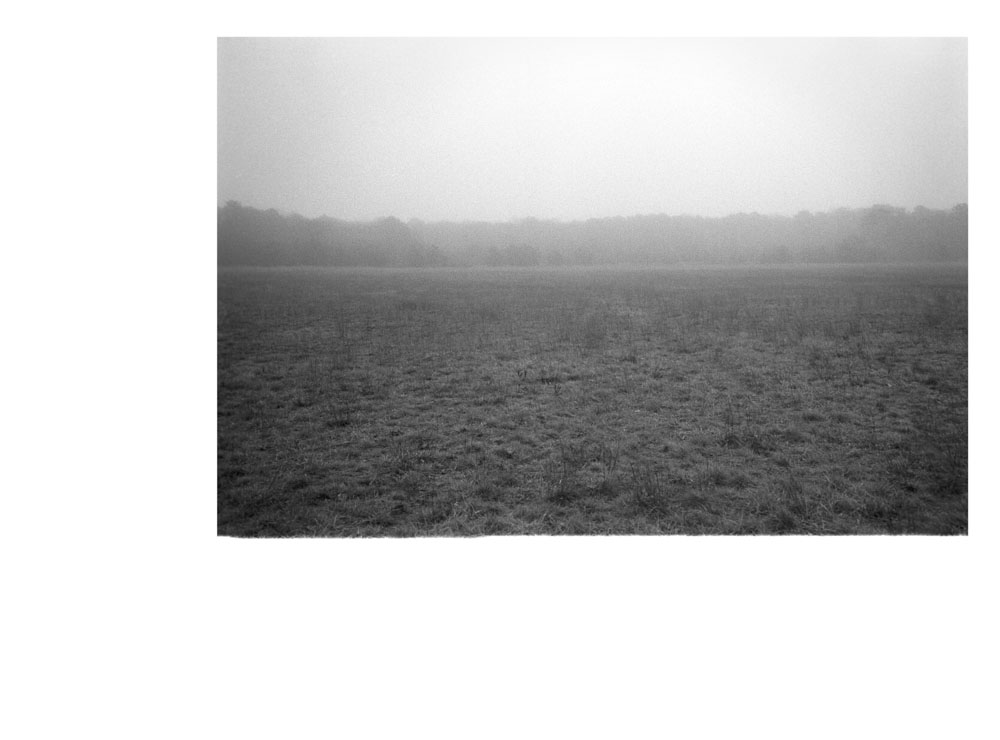
wainscott, long island, ny
Still climbing stairs two at a time like your legs are half-size and every flight is a struggle. But it’s just late night and the heavy door swings shut behind you. Stepping up without the full dignity of an adult, without the trudging one-by-one ascendance of someone back from a long day of work: we’re out here doing our things and lost in the doing of our things (the change we wanted, a service industry: the change we got, not really understanding what it is we do). And downstairs too, a new habit: the last step jumped over to land on the ground with both feet, as if ‘ look, I’m here’.
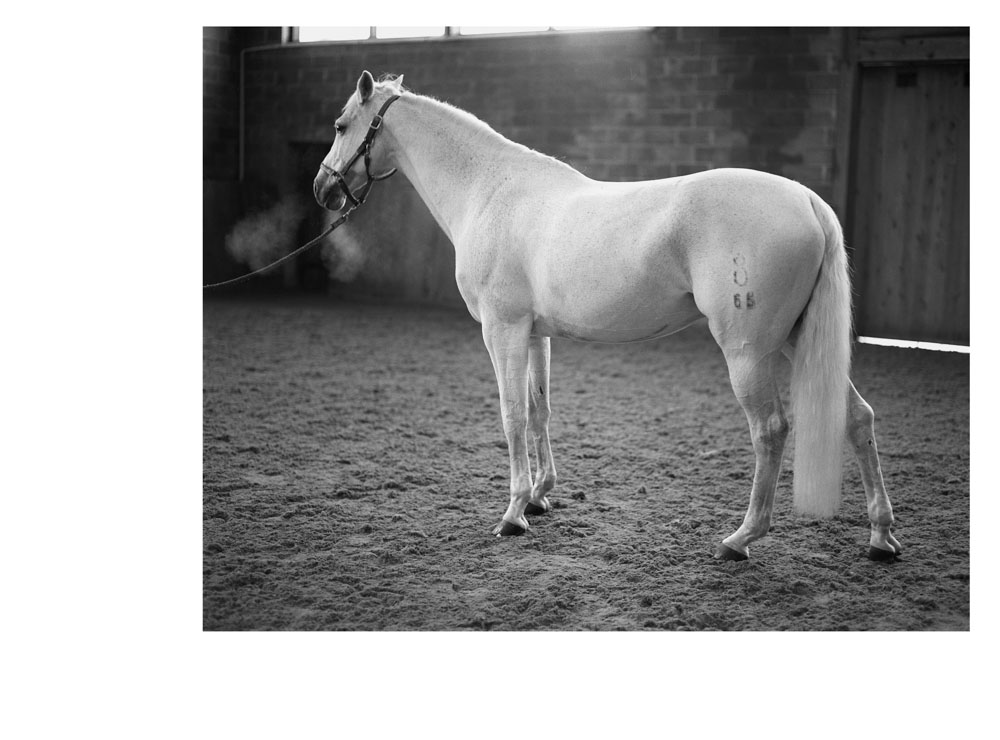
sagpond stable, sag harbor, NY
The sound of the mirror clanking upward in the pentax 67 being so loud and shocking to this horse that only ten frames could be shot, after which the leica and it’s finger-clicking operation proved a bit more humane (though of course the medium-format frames came out better, 45mm leica lens too wide, showing handler holding reins (and resolution failing to show horse hairs bristled against december).
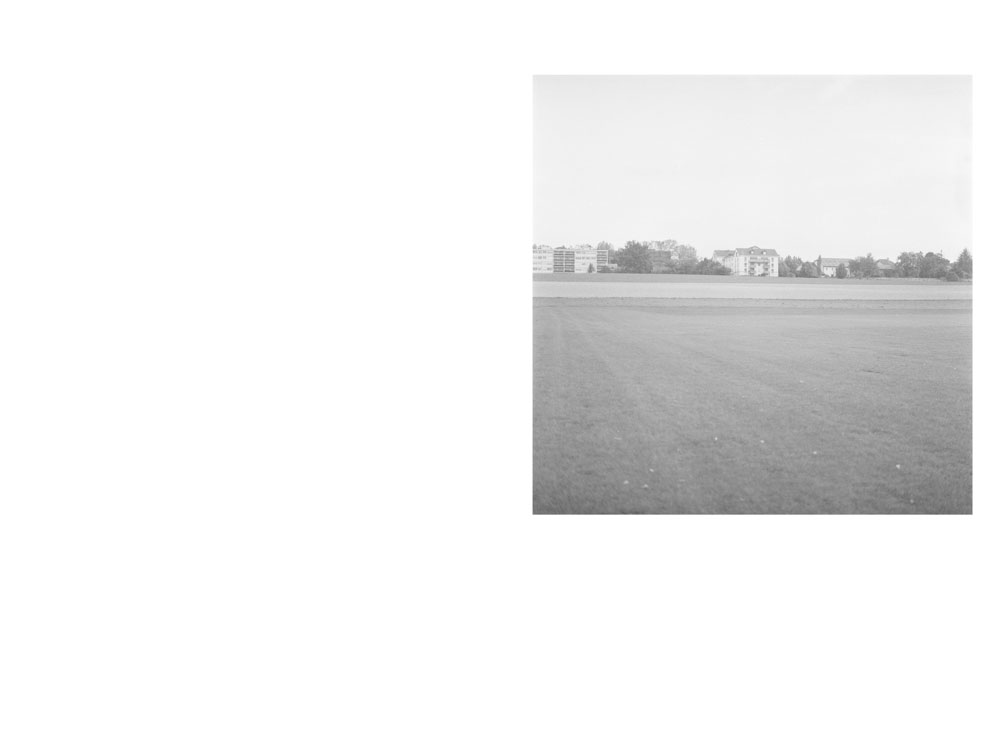
meyrin, switzerland
>>> The elsewhere-mentioned environs of the Large Hadron Collider, less the secure wasteland of popular imagination, than a pretty boring part of the world: the suburbs of a town that not too many people consider exciting, Geneva, though which of course has its charm (frisee salad and Valais wine, croutons soaked in grease, ordered at a yellow-clothed table on a cobbled street one night when being alone was a favorable thing). The town of Meyrin a town that does not possess characteristics anyone would say suggest the home of the largest & most-cinematic science experiment of our time, and which does not really have any hotels. Except the one right by the LHC main campus, where I was given a room that had to be cleansed of spiders for roughly 45 minutes, and where the breakfast room was set for eight-four, but served only one, and where the proprietors peeled carrots & potatoes into ceramic bowls, talking in lazy french about a man (perhaps a brother) who’d said he was going to visit, but who did not.
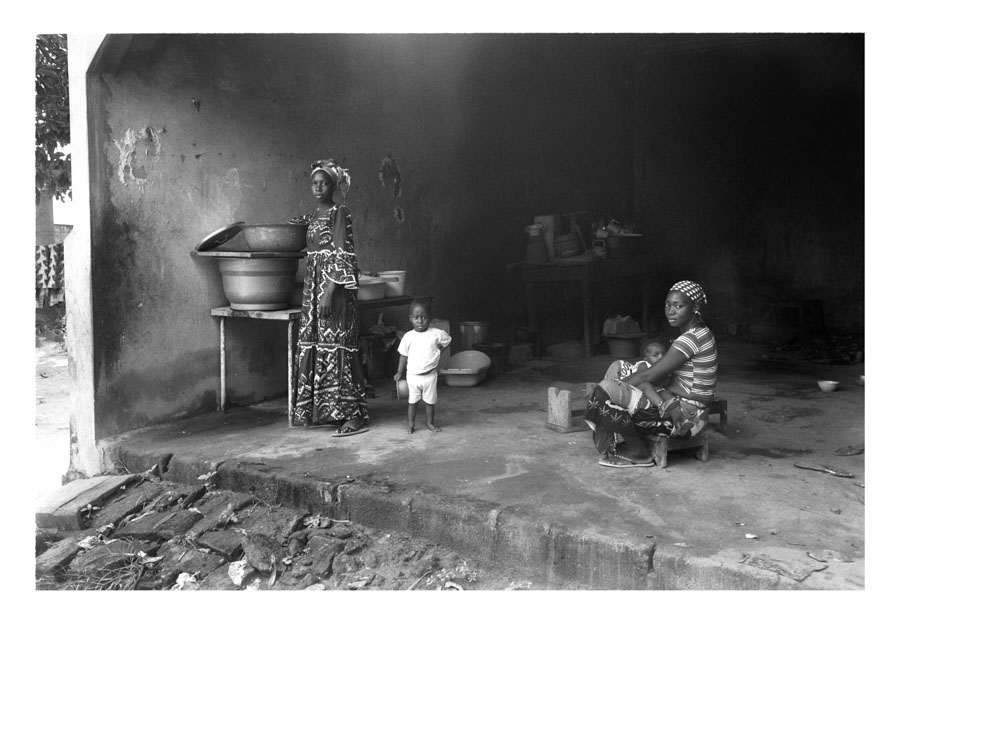
abidjan, cote d’ivoire
An article describing the effect of forward-facing strollers on the development of infants (rear-facing strollers, or ‘buggies’, forcing a constant visual interaction between pushers & baby, thus 25% more smiling & talking), triggered a sudden impulse of paternalism: the thought of carrying your infant in one arm, and with the other free hand opening the door of a drug store or coffee shop and walking through, all the while talking & smiling 25% more. To be forced by the relative differences in development (and jaded over-knowledge) to explain everything in simpler ways, to be forced to reassess the world to explain it further: to answer questions regarding things we’ve forgotten long before, like the ocean or moon.
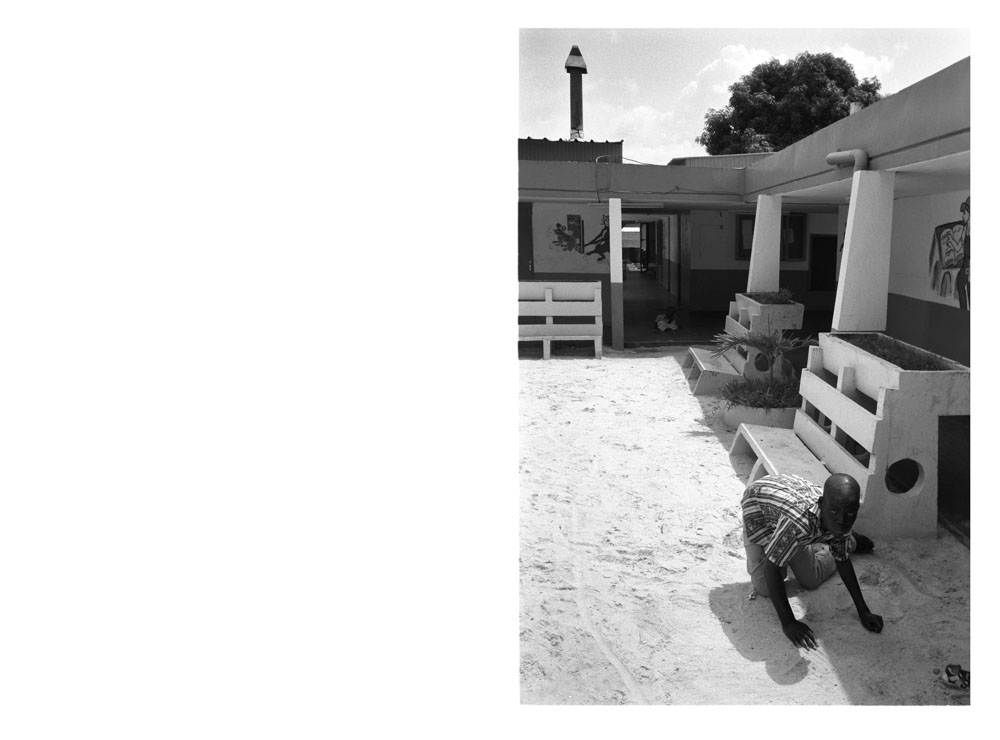
abidjan, cote d’ivoire
The overall terribleness that is photographing misery, of composing a photograph of a subject without sense enough to cry, but who sat within reaching distance of the same bench every visit, his shirt changed by an orderly, his pants yet soiled & an expression of confusion in vacuum, all components hard to photograph, but harder still when two children hang from your neck, one with legs wrapped around a leg, the other, smaller, with ankles locked around your torso, a sniffling in your ear and this overcast day, bending down on one knee, struggling to photograph with only one hand, aperture adjustments made with an index finger stretched from the shutter. The knowledge that these, of course, of course, are the lucky ones, the terribleness of that statement, the distinct and sudden realization that such statements are so worn smooth by truth that they have become cliches (and knowing the inadequacy of what it means to become cliche: the sad fact that being a cliche makes the statement, in some way, less real and relevant). The point of taking a photograph, of providing a document, yet what cause is the document? The disingenuous thievery of someone else’s misery (whether they are conscious of it or not), of taking a photograph (here is is definitely taking) and not giving back, the vastness of the gap between what you want to do and what you will do (or can...). Theories of concerned photography do not lessen the weight when you are already heavier by an infant 70 pounds, kneeling in a damp courtyard, (he looked up with expression of confusion in a vacuum, of suffering without understanding (eyes seeking, but not quite seeing)).
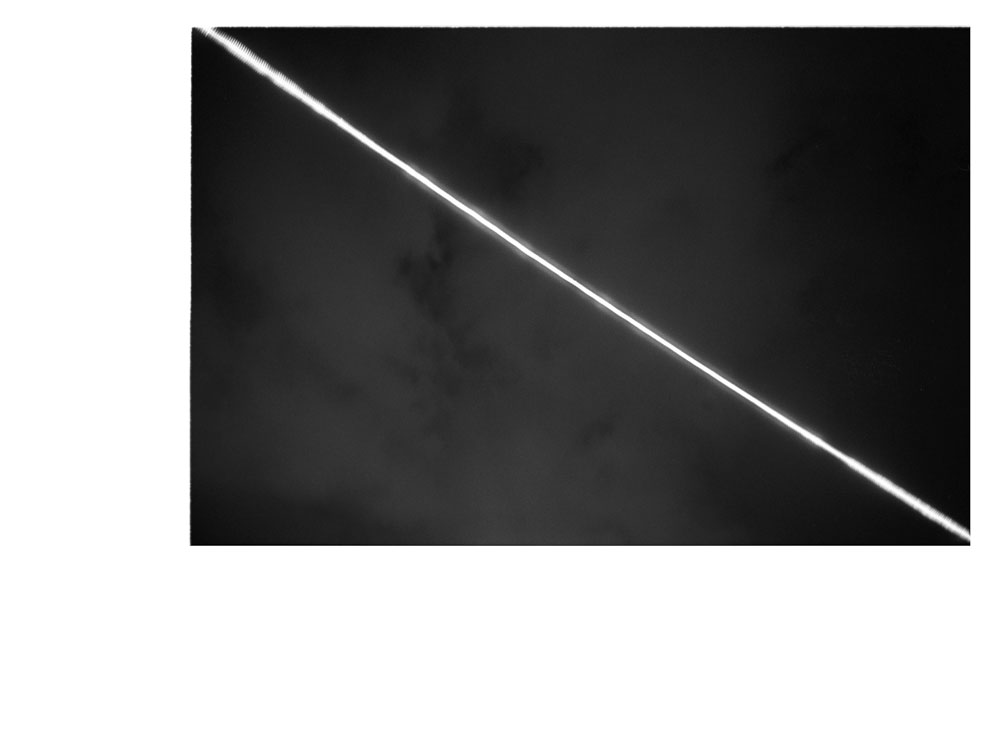
mediterranean sea
F Bidart: ‘we fill pre-existing forms and when we fill them we change them and are changed’, and for others, before they fill them, the original state of the forms remain. But in the end the canon of product is changed by the new product itself, and t.s. eliot too thinks we are like the snake, who in shaking his head, feels his tail shaking too: tradition and the individual talent shows that the present can not be informed by the past without the past then being informed by the present. The ‘tradition’ nominally historical: the true sense of a ‘tradition’ finds relevance only in the common & popular opinion of well-versed & informed arbiters.
Now we ask: is Franz Kline irrelevant? Their answer: no.
Can anybody paint a painting ‘better’ than Ingres’ La Source? This: disputable.
New forms of art do emerge, but always in the style of Bidart’s comment: pre-existing forms that are changed by our filling them. Pity on the fool who wants only new forms, or who thinks if we can’t have them we might as well have nothing at all (words spoken by a character in Chekhov who shoots himself twice, the first time unsuccessfully, the second successfully).
Though of course, this argument is useless. We all know that the snake can move his head without moving his tail (as a cobra does before striking), but it is of the utmost importance to note that this gesture does not move the snake forward (creativity and the new-filling of a pre-existing form do not necessarily lead to progressive development of the forms).
>>> The string of lights that hangs between two funnels on a passenger ferry traveling between Savona, in Italy, and the Corsican city of Bastia (passengers littering the deck with Pietras in hand, sitting on wind-blown deck-chairs ‘til midnight, when they retired to their cabins >> the deck chairs remain, blown sternward by the mediterranean night-breezes > we bet on their progress)
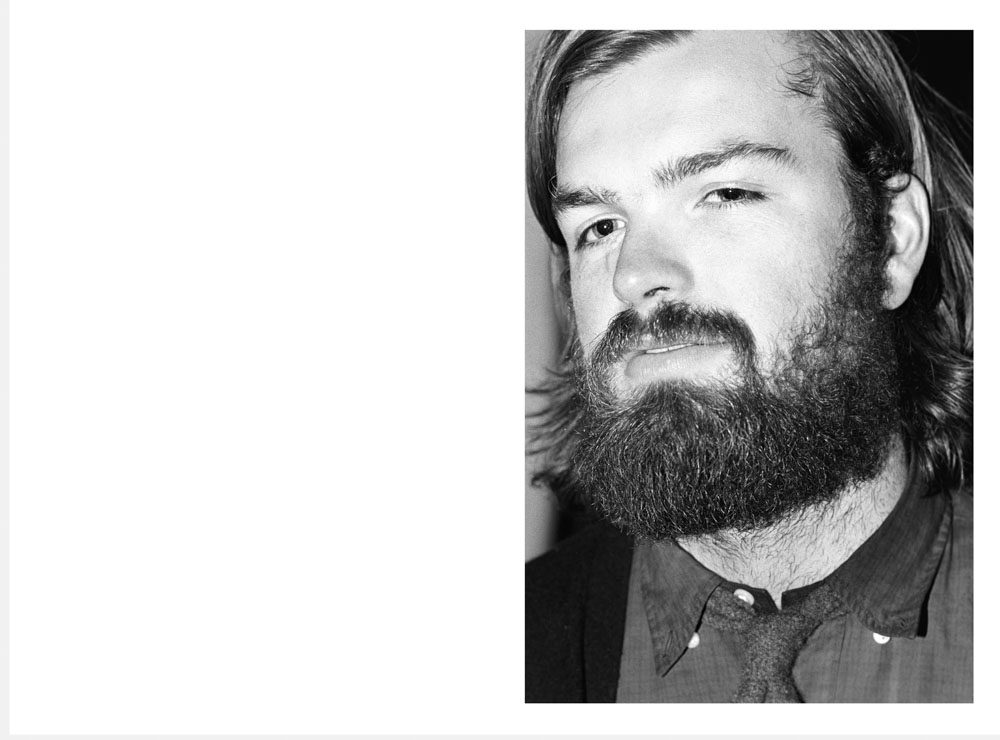
new york
The sudden abolition of your authority over another person’s life, a terrible side effect of ending the relationship. When someone asks how she is, and you have no real answer because you aren’t really in direct contact anymore. She no longer writes constant text-messages as if to a diary (something people do these days (twitter for example) and which may explain the current deficit of diaries (or, really, the kind of secret diaries kept in sock drawers, not blogs)).
Or, even sadder, when photographs are reminders of the feeling of being together, but not reminders of the actual context of the photograph’s taking (a profile of L with hair tucked behind one ear a reminder of the elfin shape of her head, and the endearing (childlike/regressive) likeness of princess zelda; who knows where we were, or how things were).
Photography not quite as objective as the pencil of nature would suggest.
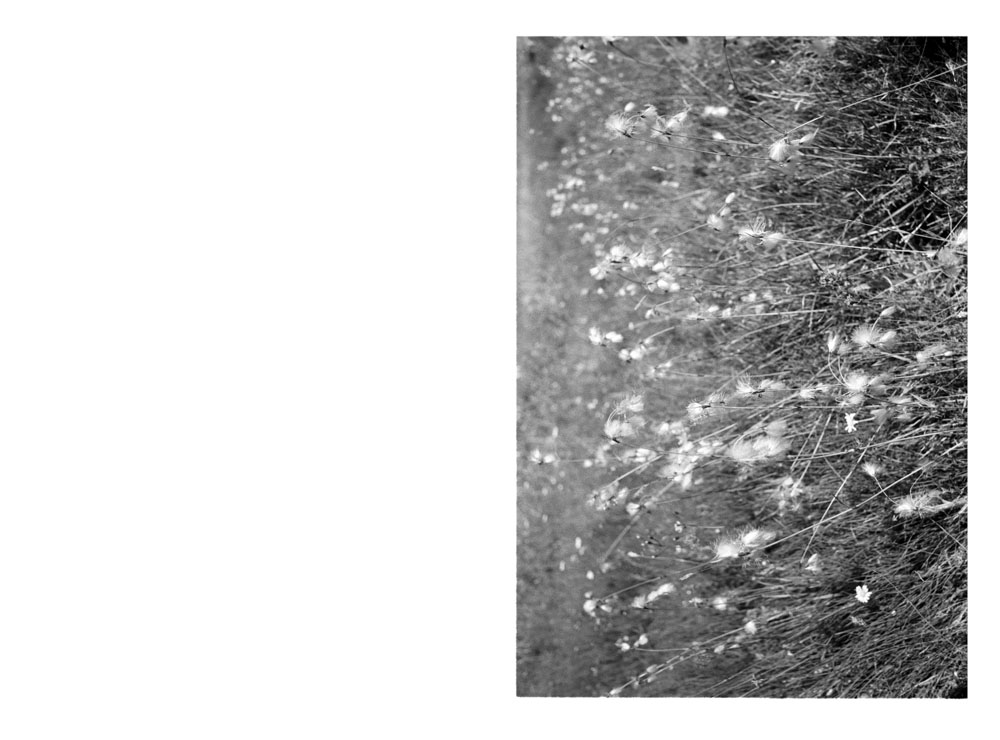
wildflowers, bagnes, switzerland
The myriad classic complaints of the West: that there is no community, that people lie to each other and there is no cohesive culture, no society, that our values are wrong, that we live in a bubble, that we have our cushions. All valid points from a perspective, and for the avid africa-phile these complaints become stronger and stronger, and it is easier to look at the relative ‘community’ of the impoverished slum and see the neighborhood feel we have started to lose in the west, where (and here the cliches come) we put on our headphones and drive airtight cars, and in some cities there are no accidental meetings (except when cars collide at an intersection). Any stranger is met with suspicion & skepticism. But it is naive to think that this is indicative of a failure of western urban society, no place is cohesive in a better way than the other. The cohesion of williamsville, of adjame, is cohesion as a defense mechanism: community as an inward-grouping against external forces (the elsewhere-mentioned raising of the drawbridge not quite applicable here). It is the knowing of all the names so we can make assessments of risk & a census of allies. Without theft & with only calm & peace, the environmental pressure will have lifted, and we would see something similar to the way people do not talk in the elevators of apartment buildings (where it is seen as more polite to say nothing, to not get involved). >>> sidenote: this is the case, in some sense, in the more affluent communities of abidjan, where there are high walls & barbed wire & averted eyes (though this is perhaps the rich versus the poor).
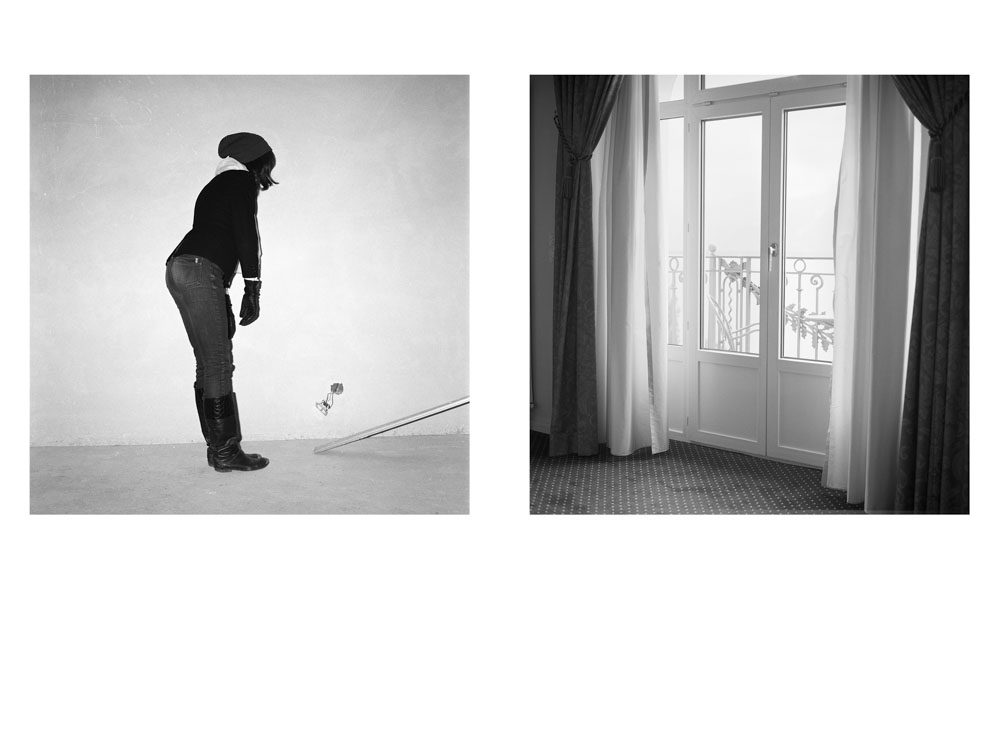
verbier and montreaux, switzerland
Roger Ballen as an old favorite: geologist-turned-photographer who descended from realism to drown himself in flashlit symbolism: a perfect heavyweight photographer who destroys all competitors without appearing to actually play the game. NY-born, he moved to Johanessburg to work as a geologist and sped into the outskirts, to the small towns and doorps of South Africa, making journalistic photographs of drooling brothers in the platteland, then beyond, to fictional tableaus created in a village hut of his construction, barbed wire on the floor & pigs hung with string, a barebulb flash and a camera lens at the smallest aperture turning the scene to pencil sketch in sharp charcoal: dwarf on a bed with shining belly and one eye closed in a wink. Style erasing substance & substance erasing style, a coherent mesh of intent and formal constraint. Photographs you saw as a teenager: the memory, of an opened book, emerging years later with a full back-story and near-universal acclaim.
We saw the building site by the side of the road and climbed the scaffold to get in through a hole; a hole which, by now, is a door.
///
This, the window leading from V Nabokov’s study on the top floor of the Palace Hotel in Montreux, where he lived from 1961 until his death in 1977. After the financial success of Lolita, he was able to dedicate himself solely to writing, instead of subsisting off of salaries received from teaching Russian Studies at Wellesley and Cornell, and he moved to Switzerland in part to be nearer his son, then a budding opera bassist in Milan. Nabokov continued his favored past-time, butter-fly collecting, on weekends in the Alps. He lived reclusively, playing chess with his wife on the balcony (in an image by our favorite P Halsman).
Pale Fire was written here. The study a good room for nostalgia, trips heading back to the sleepy towns of American academia. Reading Pale Fire in similar circumstances, in the (retroactive) comfort of a Washington DC dorm-room (back when I would send one thousand words to MM with eyes dipping before sleep).
There is nothing else in the town to distract. You stand on the balcony and stare straight into space. Fog blankets most mornings in the winter.
Lake Geneva has none of the inherent drama and beauty of Lake Como, though the landscapes are similar. You pass it on a train, and when you drive from Geneva eastward, the highway hugs the mountain high above. Montreux is a few road-signs, and then a flash of steeples and balconies, and then the yellow awnings of the Palace Hotel.
We had coffee on the terrace, and left early.
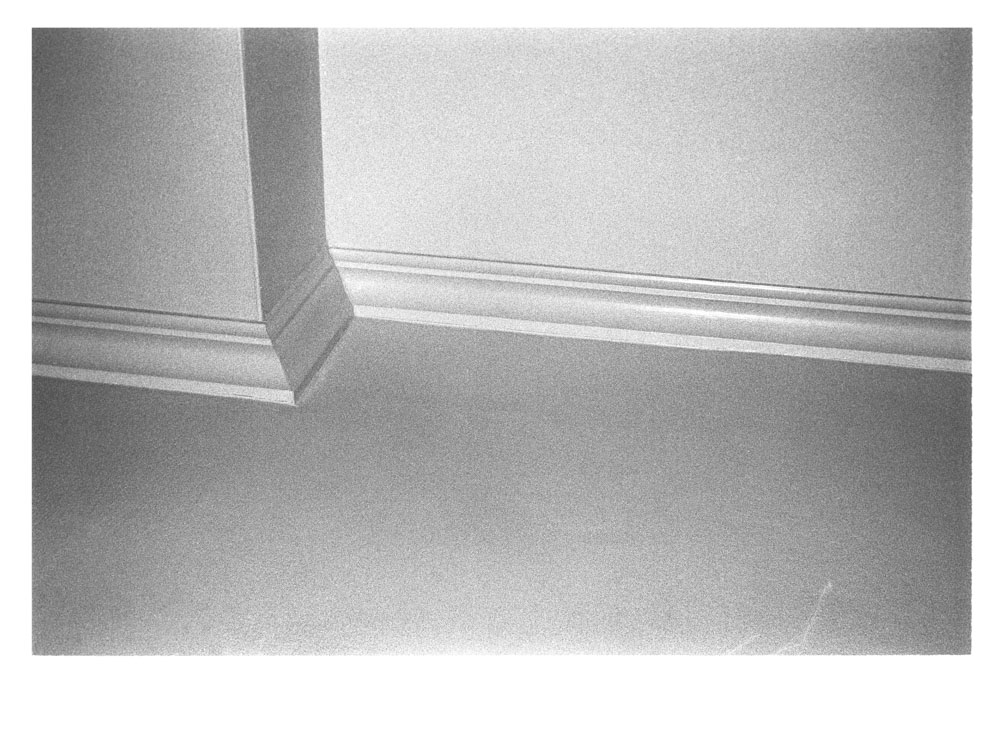
overworld new york
Ezra Pound, pre-insanity, pre-open-cage-in-a-prison-camp: ‘Make it new’.
Roughly (ironically) translating from Confucius, an admonishment of the classical. A provocation: create new forms, but do not create them from scratch, use what is already present and - make it new. Flip it upside down.
Photography as a too-literal thing, based in subject matter. New forms of photography (photography made new) focus on the act of photographing, and not necessarily the actual object photographed.
Gary Winogrand’s statement ‘I photograph to see what things look like when photographed’, now there is the suggestion that photographers make photographs in order to be photographers, and the elsewhere-mentioned tendency of modern curators and art-critics to judge not the photograph but the impulse of the photograph, beyond which the image itself pales, just as excretion is the important act and feces the product you flush away.
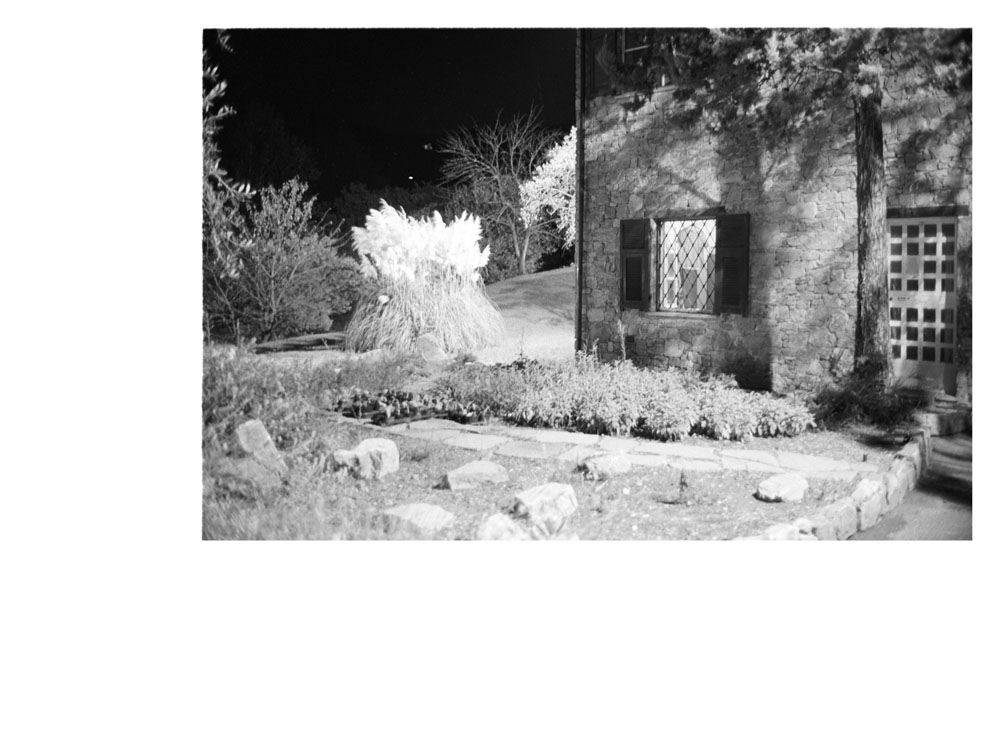
villanuova, italy
A self-fulfilling prophecy is best described, by R Merton, as: ‘a situation where a false definition, in the beginning... evokes a new behavior which makes the original false definition conception come true’. Typically creating this new true definition through projection and reinforcement of the false definition. The causes of depression to the depressed person often being a self-fulfilling prophecy, or failure to a person who feels they have failed: by believing they are failures (which they may not initially be), they act in the way of failures, shuffling their feet, not answering emails, reading Updike from 10am to 11.30am on a thursday, spending excessive amounts of time painting bookshelves, and thus they avoid doing the groundwork required of even a moderately successful person, and construct the circumstances of their failure. Summer gardens and manual cars, narrow roads and bedroom-windows open to the water, their worth oscillating.
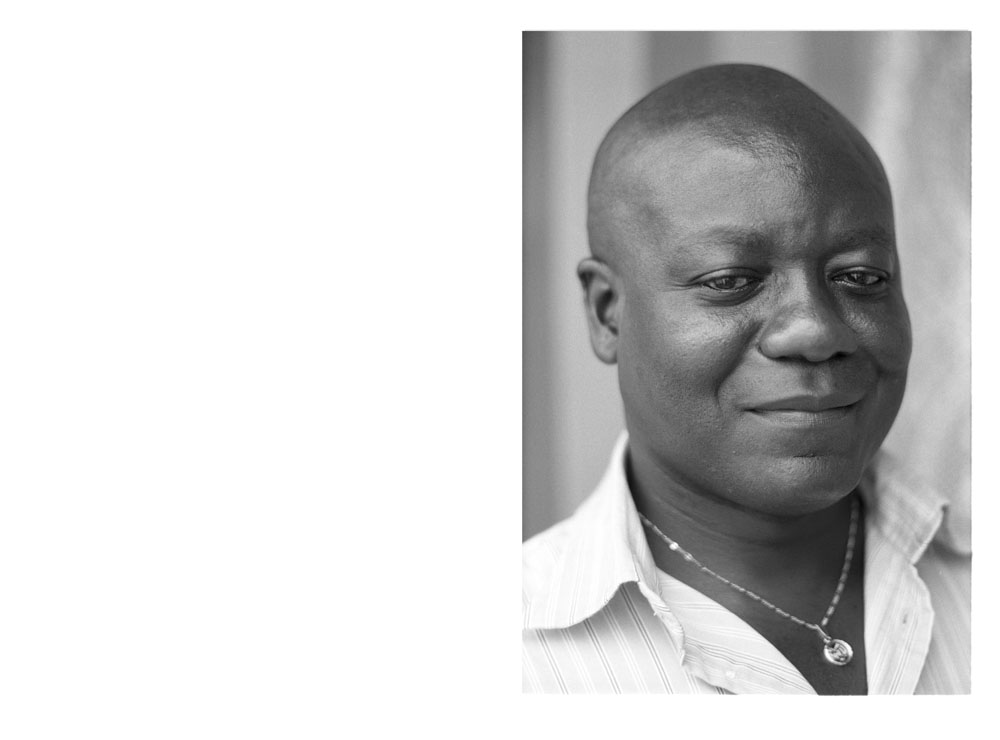
williamsville, abidjan
A kind-hearted man, pleased with our attentions, he explained the day-to-day practice of the clinic: showing us the two small rooms in the back and the narrow, dark corridor between, the green curtains and the darkened vestibule with an old dentist’s chair off to one side. A small round fluorescent light mounted at the level of our jugulars lit the whole space, sifting over the low walls dividing the rooms, a large open area in the gap between walls & ceiling, like another room above our heads (gloomy like a cavern, corners unseen).
Sidenote: an early favorite photograph, from W.E. Smith’s Country Doctor, of the doctor crossing through a fern-rich garden, storm-clouds building behind, a white picket fence suggesting a moment caught between visits. The Doctor (Ernest Ceriani) though, looks more salesman than doctor: he carries a doctor’s bag but his pose (slumped shoulders of defeat) and expression (of discipline defining action, not desire) are of dogged willfulness. Storm clouds burned in by the printer for what reason exactly? To strengthen contrast of white suit jacket and bring subject forward or to symbolize some impending drama. Or to define a drama recently escaped (the image taken in 1948): the Doctor as emissary of rationality & hard work, fixing the nation.
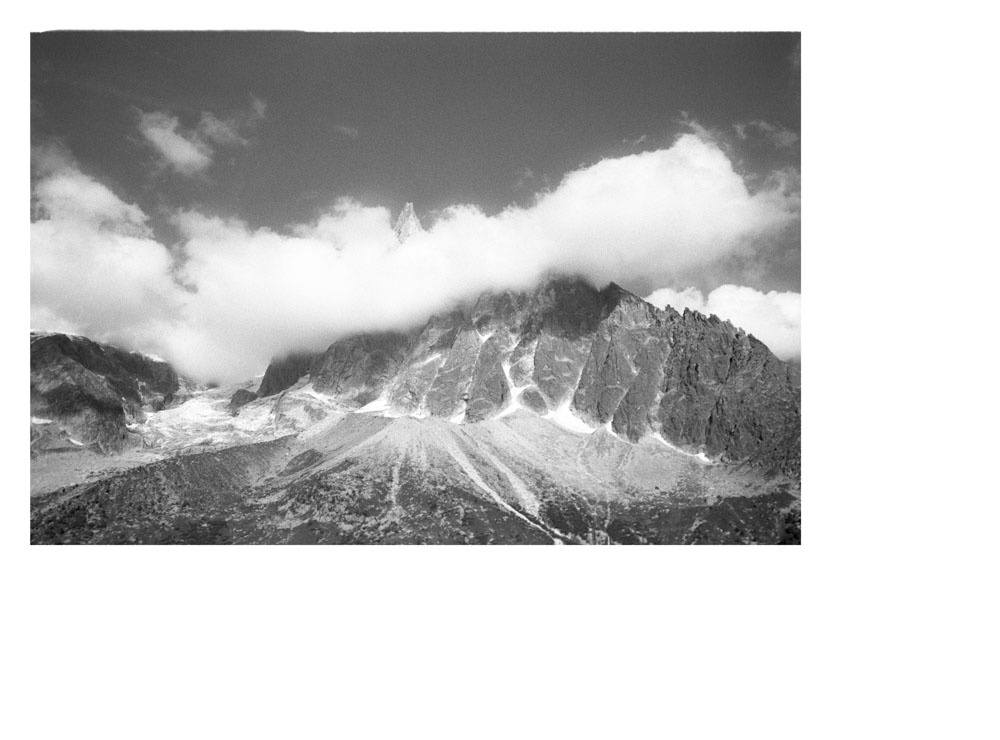
chamonix, switzerland
A Stieglitz made a couple hundred photographs of clouds, referring to them in both title and conversation as ‘Equivalents’. In most the actual ‘cloud’ part is burned to white, the sky to black, and the initial impression is of a completely abstracted smear, of used charcoal beneath a grill; in others the romantic (Byron-esque) eclipsing of sun by heavy cloud made thicker through printing process, such that “clouds perished, and darkness had no need of aid from them, (she was the universe)”. The point of process and exclusion of landscape elements (no horizon in any image, save for a few prominent poplar trees), is to detach the clouds from reality, from the real world of tangible experience, and render them abstract. Equivalents of what, exactly, there’s no indication, none necessary. Minor White suggests Stieglitz’s use of photographs as metaphor, a metaphor for what exactly, is less clear: by removing narrative elements there is an opening of possible interpretations, all equally valid as per the dictum of ‘interpretation’, de Kooning telling us ‘content is a glimpse of something’, very, very tiny. We fill in the rest with our own thoughts, just as Hemingway speaks to all of us because he gives us only the very, very tiny and spare sentence, the skeleton of a thought & scene, which we then cover and fill with mottled skin and flesh from our character/experiences, to thus bring them to life and permit them speech.
Stieglitz’s Equivalents in this case not being abstract enough for the metaphorical images of photography, photography as being too specific an art. In hindsight we do not see paradigm-shifting abstracts: we see clouds. Though of course the discovery that many & most of these prints are in the archives of petal-loving lover Georgia O’Keefe allows a post-hoc expansion of the abstract, seeing within the detached action and ambiguous product an image with narrative & pulse.
Araki, proponent of the literal & visceral, photographed clouds extensively (or, as he says ‘i’m still photographing the sky’), and in some accounts photographed nothing else for the 11 months after his wife’s untimely death from cancer. One exhibit of his cloud photographs featured only images made through the window of his wife’s hospital room before/after she died. The printing process (sashin yo sayonara blacks & grain & who-cares framing) suggest Equivalents, but the cause & intent suggest tourism: he photographs where she now rests.
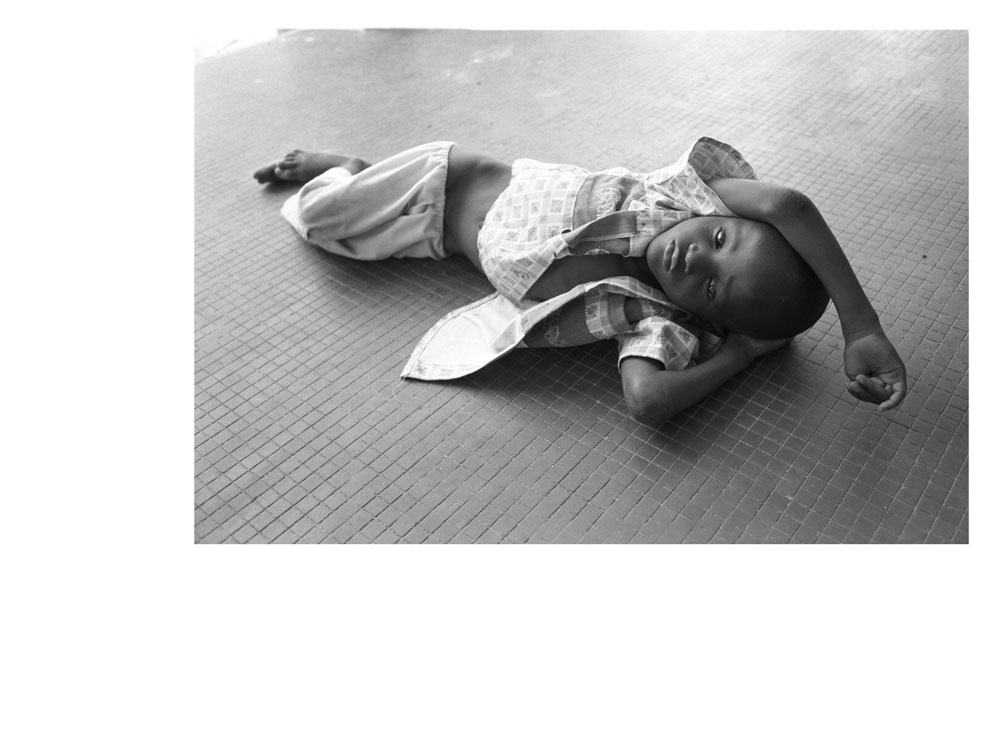
abidjan, cote d’ivoire
An encounter born neither of circumstance nor friendship, but of following each other around with vague curiosity. He would perform in front of me without being aware of me, a fantastic actor who stood on the stage and directed all speech to the audience beyond the footlights, but without ever raising his eyes. One of the more disturbed children, he scratched and kicked and pushed away all competitors for our affection, and understood no word of any language. He held on tight around the neck and locked ankles over spine, then pointed to the ceiling of the television room, to the small wrapped boxes taped there to celebrate christmas, and wanted to be raised up to pull them down. If you held his hand he did not know what to do, he did not hold it back. He always thought you were giving him something - hand-holding was not built into his social knowledge as an indicator of friendship. He peeled back your fingers and was disappointed with your palm.
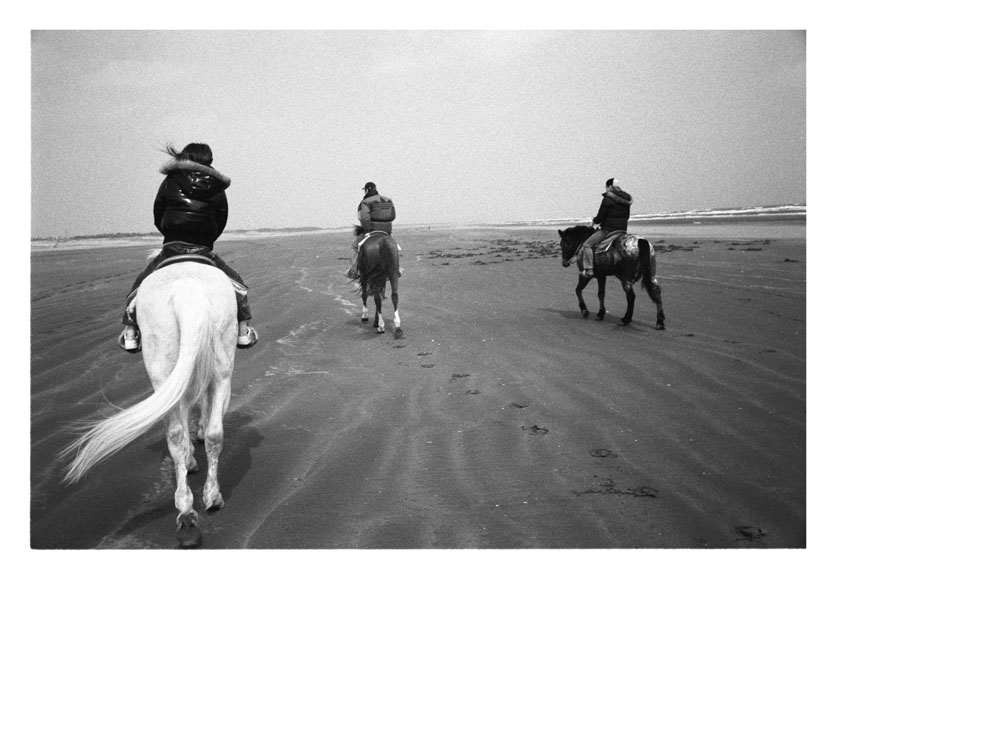
chiba, japan
One of the more frequent compliments given to photography: it enables and licenses exploration, and with a camera you have an excuse to be anywhere and everywhere. Photographers are in part present to bear witness, but, in a simpler way, the carrying of a camera denotes the status of ‘photographer’, and overshadows all other more contentious possibilities. Of course there are places where casual picture-taking in-itself is a suspicious and more or less illegal activity (Congo), but most of the time if a person is carrying a camera they can go anywhere: long apparently aimless walks, up hillsides, into tunnels, or they can just stand on a street corner with thumb looped around the winder, waiting. Sometimes, even for the amateur, circumstance will congeal in front of the photographer and an auspicious event emerge. D Lange’s Migrant Mother, a photograph taken in a different depression was taken at a pea-picker’s camp near Nipomo, California (b/w LA & SF). Lange was driving home after one month in the field when she saw the sign for the camp, and drove on another 20 miles before she returned, following ‘instinct not reason’. She took six (six) photographs very quickly of the family, of the father and the mother and children, returned to SF and they were published in the San Francisco News in a story calling for relief for the pea-pickers. The article was a success, relief was mobilized, and the picture rose to symbolize the privations of the time. In the original negative there is the thumb of somebody’s left hand hooked around the post right of frame, while in the distributed image the thumb has been colored to match the post itself, and the focus goes right to the mother’s eyes, and then to her hand, and then to the children, who either through shyness or sadness face away, heads on their mother’s shoulder.
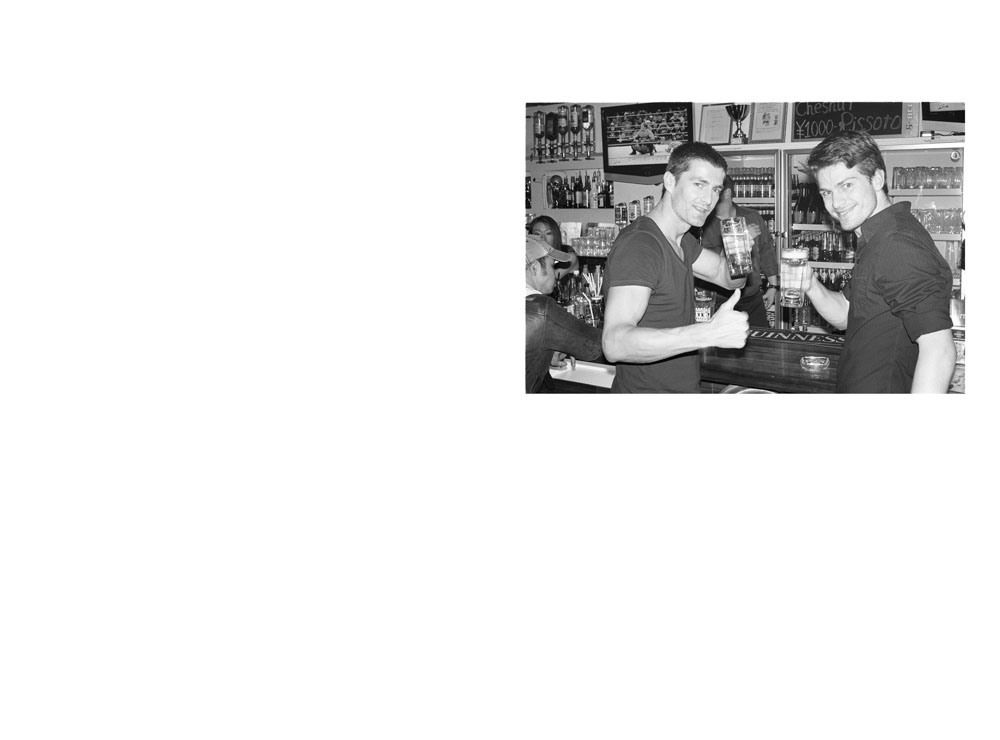
roppongi, tokyo
When casting for certain catalogues, there is a color-coded age-ranking system that Casting Directors use to sort models into categories according to their proposed place within the typical family hierarchy (independent of the model’s actual age): cool younger brother, dorky younger brother, naive younger brother, mature older brother, wild-card sibling, serious motorbike-riding older brother, married older brother, gay uncle, cool uncle, creepy uncle, dad, cool dad, aunt, spinster aunt, mother, classy mother, new mother.
If you are orange, you are on the cusp of father, but could be older brother. Depending on the visual cues that casting directors use to assign your specific color-code, you may wake bleary-eyed in your studio apartment, all alone, put on last-night’s band t-shirt, eat a bowl of cinnamon toast crunch, put on a hooded sweat-shirt, and go outside and ride a second-hand bicycle up the river path to a studio, where, for most of the day, you will wear a wedding-ring, bounce a five-year-old boy on your knee, hold hands with a hot/new-mother (whom you once dated unsuccessfully), and smooth the lapel of a tailored suit. Before, of course, returning to the studio apartment for baked beans on toast and imported hob-nobs and a life that feels less real, because, when compared with the fictional narrative of the constructed photo-shoot, real life is not quite as lineated: sometimes you don’t know where to look, or what to wear, or what expression to hold.
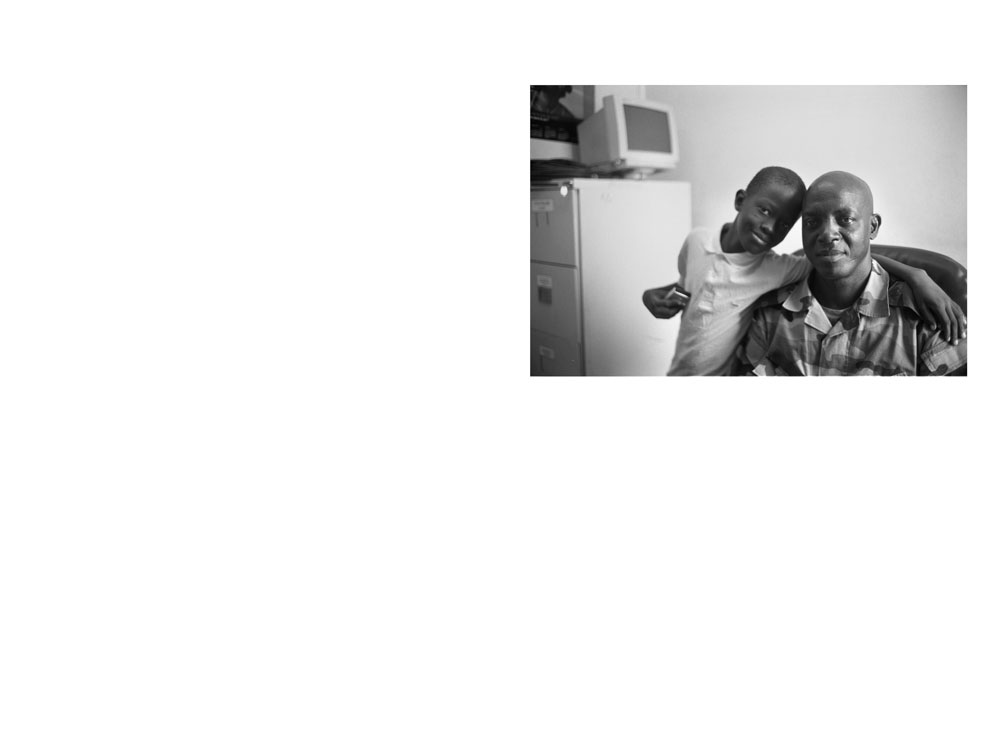
bouake, cote d’ivoire
His name, hewing to convention, Commandant Big, and, at dinner at Mon Afrik, he could not divert himself from his cause, identification of the northerners (the Burkinabe like himself), and all attempts to move him out of the deep-rutted track of political struggle were rebuffed (political struggle being a weighty horse-cart).
His son, at the back of the room, played games on a handheld device neither cellphone nor nintendo ds, alternating between a sitting pose with one leg bent beneath him, and standing straight, rocking on the balls of his feet while looking down.
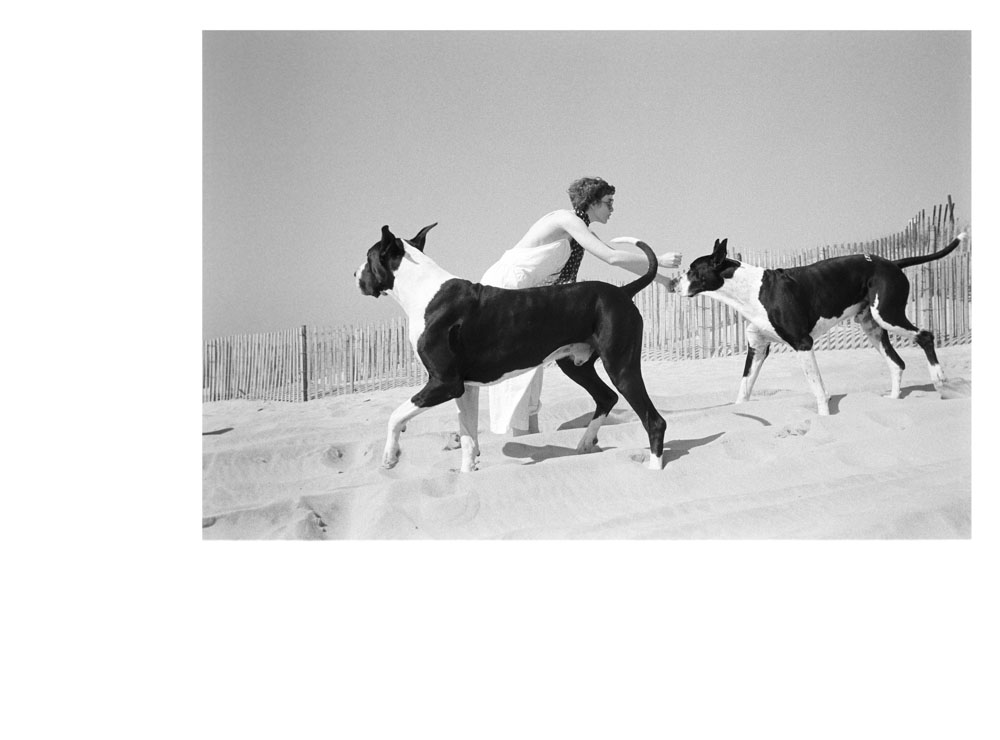
long island, new york
Probably SK’s dogs on the beach in Bridgehampton, on a day when they were taken for a ‘walk’ by a man who sat in a black SUV and drove slowly alongside. Then he got stuck atop a dune, wheels throwing up sand in fountains, and we walked away without offering to help, because he had not returned our kind greeting (he had not returned our waves and smiles).
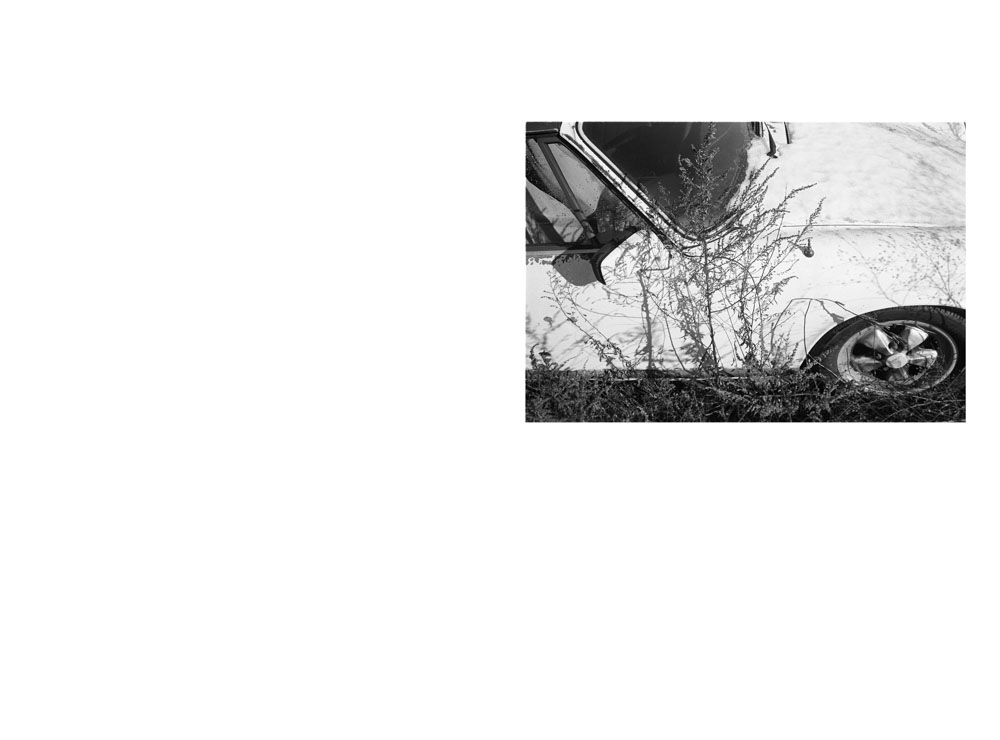
long island, NY
The change we wanted, an ownership society. But everybody’s renting, or their mortgages detract from the pleasure of having. Every marriage is temporary and kids are like cats, you can leave them behind if you want to run, freedom associated more with the ability to leave if you want to (or at least more than wanting to stay (staying as security)).
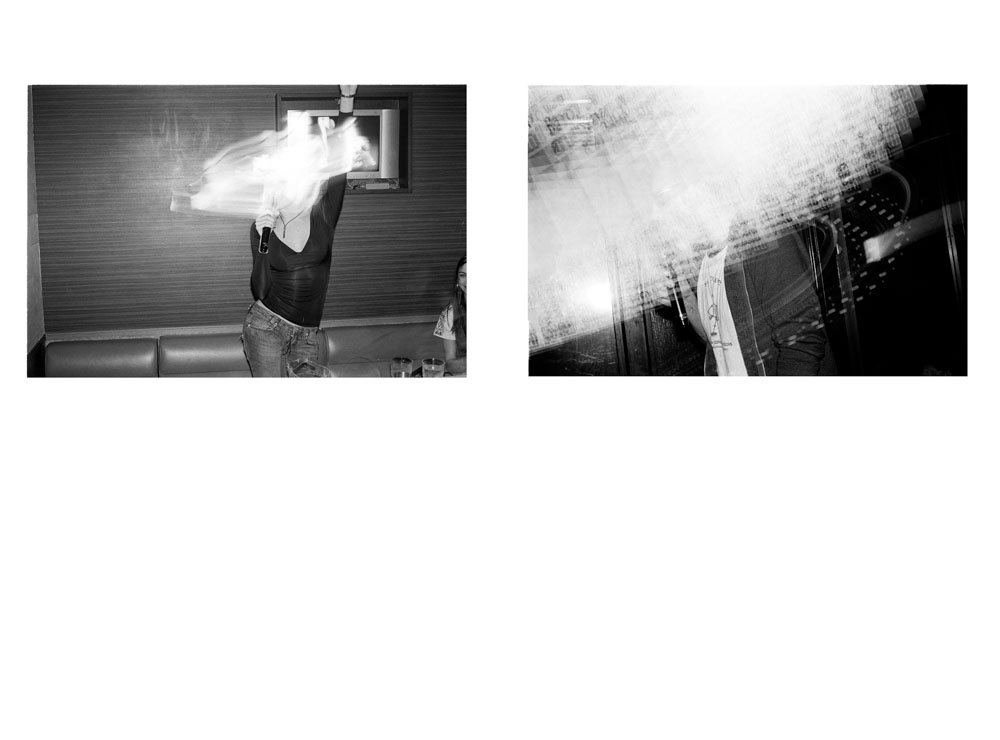
cover your face, tokyo
The joke that is cover-your-face birthday party is a joke perhaps rooted in a hatred of the role of so-called ‘model’: a role which forces increased awareness of the model’s own face; a role which weighs heavier with guilt every time a payment or purchase is made. After a rudimentary examination of the ten or twenty or so photographs in which the so-called model covers somebody else’s face with a beer can (stella artois) and leans forward with unfocused glazed eyes and slack grin (and pink shirt), psychiatric-self-analysis would suggest that this hierarchy of faces, to the model, is really kind of embarrassing, and that he hasn’t really found out how to adequately detach himself from this process and/or deal with it as a ‘really awesome job’.
Soulless jobs, as many jobs are described, are jobs of rote activity without emotional connection, without potential for career advancement, and (here it comes) without control over the means of production. The average model is removed from the infrastructure of job establishment and price setting, though ordinarily because they have signed responsibility over to a third party, to an ‘agent’, who inherits their ‘agency’ and control, and who, in the very best of cases, has a beneficially transparent view of the system.
The change desired was bargaining power, the use of connections, the use of experience, the use of a name, the delegating of menial tasks, the gaining of a fighting partner. The change received was a class system whereby bourgeoisie control proletariat within a system, and free-trade without, and an increase in the number of autonomous collectives fighting for a lower and lower bottom line. End result: too many models, too many agencies, and some so small and new they offer breaking-point prices for short-term gain... thus a near-permanent lowering of industry-wide rates.
Fun contradiction: male modeling in the fictional sphere is associated with fashion and thus glamor & luxury, while in the real sphere they mostly earn less money than bus-drivers and make fiber-glass Jesus’s in industrial lofts, use hot plates for manhattan clam chowder, download their music for free, and, appropriately, know where to find every PBR-and-a-shot-of-JD special in Brooklyn
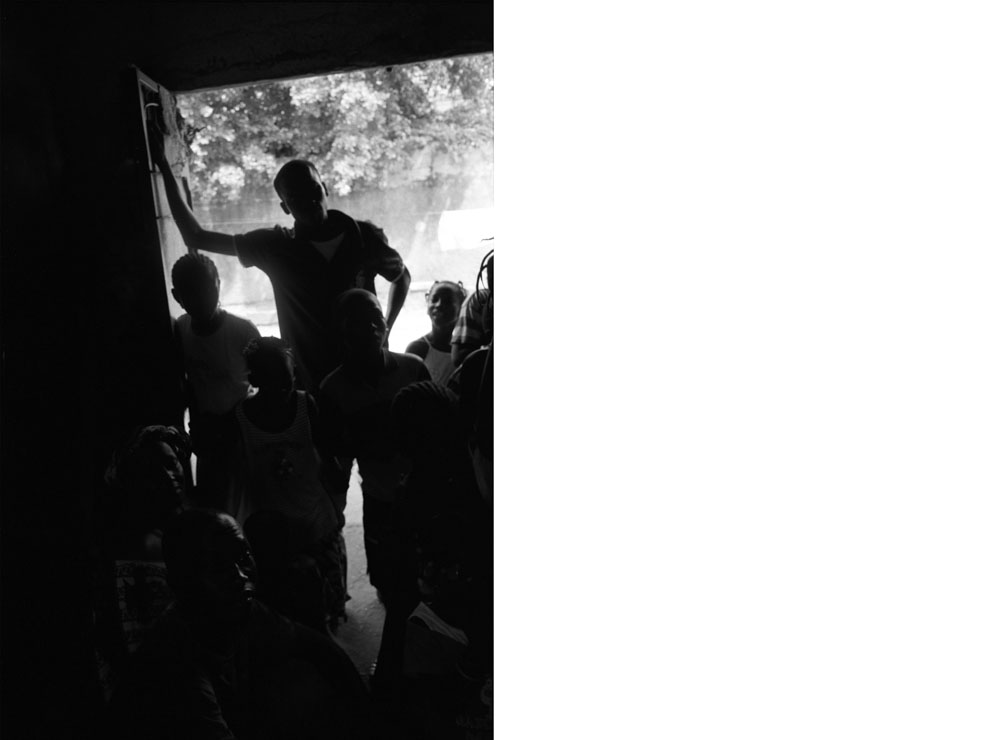
bouake, cote d’ivoire
The analogy being of ships in harbors and a storm coming in, of ships moored too close to each other and the swell rising. The necessary splitting up, of moving the boats away from each other lest the hard times smash hull against hull and the boats splinter. The commoner idea that people in hard times need to gang together to weather the storm (as if on a flat plane traveling), here not useful, as we are in ‘uncharted waters’ (the change we wanted not quite taking effect yet - we are in transition). Complaints that are all complaint, no actual thing to complain about, an negative expression without voice, just a sense of ‘error’, no actual trouble. The Oracle of Omaha says we know only who swims naked when the tide goes out.
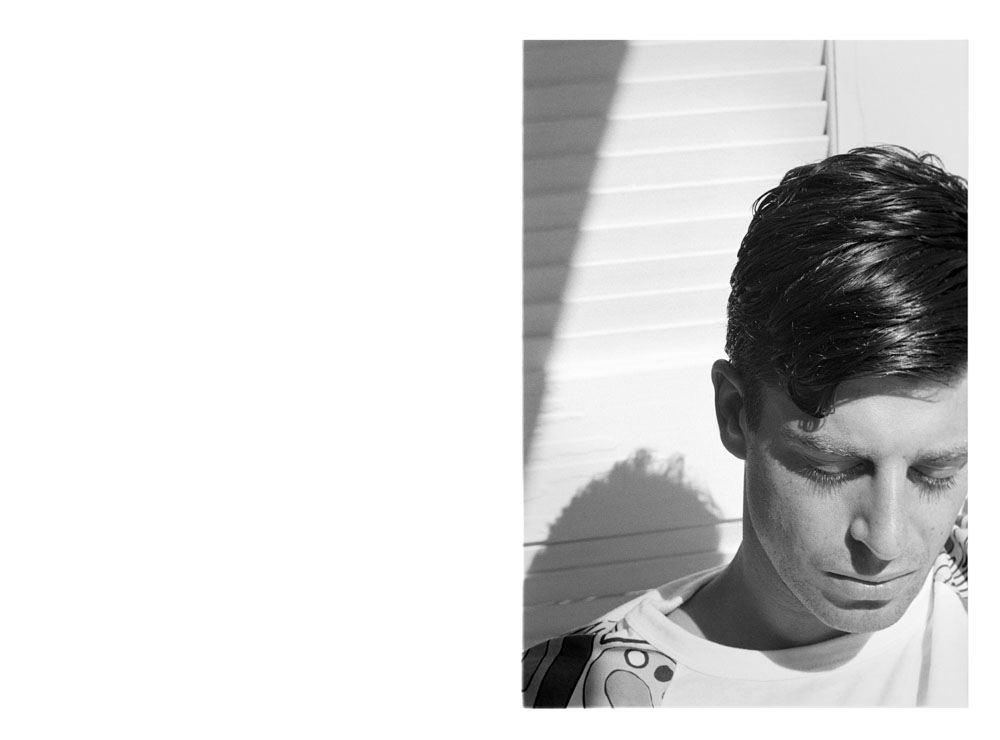
florida
He, at some time in the future, admitting that, on occasion, he prefers to play a role, being an actor by trade.
The understanding that playing a role is freedom more than constraint, and that you really can be anyone (why restrict it to the stage?). Method acting but without direction (so there is not a single character to obsess over and inhabit for month), and thus he could be anyone. Sometimes he picked a role just to see what the character would say, and his reactions were not his reactions but the reactions of his interpretation of the role. And he was good at it, standing up when everyone else was sitting down, moving around with full awareness of the shape & size of his body. The issue here being that without direction and without a script, the source character (the character that is actually him) supplies the words: he does or does not have the stockpile of facts and experiences from which to supply the necessary reactions that go to create this fictional character. Without them he says things he doesn’t believe.
And unfortunately he was like the man who gets a job for which he is not qualified: the bus driver who cannot drive. But he was, of course, a charming bus driver, and we more willing to forgive.
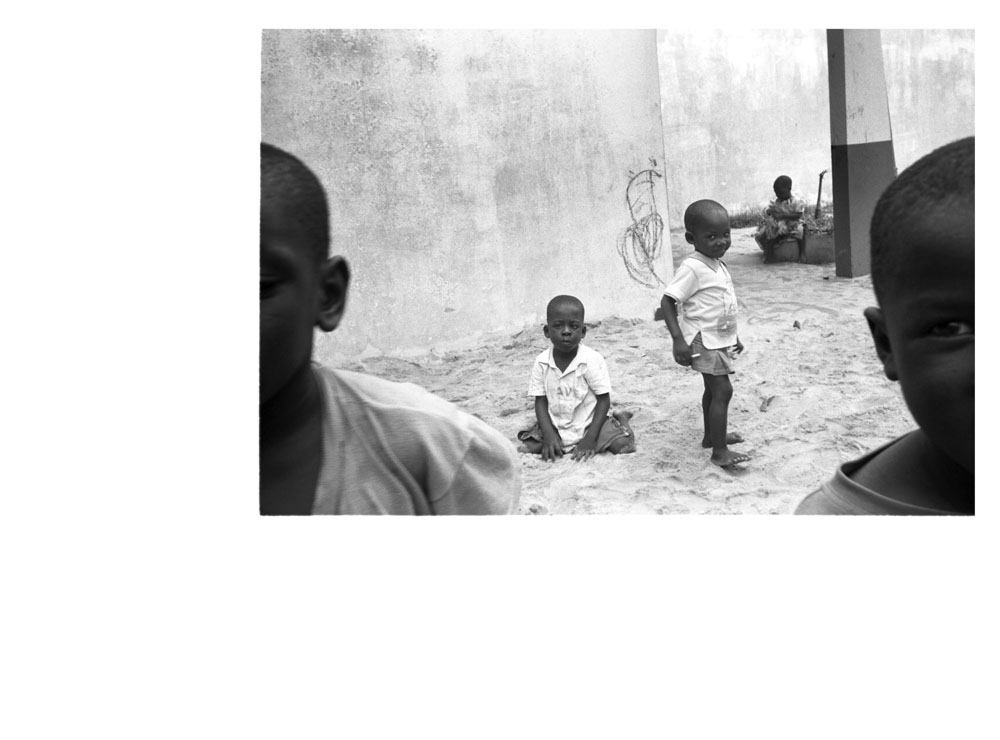
new york, ny
Time as money, a cliche arising from opportunity cost, the cost of doing one thing instead of doing this other thing that earns money: frequently attributed to bankers & real estate brokers and people whose self-valuation is uncommonly bonded to salary and the accrual of money. This cliche not holding true for people who’s work is not necessarily value-based, and who do not produce ‘money’ but something not as easily exchanged: time for these people costs money, it is not money (it is not something that basic labor will ‘mine’ for money) but a finite commodity that requires purchase. Time being non-productive financially, but necessary for research and development of skills and the ‘accrual’ of the many hours of experience required for success. Again: time is not money, time costs money.
Also, time’s cost varying from one place to the next, as rent & staples & living costs rise and fall depending on the city in which you decide to develop: Berlin as a cheaper place than New York (and thus the current mecca for artists). Or, closer to home, Brooklyn as cheaper than Manhattan, and thus a place where time costs less: park slope’s one year to Soho’s six months, perhaps. Money thus a determining variable in the measurement of time. Time bending around money, and explaining, in part, the slower development of Brooklyn over Manhattan (to defeat time, more money, or is it the other way around).
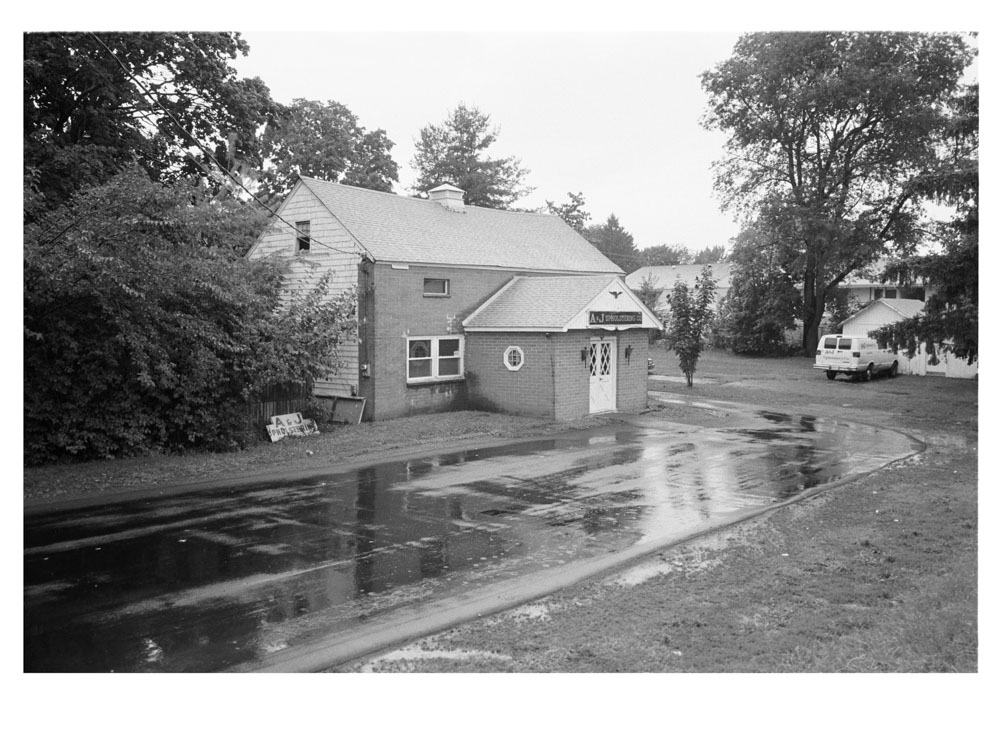
Madison, CT
A place you wouldn’t ordinarily visit is, to you, unique. Circumstance & accident will bring you to the ‘fated’ places as well as to the more mundane, though in either case the point is to be open and aware of whatever new and not-ordinary happenings are emerging. Through spring’s start slumbers the hibernator. NNo matter whether fate draws you to a drenched cul-de-sac behind a gas station, or to a restaurant where a famous photographer will come over to your table, both happenings are valid in that they are deviations from the normal. One sequence may feel more ‘fated’ because of the (illusory) ‘plus’ effect it has on your life, implying, perhaps, a near-divine ordering of accident and sequence along a slim narrative so incomprehensible in its perfection that you must have been passively brought toward the event (because, of course, in happy accidents there is no self-governance, and where there is order there is not humanity, but the hand of the omnipresent creator). NA pessimistic view.
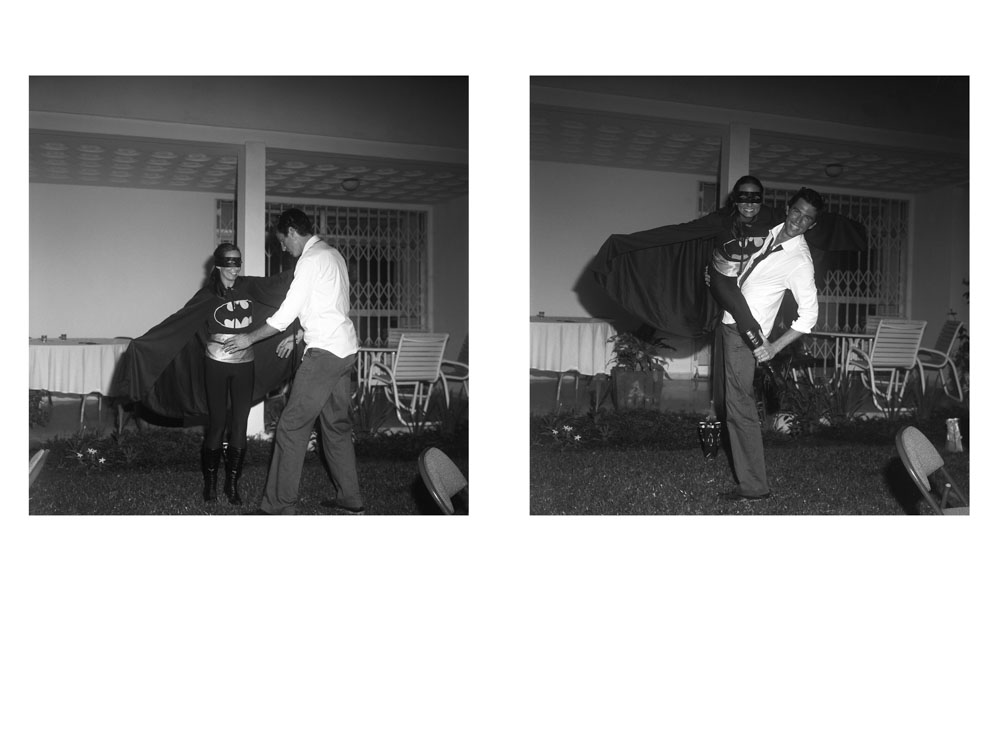
abidjan, cote d’ivoire
Passion not so much degrading to security, but evolving (the million metaphors of evolving love never surpassing that (now-forgotten) writer’s reminder that incense only releases the scent that is its purpose when smoldering).
To be of the age when friends start to get marry, and to see what marriage is (at least what it is in applied theory), and seeing that it has become no longer a remote abstraction but a distinct option, a choice made in much the same way a car is chosen for its varying levels of luxury & utility, and that it is a bond separate from the people who make that bond.
Marriage is a third-person, a noun used in speech as a marriage, something distinct and tangible (something you can describe using terms perhaps more suited to fabric or a type of designer chair: durable, damaged, fake). The wish to own a marriage. (To be married and have a wife).
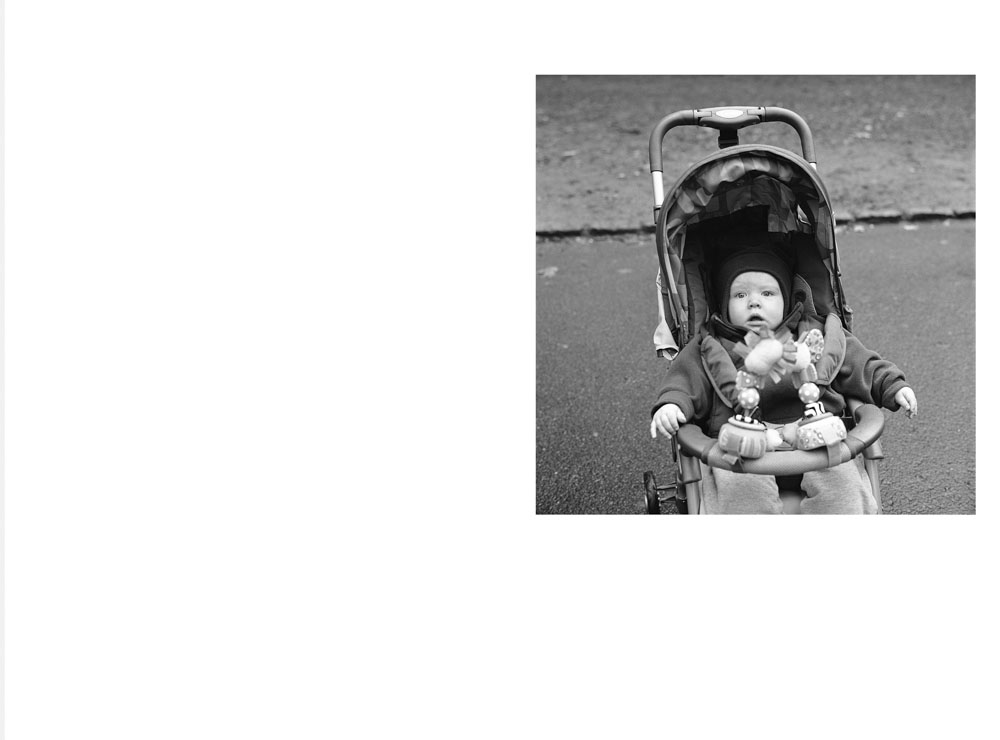
new york
First, friends of family, then family, and then direct friends start to pop out children, and there is the sensation of a wave advancing, and of that wave being time. Some people ahead of the wave, others behind. There is the theory that no change is possible except generational change. Perhaps explaining the ‘cycling’ of events, that everything is always being repeated. A perceived ‘change’ from one time to the next is only the movement into power of a formerly subservient generation; subservient only because of youth. It is no accident that people in positions in power are usually ‘older’ (the boy-genius is an anomaly, accept it), they progress to power not because of experience - because they climbed successive rungs of the ladder -but because of time. Experience and seniority and career advancement are symptoms of time, of a ‘correct’ reaction to time’s winged chariot not so much hurrying near as trundling toward the future, with us all-aboard.
As ever, the most perfect analogy comes from video games, from early platform games specifically, in which some levels forced-scrolled from (typically) left to right or down to up. The player has to advance along the same vector as the direction of the scroll, carrying out the various jumping and running tasks of platform games, albeit with the pressure of a forced scroll. In a nice analogy of our current debate between action without foresight and actions made too late, the player in a forced-scrolling level has to choose his strategy: either steam ahead of the forced scroll and leap into the air without knowing exactly what comes your way, or hang back and wait to move later, when the scrolling will force him to make a decision when the obstacles are more dangerous. Look at levels in Super Mario 3, Super Mario World, Kirby’s Adventure and so on, and also, who could forget Balloon Kid on the GameBoy, wherein every level was a forced-scrolling level.
For people with a terribly pessimistic understanding of time (perhaps those for whom youth is fleeing or has already fled) there is a permutation of the Forced-Scrolling level known as the Advancing Wall Of Death, whereby there is no forced-scrolling to pressure the player, but instead either an entire moving wall of spikes (Kid Chameleon) or a rising water/acid/lava level (Super Mario World, Metroid, Sonic The Hedgehog). This is time for people who tally their wrinkles.

montreux, switzerland
The thought that european towns on high mountain lakes would all be hemingway towns: with great mansions on the water now luxury hotels, places where you can have a martini in the late afternoon of an overcast day (’cool clean martini’) and exchange a few words with an ambivalent but good-natured bartender before escaping across the river in a borrowed boat. But, no, these places have seen the shifting of the center of power, the excitement is elsewhere and everyone knows it.
Perhaps they were never of interest (and even in the above example they were locations for moments of relative peace amid (absolute) boredom, and respites from war), and perhaps it is only fiction itself that created this idea of cool clean martinis in bars with views of the lake. The discrepancy between life and art, between life-as-primary-experience and the fictional life that makes all art: the gap between the two measurable, and typically filled with something liquid (best described as dream, dream being the belief that life can transcend reality and become art). Excessive consumption of art, meaning excessive immersion in the fiction of life that constitutes art, can degrade the barriers between the two opposing functions, and allow dream to leak out and coat both life-as-primary-experience and art, leading the excessive consumer of art to believe that reality should actually be like art: that autonomous flight should be a cheap commonplace, and that we should not have to calculate the dollar value on a banner ad in order to pay the late fees for a rental dvd of Lord Of The Flies. The transition does not work both ways: excessive consumption of reality does not degrade the barrier and cause an opposing dream leakage, whereby we believe that art should be more like life (this degradation caused instead by excessive consumption of bad art, of, for example, unintentionally out-of-focus photographs).
The organization of life/dream/art best symbolized as an inverted tube with life as viscous (gray) substance slopping at the bottom, separated from the fluid dream in the middle cavity (the barrier a Necco wafer, semi-porous), and at the top another barrier sectioning off the gaseous halogen that is art.
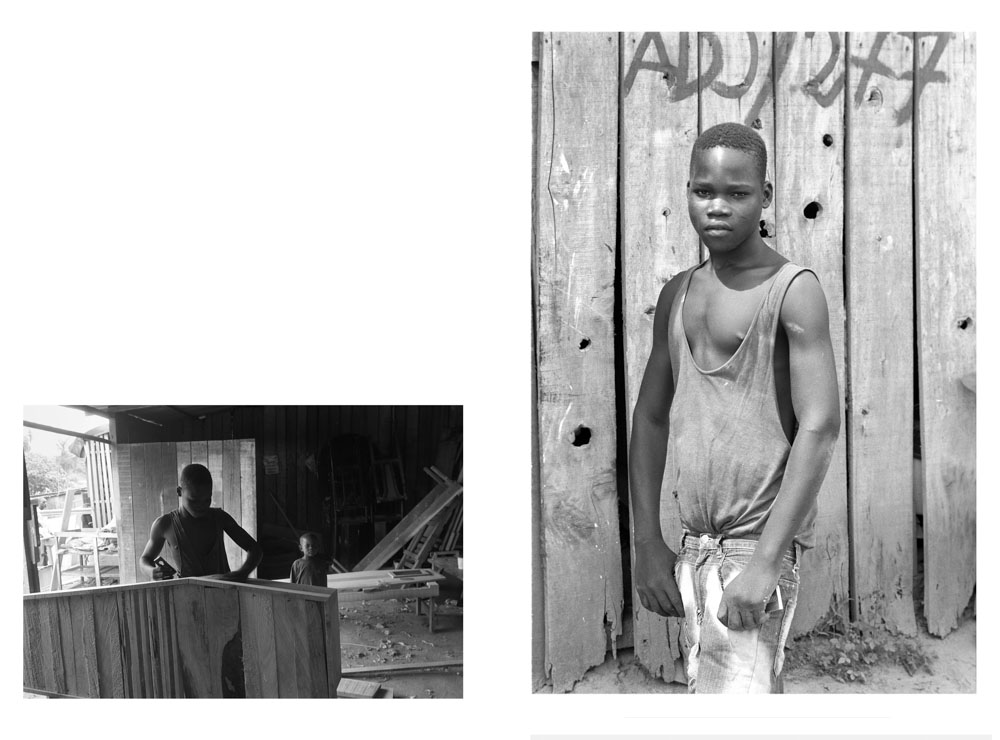
abidjan, cote d’ivoire
On the very last day, on the way to visit Drissa at home (his home a clutter of posters and clothing racks, an interior from an Ikea catalogue pasted to the wall), there were increased numbers of troop transports on the road, all air france flights were cancelled: we tuned the radio hoping for a signal (the first target in a coup is control of the communication services, so if the radio’s gone, lock the doors), but, oh, there was Magic System.
And, in compensation, five dollars in local currency.
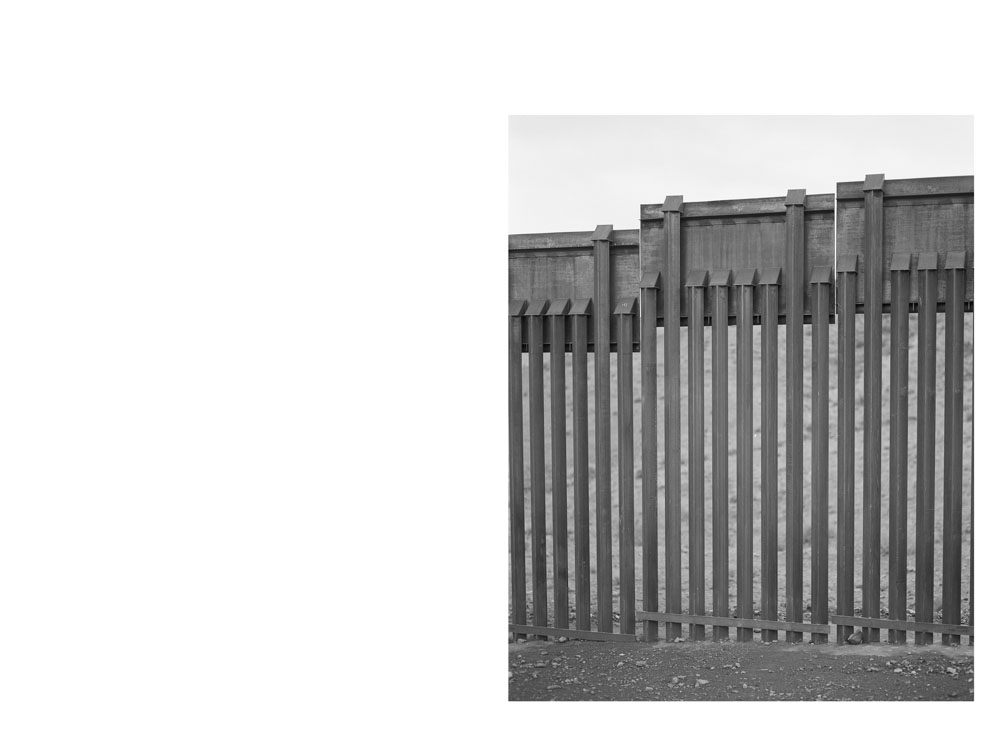
southern california
>>> to photograph the border with the mountains behind and the little gap of the fence, you have to climb up the mountain, and in trying to find the correct framing you can’t help casually crossing back and forth from us to mexico. You pass over a ridge, hola, then stumble down a gully holding on to the thorny bushes, hello. A local began target practice on the US side, firing at a crate set high up on the ridge, and in his error the rifle bullets came whistling over my head as they span out over central america. I had no idea that this was a local doing target practice. Given the context, I ran in zig-zag pattern with my head down, calling out ‘hello!’ loudly, as if alone in a darkened house, a shutter banging.
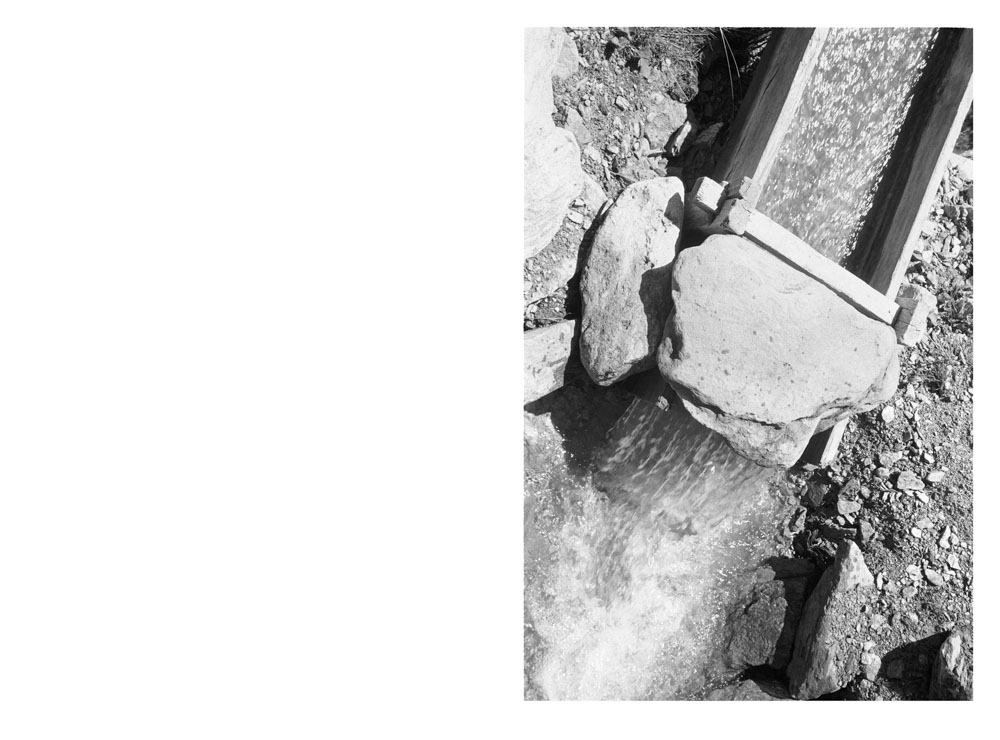
verbier, switzerland
No ideas but in things, sure, but we can’t all be efficient wordsmiths, W C Williams poet-physicians living and dying in Rutherford, New Jersey. In photography the subjective sense makes constant adjustments, and there are no purely factual photographs. With regards to literature Calvino wonders what he would write if he were only a hand hovering above a typewriter, but that is just an idea, not a realistic thought at all. What would be photographed if the photographer was not there, if there was only a camera and a sequentially-firing shutter? Well, that’s more like it. That’s a closed-circuit television system, monitoring a street outside of a chain electronics store. Capturing a corridor between two labs in a tall building, or the back exit of a popular bar. It is also a web-camera, a round eye in black casing sitting on a desk, one image every five seconds of a girl in a box in Slovakia.
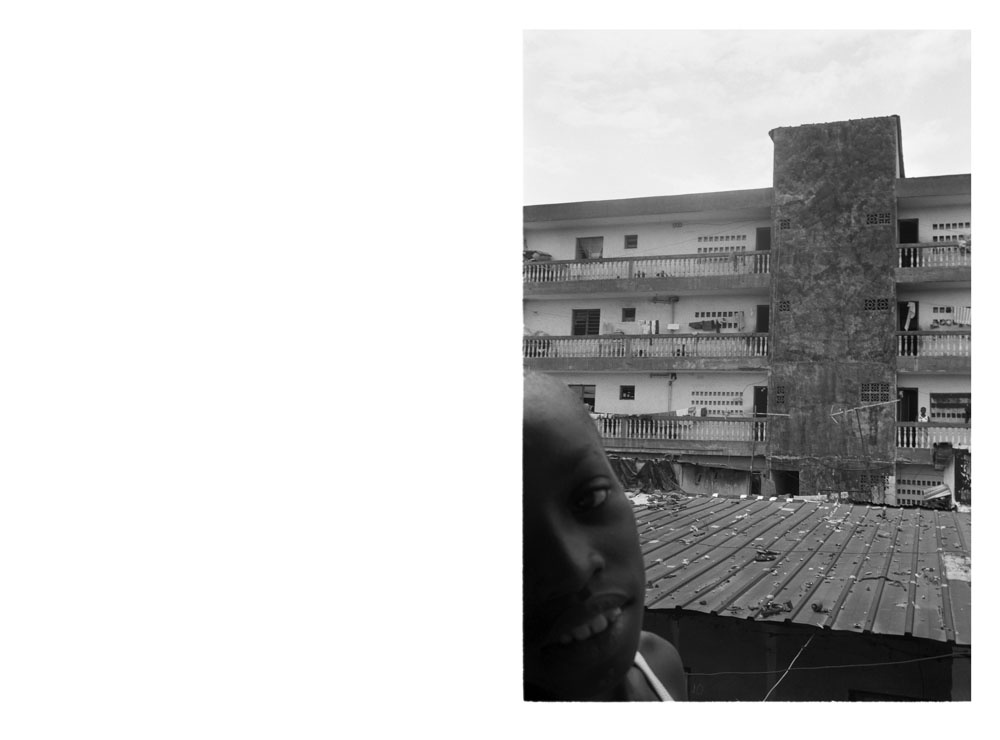
adjame, cote d’ivoire
Kindle & Kindle 2.0 as the first evolutionary step of literature since Guttenberg, but, of course, all the reviews and articles understand that this leap is rudimentary. The readers are expensive & slow and will not (at this time) achieve the mainstream penetration of something like the iPod. Needless to say, ‘early adopters’ or ‘lighthouse customers’ (the key demographic for new products, for they provide inadvertent street testing and through ‘obsessive’ use reveal goods and bads) have picked up on the kindle, and it is not the rarest sight on subways and airports throughout the US (the kindle in its leather case, held, typically, with two hands underneath like boys singing from a hymn book).
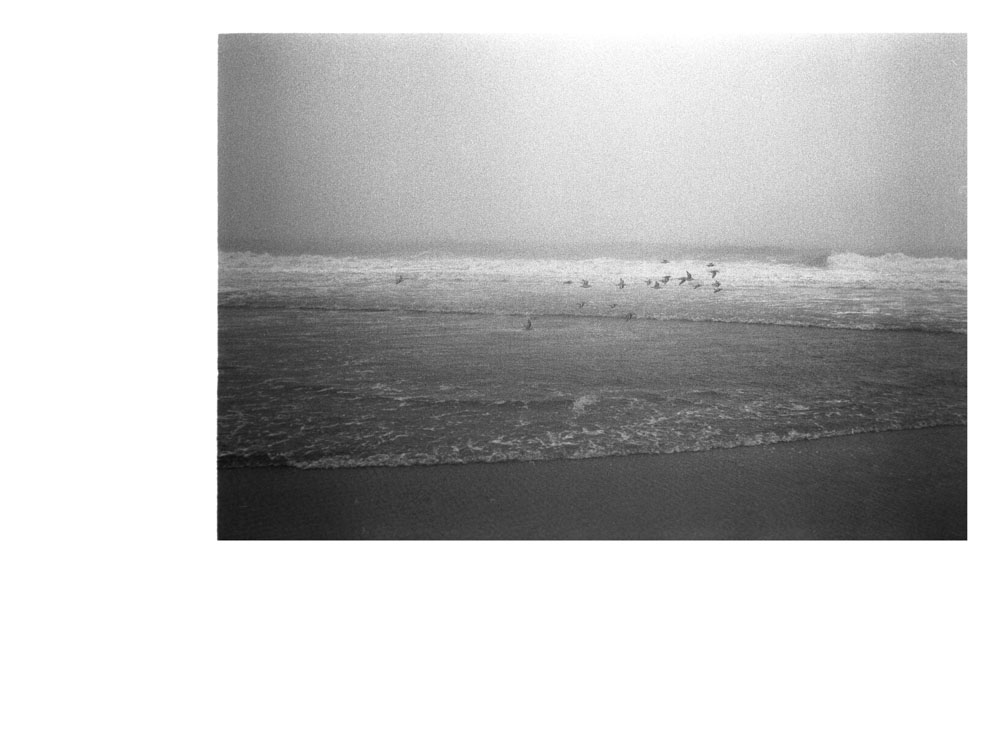
bridgehampton, ny
Format changing the reality of the situation-as-photographed, in the same way that a certain raising of an eyebrow and slow enunciation can alter the meaning of a sentence, turning earnestness to sarcasm (you have to have your eyes open to see this, so to know you’re not being made fun of).
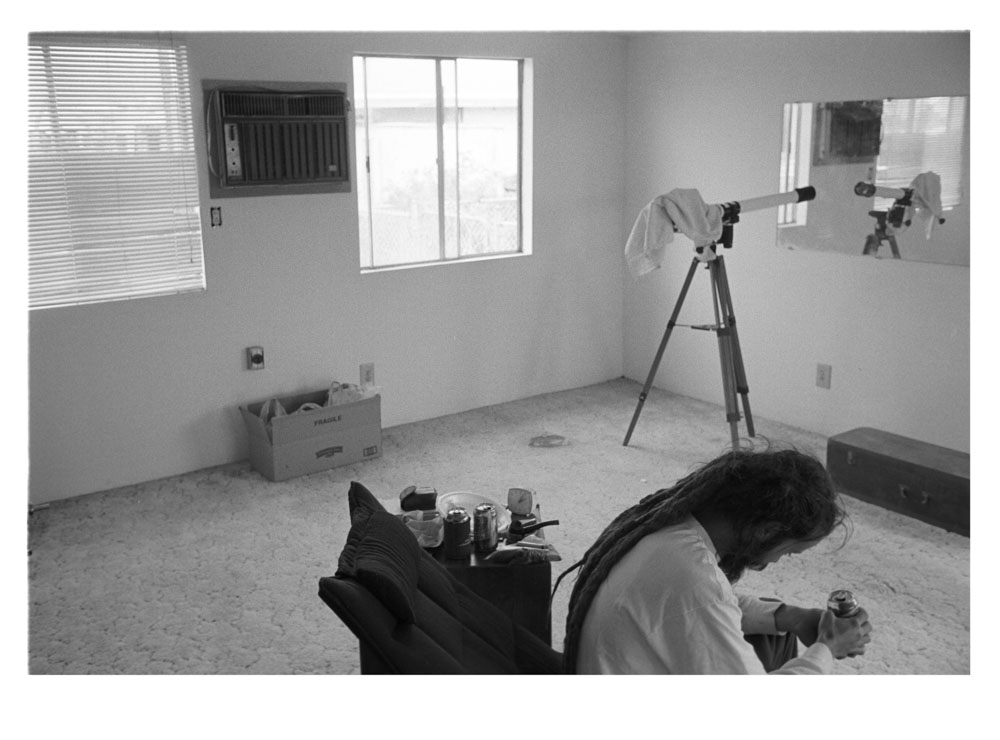
salton city, ca
Confronted with a camera, AS talks about how he at one time was a photographer, but doesn’t do it now. All questions about what happens now (about what he does day to day) answered with calm statement of fact: nothing.
Nothing is not nothing here, nothing is several beers and it’s noon, a cold breeze off the water. German tourists walk out to the old jetty.
He has a globe on the kitchen island (beside empty cans), and a telescope that he points out the window on the many clear nights of the desert but which now sits under a towel, directed into the mirror.
He has a playstation with only one controller.
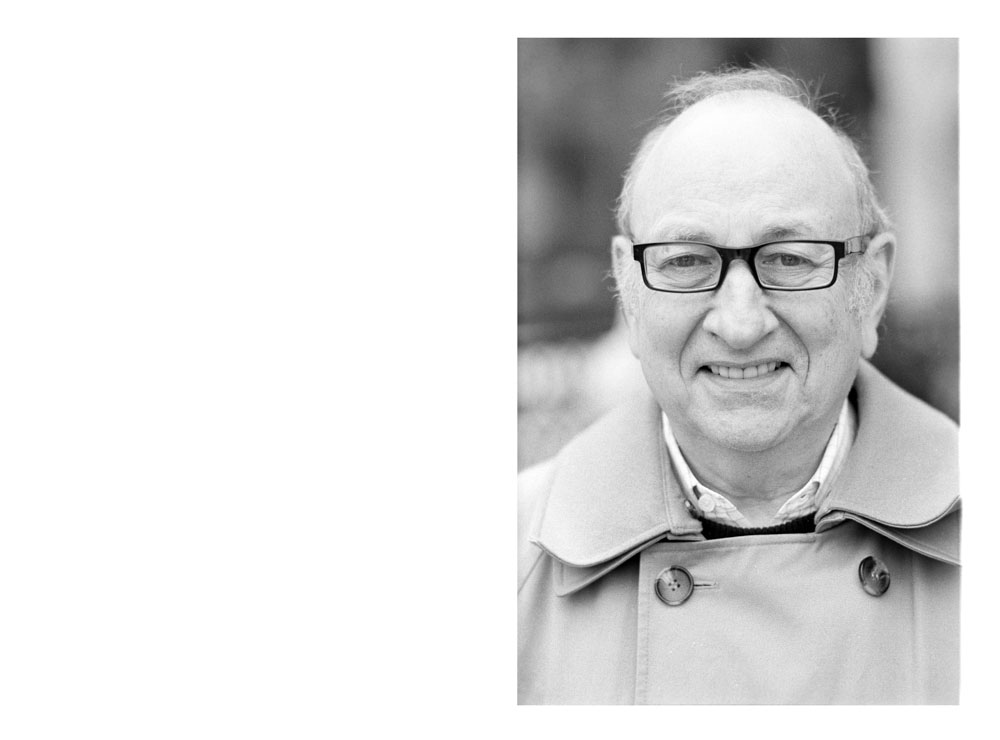
las vegas, nv
The point of travel being varied and multiple and unique only to the individual, but the common feature of travel that is not primarily for business is diversion - either for entertainment or pleasure, or to see and do something new and different. The point of the different is to provide perspective and show the ‘home base’ for what it is, to reveal the truths of the home base. And if there is no home base (no locked apartment with drawn shades) the road itself is the home base (the ‘road’ as symbol of travel, the means of travel not the destination), forever after travel is looked at not as a diversion from something else, but as the main road itself, the main method of conveyance >>> and the elsewhere-mentioned concept that photography is the practice of a post-industrial culture that still requires proof (physical proof) of product from all things, even from a vacation. Memories are not sufficient things to bring back from a trip. >>> the reductive analysis that this work is ‘pictures of cool places around the world’, and not an exercise in aesthetic (an attempt to do something).
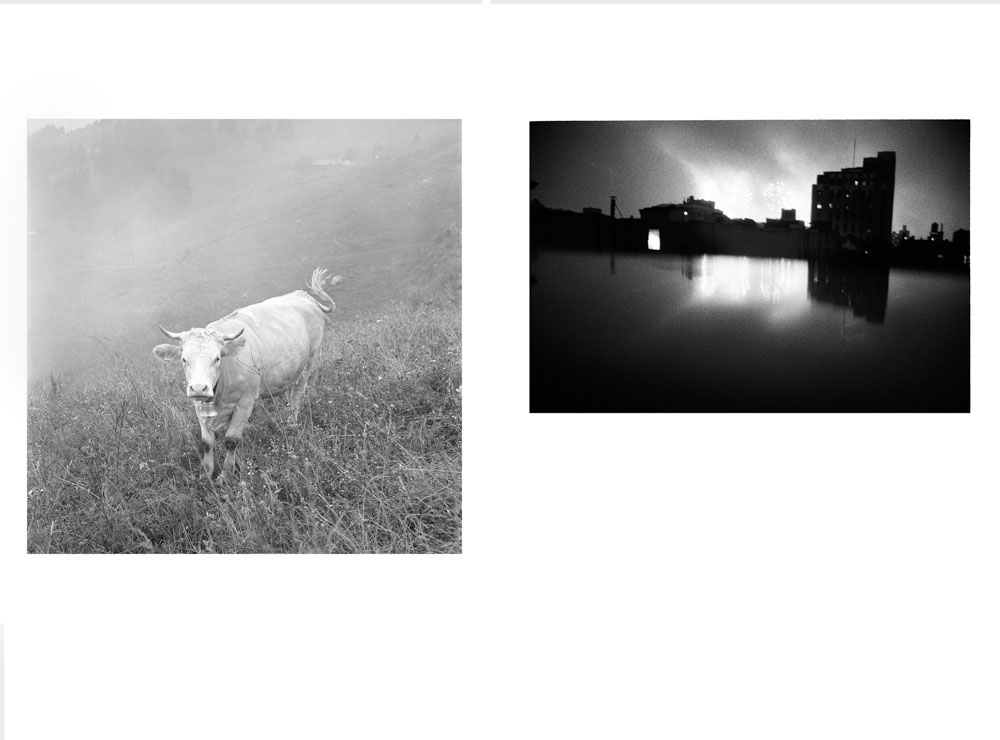
agnes region, switzerland, and new york, ny
Early summer in the Swiss mountains: the farmers lead the cattle from the valley, where they have spent the winter in long sheds, up in to the mountains. Before they do this, however, the farmers prepare the paddocks to receive them, and for several days they plant posts in the mud along the slopes, and string electrified fence-wire before plugging alligator clips into the squat lunch-box-sized batteries that sit along the road. At this time, the path up through the paddocks is clogged with Subaru Foresters and Fiat Pandas, and at lunch the cattle-herders eat and drink around small campfires in the drizzle, walking off a little ways to relieve themselves into open space.
///
A video made long ago from the rooftop of a summer sublet on east 22nd street, at the ‘ripe’ age of 20, dv camera set to high grain and low-shutter speed, so the flashes on Stuyvesant Town as the fireworks went up looked like footage glimpsed as a youngster of the siege of Sarajevo, the heavy boom of a close rocket & then the crackle of other rockets on the other side of the island sounding like street-side gunfire.
Sidenote: the technical term for the new breed of highly-sadistic and graphic horror movies like Hostel and Saw is torture-porn. That’s torture plus porn. Consequently ‘food porn’ describes the photographs that fill magazines like Bon Appetit or Gourmet, photographs that show food at its most succulent and readiness (to be eaten), identified by an extremely narrow depth of field (the stomach does not want to eat sharpness, it wants blurred suggestion of eggplant & thyme). And HD technology in the more commonplace type of pornography has forced the adoption of other, adaptive technologies: anal bleaching, for one.
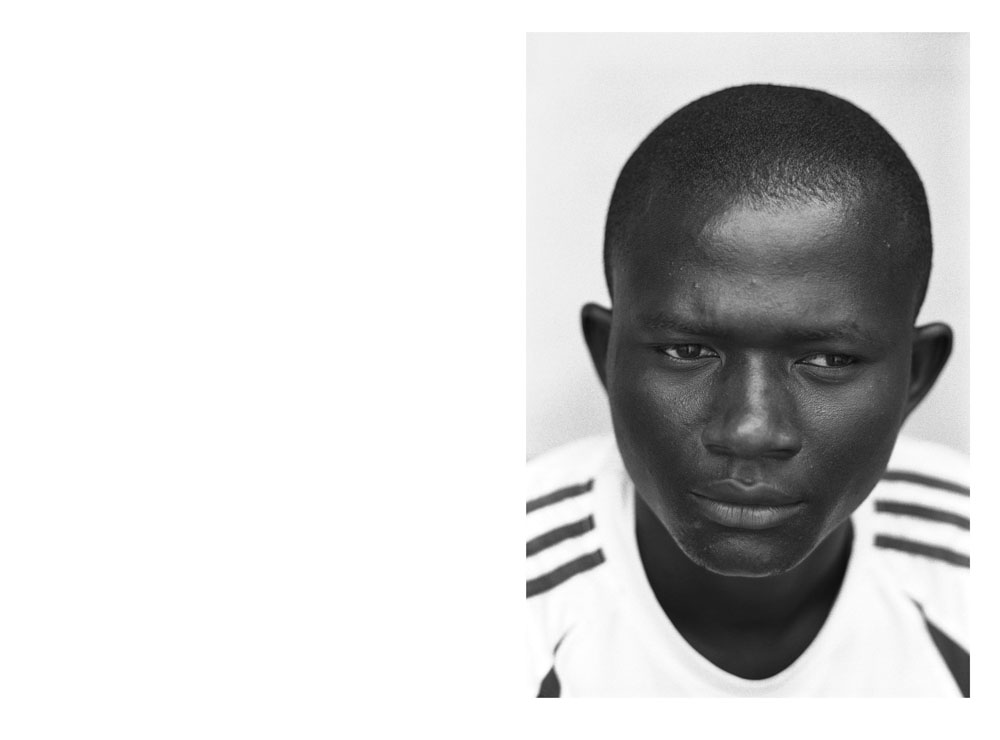
williamsville, abidjan
He was reading a book called ‘Be Confident In English!’ but in shyness would not speak a word to us. When I photographed him, however, he turned off his consciousness and disappeared inside himself, as if the encounter had finished and we had walked away, to leave him alone again on a fold-out chair by an improvised soccer pitch beside low huts.
Shooting wide-open and with manual focus at the closet focusing distance, I hovered over and bent forward until the twin-images of his eyelashes overlapped (this is rangefinder focus).
The optimism and quiet hopefulness of some people: expressed not through character (eyes narrowed, the ‘disappearing’), but through action (the studying, the being a nurse).
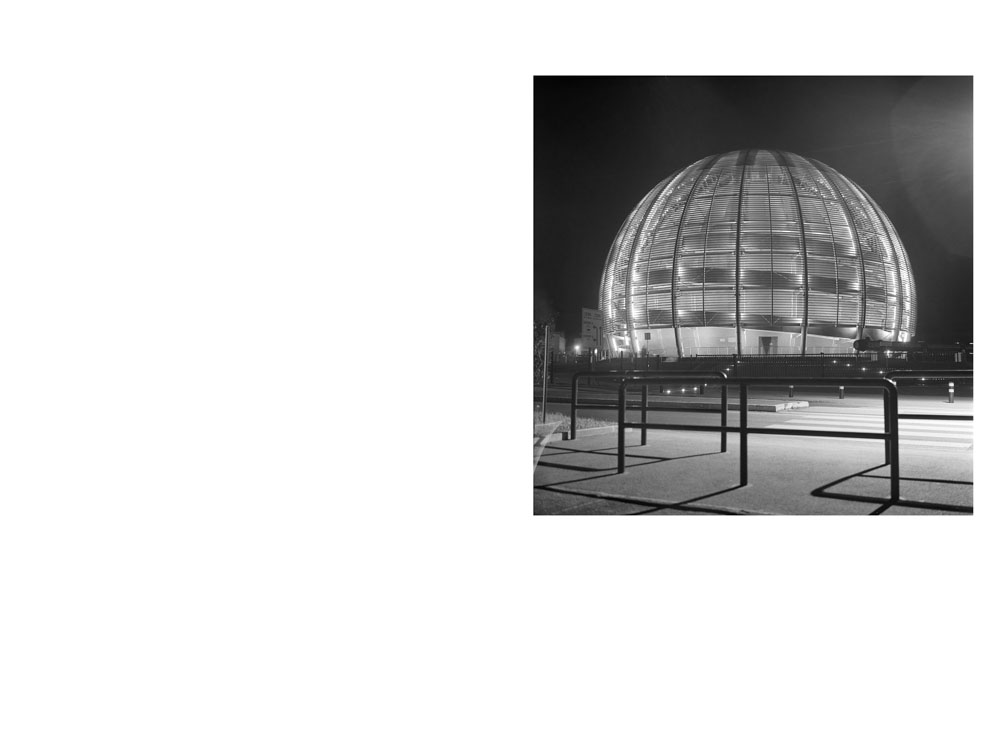
meyrin, switzerland
This being some part of the LHC. There is a 27-kilometer circular tunnel running from the main buildings to the various laboratories of CERN, under quiet swiss/french farmland & under supermarkets and faux-british pubs, to the testing centers known as Alice & Atlas and CMS and LHCb. These centers sit underground at points around the hidden ring, and measure the various products of carefully-controlled explosions of ion stream into ion stream. As the protons accelerate around the ring at unbelievably close to the speed of light (taking 90 microseconds to travel the full 27 km of the ring) they will be ‘collided’ (one proton-stream forced into an oncoming proton-stream by heavy electro-magnets), and the protons will pull apart (ideally) like the goo you played with as a child (that splatted out upon collision with a wall, but then curled back into itself, a shy youngster), and in the gaps between the molecules the scientists hope to glean greater understanding of the origin of our universe and/or discover the unseen particle/value that already, without ever being detected, has been written into unified theories of everything (and commonly described as the Higgs Boson, or God Particle). A liquid hydrogen leak delayed the project until September 2009, when it will be switched on by God’s own particle, Tom Hanks.
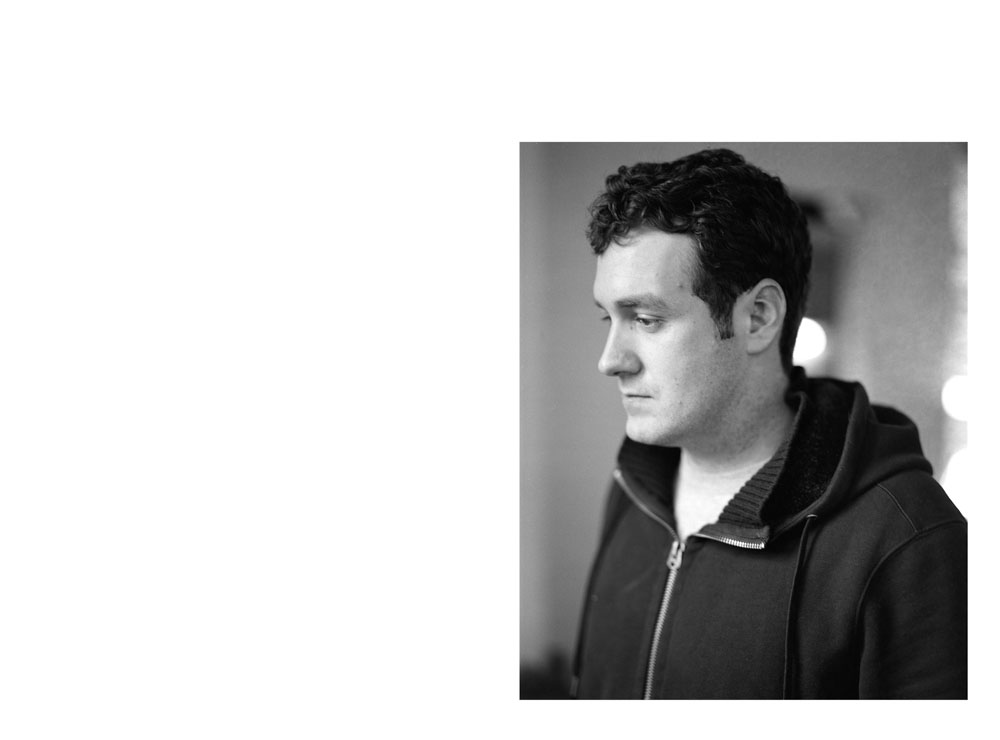
new york
The concept that every seven years there is a complete reproduction of the human body on a cellular level, the idea being that every cell will have died and been replaced in seven years: suggesting that we - as in we, a collection of cells operated by a weak electrical field that is mind - are reborn anew every seven years. Though are lives may not have changed, we have changed, and changed completely. But this theory has been debunked, and cells turn over and different rates, and some cells (the brain cells, no less) never die and are never replaced. As you age, you age. >>> The reality that if you’re going to cut the cord, cut the cord (a piece of advice given to me).
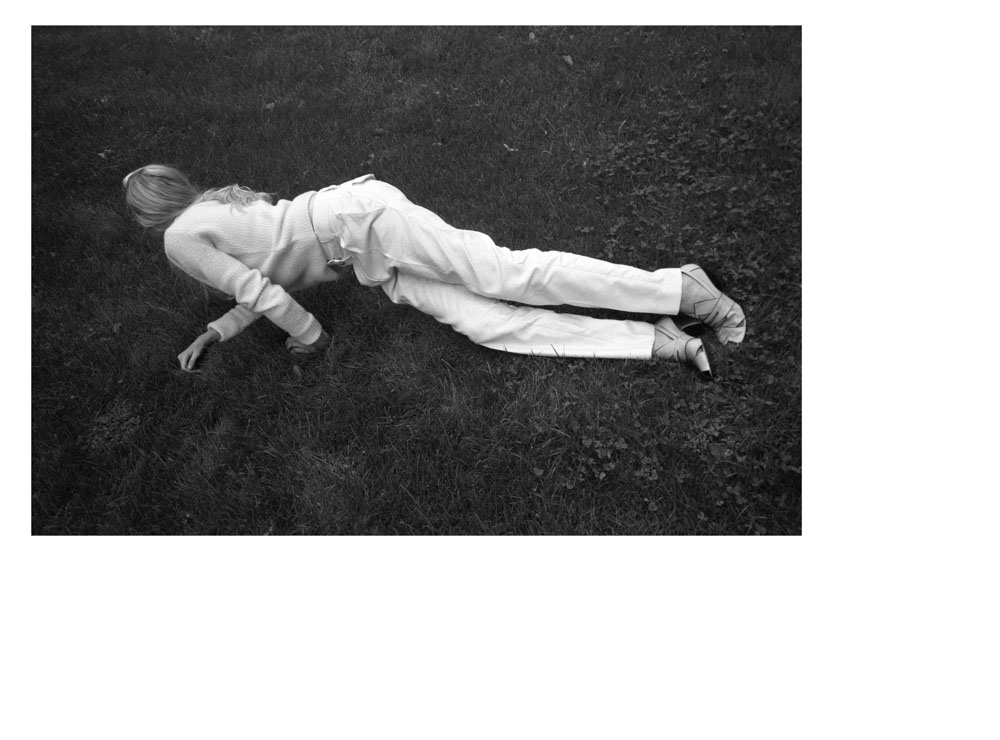
sagaponack, long island
The poses of inexperienced models are sad to observe, and they all play the same game: the sexy game. Someone somewhere is telling them to do this. Regardless of their age, they narrow their eyes like sleepy cats, part their lips in parody of abandonment and tilt their shoulder up at the photographer, as if they’re Marilyn lying in bed as in walks room-service. For the perfect pout, Tyra Banks suggests making a hole with your lips and blowing through (like a whistle without the sound, or a kiss without passion), and now the photographer, whilst changing memory cards, hears the rush of inhalation, and then, upon raising camera to eye, the ‘ut’ of a breath held suddenly in chest. They lower their chin.
The ideal pose is an aesthetic relaxation, or an awkward artifice. Anything in between is average and strained and unnecessary.
C McDean, photographing movement for fashion, directs the model to jump left to right, but releases the shutter after the movement has ended, when the model has landed to the right and is in the act of almost starting to step back to their start position. They do not look posed, nor do they look relaxed. This is a no-pose pose. This is the pose between poses, when the ‘self’ exerts itself to the point of eradicating any and all controlling intentions.
Snap frames until they tire, until their body stops listening and does what it wants (relaxes, finds the gravitational center, does what the person would do, not the model). This is the pose of actual people, of the elsewhere-mentioned ‘real’ resting expression. This is the posing of people on a late-night JMZ train, sad eyes down, feet tucked beneath the seat.
This is the truth of things emerging, in much the same way as a person’s character emerges not from what they say or do, but from the manner in which they order at restaurants, or how they ride a bicycle through traffic, or how they turn slowly in the night to lie at a diagonal.
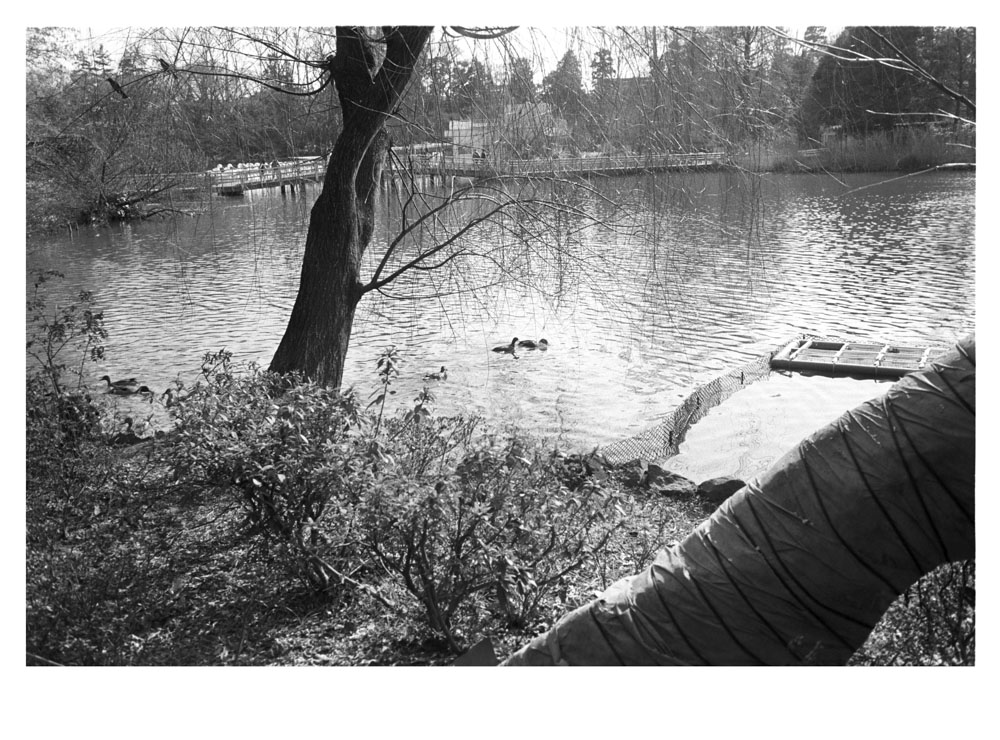
kichijoji park swans, tokyo, japan
I was walking with ST, talking slowly and asking for the japanese translations of the simple things I wanted to ask. We were shooting for a western magazine, and in my nervousness I photographed everything but him. There were all sorts of other people in the park on this cold weekday in early February: elderly couples, good friends firing airplanes into the air with rubber slings. I took the train early and sat for lunch at a small restaurant staffed entirely by beautiful girls, and had A1+ curry - rice on one side of the plate, curry sauce on the rest, and a salad: greens, spliced radish. We walked to the Ghibli museum, to the marshmallow puffs atop the gates, and turned around. He made all his music in a small room in his parent’s house, and tried to play quietly. His parents did not understand his music but this did not bother him.
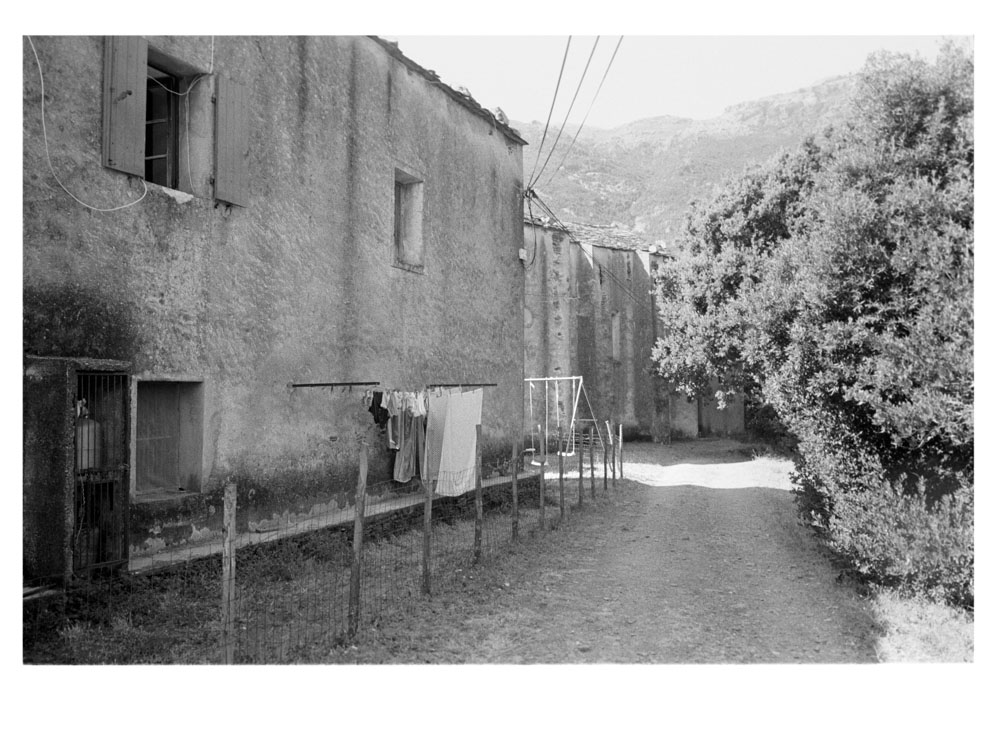
sisco, corsica
..... (noises of televised soccer matches, wires strung from window to window, washing hung in the garden of weeds). One day, a father and son, waiting with shirts off in a van the matted color of rust. The next, nobody, one small tricycle upended beside the tilted wooden cross. And finally, on our last day, the son, dissolutely bouncing a tennis ball against the wall. He paid no attention to us. A man’s voice called from inside the house.
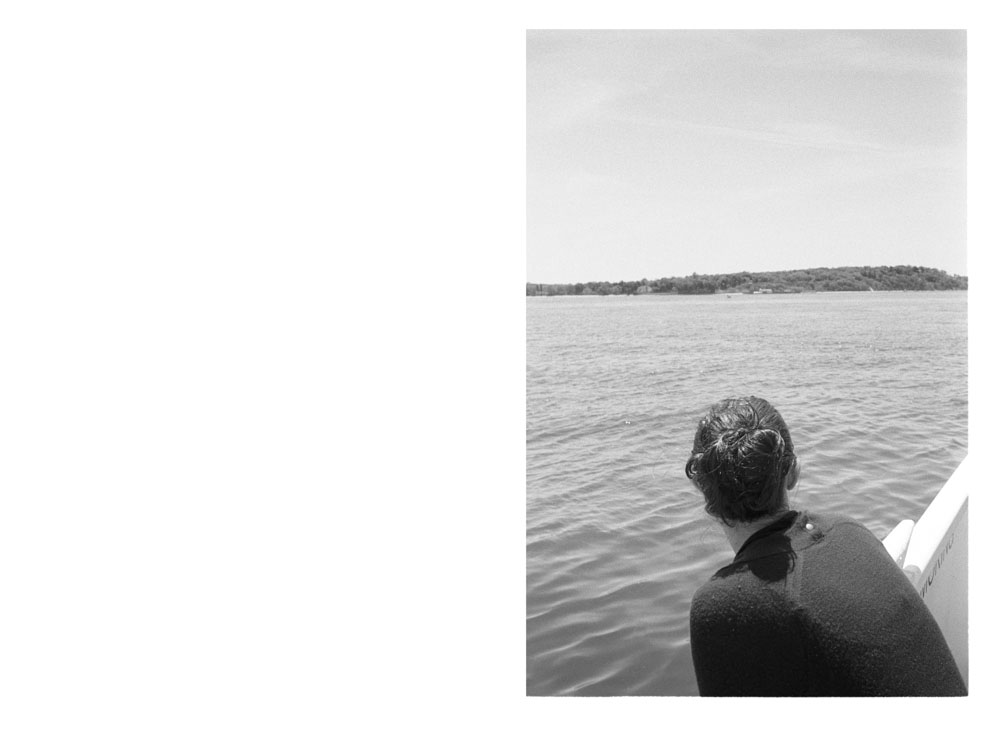
shelter island ferry, long island
In a new conception of time concessions are made to the more fluid time of people.
There are, in essence, two types of time: Historical Time, & Personal Time.
Historical time is the concrete time of a meter-rule. It is the measurable time of clear intervals. It is the time of the calendar and of rationality, of day and night, of daylight savings and miles-per-hour. This is the time that you would say governs the world, while Personal Time barely governs.
Personal Time is the time of people, the time that we always hold in our heads, which we refer to when we think, ok, that’s enough time in the shower, we have to go to the shops. It is the time of emotions, used to measure how long someone can be absent before they are missed. It is the type of time that speeds up as we get older, so that we change less from year to year, and summer sometimes just passes us by. In youth Personal time is long and interminable, and seems friendlier than in old age, when its constant acceleration makes unkind suggestions.
The difference between Personal time and Historical time is the time it takes to correctly boil an egg, they say 6 minutes for a medium-boiled egg (yellow yolk still running, whites pure), while in the head of humans there is a questioning known as instinct. The timer says six but the cook holds on, and gives it a few more seconds.
Two people sitting opposite each other at a kitchen table count to twenty in their heads, then tap the table. One taps before the other. Personal time showing fluidity.
While Historical time is concrete and a stable measure for the various characteristics of Personal time, it is ambivalent and has no human characteristics. It can not be cruel or kind. It is a meter-rule, a mere dictator of facts.
Personal time can be both cruel and kind, and depending on the person and the occasion, it can contract or extend. Just as Personal time is no measure for Historical Time, Memory is no measure for Personal Time, and a valid goal for daily activity is extending this Personal Time. While Historical Time, in its impartiality, will give equal weight to each day, Personal Time will make some days short and others long, and in memory some days/weeks/months will just disappear.
To repeat, a valid goal of daily activity is to increase the weight or size of a day’s Personal Time relative to Historical Time. One way to to do this is to do something new, to visit a new place or to do something never done before. Because that activity is original, the carbon that lies behind the clean piece of paper (the clean paper that is each new day) has not been imprinted, and the impression made will be most clear. Of course, just like the carbon, the repeated making of similar impressions will blur the original, so the important thing is to keep on doing new things. Thus Personal Time expands.
In looking back over the Historical Time measure known as a ‘year’, the normal person will use incidents of Personal Time to describe the sequencing of events, such as: ‘That was the time I went skiing,’ ‘I kissed MariaCarla’, or ‘I bought a new camera’. This Personal Time milestone will, sometimes, expand even beyond the scope of the Historical Time measurement (the single day the event took place), and populate the surrounding & comparatively diminutive days. This is a valid blurring of Historical Time.
However....The elsewhere-mentioned post-industrial obsession with materialism and productivity even in eras of commodified luxury: this obsession has promoted the virtues of a life lived in which every day is valid on the Personal Timeline. Sometimes there needs to be a week spent on relatively calm and unproductive work, on pleasurable wastes of time.
Nobody knows as yet how to correctly partition time. What percentage should you give over to remembering, and what to creating things to remember.
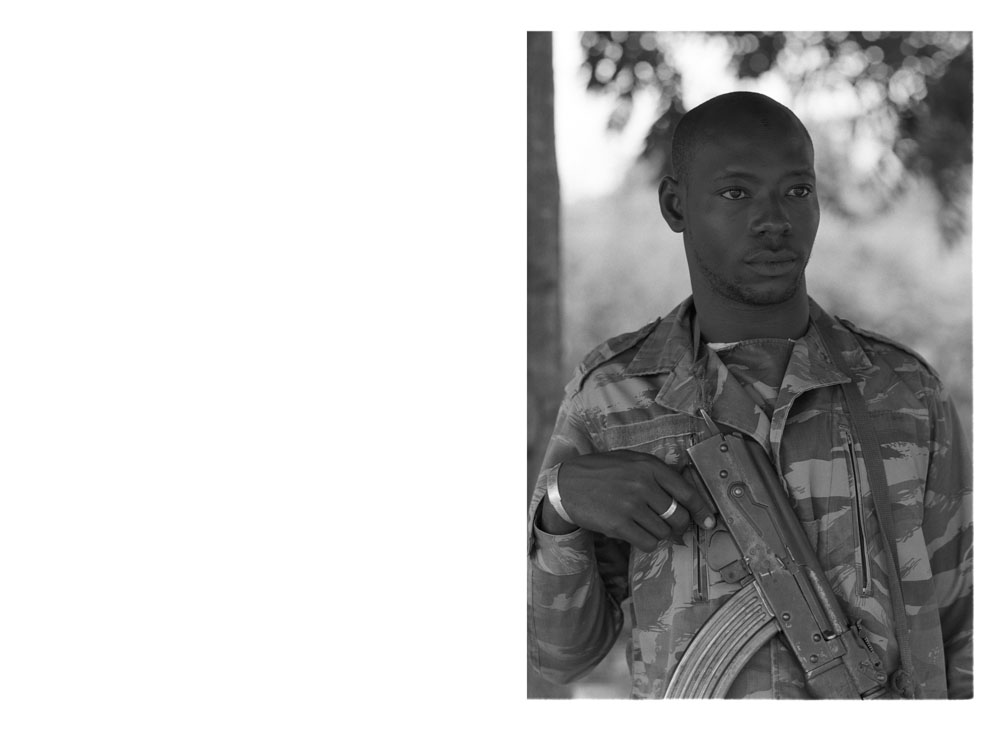
bouake, cote d’ivoire
They stood under the tree calmly and patiently, despite having no idea who we were (only that we were not from Bouake). The rolleiflex twice failed to take up the film spool, I cursed and threw away rolls of color, making a scene.
The one soldier stretched out by the motorbike sat up and took a little interest.
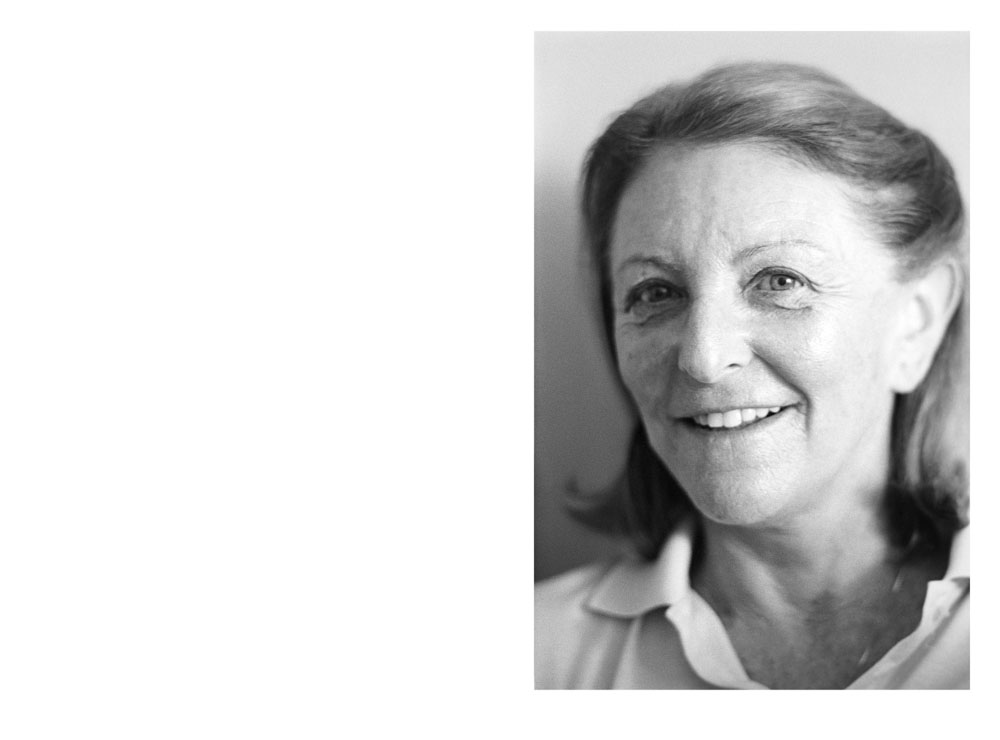
palm beach, florida
Unhappy with the image because it makes her look old: old in one way subjective (the relativity of old, C telling me I look ‘old’ when I smile) and, in another, objective (old as over 60). But the reality that she is objectively old, and subjectively young (she named her car the same name as the brand name of the car, but sounding across the parking lot it is suddenly feminized, the car now a teenage girl, the brand name altered through her usage to seem more human).
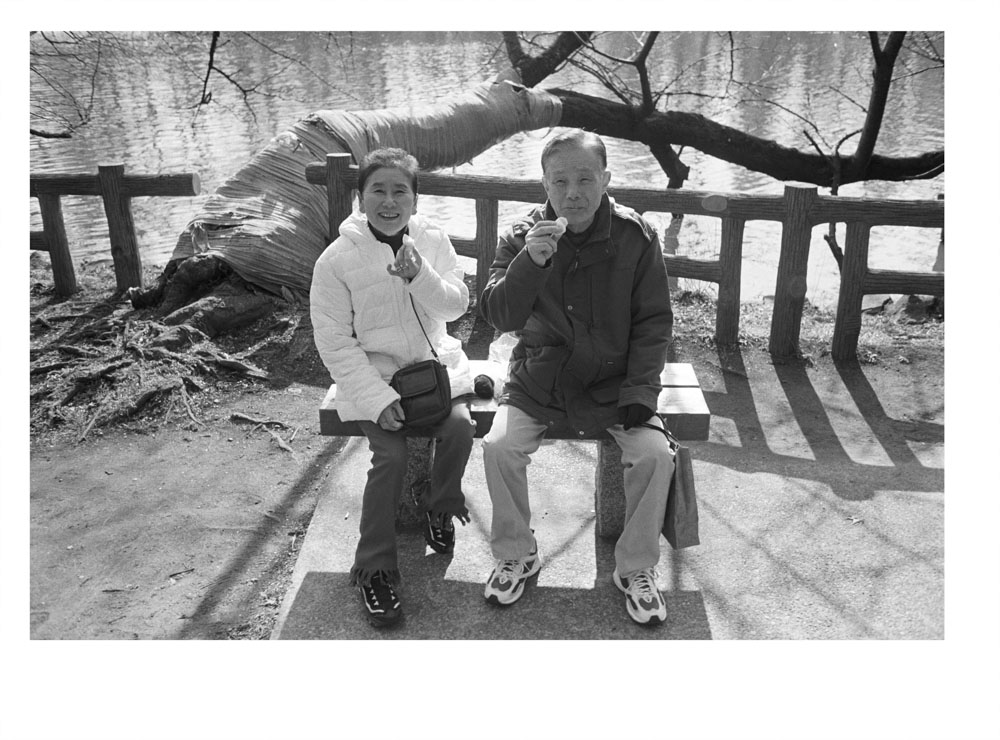
kichijoji park, tokyo, japan
Japanese cuisine - forced awareness of flavor&taste through ready segmentation of the food, and exceptionally ornate preparation: in Kaiseki Ryori, the multi-course haute cuisine of japan, they balance the flavors and textures and appearance of the food, with many small courses, amuse-bouche after amuse-bouche, moving from one-piece sushi to vegetables carved into flowers or flowers served like vegetables, to desert, brown rice, several variations of pickle, arriving in five bowls (three octagonal, two circular), to be eaten with bare feet wrapped under the table, a light rain outside and the restaurant empty.
Also, all seen in the web-videoblog http//:www.kawaiiinadequateanimal.tumblr.com, soba noodles in a wide wooden bowl colored like a room into which you go to sweat, with an egg on a small dish to the side and unnameable spices in tidy orange piles, a half daikon radish and a grater to shave over the warm noodles, or to gather with your finger and smear on tongue. Curry ramen with a name that begins with t, like Turkmenistan, tsukamen, tsuke something, dark broth thick with barbecue pork and bobbing chillis served in a black lacquer restaurant on a day when the snow sifted through the automatic doors, chefs behind the glass paneling unfolding the hems of their pants against the draft.
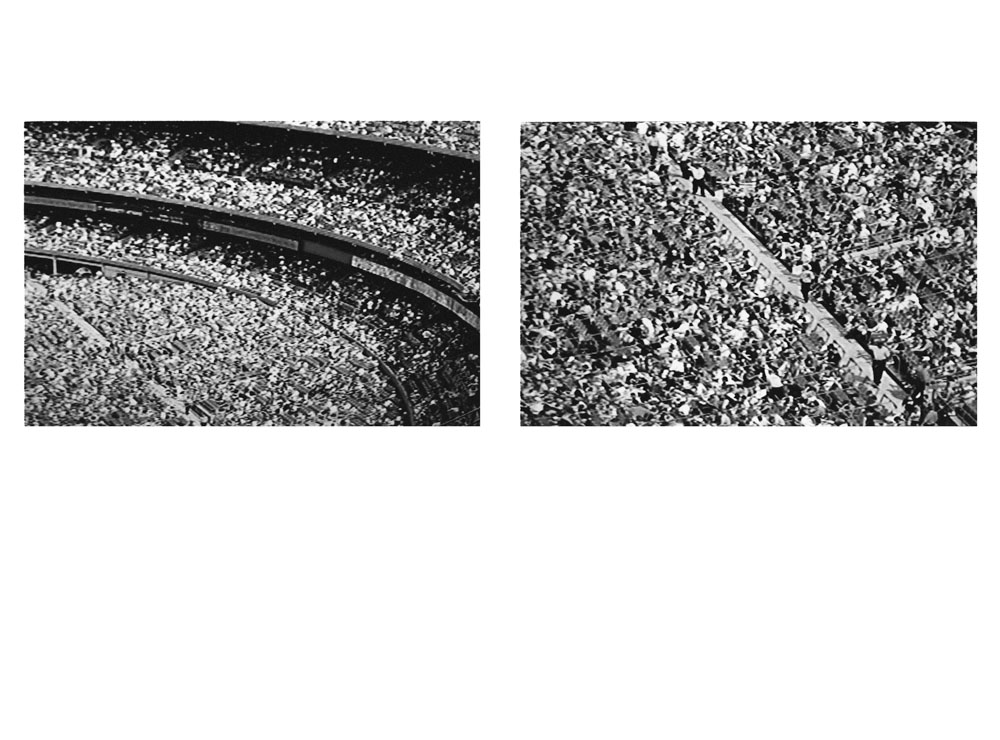
flushing, queens
The classic ‘type’ i.e. introverted & non-sporty both bookish & social misaligned, does not understand sports, and finds something shameful in not really caring. Additionally, if the non-sporty type who does not care for teams and fourth-quarter rallies also does not really have a nationality (because they were born of two differently-foreign foreigners in a country that eventually informed their accent and the way everyone labeled them, though the label did not stick on all that well (just as an adopted son receives the name of the adopters, though it isn’t really his last name (or a cat picked up at a shelter, renamed (a cat deposited at the front desk in a cardboard box, flimsy protection from winters in Quebec))), then the football-indifferent kid really is lost. They can not even stand behind the flag and shout, it all feels silly, and he thinks there is less positivity in watching a game than frustration. Why can’t they just score? Why do we support these idiots? The ref, as ever, is an asshole. (oh but the elation of a crowd wanting only victory (that’s nationalism isn’t it)).
///
Sports photography being journalism too, but of a type not easily salable as art. The pictures of news, news, as in a funeral in Kosovo, are photographs that, on occasion transcend news and become art. This is, however, because of the precedent, in art (classical art/painting/sculpture) of portraying suffering & war & tragedy. Sport, though a distillation of war (ugh), has no real art-classical precedent; perhaps the snobby among us think sports masculine & unintelligent, while art is feminine & lofty. The divide damages both (a bad breakup).
Munkacsi’s origin as a sports reporter, and the images: Leni in tight turn, teutonic, oddly & chillingly perfect, skiing in leotard & high socks (but that’s sports & journalism, the subject renders the context small); or biker through the deep puddle, the image an image of water, not of a biker (the biker being subject to the water’s action).
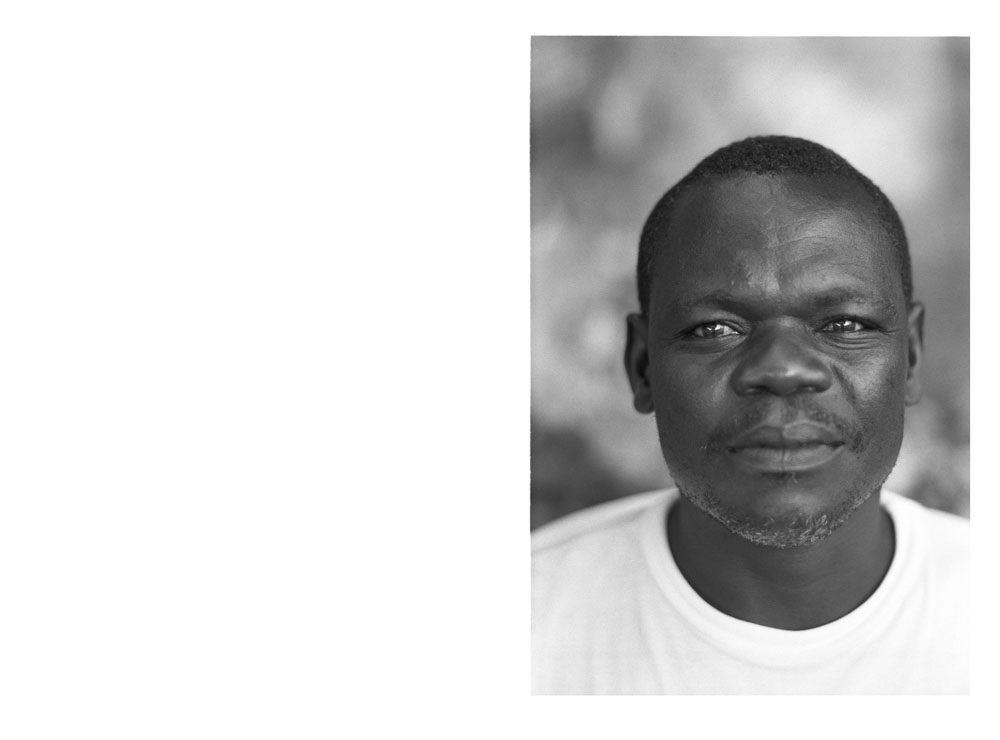
abidjan, cote d’ivoire
A vetted corp of guards (Armor Guard) with one contract only, to guard the homes of the workers at the american embassy, they were generally unarmed, but traveled in yellow pickups and wore yellow uniforms. A truck made rounds throughout the night, highly visible appearances to deter would-be home-invaders (the double locks in the sleeping quarters, the bars over every window, the escape hatch in my room, a siren that went off by mistake every once in a while in the middle of the night, filling the air with sharp physical sound). Orange (diplomatic) plates on the SUV, also highly visible, permitting (unofficially) aggressive driving: in the oncoming lane of a 2-lane highway on a night when the president was moving from his home in the city to a convention center in Grand Bassam.
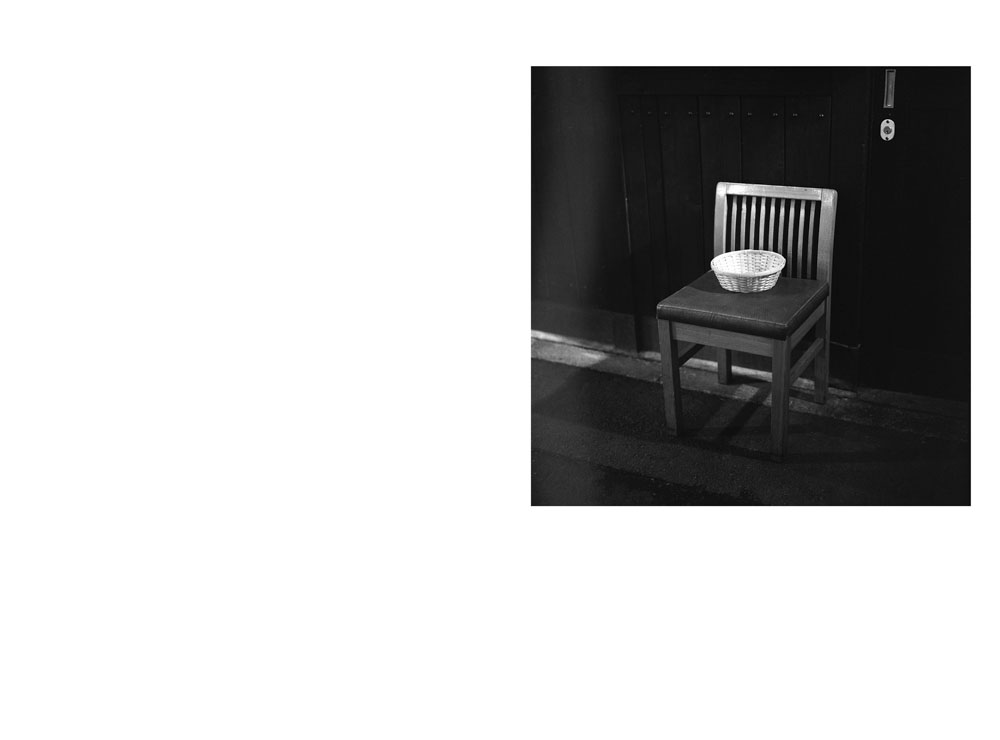
roppongi hills, tokyo
6x6 versus 6x7 - the even square 6x6 format being the premier format of medium-format photography during the days of rolleiflex and hasselblad, and upon first look the easier format to frame within, as the box in which you are doing your arranging is already nice and symmetrical. How would an Arbus look with an extra little bit on the side or the top? Your eye wouldn’t move from the kid’s taut expression down his skinny frame to his hands of an epileptic and the held hand-grenade. L Miller’s photograph of the suicide in stormed Berlin would not hold the body from hand to head so tightly, the buttons of the cushioned leather banquette across the top of the frame, and it wouldn’t be so nice a companion image to the SS guard in the canal, the two dead turned slightly away, with all focus on the torso and the arms and the head.
The myth of the 6x7 format as the ‘ideal format’ propagated by Linhof in 1959, and came about because a 6x7 negative can be easily enlarged to an 8x10 or an 11x14 print (the typical sizes of photographic paper, and, appropriately, a good fit for Rolling Stone magazine). Also the ‘longer square’ (as a rectangle is not really ever called) is more appropriate for both landscapes and portraits, as land is wide, and bodies and faces are also more tall than wide. Furthermore, the classical composition method known as the golden ratio or divine proportion, is only really used in rectangular compositions, whereby the frame elements are aligned along a golden spiral, or Fibonacci spiral (which approximates the golden ratio using a fibonacci sequence of square sizes up to 34 to define a curve turning in on itself in decreasing thirds to a point somewhere toward the inner-middle of a corner quadrant).
Magnum photographers typically employ the golden ratio in their traditional 35mm images, and C-B’s iconic earlier image of an exterior stairwell and a biker blurring past forms a nice golden spiral from top right to mid left and arcing back on itself toward the biker’s seat. The Magnum photographers also typically employ three levels of focus, close, mid and far, and position the focal elements accordingly: there is the main subject(s) on one plane, an ‘explainer’ or contextual/narrative element on either the close or mid, and, typically, the environmental cue on the far plane. We see this in all the classic Magnum photographers, the photographers now written off as ‘old men with leicas and tri-x’, Capa, Koudelka, the exiled Natchwey, even the new brood use the off-center + negative space rule. C.Anderson’s portfolio is very traditional. The newest of the new, however (J Au Sobol and A Sanguinetti) are less strict, and they are considered Magnum’s adaptation to the newer photofield. More than journalists, they are capital-letter Artists.
And as for M Subotsky, the recent and very young young young South African nominee, he uses a wide-wide frame and is (for the most part) an exception.
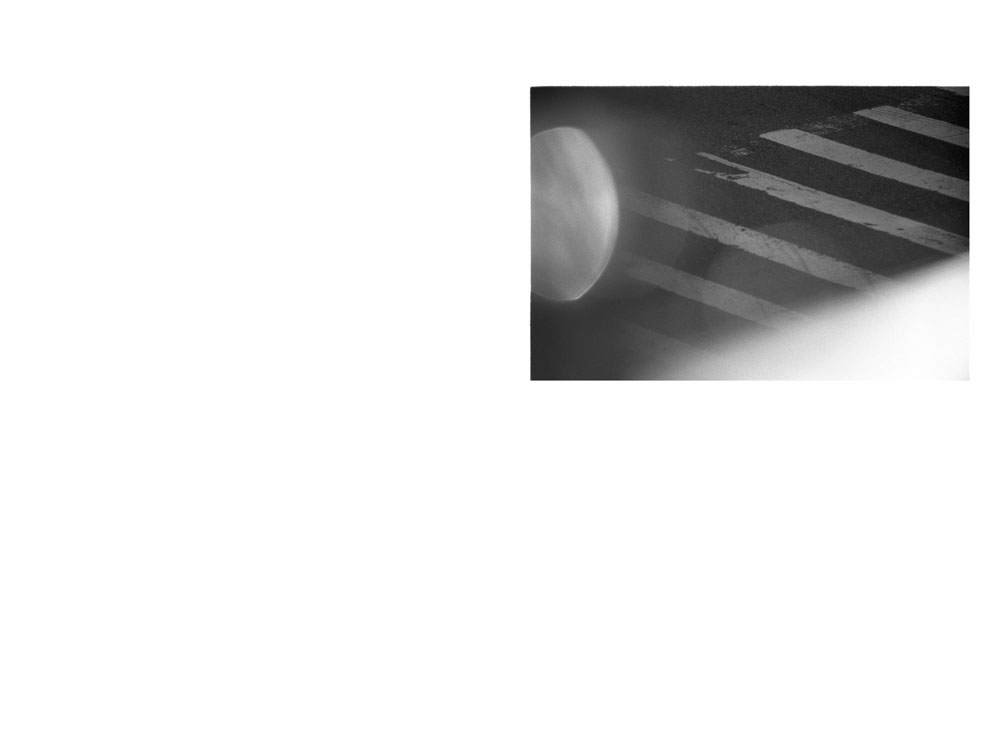
new york, ny
Some days passive days, some days active, others just neutral: life in general is composed in varying measures of the three. >>> passive describing days when there is no action, only absorption of stimuli, a day of reading or movie watching, when there is a thirst for media and knowledge (the so-called ‘book-twinge’ or awareness of the infinite, impossible volume of vicarious experience available through literature and movies and even bloody bike-riding); days like this then provide the grist for the ACTIVE days, whereby all the input is switched to output, and the active person then goes a’writing or a’photographing, and there is a need to jiggle with the mechanism of the world and carve something into the wood-top of the day-to-day. Active days spent creating and putting out product, absorbing no longer possible, only making & doing & calling, and the personality is only a doing personality. The active & passive days are the days we all talk about, and some people (sad artists) hate the third day, the neutral day.
But the neutral day is a necessary day, in some way. It is the filler on the old-fashioned album, the 4/4 ballad between hits (a day off of which to bounce the other days (to test their density)).
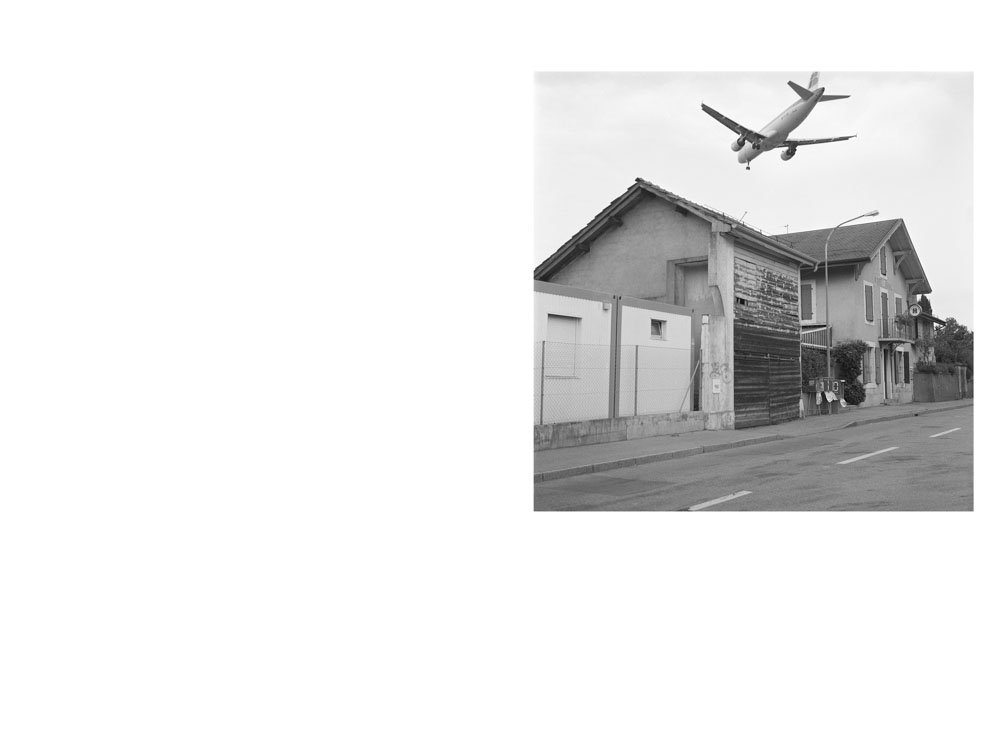
geneva, switzerland
The impossibility of flight ceding over a century to the common-ness of flight: to the prosaic, almost anti-luxury, anti-exclusivity of flight, best indicated by the quality of the food served: at the beginning caviar & salmon, now you bring on the plane your own bag of caramel pirate’s booty. But: the ever-present fear of death now embossed on a generation by the infinite-loop of the second plane into the south tower, the sharp angle with which it hit, the pure velocity, and the odd initial acceptance of the place by the tower before it blew out the other side (the moment when it was inside and there was no external activity). These were movements we did not ever think we would see airplanes make, it was not built into our understanding of airplanes, and altered perception in much the same way the Hindenburg disaster revealed the sober fat arrow of the zeppelin as constructed from pure fire and a brittle molten skeleton, skin burning back as if aged a millenia in four seconds. We have moved from thinking that flying is impossible to thinking it commonplace but still dangerous, and now we have returned, to the thought that air travel is kind of impossible. We have our regulations, our one million rules and constraints and manufacturing standards and rigorous testing, yet still, the apple fell from the tree and the water slopped from the bath, and we have our myriad proofs of science, yet it does not seem correct to fly east and speed the night forward, nor to push up the blind and see lightning above the cloud line over the sea of japan, nor to forget Winter and cross the equator to some other season (season as indicators of time, moved around by the Tardis of high-speed travel). These things made ordinary within a lifetime, yet we have not seen massive mental change: people still bicker & argue, things still fall apart, the memory is a sieve with widening holes. We are not holier nor more spiritual, thus the only word to describe our all-too human reaction to the still-insane principle of air flight (in an age when planes are tangible things smashed into towers), is hubris. Hubris. And whenever the plane accelerates to the end of the runway and drops its tail to plow up and into the night (like a drunkard, who with one successful phrase, launches into a tirade), I feel only faith that our collective belief in flight will keep us afloat.
Sidenote: the sad truth that the only results returned in a google search for 9/11 are conspiracy websites, videos, essays. Impartial footage (as in: without comment, as we experienced it that day) buried at the bottom of the page.
(plane coming in to land at geneva airport)
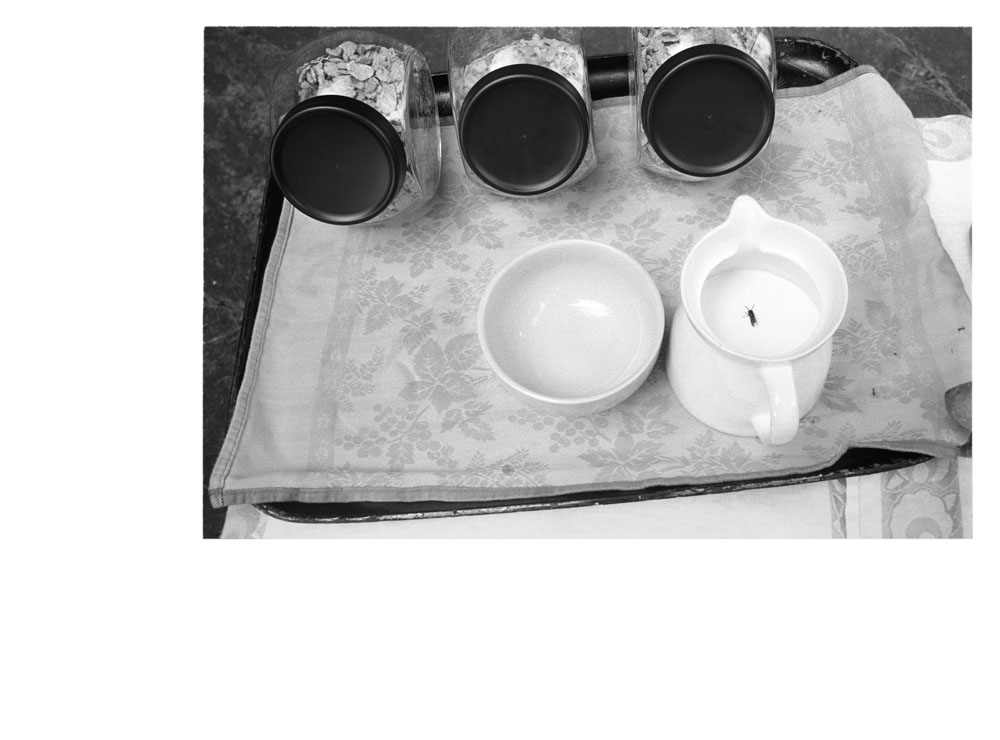
Maison Casanova, Corsica
Nightingale, CH // A video recorded May 12th, and posted one day later: six minutes and twenty-six seconds of the swiss countryside at dawn, and a non-stop singing of nightingales. But then, the initial impression of calm and beauty, superseded by certain odd & disturbing contextual phenomena: the mere fact of a man standing quietly with camera raised in a swiss garden at dawn, moving back and forth across the grass, panning left and right, stepping in to frame a grouping of trees, > all the while keeping quiet as if in fear of frightening away birds (or of drawing attention to himself); the name of the video’s poster is theblackbox666, black boxes typically the only survivors of devastating plane crashes, and 666 the number of the devil’s soccer jersey; in certain frames, a vertical band of buzzing light that would ordinarily be explained away as flare, but which is on occasion panned over by the camera as if it were a post of pure energy humming away in a backyard in switzerland. Sidenote: the very word nightingale instantly evoking not only Keats, oh Keats, but also the garden of the house on south terrace at nighttime, a memory-connection impossible to sever because when I lived there, in the basement bedroom, I read all the odes for the first time, and it was winter time & then spring, and the garden lay four feet away, through the french-doors. Every night it came in through a window opened inch-wide, to fill the room with the smell of damp soil and plants opening (this smell the very smell of london, damp being a reminder of what it felt like to be in london, this, the synesthetic bond, strengthened on numerous occasions with women in english gardens late at night (the tattoo across my chest a dimming souvenir)).
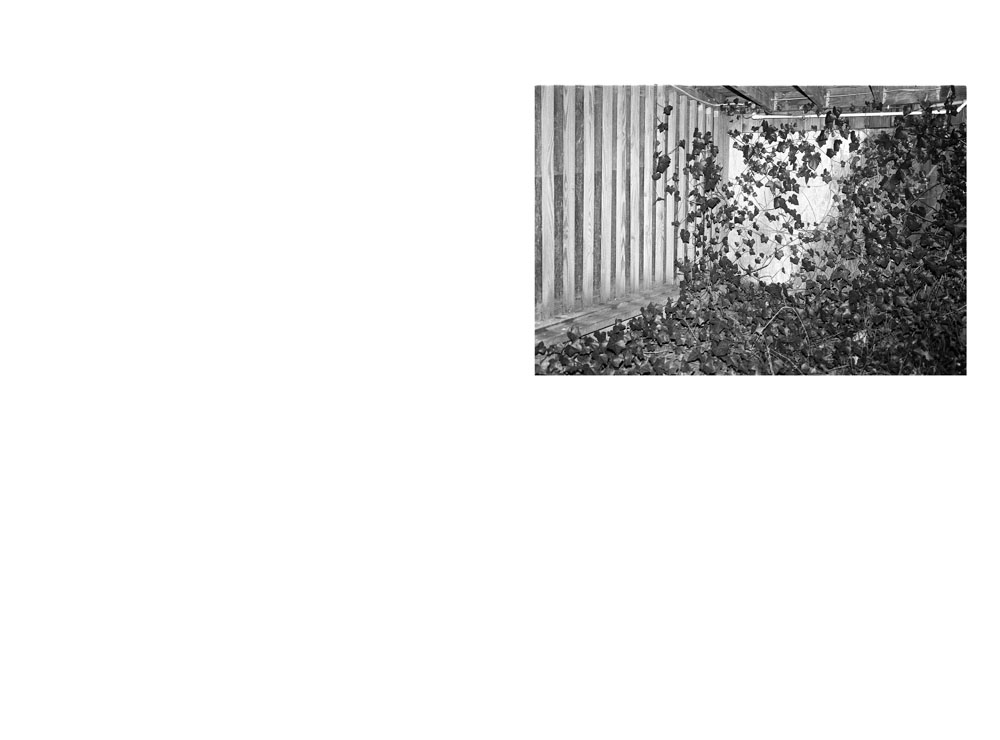
wainscott, ny
And of body and mind, the separation that so scared Descartes (but which Hobbes accepted): bodies being no different in complexity than a pocket watch (albeit a pocket watch with a multitude of timezones and alarms and so on). Our belief that human nature exists to some smaller extent than the fascists would have it, and that it suffices to garnish experience with a tendency here and there. Also, the truth that to create an Artificial Intelligence you need only list reactions to a situation (and the reactions to the ensuing situations and on and on, an infinite choose your own adventure (though ‘choice’ of course is a word you can only use in the present: in the past tense choice is irrelevant, it is just what you did )). With increased programming power and a backlog of repeated reactions a personality can be developed from a vast and of course near-infinite mapping of binaries. For example, significant advances in video game technology have modeled the toppling of a gin and tonic, and the resulting ‘wetness’ and melting of ice into carpet. Then this means we are just ‘reactive’ (the concept of free will being, uh............).
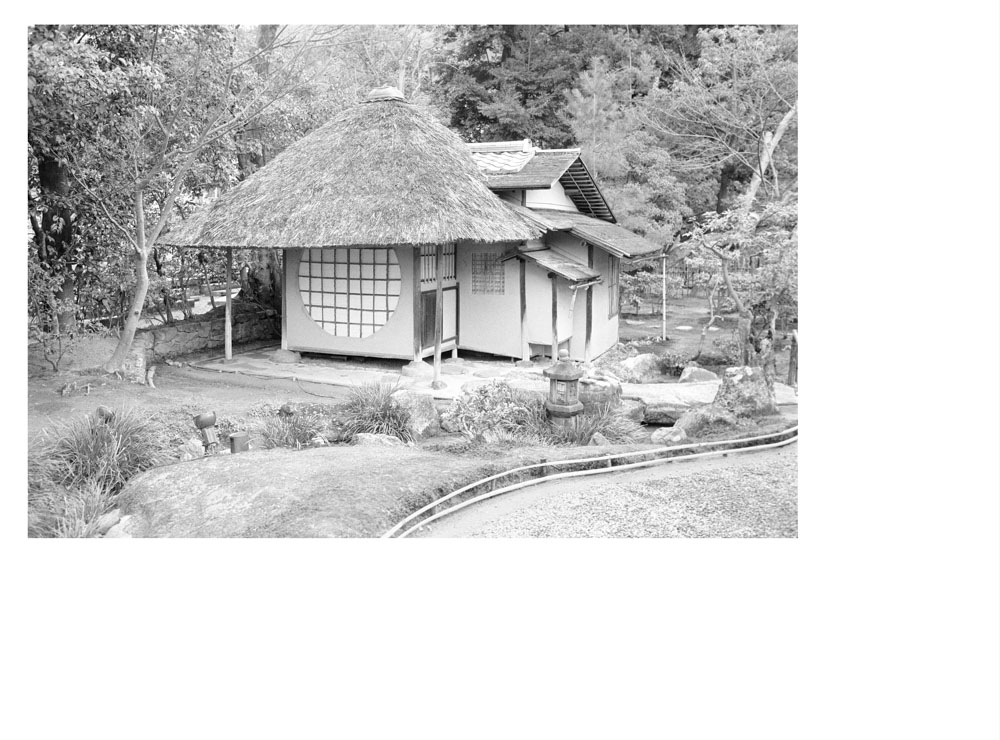
kyoto, japan
A place as environmental morphine, balm for heels rubbed raw by heavy boots (of course as places divorced from a certin kind of reality (the reality of working, and commuting, and cooking at home, and washing the dishes, and waking to an alarm (every, every, day))).
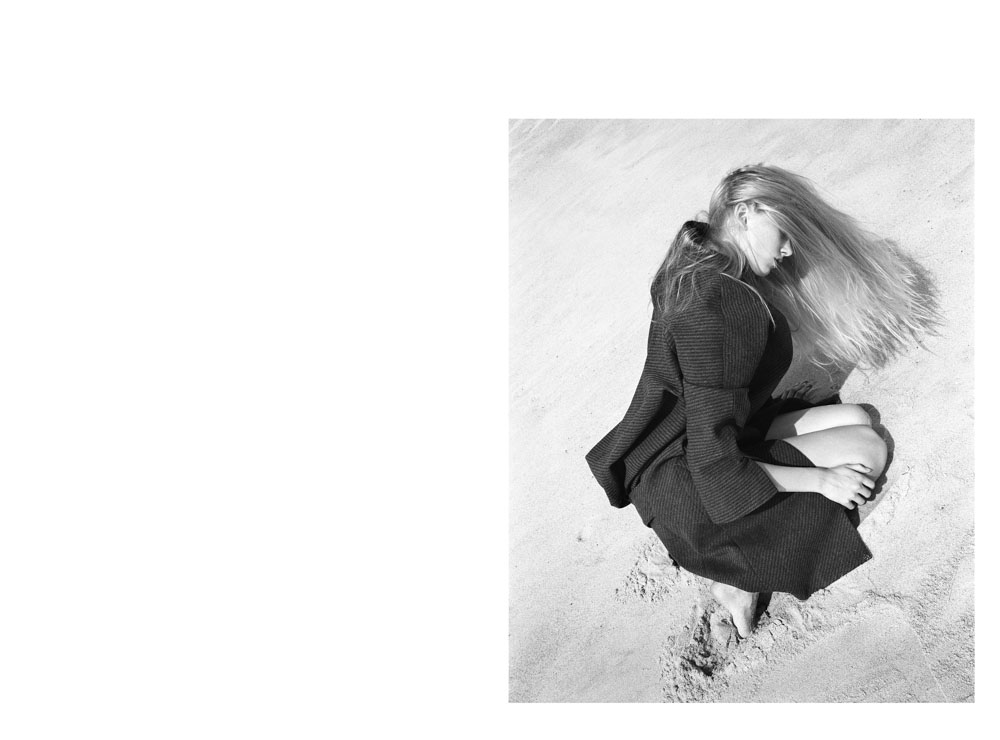
long island, ny
Early/Genius photographers clump together over time, as time itself is a sieve and everything good becomes concentrated in the past. This is why so many people lament the ‘better old days’. All times are similar, however, and as J Stewart has suggested, 80% of everything is crap. This is true of books, movies, music, and, perhaps, photobooks. Time as sieve removes the 80% chaff and when we look back we see the little distillate that becomes our classic: we all want to live in Paris in the 20’s, we want to be Jake Barnes without the testicular injury.
You look back at M Mukasci and he floats out of time like a genial ghost, all perfection and influence, and the thought that his photograph of boys running in to the surf of Lake Tanganyika so struck C-Bresson with ‘perfection’ that (the spoilt boy) he picked up his camera and ‘immediately went out in to the street’ (to create modern photo-journalism, or, well, classic photo-journalism in any event; modern photojournalism being a photograph of the event in question without subjective adornment or style (unless the sponsor publication has hired the photographer for their idiosyncratic viewpoint)). Munkacsi’s influence extends even to the modern fashion world, and a cursory flick through the pages of his monograph throws up original reference images of countless campaigns, prada 200X on the cover - fragmented beach scenes - or Avedon’s ‘classic’ early image of a woman with umbrella raised vaulting gazelle-like from the Parisian curb.
Which makes even more interesting the early assessment of one E Woolman Chase, classic-era editor of Vogue, who described Munkasci’s free and spirited fashion photographs of women outside the studio confines, whirling fabric in outdoor breezes for Bazaar, as ‘country girls jumping fences’, a terribly exciting proposition for boys raised among the black-lycra-trousered, marlboro-light packet-holding, topshop obsessives of nineteen-nineties London.
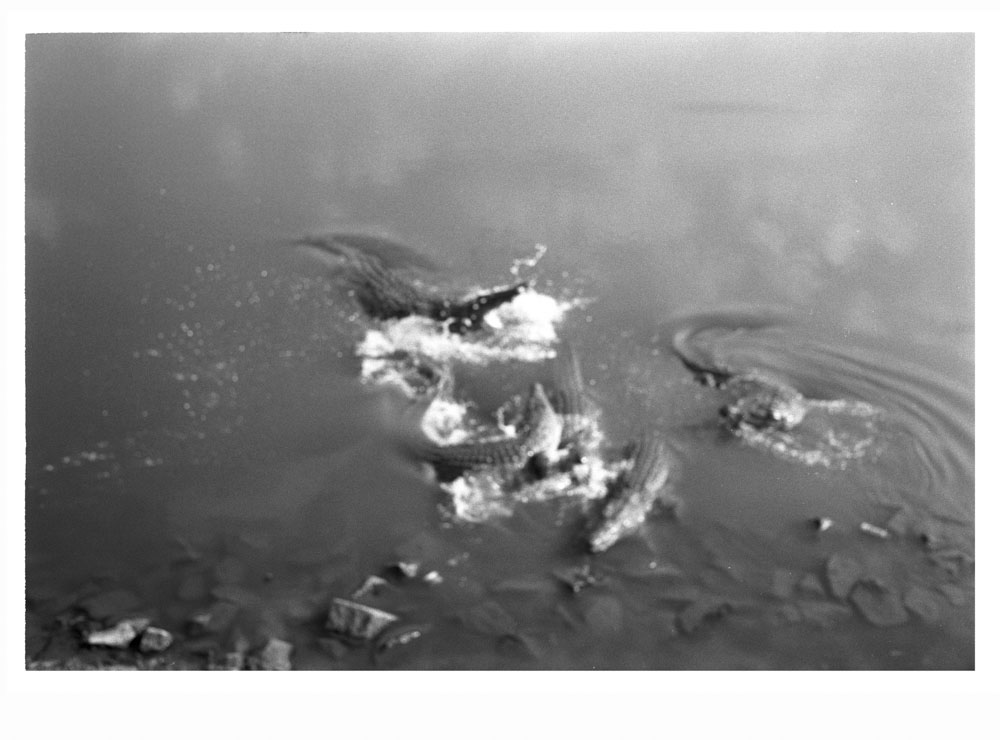
yamoussoukro, cote d’ivoire
<<< the chicken flaps a wing or calls out, but the arc is the arc of a lop-sided ball, and it is consumed into foaming water with a crack of bones (and a comic poofing of feathers) <<< the uncle, now up on the ledge, coaxes shy chickens off the rock ledge with a long pole, he swats them toward the lazy mouths partly submerged ($5 a chicken).
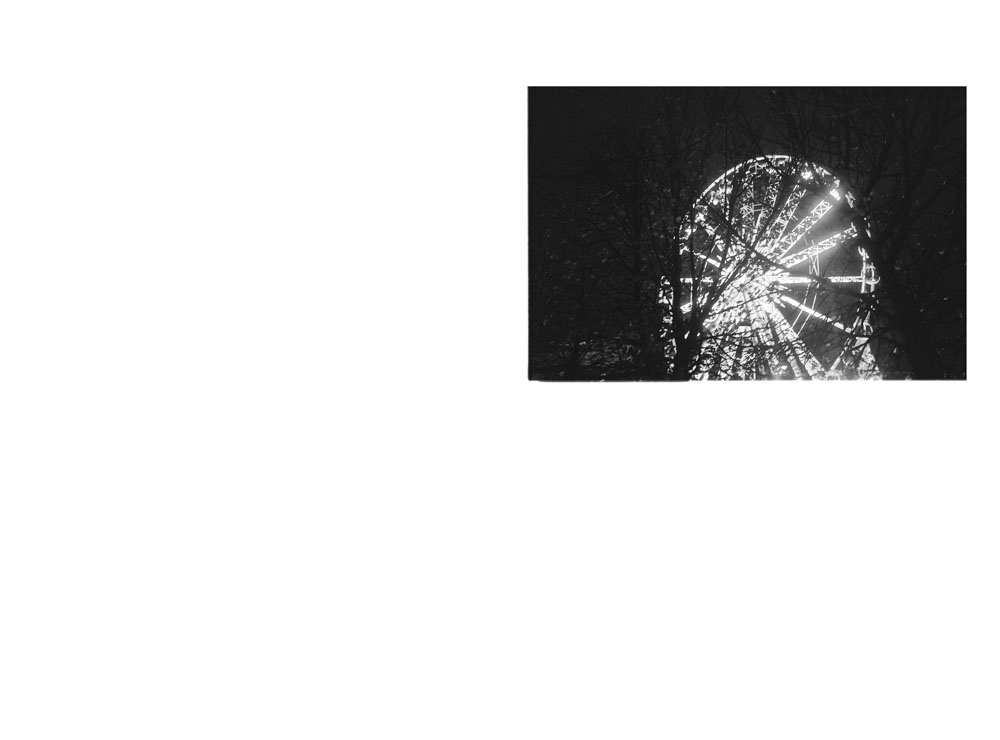
paris, france
The W. Percy ‘malaise’ that is latent in all things just as happiness slumps in the corner of your apartment (awoken only by another voice), malaise which settles on Binx as he zips along the coast in his top-down automobile - or the skin of the great Dane in il Gattopardo, thrown out with the old furniture as the old manor gives itself completely to despair (or, as per Percy, the unawareness of being despair). >>> upon landing in Paris, waiting for the old unhappiness to swoop down (if you see unhappiness as a bird), or to leak back up out of the ground (malaise as sewage from a cracked cistern). Ah, it took three days, and then we were back to vertigo & ND filters over eyes.
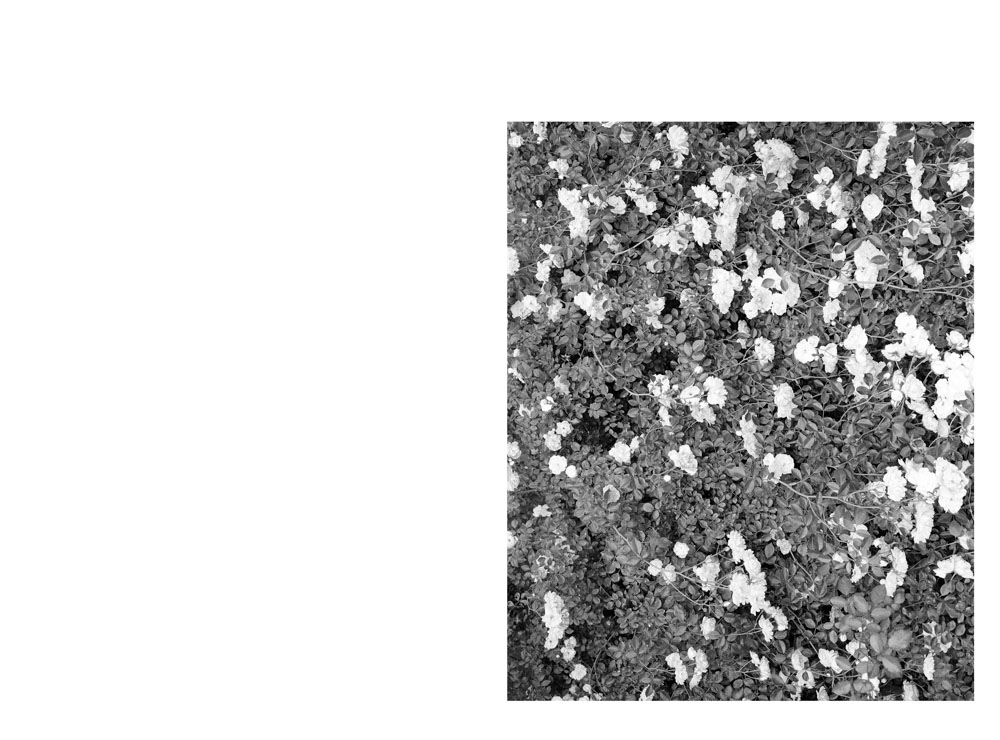
long island, new york
Flowers and plants should fill a house, in order to round out the harsh geometry of typically modern dwellings.
Flowers in vases (vases being ordinarily curved and organic) or plants in pots, placed on window sills or in corners, anywhere the strict straight line overwhelms. The eye requires a softening, as us humans are human animals, and we instinctually prefer the curves and deviant shapes of nature. A round plate on a rectangular placemat.
Light though it is a ray is not straight, it bends and fills and is always soft, even when hardened.
Red carnations in a short glass with thick blue rim, beneath the white kitchen cabinet.
Full roses with deep-cut stems behind the shower curtain by the bathroom window. Through the window the blocks of buildings ranged on the horizon: squares behind circles.
Corners hold the eye and distract - lean a picture frame against the wall and put a plant in front, a wide plant with long leaves, something abstract beside the rational. Without the dominant narratives of flowers (that they are beautiful, that they are feminine, that they blossom and die), flowers are strange and make little sense. Stripping away what we know, relying instead upon on only what we see (without thought or recollection), we see irrational things: the stalk rising and splitting, the leaves that extend and ignore gravity, and the buds swelling profanely to widen in an (excessively female) opening of petals. The scent not for us, it is for the natural world, yet attractive all the same.
Flowers as abstract objects without explanation, proof that the world is amazing (only) in its irrationalities. Flowers as irrational things with which to fill your house.
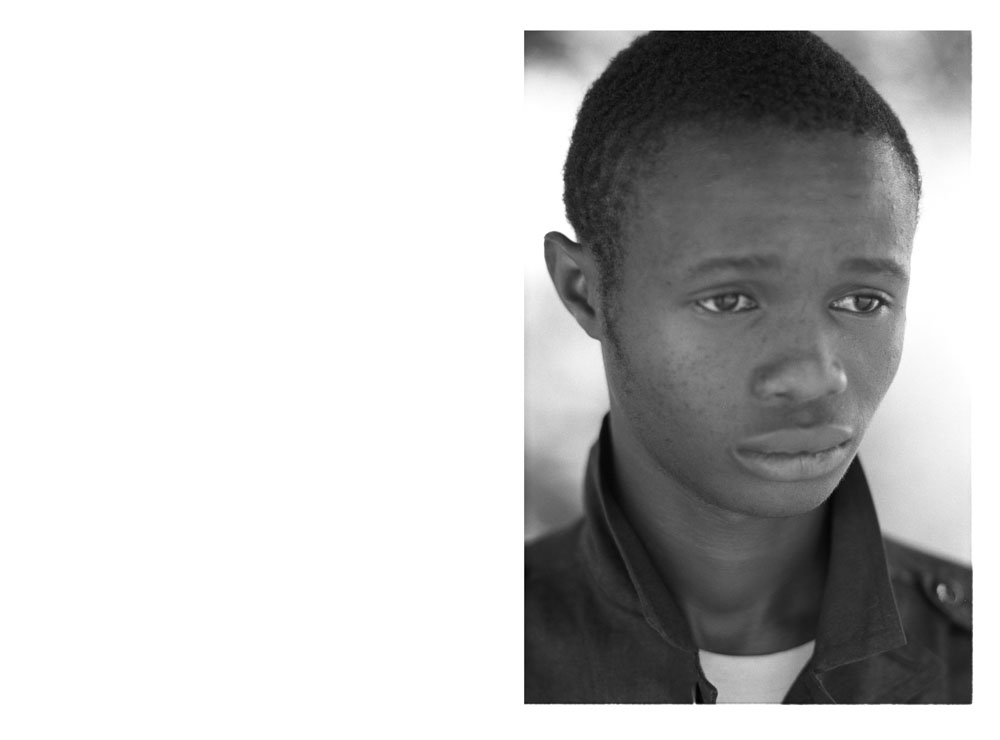
bouake, cote d’ivoire
The name of the squadron or battalion or rebel crew (or provincial army, all labels valid/invalid): force leopard, or something similar, the crack corps of the force nouvelle, the rebels from the north (intent now in securing voting rights and extending Bedie’s Ivoirité to everyone living in cdi, and not just those in the south& east, issues all of course much more complicated than can be explained by someone who, during the dinner w/ commandant big, was diverted by the sound of Magic System on the radio (D, asked, whispered, ‘oui! C’est Magic System!’)).
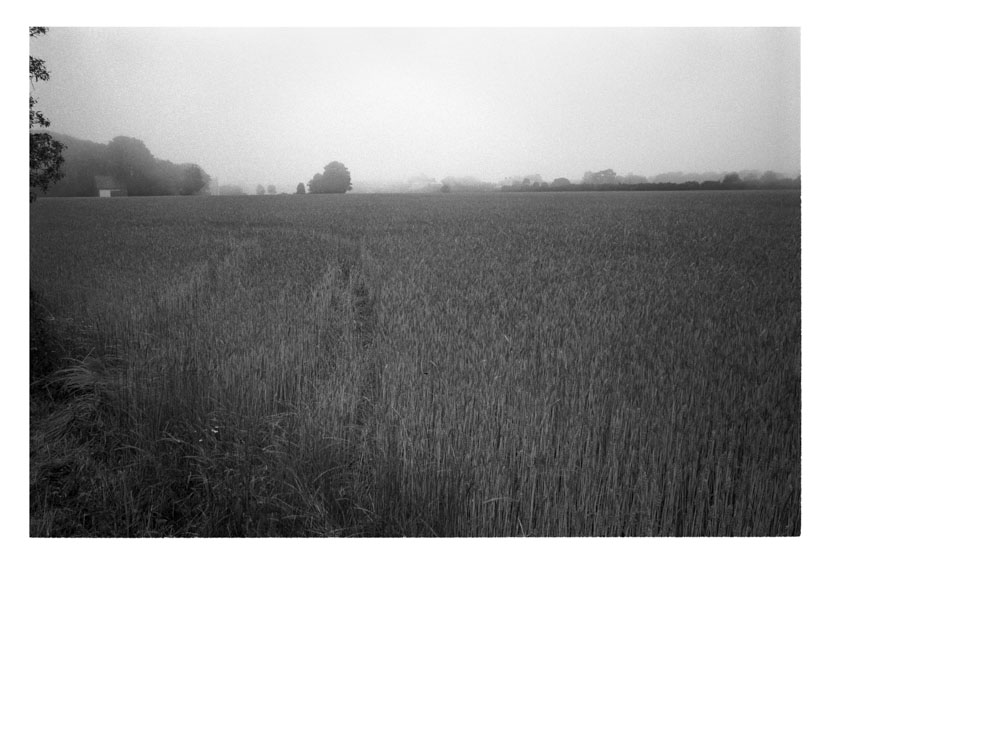
hamptons countryside
And a little time later opening the book of photographs a spurt of jamais-vu, of having never seen, of seeing this face for the first time: and a hint of what it will be like in the future when this person is no longer a daily factor, when they are the distant (past) objects of (objective) criticism.
Their chin soft again and their eyes (as photographed) almond-like and (here) perfect: the odd tone of the context of the jamais-vu being - attraction.
Attraction even after the passing of experience into memory into nostalgia, even after all the daily happenings and quotidian interactions are composted and now fertilize some new field, yet in the crop grown there the same thoughts and feelings as of years before, of when she was running across the campus in the dead of night, or when we lay on the hill beneath the library on Wisconsin and exalted spring (the afternoon before the open handed slap of a former rival).
The memory of all these things still in the field, buried in the ground.
next season’s growth, or pollen that gets in the eyes.
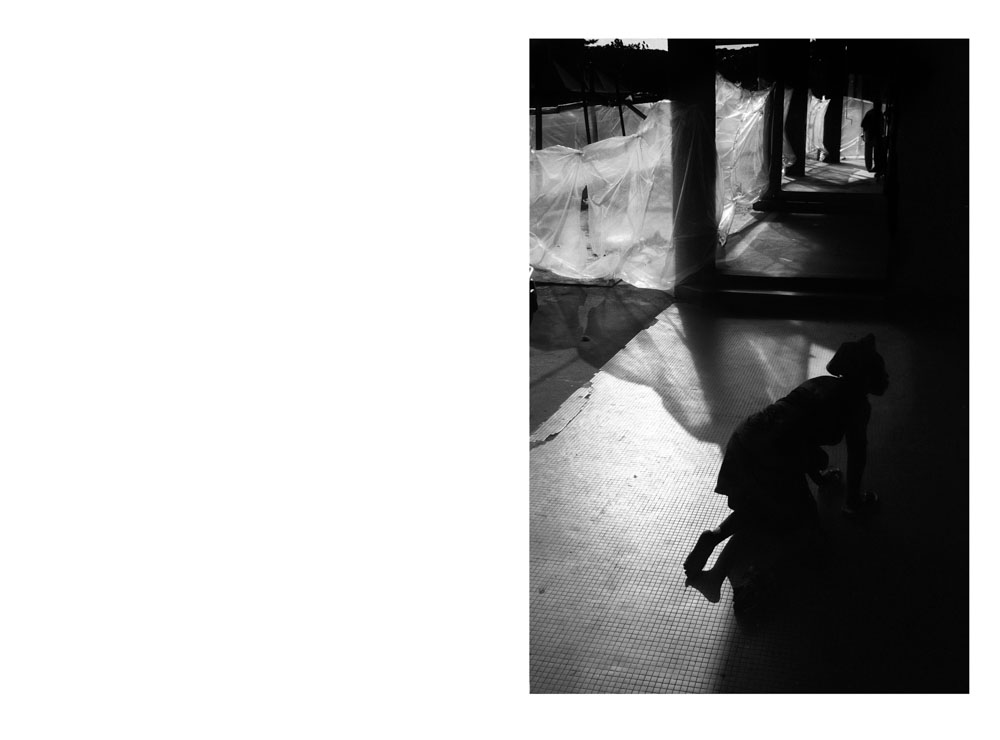
downtown, abidjan
A sidenote to the infamous 1987 defeat of Chess Grandmaster Gary Kasparov by the IBM computer Deep Blue (which was programmed with specific adaptive strategies, instead of a vast list of possible (unranked) moves): Newsweek called the match ‘The Brain’s Last Stand’, while Kasparov, after his defeat, called the outcome ‘the end of mankind’. Of course it is now over two decades since, but we all carry Deep Blues around in our pockets. The graph of computer power shows a hockey-stick lying along an edge, handle to the left.
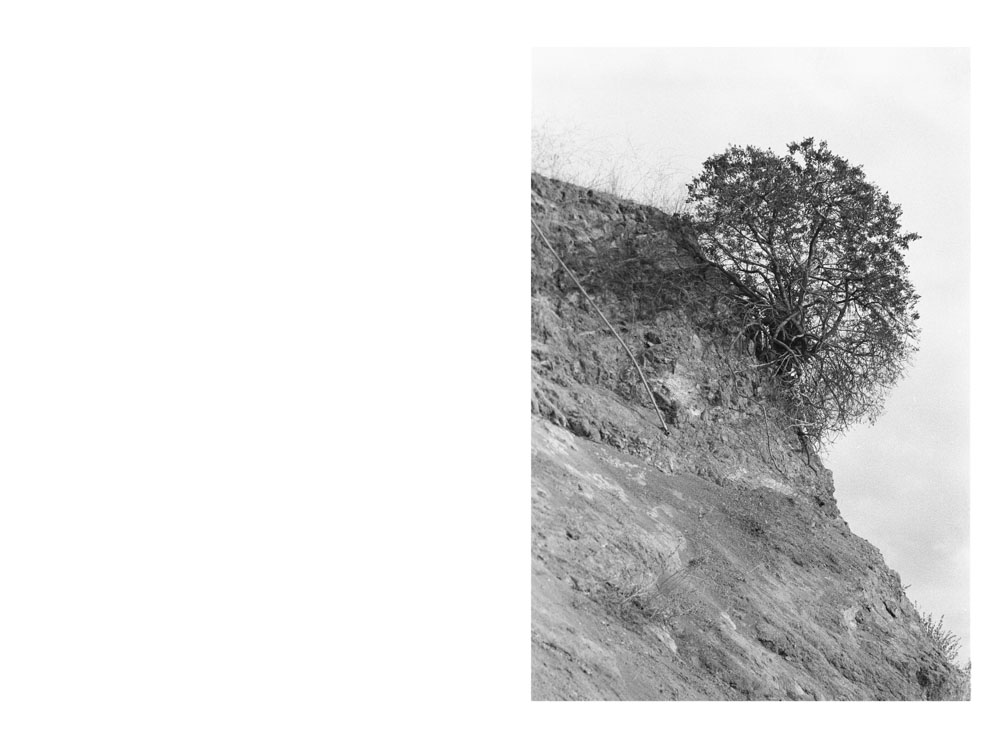
Griffith Park, Los Angeles
Friends threaten lawsuits, friends dismiss advice, friends do not want to talk about the future they do not want to talk about the past. And focused on their own things, they are thrusting forward. Friends disappear, friends say let’s go do something but know that nothing will be done, friendship becomes about something separate from history but about real, day-to-day friendship. Friends in strange places, without commonality, merely a proximity.
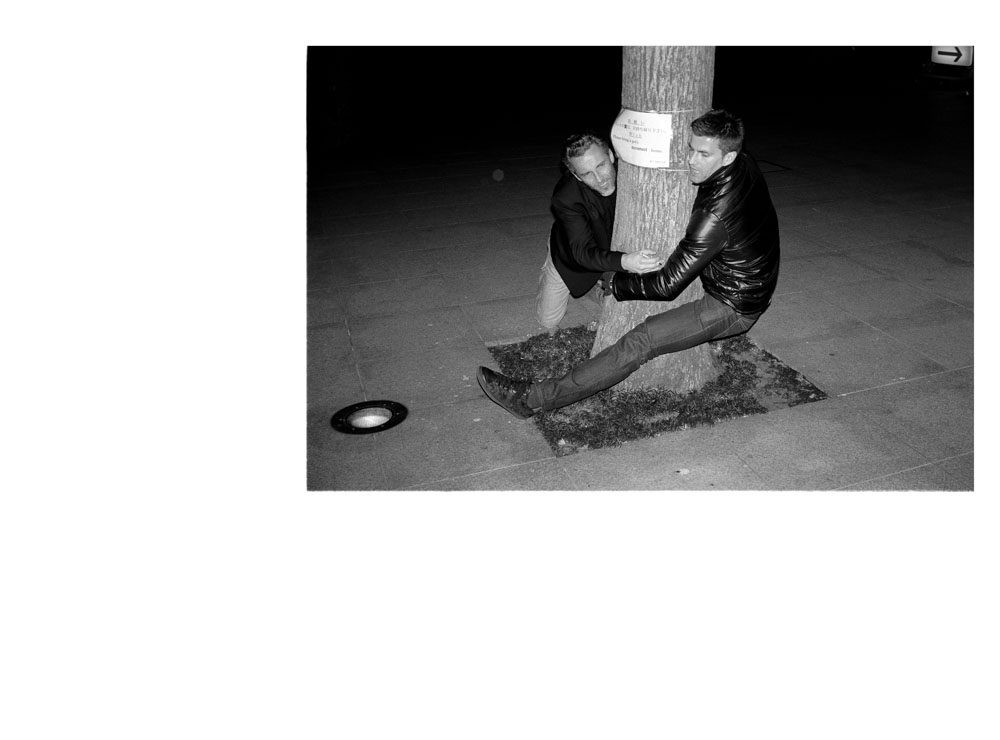
Tokyo, 2008
In Tokyo, in front of the AMPM, by the Saudi Embassy, late at night, after Salsa at Ma Chambre in the Izumi Garden Towers complex above Roppongi Itchome station, on the Namboku line, a Frenchman and an Austrian embrace a tree wrapped with laminated placards reading ‘please bring a pet’s excrement home’.
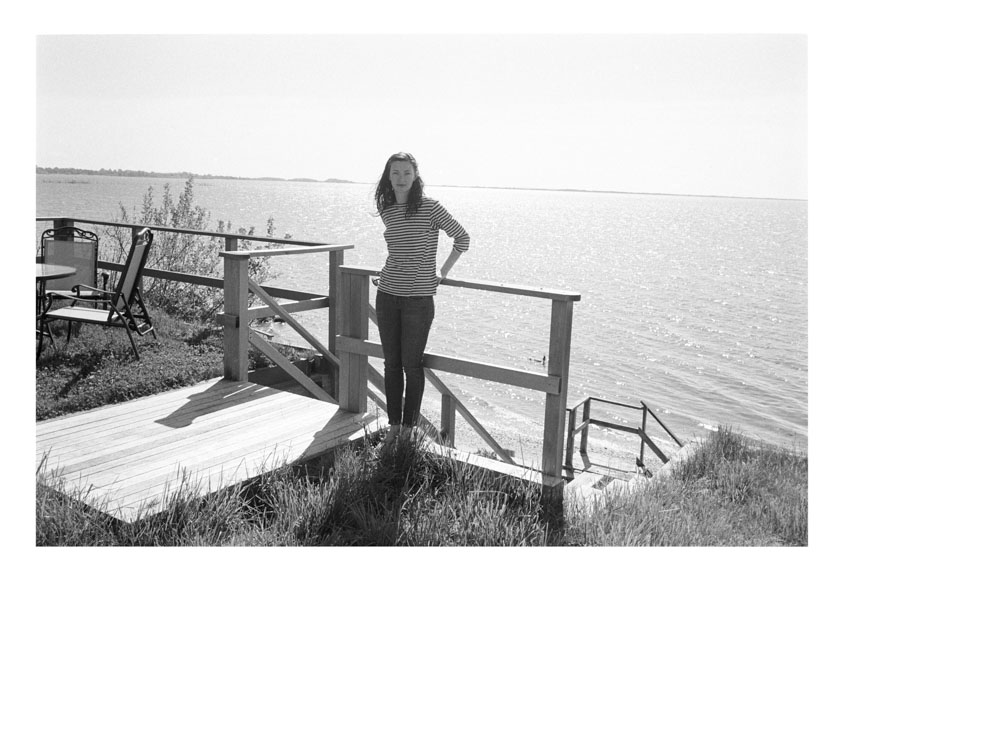
east marion, long island
Time itself as a wave, as horizontal force, it affects people aligned along a narrow plane, i.e. people the same age. When we start out we do not know where we are going, we don’t know the movements that our life will take (Petty says it, we start out down a dirty road). Religions all offer support-mechanisms for this uncertainty, but all advice faces forward. Problems arise when looking back, when you wake one morning into a life that is a perverse version of the future envisioned years before: neither a good nor a bad version, but different. The people you meet every day sometimes stick around, or return, and you build long-lasting friendships and affections that, in the prosaic way of the present, manifest themselves in simple ways: in memorial day weekends or early breakfasts. In yet another example of the disconnect between reality as lived by normal people and the fictionalized version put forward by our literature and entertainment, there is no way to know who you’ll keep in contact with. There is no lighting setup, no tell-tale dialogue, no cued music, no flash-forward or cut-away.
Movies and, by extension, photography, are condensers of time, they condense the long, unclear narrative of real life into something more tangible and easy to describe. Photography, as W Benjamin suggests (and as elsewhere-mentioned), enriches our field of perception (in his example, the quasi-freudian slip that would have past unnoticed nearly a century ago, is now easily captured in movies: captured and repeated and analyzed for substance, and then sequentially positioned amplify subtext).
Photography freezes the in-between, can explode the miniscule, can force relevance upon a moment captured merely for posterity. And so here we are. And who we are with.
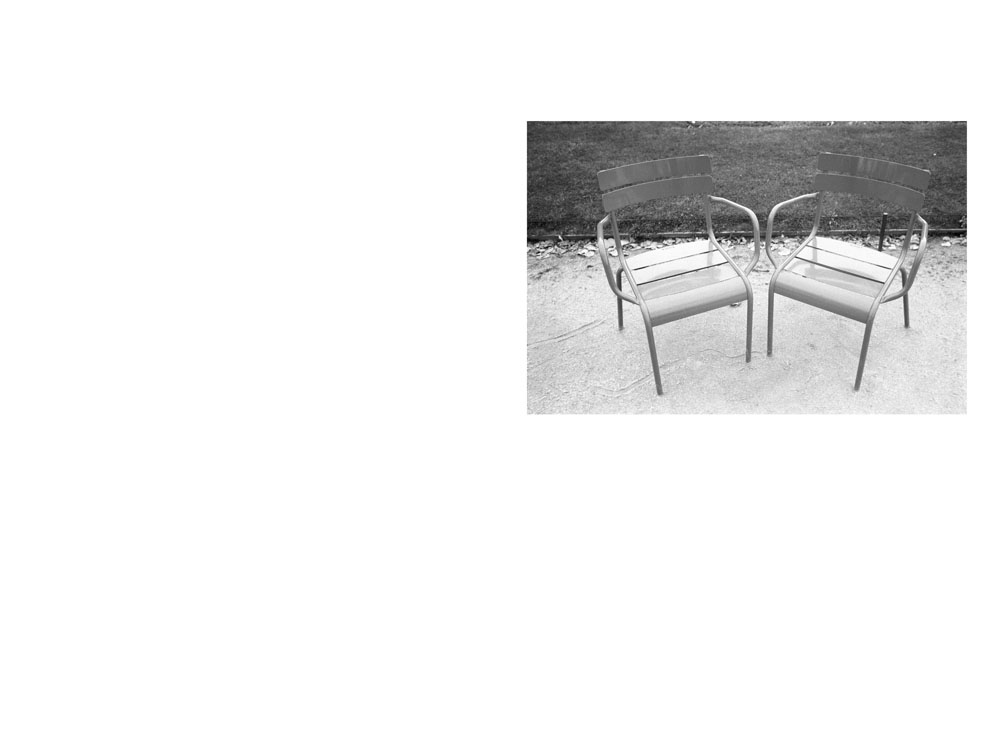
paris, france
The observation that men eat out alone more often than women: due, perhaps, to the terrible stigma attached to women who eat by themselves, and also to the perceived ‘danger’, none of these being good points (or even all that true).
The main point is that more men sit at the counter and order bulgogi, read a book or watch tv, and though the level of eccentricity moves along a sliding scale, they are all of a type, a type best defined as one tree in a row of trees, all in planters set in straight lines along the road up to a hacienda in Argentina. Natural, but not quite.
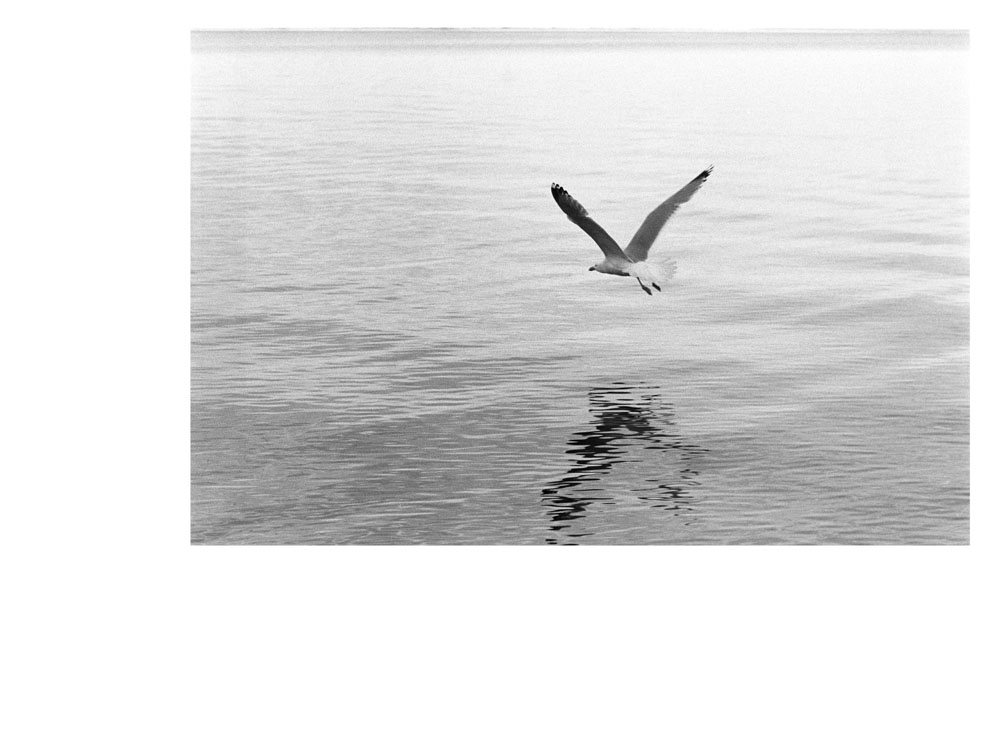
east marion, long island
In a diagnosis of Affluenza, as per Oliver James’s book of the same name, those afflicted do not want to go on holiday, as on a holiday (especially one devoid of the materialistic trappings of a the more modern ‘vacation experiences’) there is no control mechanism, no way of furthering onesself, no way of improving one’s lot. The point of a holiday is to quote unquote relax, and forget the stupid things that make up modern life. Many people believe that they are only themselves on holiday, and that what they do the rest of the year is inhuman and not quite natural. Others sit on the beach in converses, jeans and a black shirt, and stare at the water as if at an advertisement for vacations.
Photography is a wonderful hobby for the average workaholic. It is possible to work every single day: just bring your camera, make photographs with either the intention of documenting (of being a tourist in the many senses of the word), or of creating art, and suddenly making pictures is being productive. In her seminal photo-manifesto On Photography, Susan Sontag makes the point that photography as an activity carried out by tourists gained its first foot-hold in post-industrial societies like the US, China and Japan, where a burden was placed on near-protestant proofs of work: people traveled to take pictures of the places they traveled to. Once they had the picture, they could return, and not feel insecure for the validity of the trip.
We see now the evolution of this practice: it is impossible to go to landmark places and not see groups of people all taking pictures of the applicable landmark. The use of the pictures is irrelevant - the postcard exists, the perfect photograph exists somewhere, and someone is standing right beside you taking the exact same picture - but it is not the photograph that matters, it is the act of taking the photograph.
Sidenote: this ubiquity of photo-takers in these so-called hallowed environments has been much parodied by M. Parr, that chronicler of human absurdity whose nomination to the Magnum photo-agency was met with so much debate, and by Thomas Struth, who made large-format photographs of visitors to galleries looking around absently at everything but the work on the walls.
The jaded photographer who has knowledge of photography does not photograph well-photographed sites. Like Cartier-Bresson he has his camera wrapped in a silk handkerchief and thinks about painting.
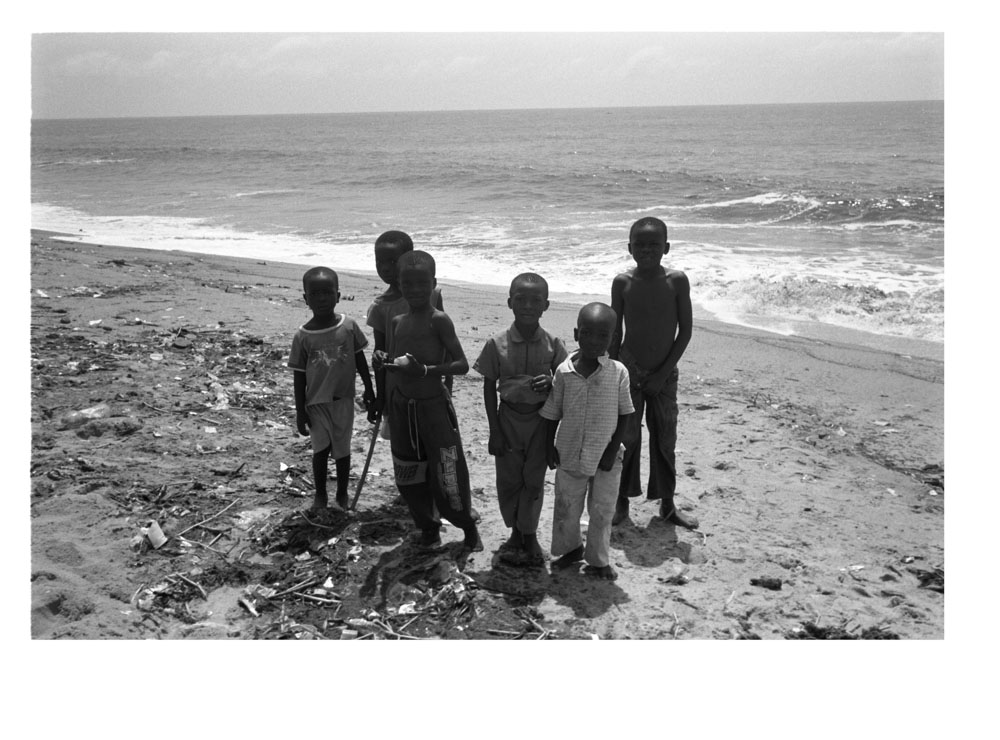
port bouet, abidjan, cote d'ivoire
An unbelievable gaffe made here, a misunderstanding about what these kids were saying: when asked why they were waiting here in a group, staring out to sea, their response, awkwardly translated, sounded like ‘to meet a boat bringing deliveries of fresh water’, which made sense given the bromide of 3-world thirst. Yet the reality was quite different: they were waiting for a boat to arrive carrying the body of a boy from the village, that morning drowned. (Before I had been made aware of my error, I still took pictures, and, oddly, they still turned to face the camera, and ran after us to jump in frame wherever I leveled the lens).
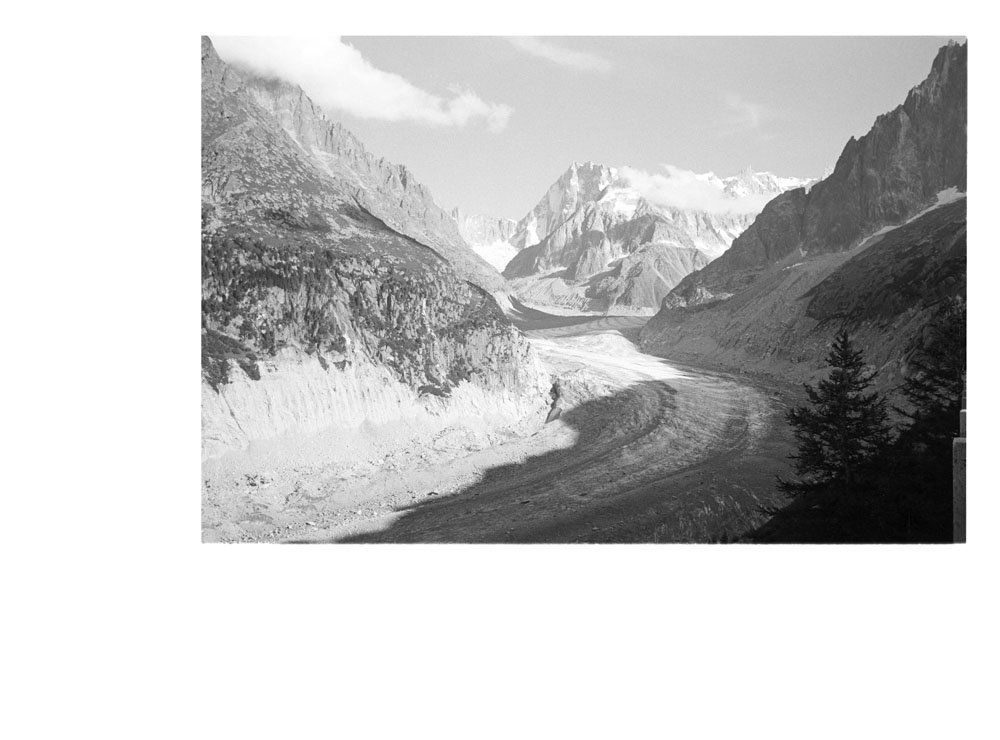
chamonix, switzerland
For all the talk of global warming and climate change and the cynicism of the attackers, the truth is that weather, independent of human interaction (though human interaction is massive and consequential), is in constant, slow flux, and there are such things as the little ice age that lasted from the 16th century to the mid 19th. Human memory, lasting no longer than 80 years, and even then in such small segments that someone can forget errors made in childhood and repeat them as an adult, well, it has caused us to think that our winters are suddenly colder. We have never had such a brutal winter, also: we have never had such a mild summer. These are things people say.
Conversely, there are places in this world where people go to see the physical proof that the world is starting to wear different clothes (ever-higher hemlines). The Bossons glacier in Chamonix has retreated 1200 meters in the last eighty years: standing on the observatory balcony you’re stuck with the thought that perhaps the observatory is in the wrong place. It was built in a different century. The glacier has moved on.
>>>> Something about the words ‘glacier retreat’, and the accompanying images, provokes a sense-memory of autumn, of what it feels like when it is autumn: that season when nature withdraws its offer, & there is only sad music, music for regrets you shouldn’t even have (the regret that the world recycles itself).
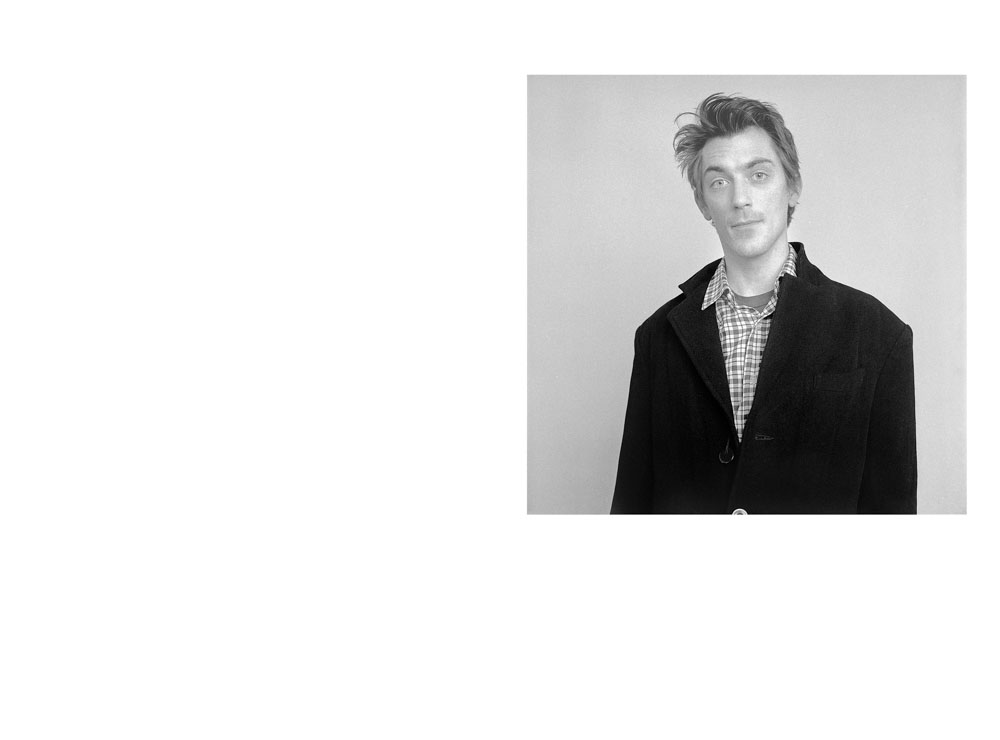
new york
There are corporate lawyers who have dinner with their wives, and with their friends and their wives too, at nice restaurants in downtown Manhattan, and in their heads (and perhaps vocally) they want to run a farm in North Carolina. They have the plans and have done research into the relative cost of purchasing the property and growing the crops, and they know which crops are best, and have a timeline on their potential future happiness. They have in their heads, perhaps without knowing it, the fact (alleged in the newer field of happiness studies) that Kalahari bushmen have higher levels of ‘recorded’ happiness than Wall Street businessmen. The bushmen say that they are ‘happier’ than they were a few months before, this being a signal of real happiness: the progression and evolution of joy, growing like flowers under sun.
The problem, however, is that this extra happiness does not come out of the practice of small-scale agriculture (or whatever you label business of bushmen), but because of their higher relative happiness. If one goes down to NoCal and puts up beets and wants to be happy, one may have to not watch television, they may have to subscribe to a different newspaper. One may perhaps need to shut off their connection to your past life, as culture is persuasive. Imagery bends reality to turn it into fiction, and then presents it to us again in the guise of a newer, more real ‘reality’ (reality without the boring part, without the waiting for the subway, without the untied shoelace, without the headphones caught on the handlebars, or, in this case, without the first winter of quite unpoetic loneliness or frost-bitten isolation). The audience, now adjusting their experience of the narrower and more isolated world of their hometown or neighborhood to the larger and more ‘dramatic’ one portrayed on television, consume it as if it is real. As if it is reality (we see new depression).
Of course this feedback loop is perpetuated and maintained by the television itself, which (in the age-old criticism) pulled people in from the streets - destroying neighborhood society - and allowed them to easily experience all the good things of the world from the comfort of a well-upholstered chair (cat on lap).
The law of relatively defines time because depending on where you (the observer) are, things appear differently (simple perspective). Ignoring the principle of time as a bendable thing, we look at general relativity in simple terms: from Manhattan Brooklyn seems very far away, and from Brooklyn Manhattan seems kind of irrelevant.
From Cote D’Ivoire, however, America seems almost an abstraction, and to the average man on the street (if indeed any individual can be called an ‘average’ Ivoirian) it is a land of possibility and daily comfort, where demigods (Obama) control the movement of tanks in the desert, and shift billions of dollars with only a written note. Some of these people want only to go to America, to work somewhere small, and to prosper in a way that would guarantee an increase in happiness relative to their current happiness in C.d’I. The visitor from the prosperous West sees this as naive, but the visitor also feel a strange sadness: this comes from knowing the width of the gulf between their relative happinesses; the familiar, biblical truth that you should be happy with what you have. Yet few really are, and those who are, suffer the criticism of lacking ambition.
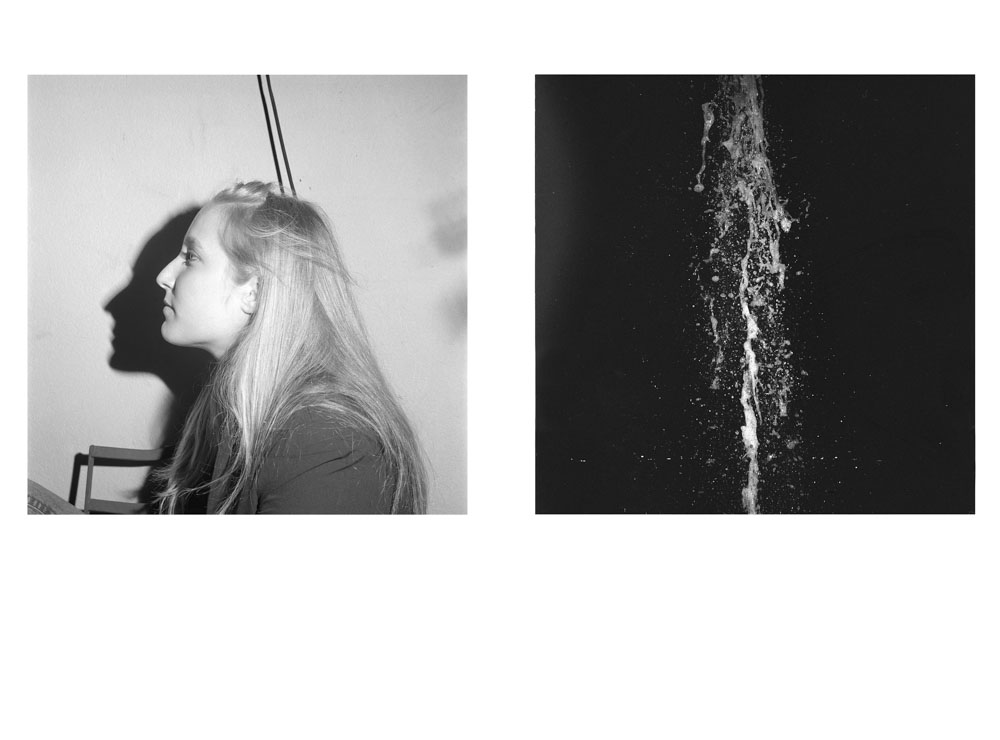
milan, italy
Caroline on a terrace after badly-made ravioli and Peroni drunk out of large bottles. The first thing noticed when looking at graphs of global population is the shape, it’s all on the right hand side, there’s nothing for millenia, then a sudden explosion of people that started two thousand years ago, the miniscule slop upward and then the vertical wall, and now we’ve been doubling every 40 years or so (due primarily to improvements in medicine and lowering mortality rates).
The ‘Day of 3 Billion’ was in 1959, the ‘Day of 6 Billion’ was celebrated in 1999. The ‘Day of 7 Billion’ for 2012.
In the passenger seat of a car driven through Palm Springs (going from the Neutra house back to the Palker hotel), a member of the production crew starts talking about the greatest threat to humanity, over-population, and he expressed the wish that there would be an unstoppable epidemic that would wipe out large (& of course curated) swathes of the world population, after which we (presumably) would get on our trains and they would be less crowded, and go to our coffee shops and never wait in line, and not suffer the irritations of people talking over the quiet bits in movies, or of losing your table at Babbo because you’re ten minutes late and stockbrokers (anathema!) wait hendricks-in-hand.
Later, climbing a hill to overlook Palm Springs, standing alone after a ten-minute climb through the yucca, then turning back to the flat dust of Indio to the east, the shallow mountain ridge in front, & windfarms turning by Whitewater, a pause - clouds gathering in the distance, and then a great cry leapt out from somewhere below, from one of the squat houses between golf courses, a deep yell as of pure frustration > not rage but pure frustration > somebody screaming to themselves (you can hear the difference between solo-screams and screams directed at other people, the solo-screams do not stop), starting low, a throttling motor, a growl rising in pitch & volume, then building speed and holding a high & truly loud note, the face of the screamer transmitted through sound itself, but unseen. Then... after, no echo, just silence, a car switches on its headlights and turns a corner (storm clouds moving closer).
From one of J. Cheever’s 28 loose-leaf journals: ‘...a moral beauty/there is the moral beauty of light, velocity and environment’, a good quote to keep as constant-companion (on a bike traveling up the west-side highway in late fall, hands off the handlebars and sitting back; milan on september nights, all the shopshutters down, walking past the fountain).
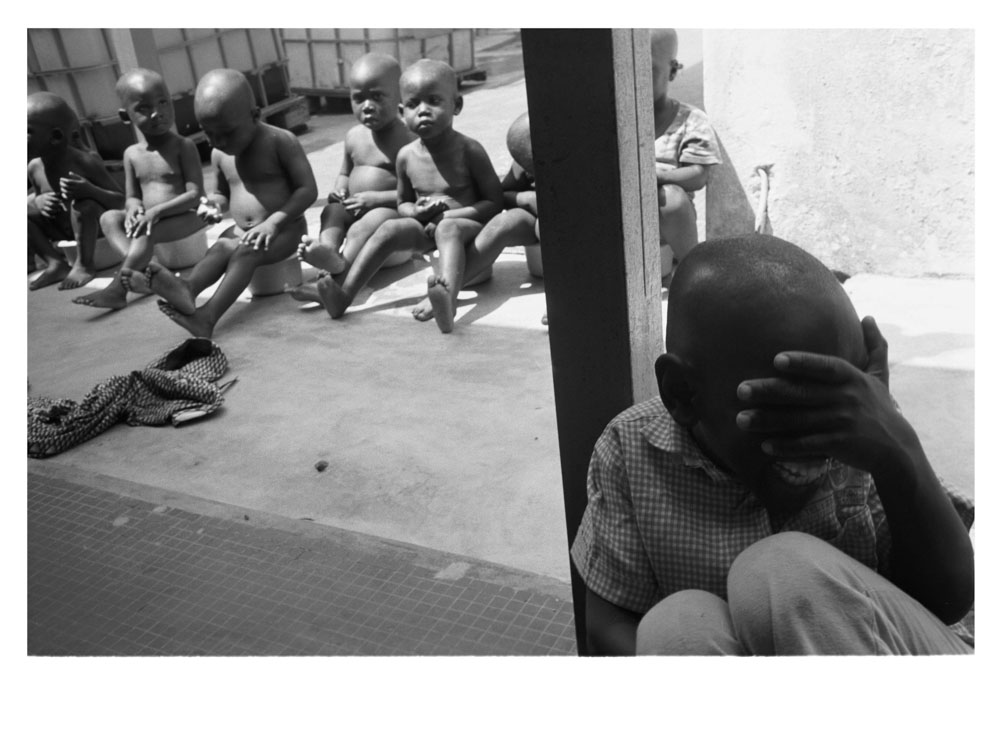
williamsville, cote d'ivoire
The theory held by some: that everyone is similar and that there is a common culture with shared signs and the possibility of mass mutual understanding. Thus the implication that all current strife is just the awkwardness at the beginning of the dinner party, when people just met are being introduced to each other and they have not yet bonded over their shared love of Fleetwood Mac’s Tusk, nor has drinking warmed diplomacy.
At nuit de saigon with ivoirian teenagers they asked what we were doing that night. Our response ‘the same thing we do every night’, which they completed with the requisite ‘try to take over the world!’
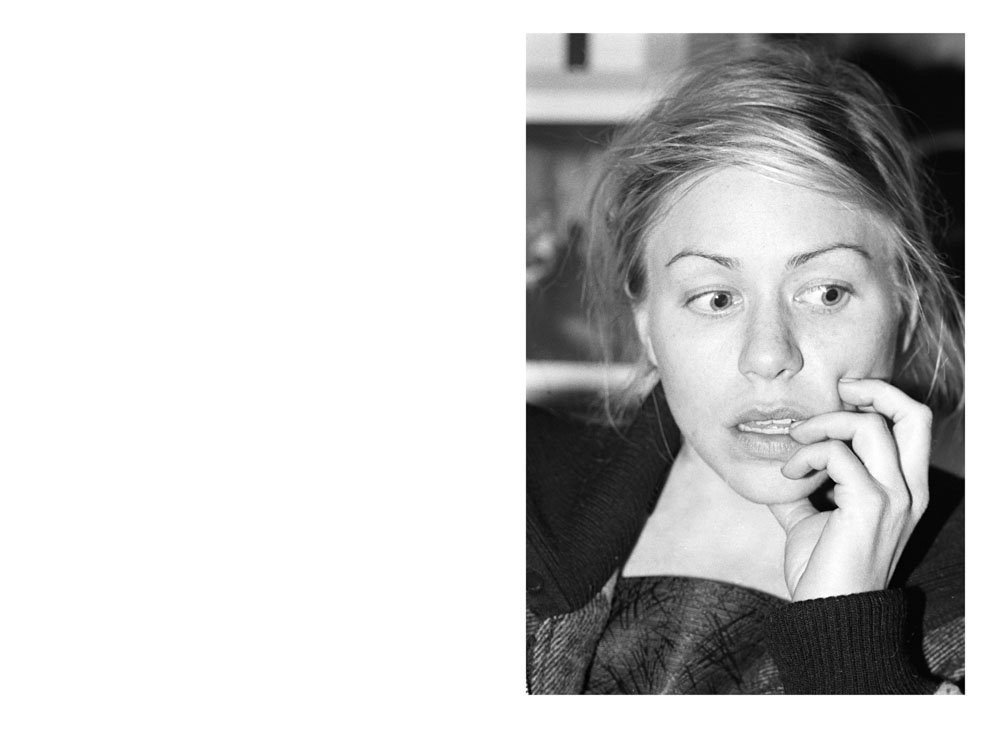
new york
Alcohol being the solution to, and cause of all life’s problems, and it works to fuller effect with age (in both ways). Alcohol, though a depressant, on occasion acts (quote anti-physically) as a stimulant, and the ideas at this stage seem better and more full, and closer to purity. Yet in the light of day (in the dawn of morning), the sentences written are complete garbage, ordinary & trite and often full of themselves, like Updike. Photography, however, benefits in strange ways from the sloppiness of drunkenness, and, provided the photographer works with cameras enough to perform the mechanical adjustments of typical photography without awareness (by instinct), then there can be some good results. One thinks B Gilden is always drunk (though, realistically, he might just be ‘from New York’). >>> contax g2 a good camera for the bar, auto focus, all settings adjustable with right hand. The tla 200 flash, set to 90mm with a 45mm lens, a delicate cone of light, some vignetting... emulating in a way the tunnel-vision of a bar after 3.
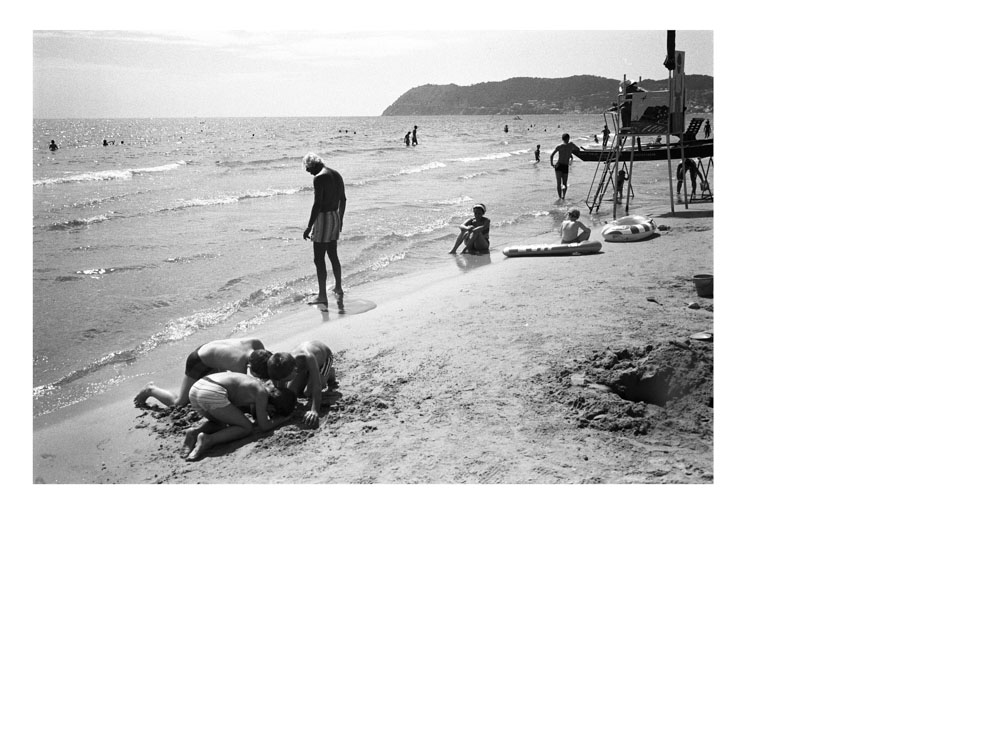
monti e mare campeggio, alassio
Summer, an imaginary season that exists as perfection in the hope for its arrival, or as memory at the onset of winter. The present an elsewhere-mentioned breath between past and future (breath shortening every year), summer never again achieving the symbolic heights it achieved in our adolescence: when it was freedom from real life, a return to savagery, the only season when the world did not seem as if it was trying to kill us. Summer: conditions ripe for natural living, the shackles are off, and paths lead through the heather over the hill and into nothing much >>>> all talk of summer impossible without regressing to the poetry of socially-slighted sixteen year-olds, heads full of Larkin at his most banal, but oh, don’t we all wish for ‘white lilac bowed, lost lanes of queen’s anne lace, high-builded cloud moving at summer’s pace’, clouds like these in moonlight and in memory piling over the ridge between pond and ocean, a balm for chilblained palms that do now shake many hands. Cricket fields in June off Lonsdale Road emerging from a photograph of a place you’d never have thought you’d visit, not because of geographic distance, but because of simple banality.
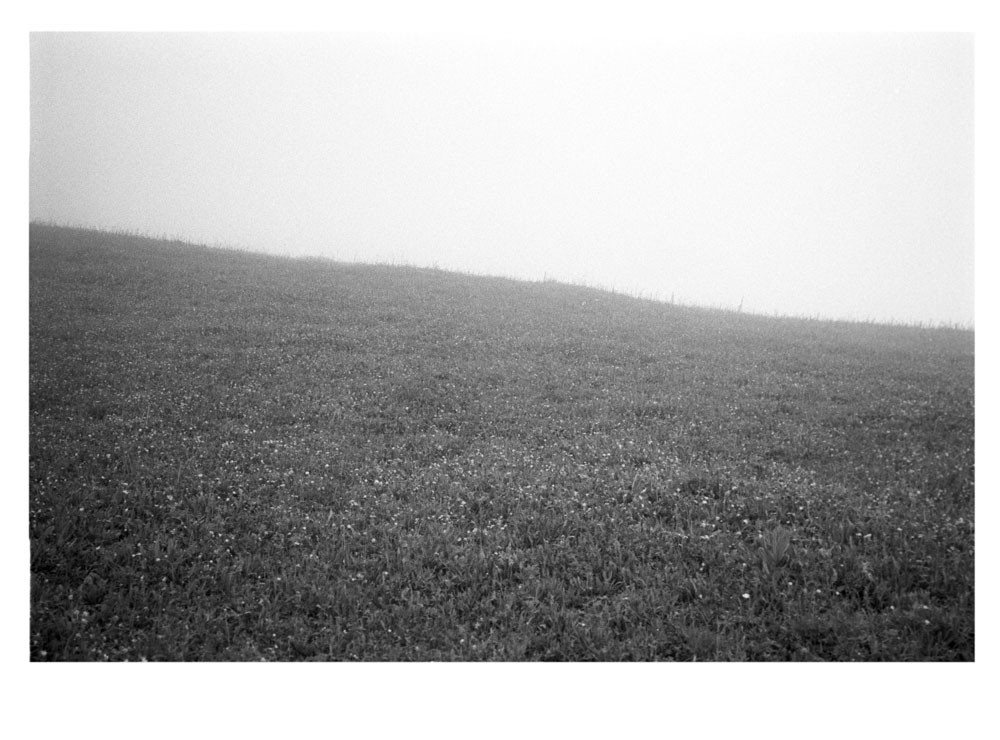
verbier, switzerland
What memory recalls from the past varies dependent on the dominant mood and flux. Geniuses benefit from the selectivity of recall, and, with hindsight, convenient narratives form to explain character. An early obsession with play-do evolves a Rodin, whether or not the play-do was sculpted or eaten. Character is destiny, as suggested two point five millennia ago, though later the coiner modulated this aphorism with another (less famous) quote: nature is wont to hide herself. Thus, we read: secret characters have more effect than surface characters. An exhortation to follow unclear personal compulsions, as in compulsion lies the truestforce of character.
Do not obsess over f-stop and shutter speed, do not wait for perfect focus (provided you are above f4), do not rely on equipment/lenses/batterypacks, do not follow other’s example, wear good shoes, bring a tripod, shoot what you have, learn a medium, be honest to your subject, and, as the Sayles say, understand the connection between truth and fiction, and remain faithful to both. Buy a good shoulder-strap, use natural light, fill with strobe, and, above all, love your subject.
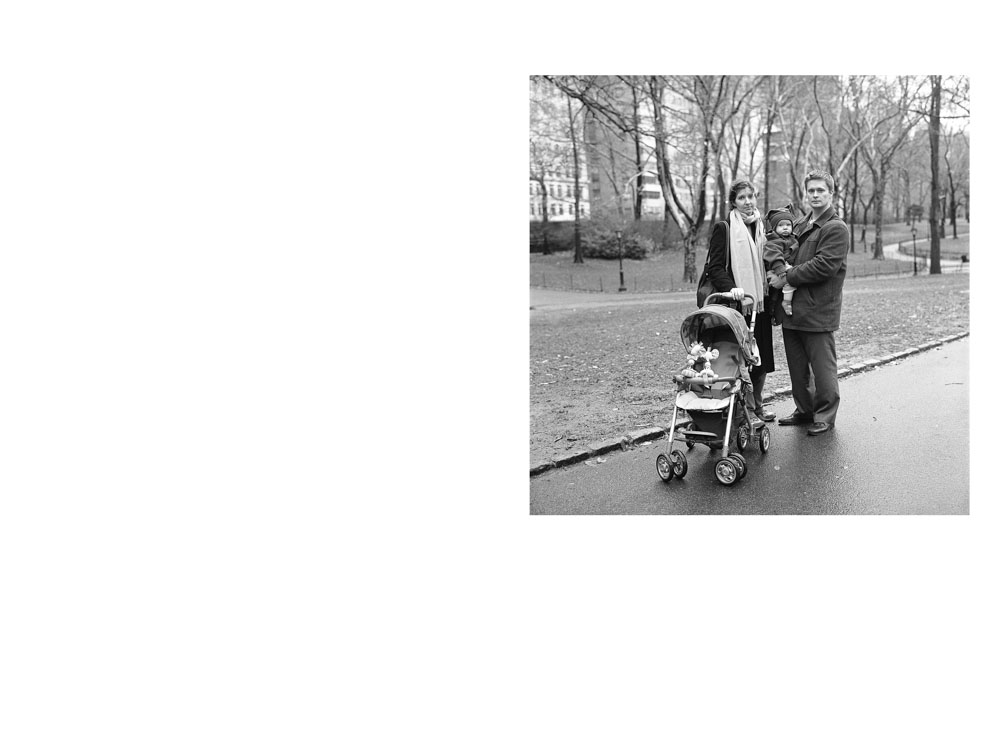
new york
The fear of kids (the fear that you will not know what to do with them, that you will pick them up without care, like a gym-bag or laundry-bag) giving way to instinct (this is an age thing): paternalism kicking in at the same time as old-age, they say (this is right around 27, when you have just peaked, and when your genes perceive your waning potential and want out).
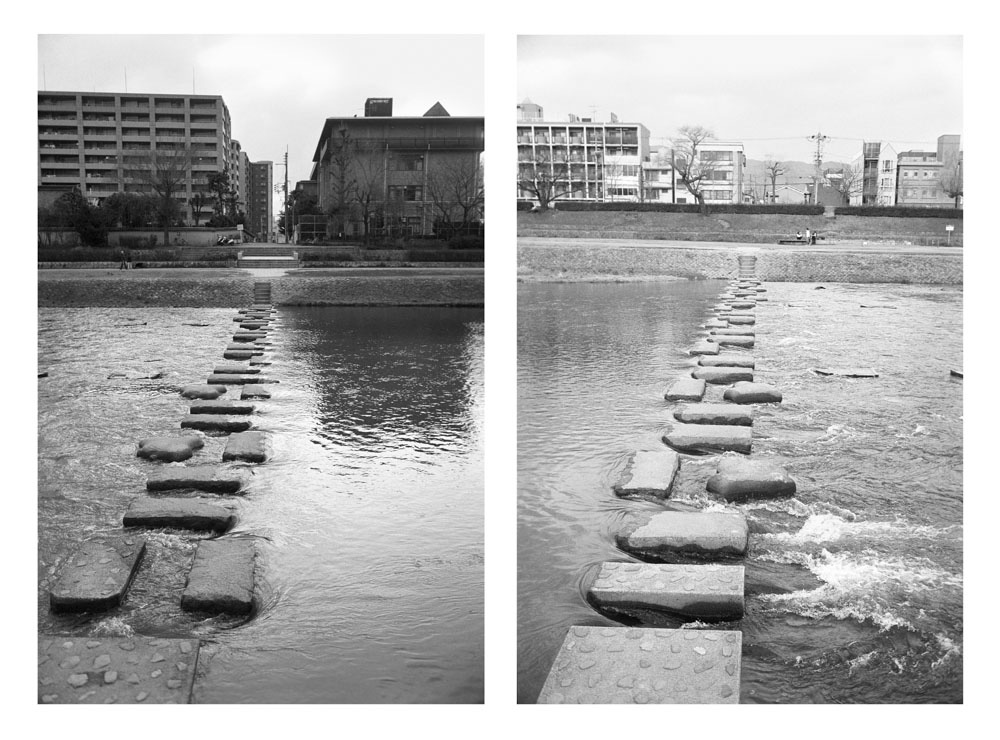
river crossing, kyoto, japan
The recurrent compromise in Japanese society - to abide by nature and technology. Along the canal from one of the bridges linking the Pontocho section of the more modern part of Kyoto with the older, more classic and vintage neighborhood of the path of enlightenment, there is a river-crossing: low rocks set in water. You hop from stone to stone, water rushing at your ankles, equipment held babe to breast.
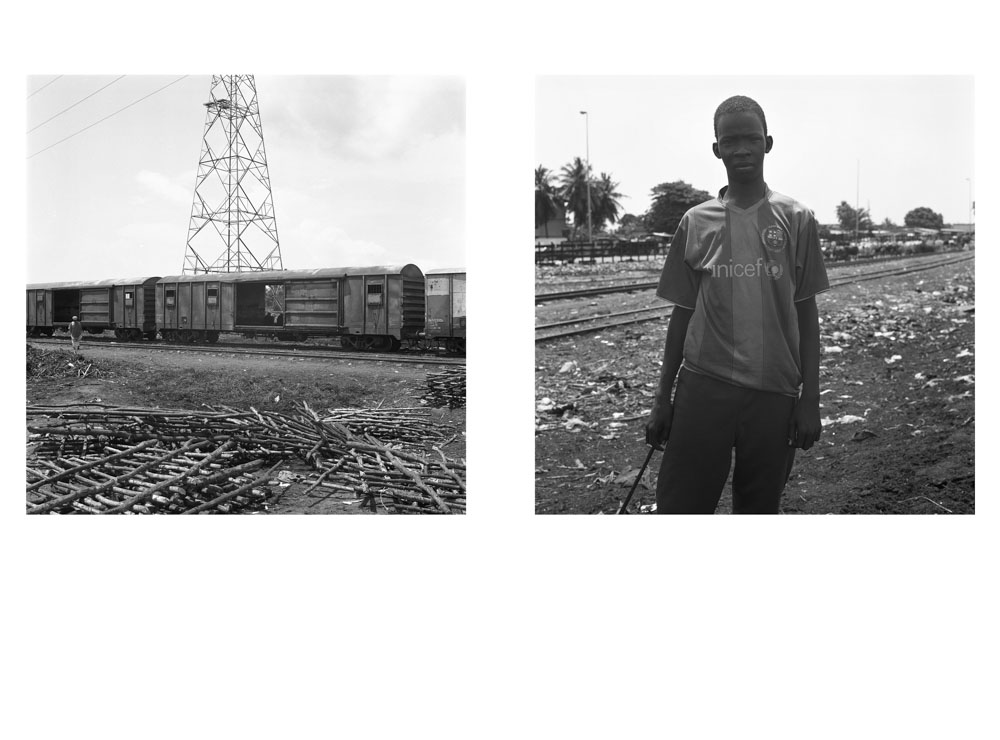
port bouet, abidjan
The friendliness of people when they think you’re somebody else: wandering the cattle yard in the quiet of the afternoon (the morning being all trade & slaughter). A crowd gathering but a small crowd, some workers just passing by waving hello, others wading forward to introduce themselves, the self-labeled operator of the yard leading us across a field pitted by hooves.
///
W Evans’ theme of ‘lyrical documentary’, as used in a 1964 lecture at Yale university to define the odd and unintentional beauty that arises when a photographer or artist or writer is absorbed in the exploring a subject: ‘leonardo for me is the father of what I call the lyric documentary, that line and that mental approach, that scientific curiosity and that cleanliness, and that detachment of his seemed to be documentary. And, of course, his line is lyric’. The lecture given alongside a display of Evans’ collection of picture postcards, to support in some way the accidental & truthful beauty of the mundane postcard views of train crossings and town squares.
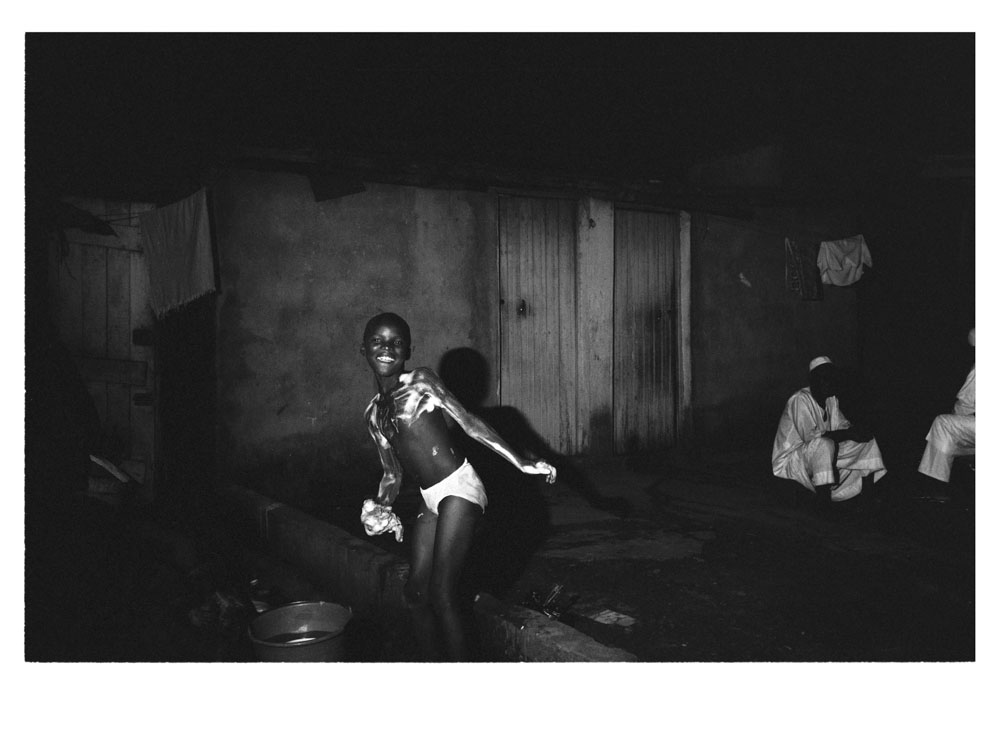
williamsville, abidjan
Recent reports suggest a growing Al-Qaeda-sympathetic culture in the sub-saharan territories, particularly in the abandoned wastelands of Mauritania, and in Northern Mali (the deserts), perhaps influenced by the northern african al-qaeda splinter Al-Qaeda in the Maghreb, operating from Algeria, crossing south across the desert, but aiming for global ‘membership’. West African Islam classified in most cases, however (and informally), as ‘muslim-light’: the ‘administrative’ religion (by numbers) of c d’i being christianity, in line with post-colonialism, forming nearly 1/3 of the self-confessed religious population (and defining most of the ‘official’ holidays). Local religion revolving around a deity known as Nyame, recognized by the Akan ethnic sub-group. Sunni Muslims thus account for most Muslims in c d’i, following the maliki school as per the north/western african standard, make up roughly 40% of Ivoirians. D with head to mecca praying in the ante-room of Mon Afrik, mumbling the words, and afterwards having a beer and a cigarette in a freshly-pressed soccer jersey
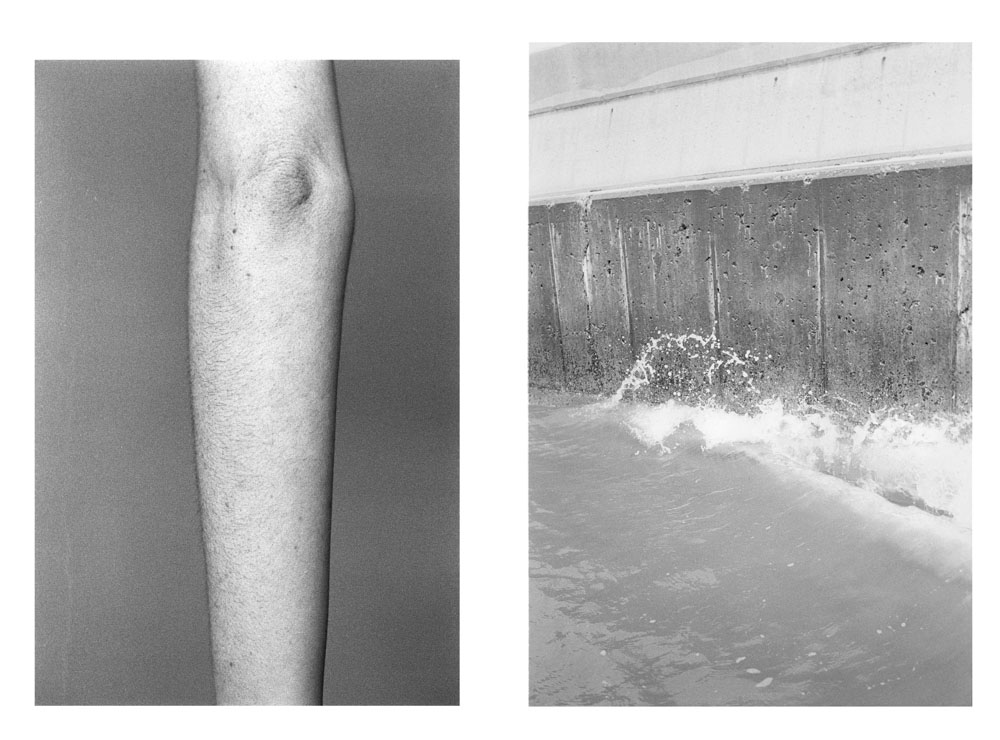
new york, ny & madison, connecticut
Something said in W Percy’s The Moviegoer, a book that for some reason has started to appear everywhere, on front displays at B&N, on tables at restaurants, in the back pocket of a man moving through an airport: ‘the happiest men are wounded men’, said with reference to soldiers in wartime, and spoken by the unstable female love-object, who is, in her feminine way, wounded (and yet not so unhappy).
H, a man whom a Dutch financier dismisses as a ‘buffoon’, has his own argument: ‘the world breaks everyone and afterward many are stronger at the broken places.’
Away from the shore and swimming, the water not something that exists below, it is at eye-level, and with the waves billowing and falling, often higher. The wave obscures views of dry land, of the roofs of houses merely thirty feet away, and that is when the panic, if it does begin, begins (the wave of time never below but only lapping at our eyeballs, on those days when someone says you look old, and then as an afterthought, says ‘oh, I meant older’, oh am I leaning from a windowsill with sleeves rolled, smoking, (no claw scurrying cross seabed silent).
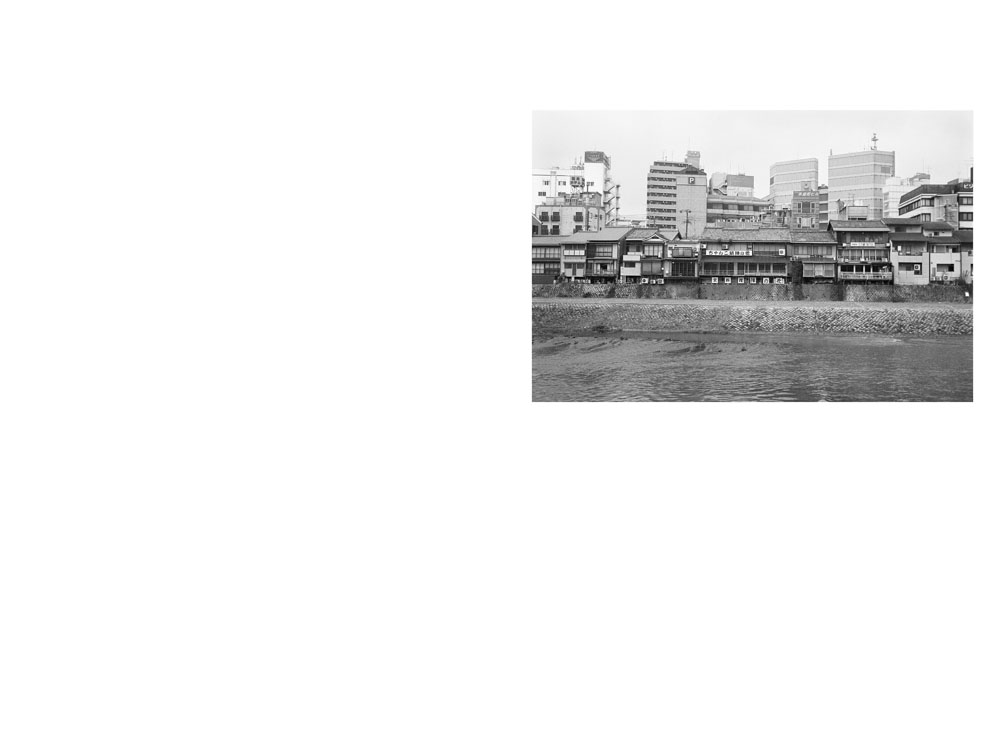
kyoto, japan
Time speeds up and all sorts of previously meaningless activities rise up to take all your time. Laundry, grocery store, a red light when you want a green light, boxes when you’re throwing them out disintegrate along the hallway, so you have to make two trips: precious seconds are shaved off your day.
Airplanes and passports and hotel-booking websites have made travel so easy that, given enough money and a wide-open schedule, it is possible to visit every place on the planet: to see everything and eat every type of thing and shake hands with every kind of person, especially as an increased number of said ‘things’ are disseminated and made similar, and one visit to Calexico is a visit to a hundred other towns in the US (if you want to be so cynical). There is a difference between visiting a place, however, and knowing a place, just as an open-mouth kiss is not necessarily a mark of understanding.
Similarly, there is a grim, grim calculation that shows how finite is a human life.
If you read one book (a book-book, over 150 pages) a week, you are reading quite a bit above average, according to global statistics. Now if you read that many for one whole year, you will have read 52-and-a-bit books. Now let’s say you read a couple Alchemists for every other Underworld, and you’re averaging 60. Do that every year of a long life, from a precocious reading age of 10 to a generous 86, and that’s still only 4560 books. That is only the small corner of an average-sized city library (assuming, like the Chelsea Town Hall library, there are several floors for one hundred and twenty bookshelves, each holding five shelves, each shelf holding 30 books, for a total of 18,000 books).
Your mind is what you feed it. When it comes down to it, 4560 books isn’t exactly the entire canon of Global Literature and Thought, so there is going to be a bit of selectivity. That selectivity, i.e. what you choose to consume, will create a certain type of mind: thus, the devolution of Man following the mass-proliferation of The Fountainhead.
Be careful what life-library you build up. (Make room for Tintin).
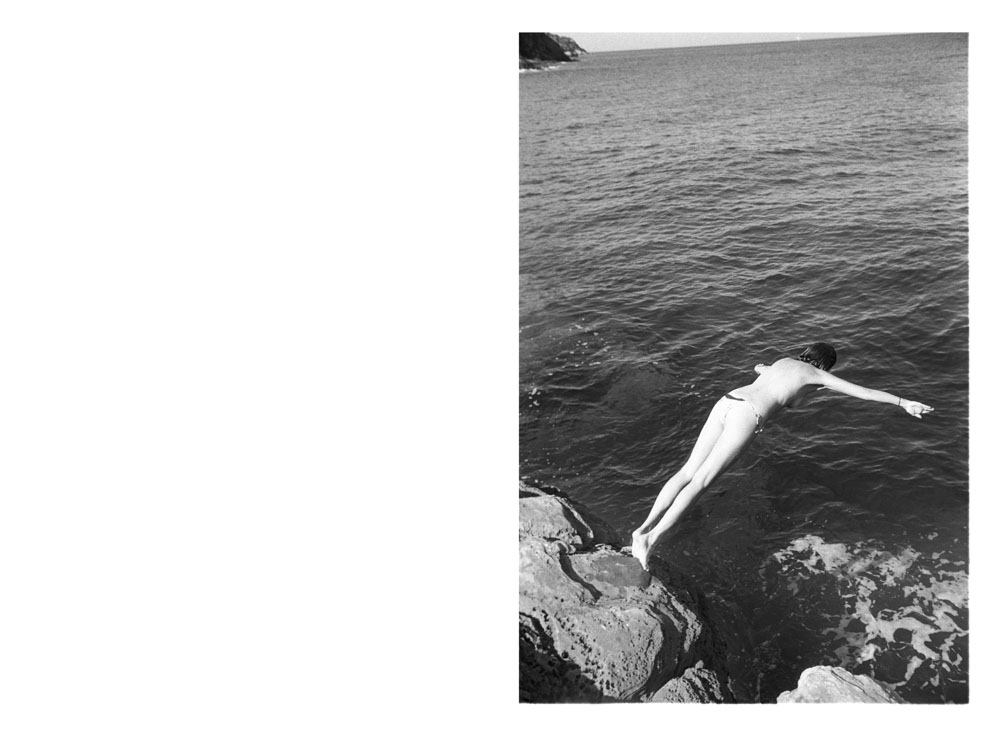
d80 b/w erbalunga and marina de sisco
We saw cars by the side of an otherwise-empty road, and decided to investigate: a path down to the headland, and, scattering off at the peak, barely-seen trails down to the water. At the end, french boys jumping from the cliff, twenty-five feet into the water, fish bones drying in the sun on a ledge, and the recurrent wasps (standing on the cliff-edge, one foot forward). Waiting for a jellyfish to move out of the way, then, with breath held before jumping, a jump.
The truth that there are some things that come about through sheer attitude and not exactly through skill. Skill being independent of attitude: it is possible to be incredibly good at something and yet be such an asshole (or south williamsburg recluse) that you’re somebody nobody wants to work with. The work itself is a fine thing to perfect, but if you in making product you have an aura of entitlement or arrogance, it will detract from the perceived ‘perfection’ of the work you strived so hard for. Do not hate on other photographers, do not hate on the ‘stuckness’ of the medium. Hating your peers or hating your insubordinates, something done by amateurs (something done by people who, having no confidence, belittle the small or great successes of others). Conversely, there are photographers who everybody knows are not really introverted artists who want to redefine beauty in every image, and whose work sometimes seem a little too simple, but who travel in an aura so thick with ‘good-vibes’ (whether authentic or posed), and who set everyone at ease with disarming charm (a charm made up of both confidence and self-deprecation), and whose photographs are imbued not with the brilliance of the image as per Titian or Gursky, but with the reminder of the celebration.
So. Be presidential. Smile, wave, shake hands, kiss babies.
Sidenote: the most charming photographer in the world, also travels in a cloud of remarkably idiosyncratic cologne: it is neither grapefruit nor cedar or lemon, but somewhere in between, terribly attractive to both men & women (an impression he also likes to cultivate), and it is perhaps created for him alone. The thickness of the scent fills every room he moves into, the studio, hotel room, towncar, private jet: it lies in his chair at the dining table when he’s stepped away to greet someone, if you read a newspaper that he has just discarded, you catch a whiff with every page turn. It is so pervasive and so much a part of him (of being around him), that you can only call it one thing, and that is: branding. His perfume is branding. Carried in such volume, the perfume works for him without his doing anything (it sits in your clothes and when you get home and take off your sweater, he’s there again... oh how he must cherish that).